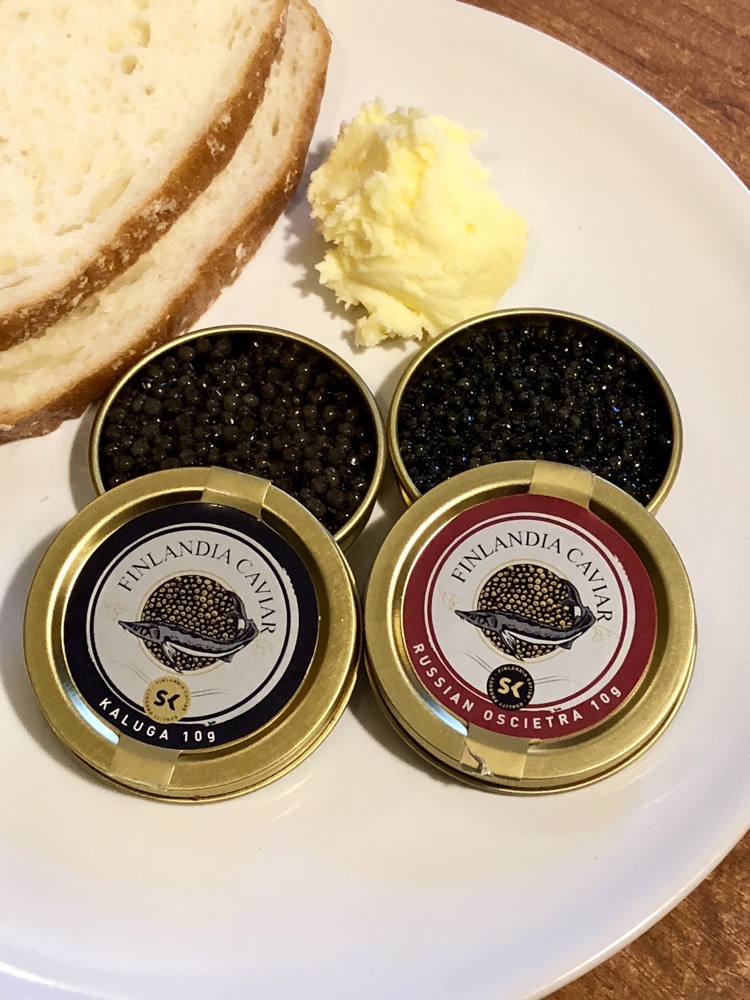We chose to go to Luxembourg today via Metz. Two reasons really, 1) I wanted to see the Metz Cathedral which is supposed to be quite something and 2), Angus has never been to France, so he wanted to stick his toes onto the other side of the border.

Metz Cathedral is the main seat of the bishopric of Metz, Catholic, and is dedicated to Saint Stephen. The Catholic Church in this area dates back to the 4thC, but the current cathedral was *only* built in the early 14thC – *only*? Like that is a short time ago! Hello?! Australians here, buildings, architecture and artworks are never more than 200 years old where we come from! Six hundred year old cathedrals aren’t *only* anything, in our minds.

It has a gorgeous stone facade.


The Portal of Christ entrance, which was the main entrance to the Cathedral until the 18thC. This was originally a Gothic designed entrance, but over time it languished unmaintained, until the 1700s when it was completely redesigned and rebuilt in a later style.

Metz Cathedral has a distinctive yellow coloured stone, that is mined locally. It is called Jaumont stone and is rich in iron oxide, which gives the stone a glorious golden hue. It is said that even in foul weather, the Cathedral photographs well due to the warm yellow limestone used in its construction.


The Portal of the Virgin is an entrance facing the Place d’Artmes and was used as the main entrance of the cathedral until the 18thC. It was built in 1225, and had become quite dilapidated and covered over (presumably by vegetation… the brochure didn’t make it very clear what had covered it over?). The sculptures were created by Augusta Dujardin and were restored in 1885; apparently recent research has found pigments in trace amounts that show the sculptures were painted in red and green, orange and blue hues. It sounds like it was extremely colourful and would probably have been really garish to our modern sensibilities.

Just above head height are these delightful details in the stone work… love them! The pelican looks more like an eagle, but c’est la vie. 



The Nave of Metz Cathedral one of the tallest in France (3rd tallest or something), and it is all done in a fabulous Gothic style – finished between 1486 and 1520. The cathedral has long been nicknamed “The Good Lord’s Lantern”, (La Lanterne du Bon Dieu) due to it’s simply enormous square footage of stained glass which comes in at a whopping 69,920square feet of glass! Or 6,498sqm for those not using ‘Murican Freedom units.

It’s hard to make it out – but the entire walls leading up to this stunning vaulted ceiling appear about 50% stained glass.

The bulk of the glass is done in Gothic and Renaissance styles by master glass makers Hermann von Munster, Valentin Bousch and Theobald of Lixheim… or no doubt, designed by them dudes and actually executed by a bunch of their forever nameless apprentices.

A Roman 3rdC bath holds pride of place just inside the main doors and it is primarily used for baptisms.



So much glass!

The walls of the church are lined with these discreet, heavily carved timber confessionals.

In keeping with the Good Lord’s Lantern theme of the church – there is also more modern artistic glass work here done by Charles Laurent Marechal (Romantics period), Roger Bissier (a Tashist), Jacques Villon (Cubist… yuk!) and Marc Chagall and Kimsooja. It’s truly spectacular how they’ve tied in all this beautiful old work with these creations with modern artist.


It’s weird to see such modern decorative art techniques side by side with obviously medieval design elements, but the overall atmosphere of the cathedral is really stunning. The construction itself was a huge and very long undertaking…



Sadly, the famous Metz covered markets were closed today. Mondays in Europe, suck.

After the Cathedral, we wanted to see some of La Cour D’Or Museum, which is supposed to house some of Metz’s most interesting local Merovingian artefacts. We ran into some immediate hiccoughs; the museum is created in an old monastery and the curators/designers decided that the medieval collections belonged in the medieval cellars under the buildings (at least four floors down and back up again – not in the least bit accessible and my bung knee hated so many flights of stairs). And we also had a lot of info lost-in-translation… mainly because there were none. Translations that is. I’ve tried to record what I could, but a lot of this is just going to remain vague.

The Gallo-Roman galleries were particularly poorly labelled, nothing that wasn’t in French and many objects with no placard at all! From what I could read these objects ranged from 1stC BC to 3rdC AD… which looks about right to my exisiting knowledge base.

House gravestones, all found locally from Roman periods.

House Gravestone, limestone, c.3rdC BCE, local origin.

No idea, not a sign, plaque or info sheet in this room.

From what I could gather this room was curated to centre on representations of various Roman gods, but given the eroded state of the pieces, it was difficult to make out which gods were being depicted.


Altar to Mogontia, Gallic goddess and healer of springs, limestone 1st-3rdC AD.
Mithra’s Relief, Gallo-Roman period, limestone.
The large Mithraism relief was designed as an architectural decoration in which the framing of small layered scenes plays a key role around the central scene. Gods and a sacrifice scene in the centre.


Below: Metalworking has existed in Lorraine (the region Metz is located in), since the Iron Age. While the Gauls worshipped Belisama, the goddess of metal craftsmanship, in Rome, the cult of Vulcan, god of fire and patron of blacksmiths, was growing in this area. Some metal deposits were found in the Vosges, north of Lorraine and the southern Sarre region. Minerals were extracted and processed in workshops from ingots. There were around a a dozen of these workshops in Gallo-Roman times in the Mediomatrici region.


Remains



Merovingian beads, most of the of indeterminate provenance. 




Round Cloisonnee fibula. 6thC, silver and garnet. Houdreville.

Merovingian Belt buckle.


Merovingian belt buckles.




Bucket, Merovingian style. Modern reproduction.

Merovingian beads.




Reliquary box, lid lost. 10th-11thC, cetacean bone.



Saint-Arnoul Elk Horn, c.1000AD (possibly older).

Reputed to have come from the ancient Saint-Arnoul Abbey in Metz, (subsequently owned by a Metz collector, a Parisian antique dealer, a Russian Prince, Tsar Alexander III, then a Dutch Banker), the elk is carved with a frieze incorporating lions, snakes, dragons and hybrid vcreatures in intricate scrollwork. According to Metz historians, the elk horn was believed to have been suspended from the vault of the funeral chapel of Emperor Louis the Pious (814-840), and believed to have been a symbol of power for the son and successor of Charlemagne.


The museum is built into a sprawling old monastery, it is enormous to get around.


Relief map of the city of Metz, c.1829-1850.

Underground cellar space housing GalleoRoman sculpture, sarcophagi and carvings.



After our wander through the museum, we had to find some lunch – at a French cafe of course.



Angus choosing a Poulet Cordon Bleu, and I went for the Steak Tartare! And of course, when in France, champagne with lunch.

The Cathedral dominates the town here, every direction you turn, you get another amazing view of it’s beautiful yellow limestone facades.


Stopped for a baguette (so Angus could make himself a proper jambon beurre later) and saw these cute chocolates – didn’t buy any, because chocolate, but thought they were cute.


Fort de Queuleu

Memorial to the Resistance and Deportation, inaugurated on 20 November 1977, when the fort became the property of the city of Metz.

Fort de Queuleu was built in 1868 when Lorraine was still under French rule, as part of a fortification system southeast of Metz. While construction was interrupted during the Franco-Prussian War (1870-71), it was continued and improved by the German Empire between 1872-1875 after they conquered the area and renamed it, Fort Goeben. It was then part of the first line of ring defence in the fortifications of Metz. It wasn’t operational during WWI as it had no strategic purpose and saw no military action at that time, but it was repurposed as a detention centre during WWII to house, detain and interrogate members of the French Resistance.

When the local Moselle valley was under German control during WWII the fort was being used by German occupiers as an internment camp (S Slonderlager) to house members of the French Resistance. The fort was called the “Hell of Queuleu” and while it wasn’t a concentration camp per se, it was used as an interrogation/torture centre for captures and arrested members of the Resistance.

Between 1500 and 1800 people were detained at Queuleu, and put under the command of one, Schutzstaffel Hauptscharfuhrer Georg Friedrich Hempen. 36 people died at the fort, and only four managed to escape via a ventilation shaft. Many well known resistance prisoners were held there – Joseph Derhan, Jean Burger and company. Almost all of the prisoners that were held there were transferred to concentration camps as the American forces approached Metz in 1944, and the fort was evacuated entirely by 17 August 1944, with people moved to Ravensbruck, Struthoh or Schirmeck.



This appeared to be a (rather disturbing) art project from a local school. It’s a Jewish child cuddling a teddy bear made entirely out of bullet casings.

Outside, Fort Queuleu now seems primarily repurposed as, dare I say it, some sort of summer camp where school kids come to recreate and get a bit of uncomfortable history smashed into them. There are accomodations here, hiking trials, playgrounds and all sorts.








Thus endeth out day in Metz, and onwards to Luxembourg we went.


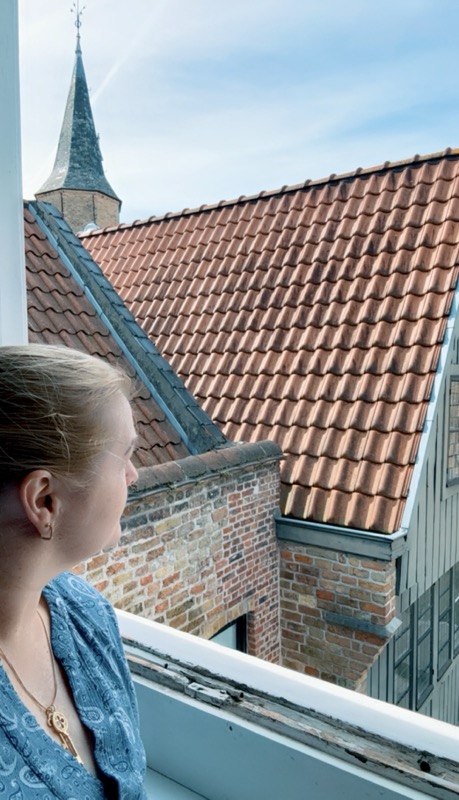
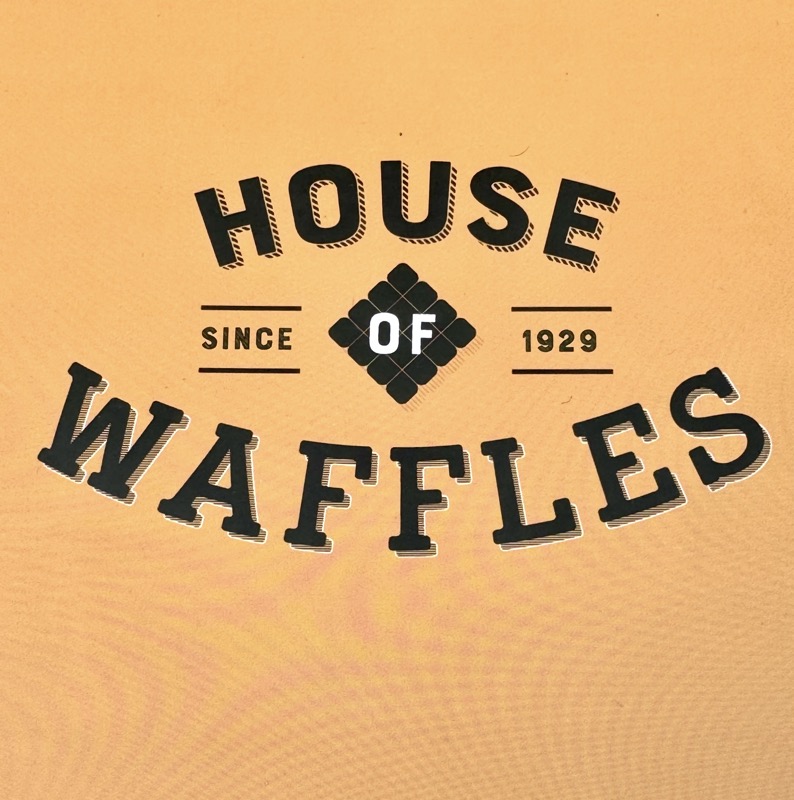

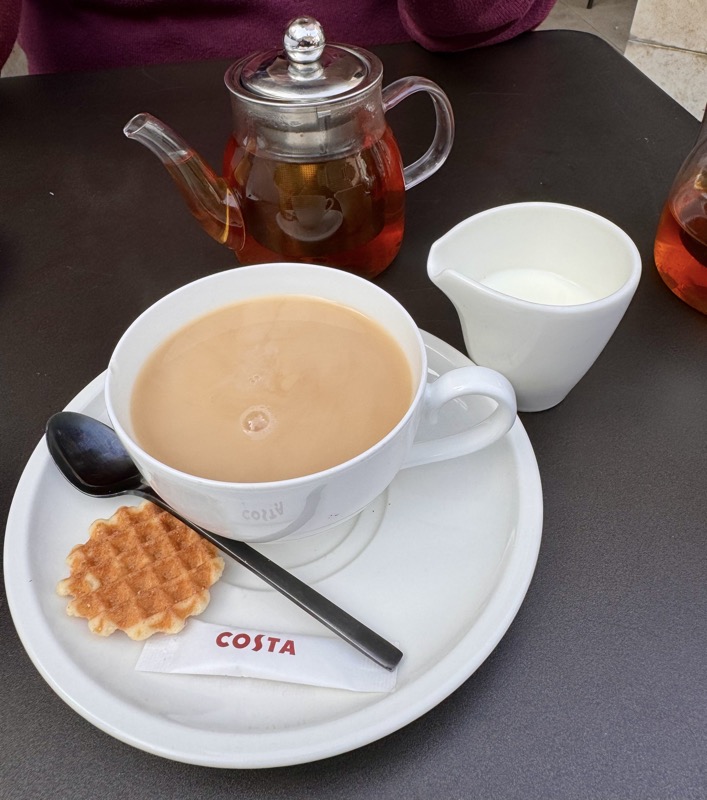

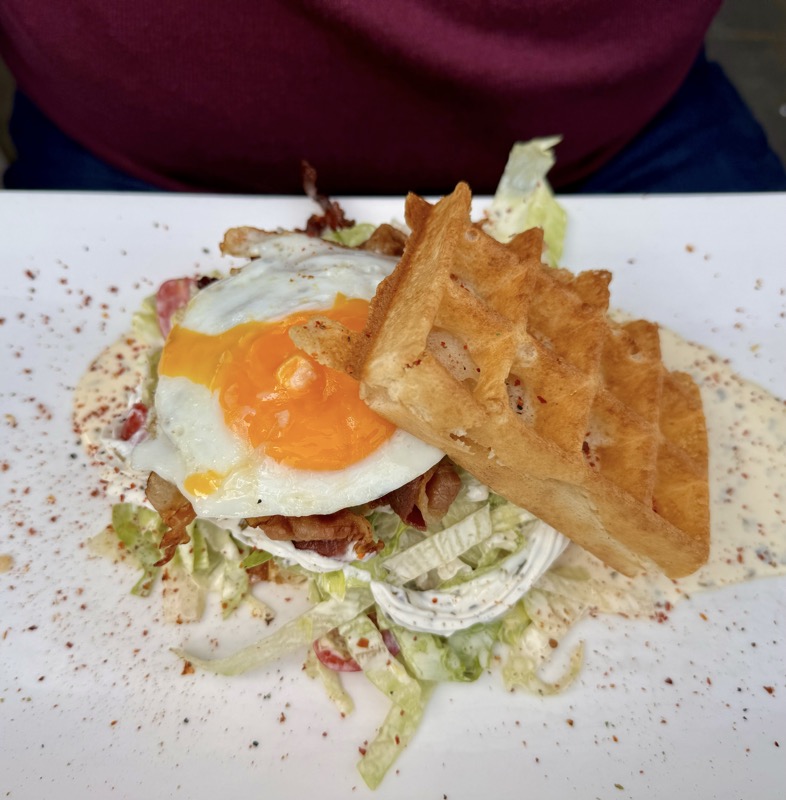
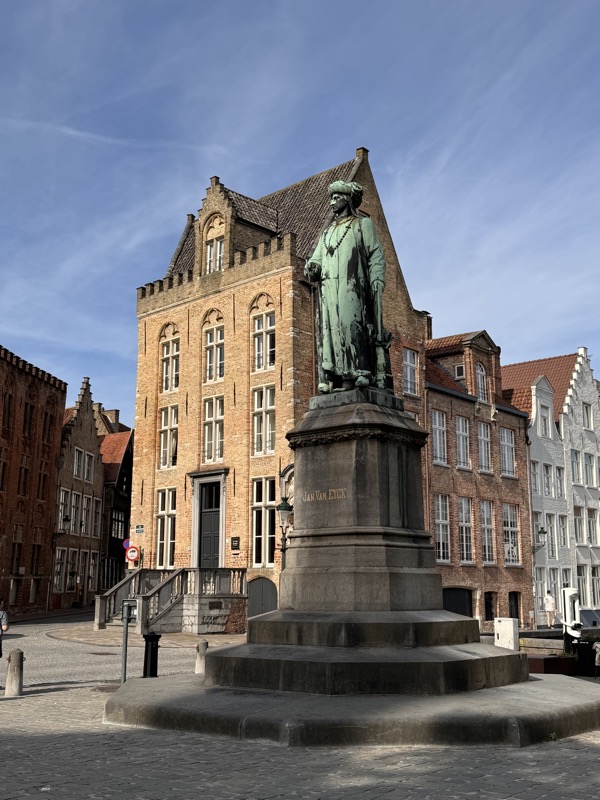
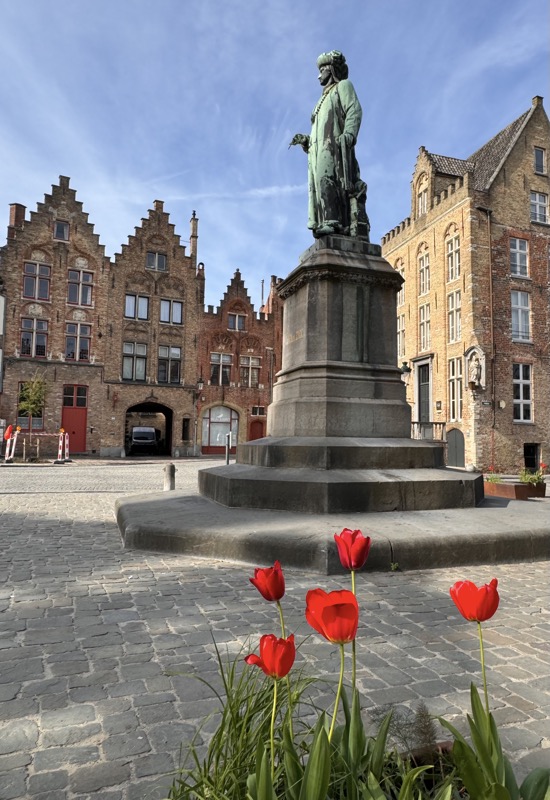

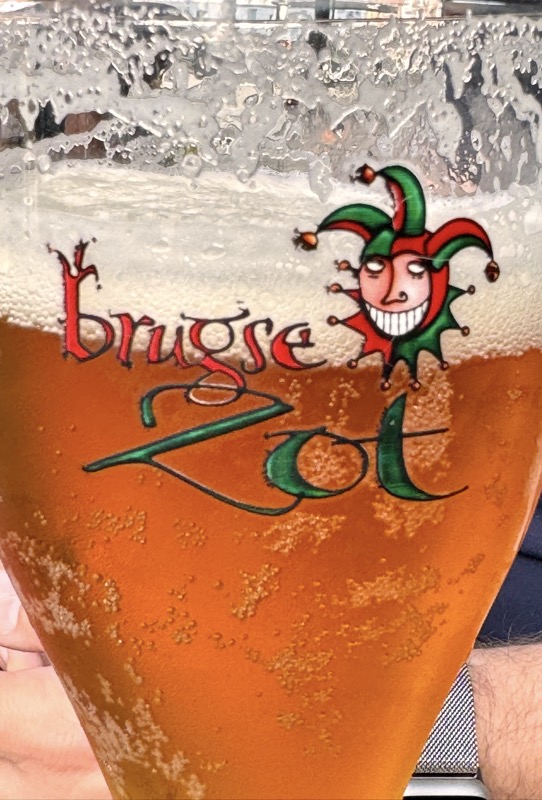
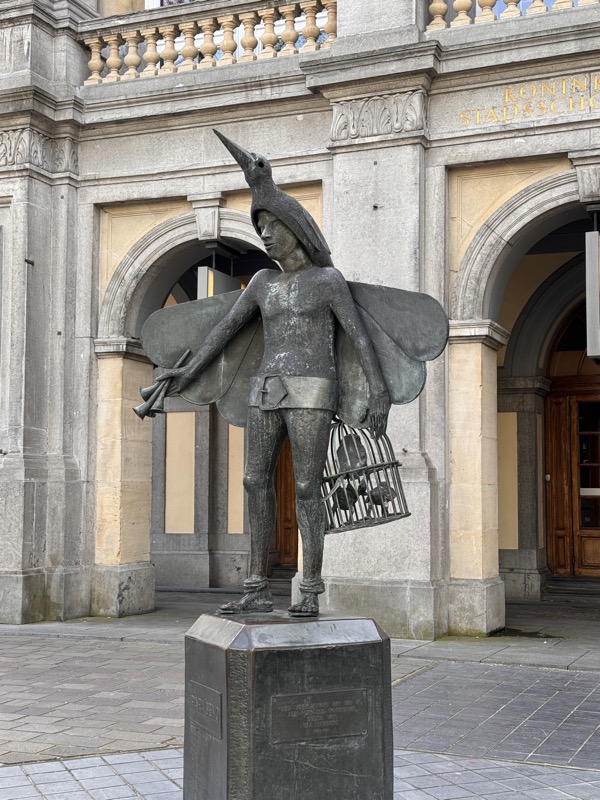
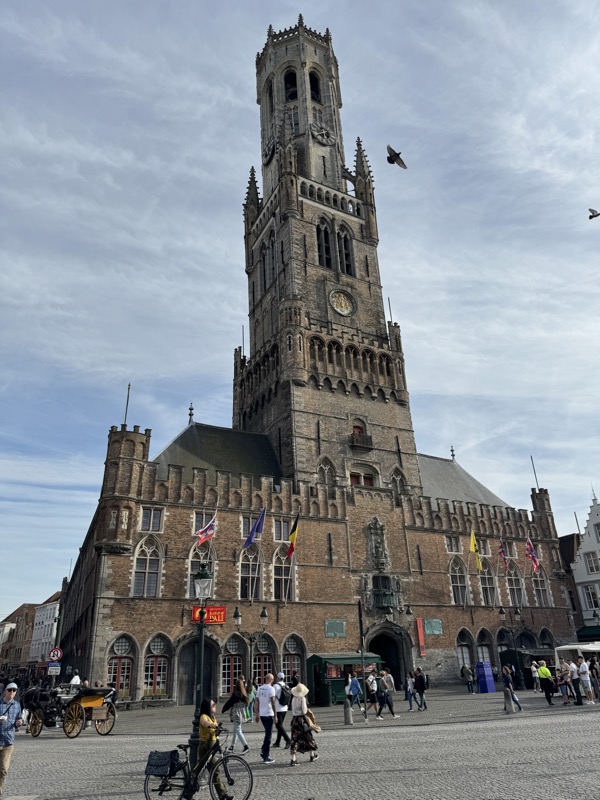
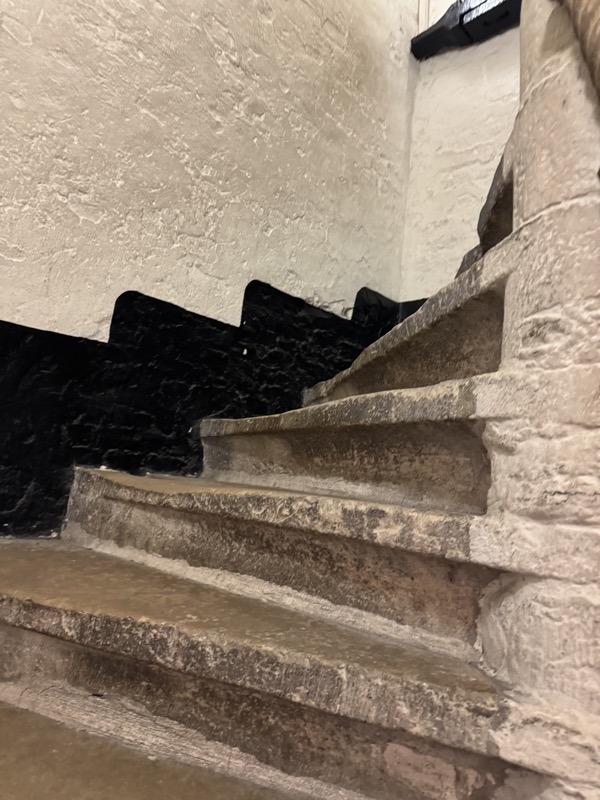
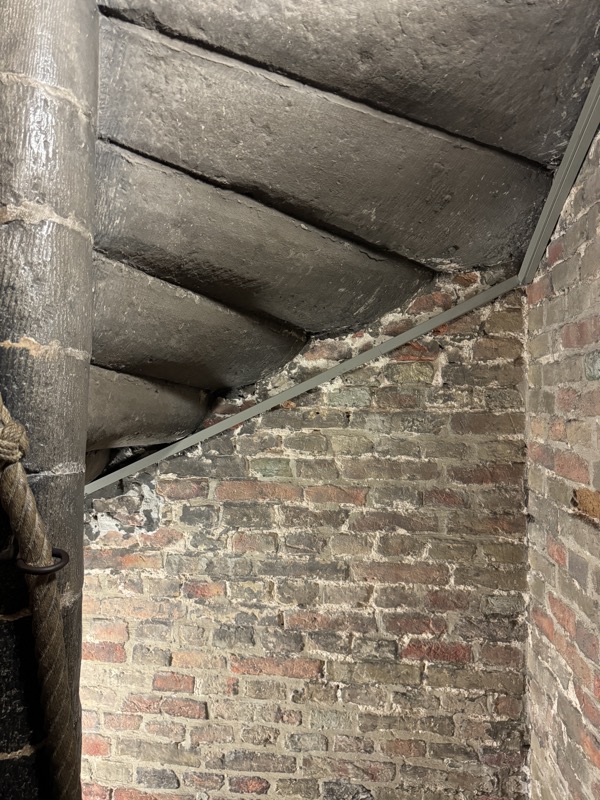
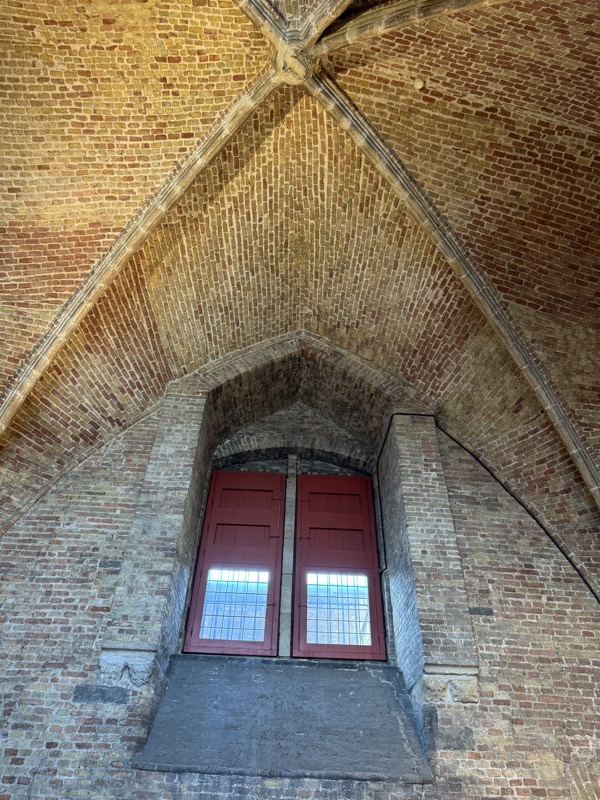
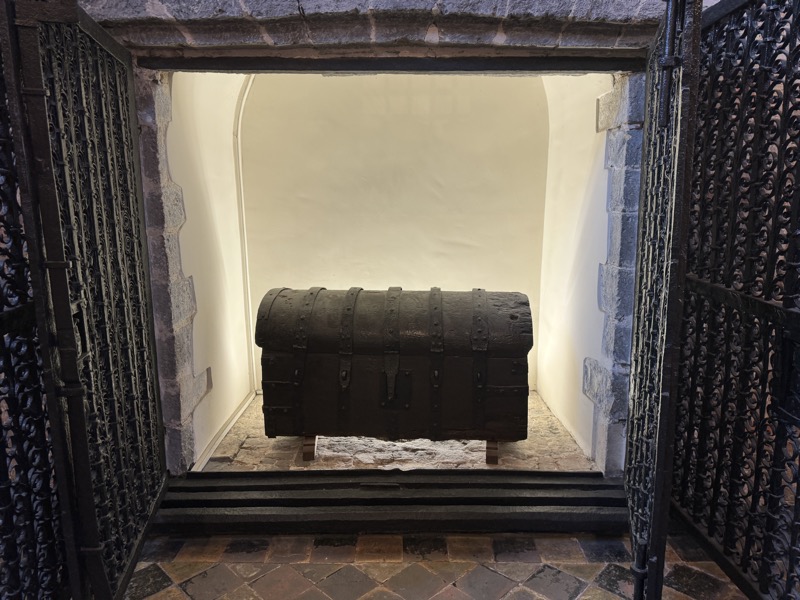

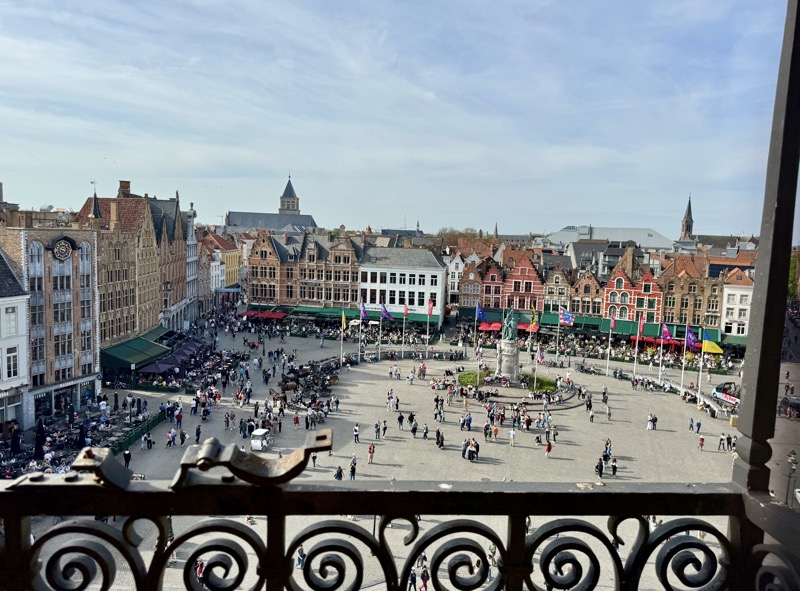
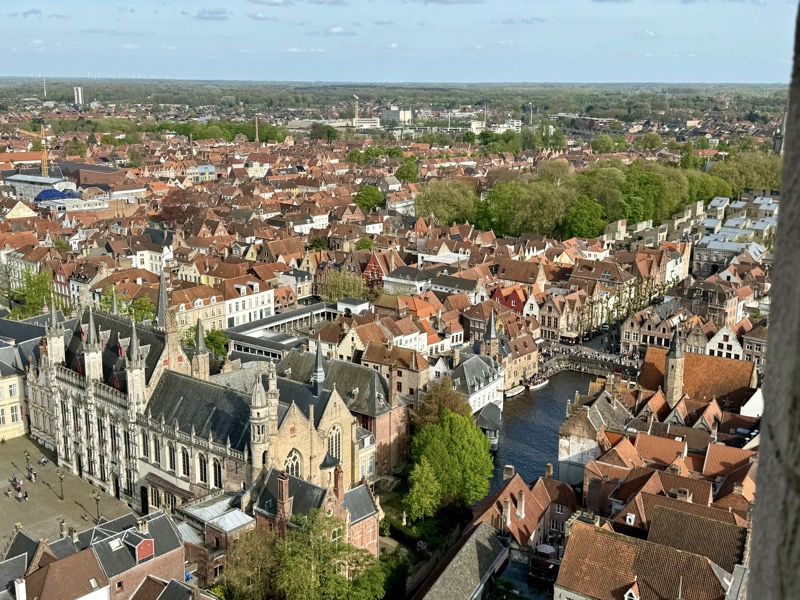
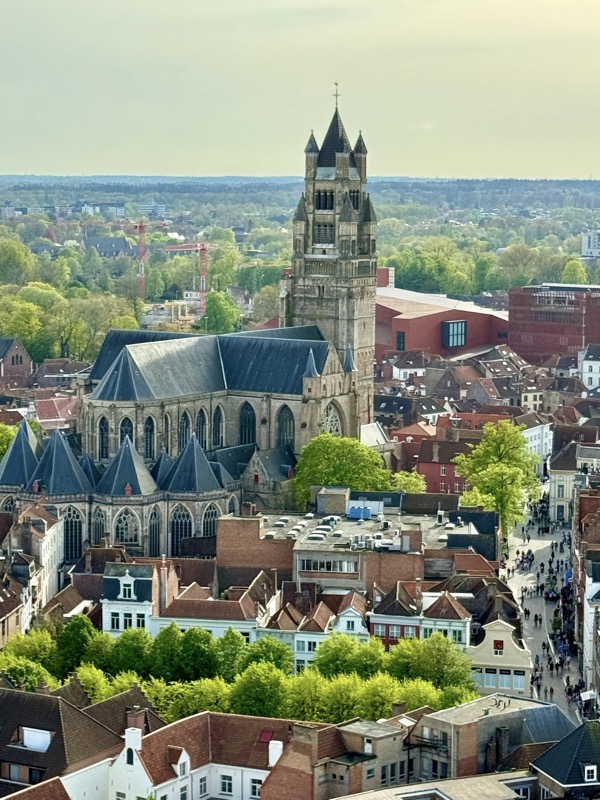

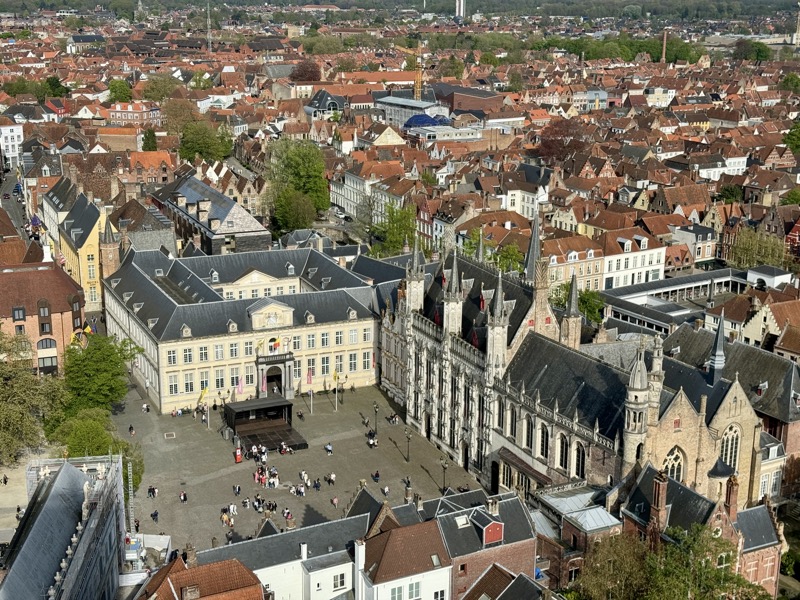
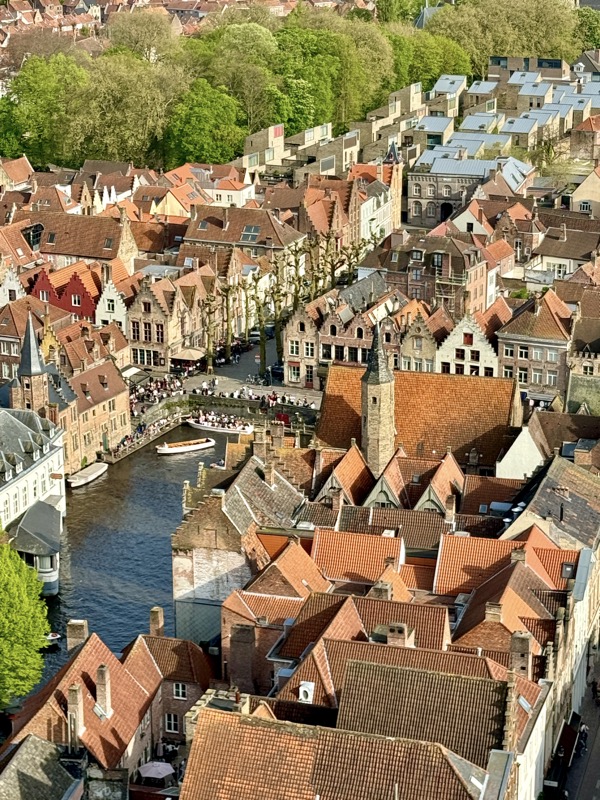
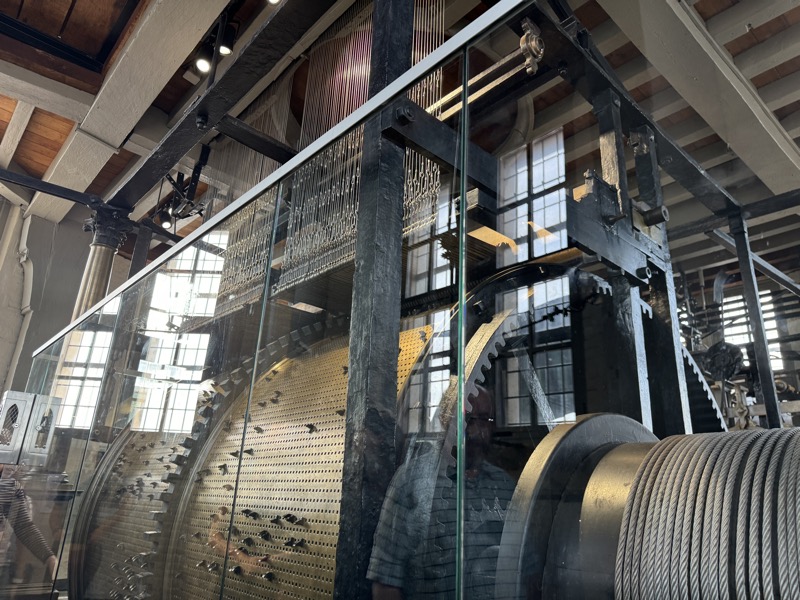
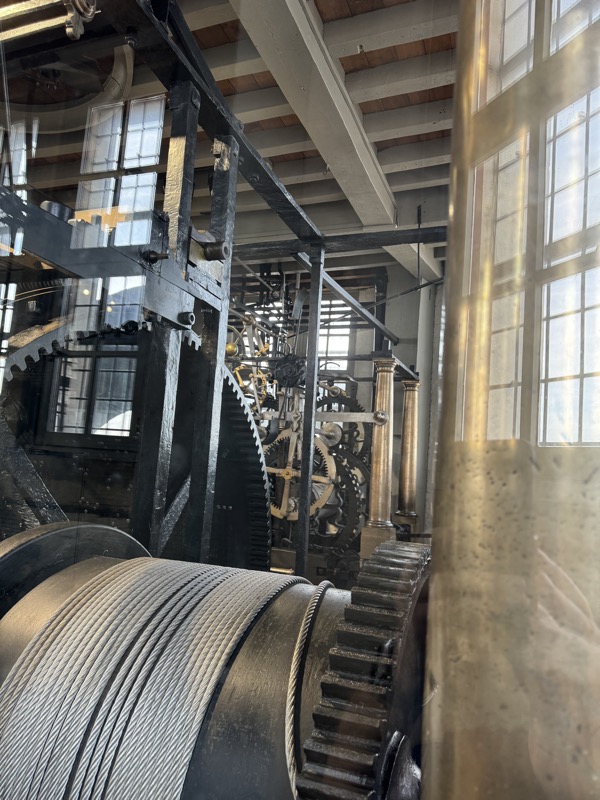
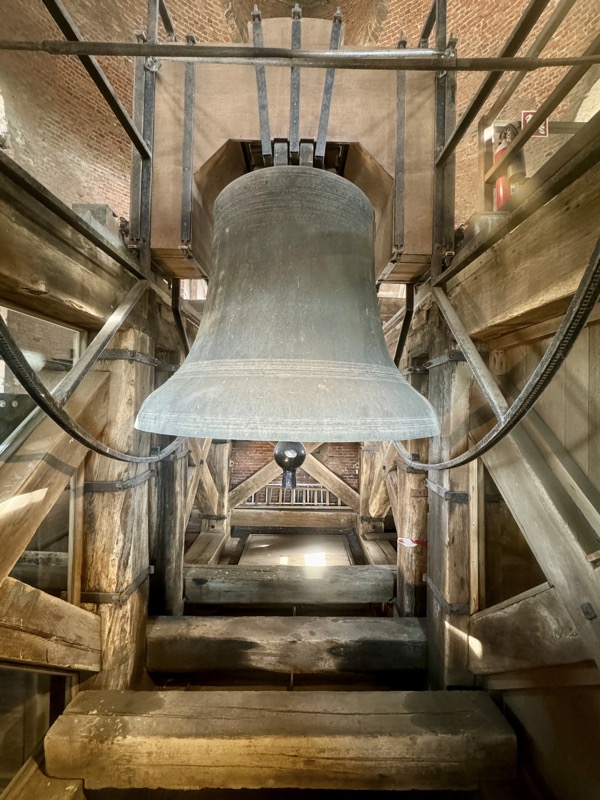
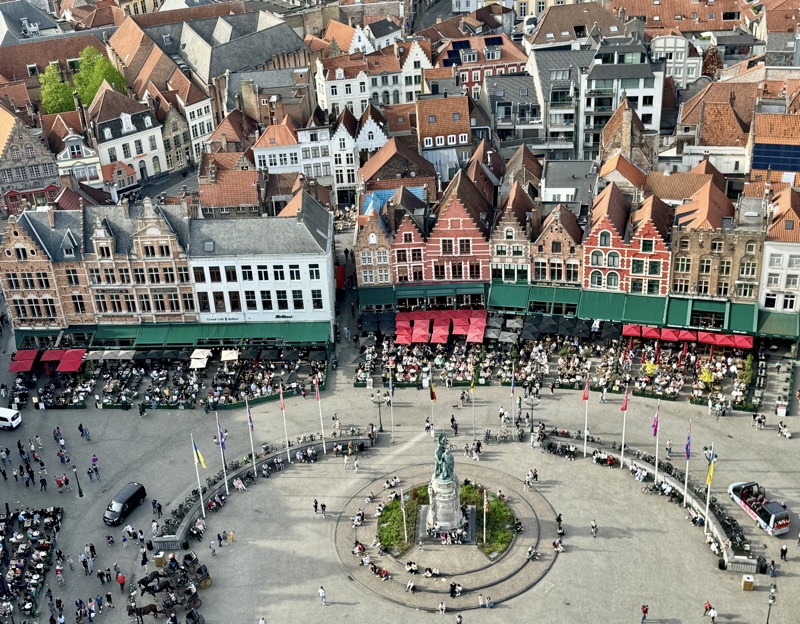


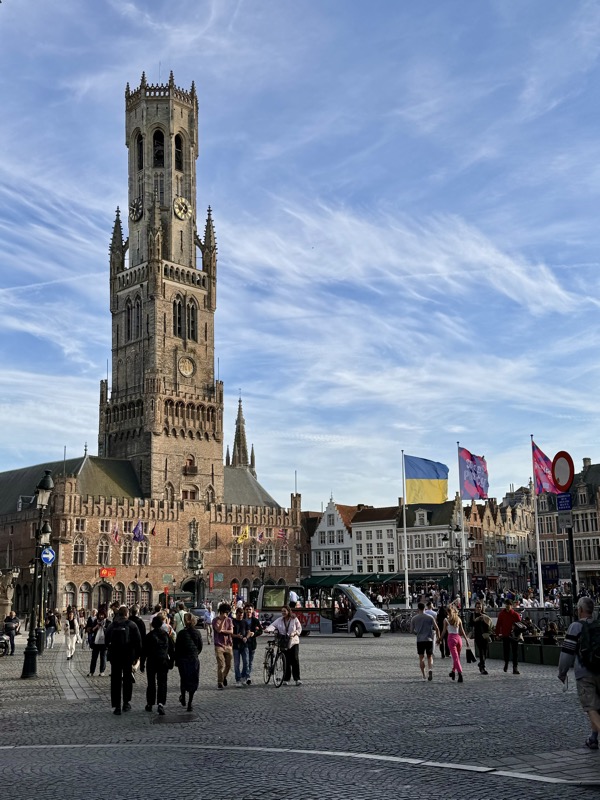
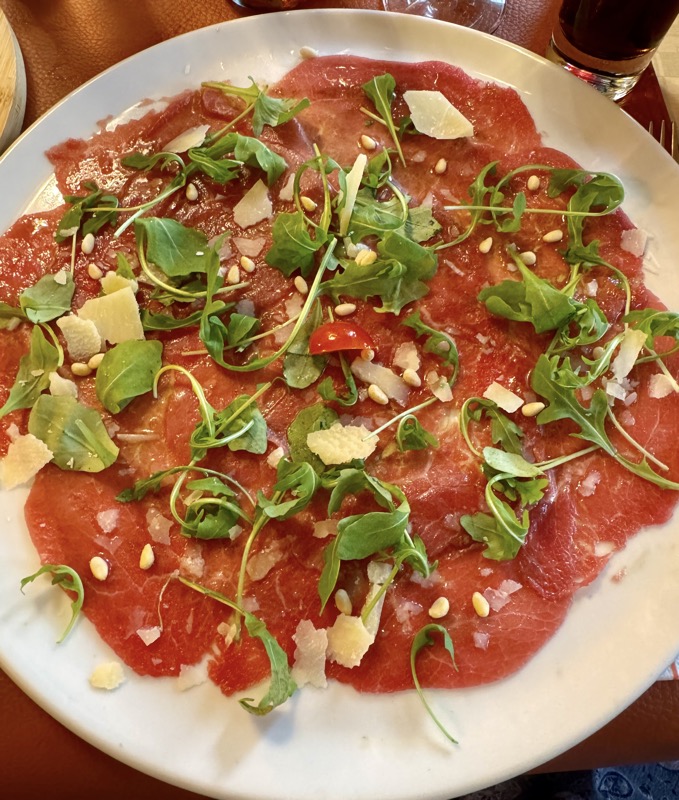
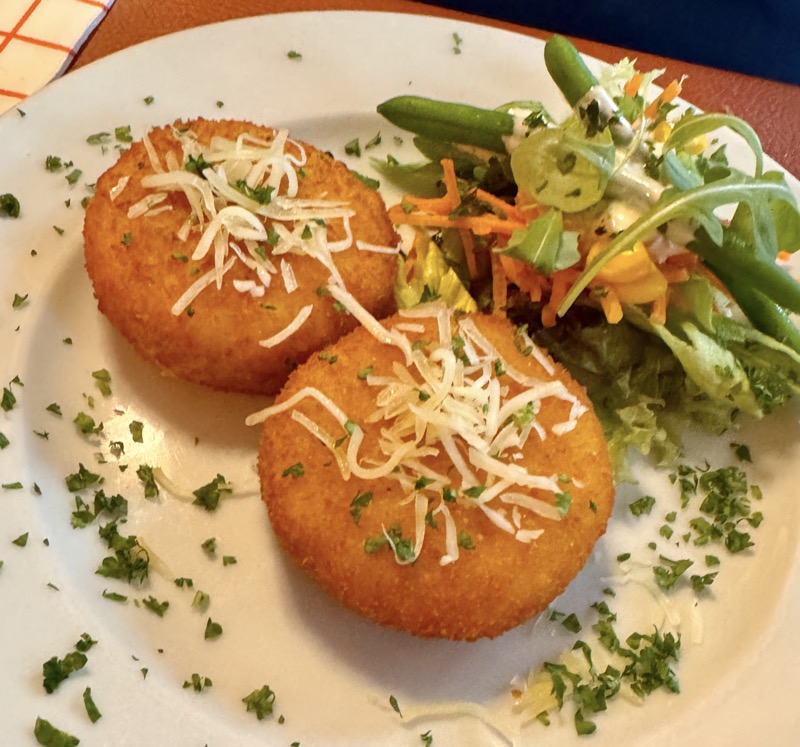


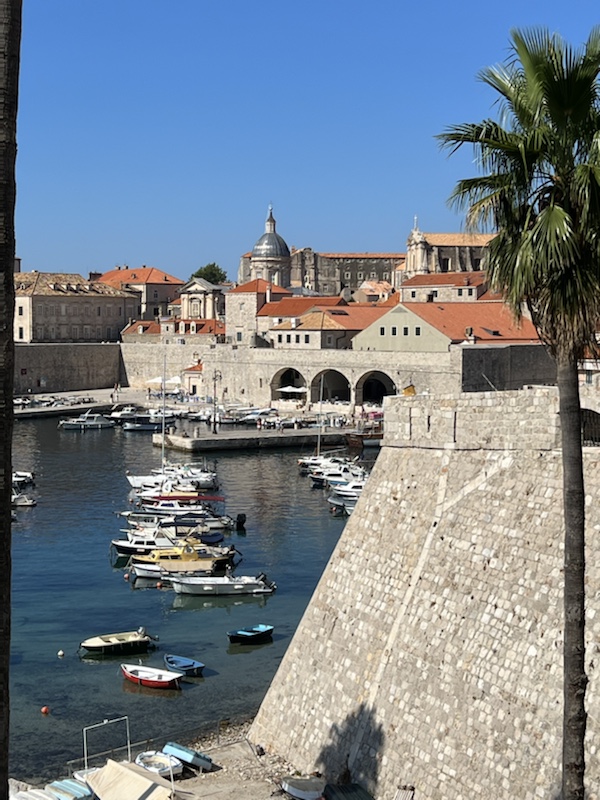
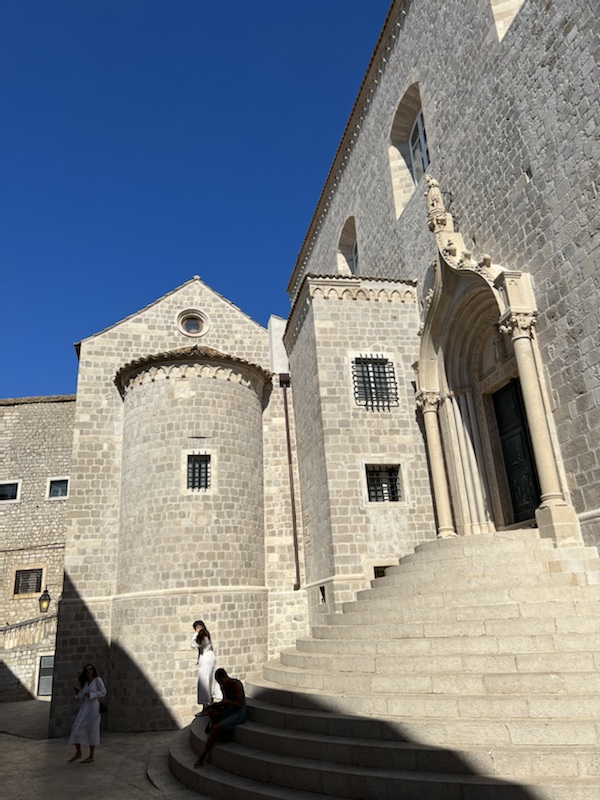 Now I am really wishing I had gotten to Dubrovnik years ago… Game of Thrones references everywhere are really disappointing in an ancient city that has so much history. Feels like the shops and restaurants even are totally catering to popular culture hounds instead of people who used to come here for the history of this medieval walled city. :/
Now I am really wishing I had gotten to Dubrovnik years ago… Game of Thrones references everywhere are really disappointing in an ancient city that has so much history. Feels like the shops and restaurants even are totally catering to popular culture hounds instead of people who used to come here for the history of this medieval walled city. :/ 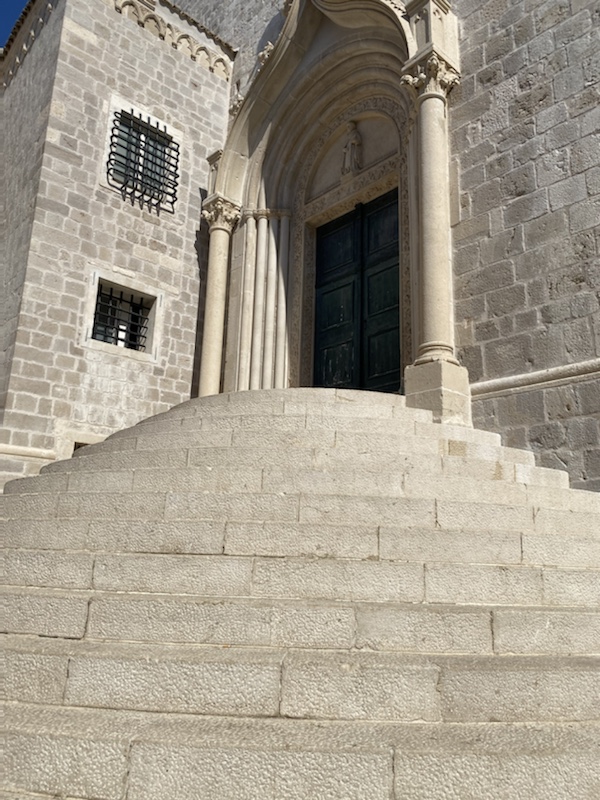
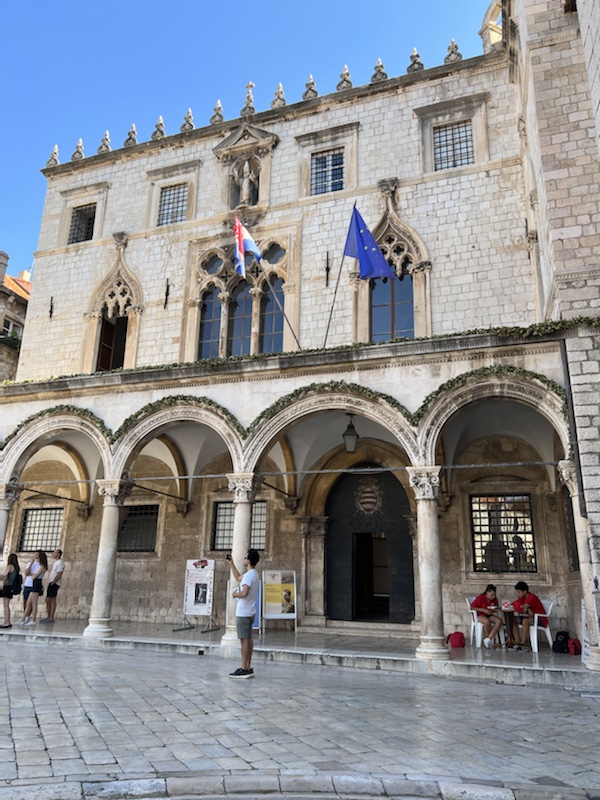 Shops lining the Main Street, mostly selling either gelato or souvenirs. I’m just not sure I need a Peter Dinklage “I drink and I know things” t-shirt as a souvenir of Dubrovnik, you know? It’s kinda weird how they’ve co-op’d the franchise so hard. The city is still beautiful though and the worn smooth cobbles are incredible. The whole inner city is pedestrians only which makes for a nice change to dodging Vespers and cabbies.
Shops lining the Main Street, mostly selling either gelato or souvenirs. I’m just not sure I need a Peter Dinklage “I drink and I know things” t-shirt as a souvenir of Dubrovnik, you know? It’s kinda weird how they’ve co-op’d the franchise so hard. The city is still beautiful though and the worn smooth cobbles are incredible. The whole inner city is pedestrians only which makes for a nice change to dodging Vespers and cabbies. 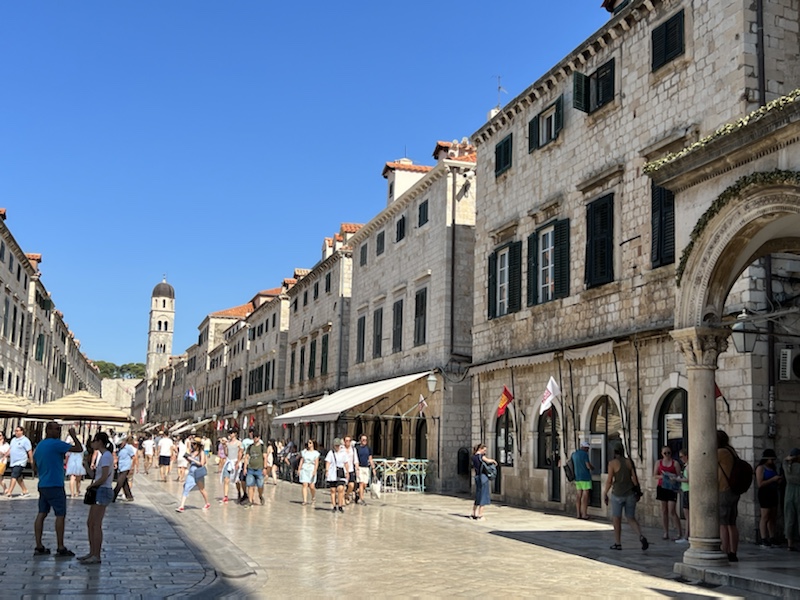
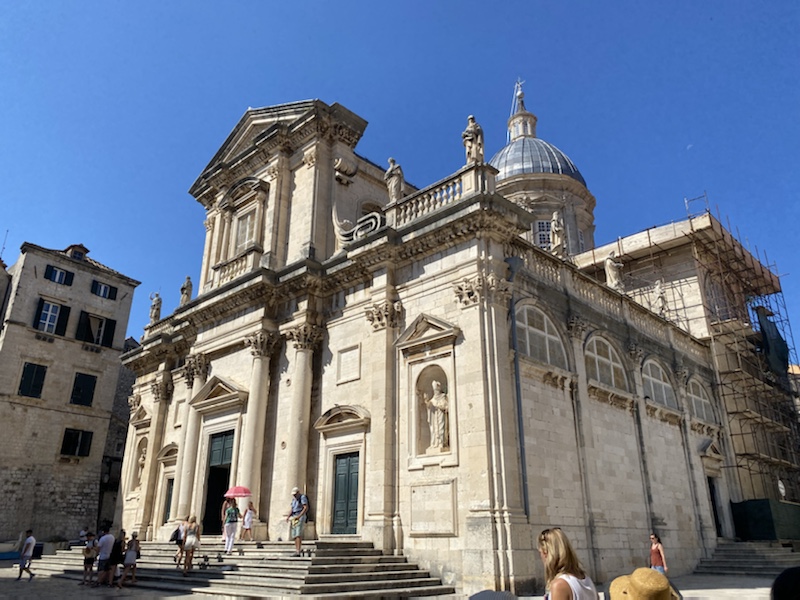
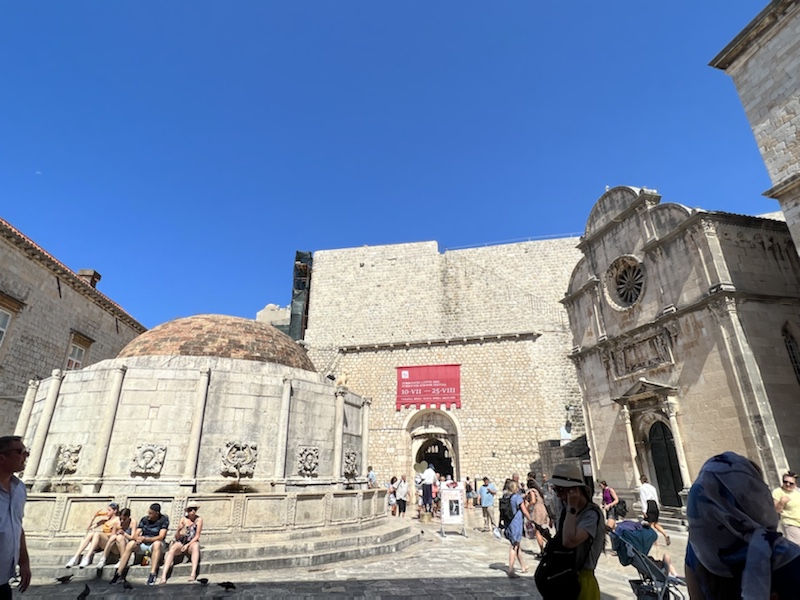

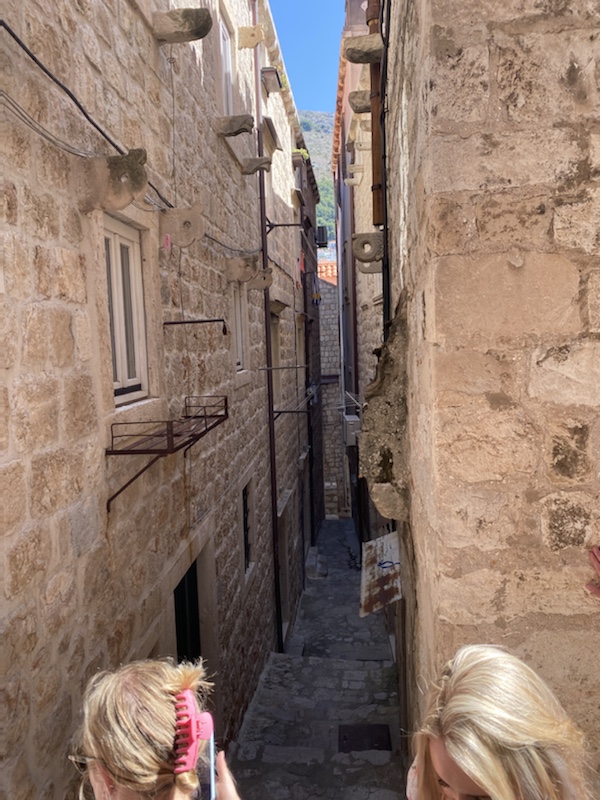 I love European women – they’re unapologetically themselves. <3
I love European women – they’re unapologetically themselves. <3 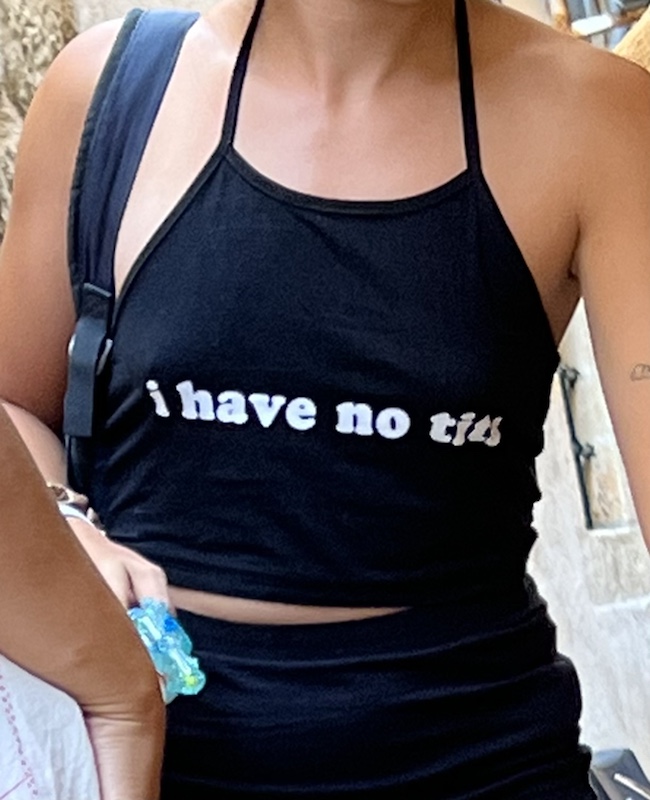 Some of the dross in the shops that wasn’t GoT.
Some of the dross in the shops that wasn’t GoT.  And I walked into this candy store, but mostly out of curiosity – the entire shop had bees buzzing around it – and many of the piles of confectionery had actually bees on the lollies. As far as I know, bees don’t carry germs around with them, but I’m not sure I want a bag of sweets that has had bees climbing all over it? I’m assuming they’re not a problem as the shop owners were making zero efforts to keep them out or shoo them off.
And I walked into this candy store, but mostly out of curiosity – the entire shop had bees buzzing around it – and many of the piles of confectionery had actually bees on the lollies. As far as I know, bees don’t carry germs around with them, but I’m not sure I want a bag of sweets that has had bees climbing all over it? I’m assuming they’re not a problem as the shop owners were making zero efforts to keep them out or shoo them off. 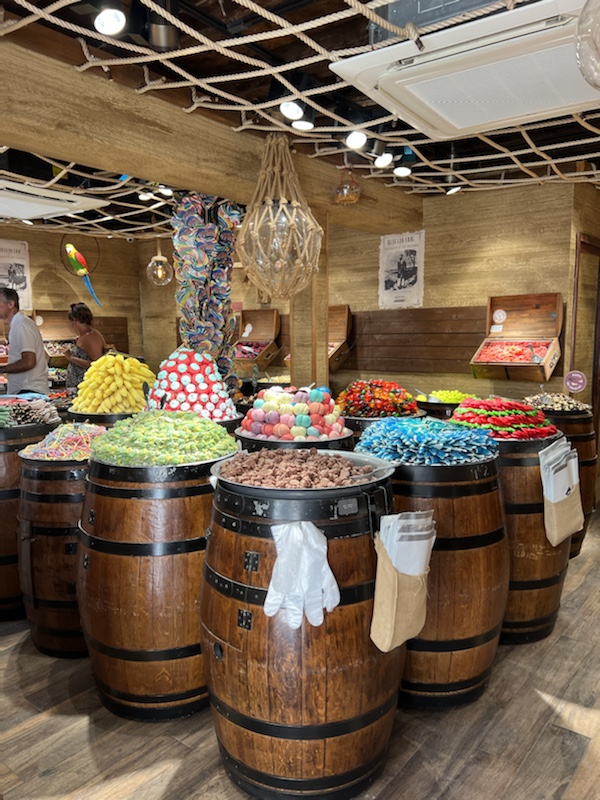 Decided to stop for some lunch at a lovely cafe with a view… could have been the alcohol, or might have been the scenery and the company, but I think this was one of the nicest meals we’ve had since we started this trip.
Decided to stop for some lunch at a lovely cafe with a view… could have been the alcohol, or might have been the scenery and the company, but I think this was one of the nicest meals we’ve had since we started this trip. Marinara pasta and a huge mojito! Just what you need in the middle of an intense few days of walking. It was delicious even if I couldn’t finish it. Angus of course ordered a hamburger.
Marinara pasta and a huge mojito! Just what you need in the middle of an intense few days of walking. It was delicious even if I couldn’t finish it. Angus of course ordered a hamburger. 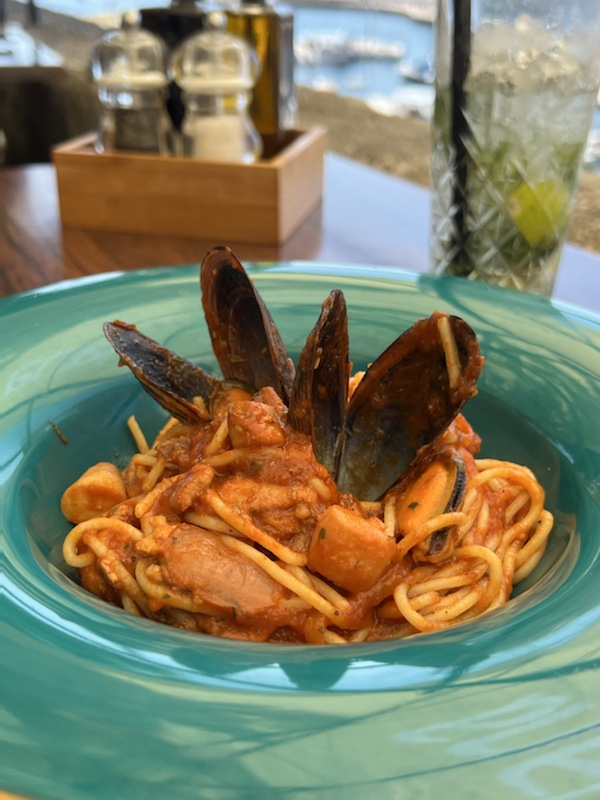
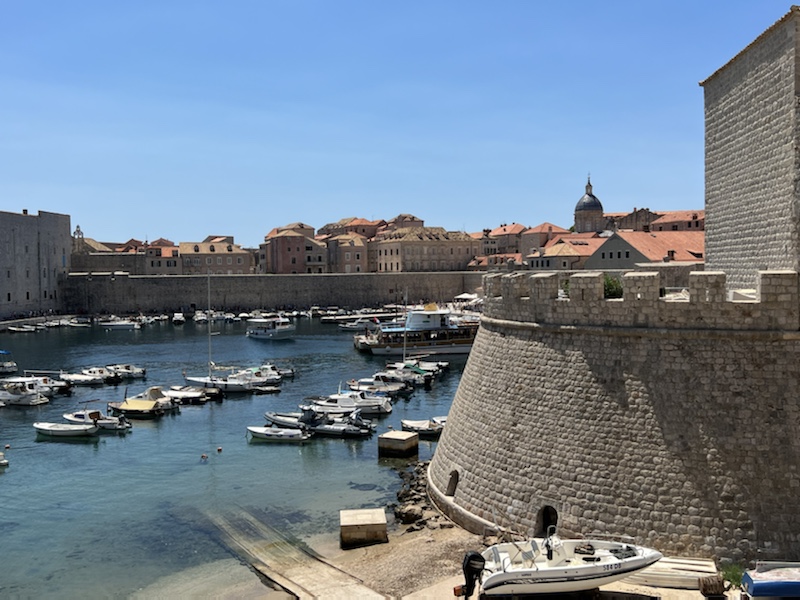 After lunch, we met back up with the group and head down to the Marina to get a boat cruise over to one of the islands. I fear the term ‘boat cruise’ means something different in Croatian to Australian as I was expecting us to be pottering about on the boat for a few hours, lazily taking in the beautiful blues of the Adriatic… whereas in reality, it was a quick ferry ride to a nearby island that has 1) a simple taverna, 2) a fancy over the top exclusive resort and 3) a famous nudist beach.
After lunch, we met back up with the group and head down to the Marina to get a boat cruise over to one of the islands. I fear the term ‘boat cruise’ means something different in Croatian to Australian as I was expecting us to be pottering about on the boat for a few hours, lazily taking in the beautiful blues of the Adriatic… whereas in reality, it was a quick ferry ride to a nearby island that has 1) a simple taverna, 2) a fancy over the top exclusive resort and 3) a famous nudist beach. 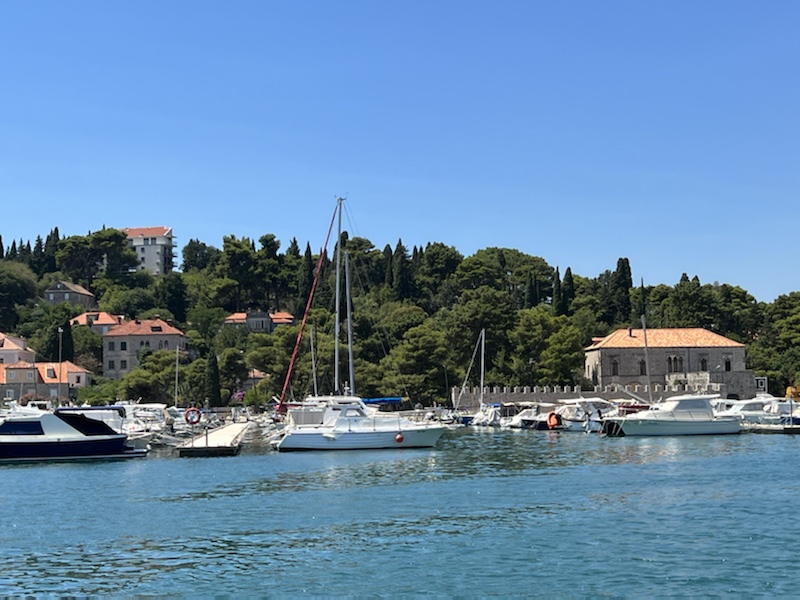
 So I think you can guess how I chose to spend my afternoon… ‘Another G&T please!’
So I think you can guess how I chose to spend my afternoon… ‘Another G&T please!’ 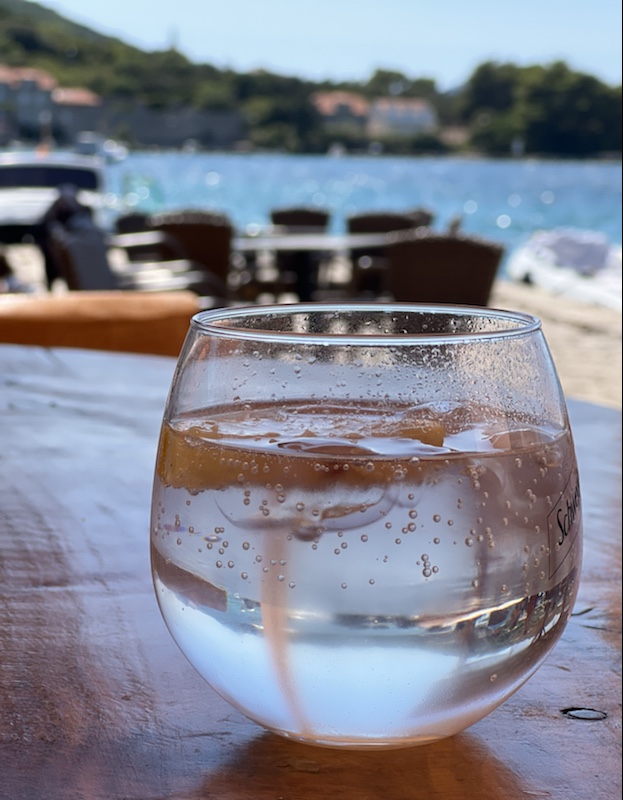
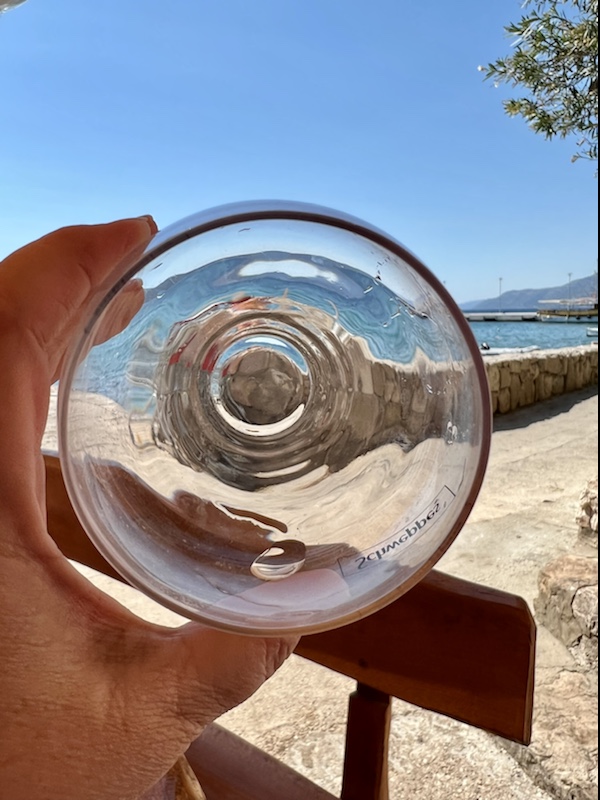 The guys from the boat found a spot to swim – was very glad I hung back with our Icelandic friend Ingie, as there was zero shade to be had over there and the rocks for a beach is not my idea of ‘beach’… Australians have always been kinda spoilt in the beach department.
The guys from the boat found a spot to swim – was very glad I hung back with our Icelandic friend Ingie, as there was zero shade to be had over there and the rocks for a beach is not my idea of ‘beach’… Australians have always been kinda spoilt in the beach department.  At least two sunburned peoples on the boat on the way back.
At least two sunburned peoples on the boat on the way back. 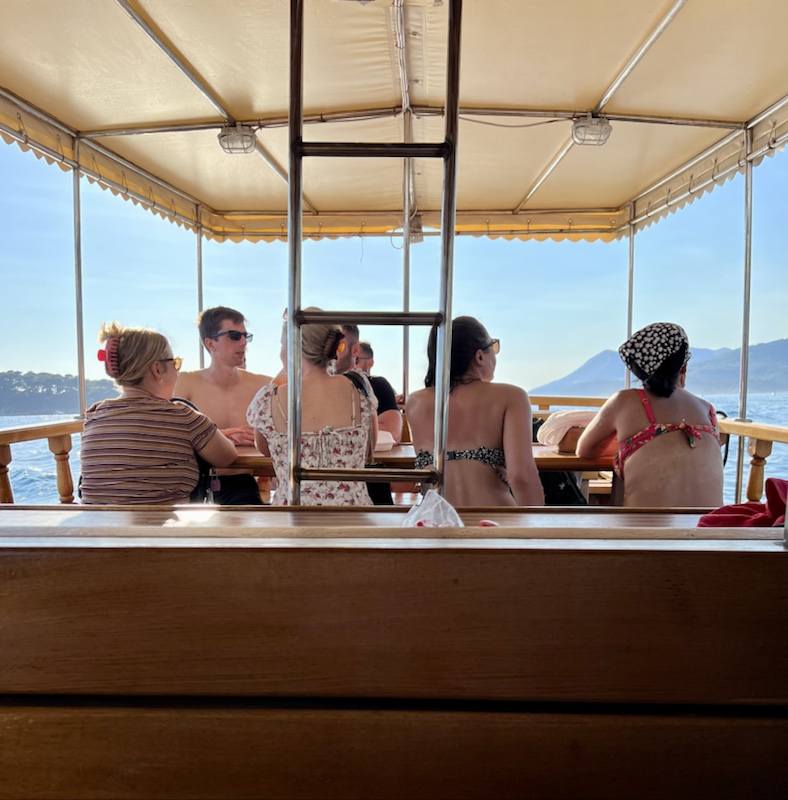
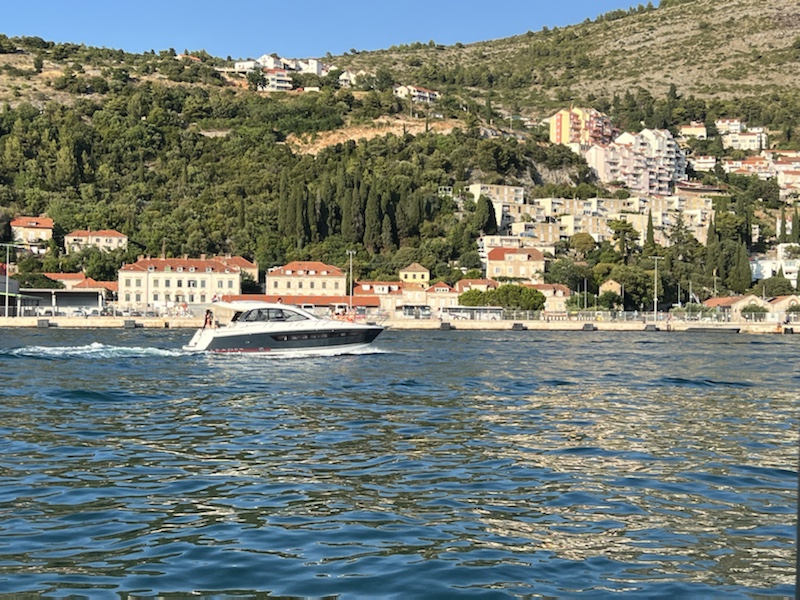
 The Long Market was established in about the 13th century as a merchant road that led to a large marketplace away from the river, and it became the city’s main thoroughfare. It also became known as the Royal Route in the 15th to 16th centuries because it served as the precessional road for visiting Polish royalty – the monarchs would visit the city and be entertained in the tenement houses along the road, and during the various feasts the city council have fireworks displays here. The most prominent and of course, wealthy, citizens of the Royal City of Gdańsk lived along this route.
The Long Market was established in about the 13th century as a merchant road that led to a large marketplace away from the river, and it became the city’s main thoroughfare. It also became known as the Royal Route in the 15th to 16th centuries because it served as the precessional road for visiting Polish royalty – the monarchs would visit the city and be entertained in the tenement houses along the road, and during the various feasts the city council have fireworks displays here. The most prominent and of course, wealthy, citizens of the Royal City of Gdańsk lived along this route.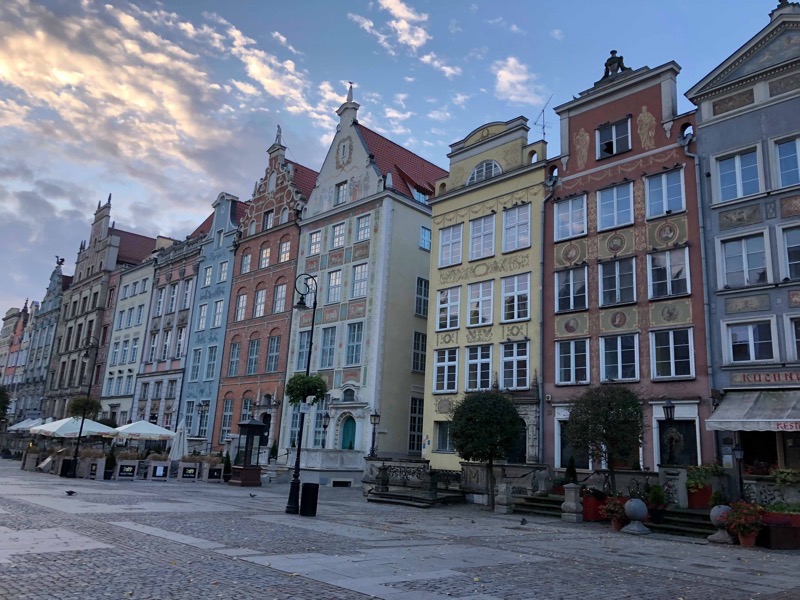

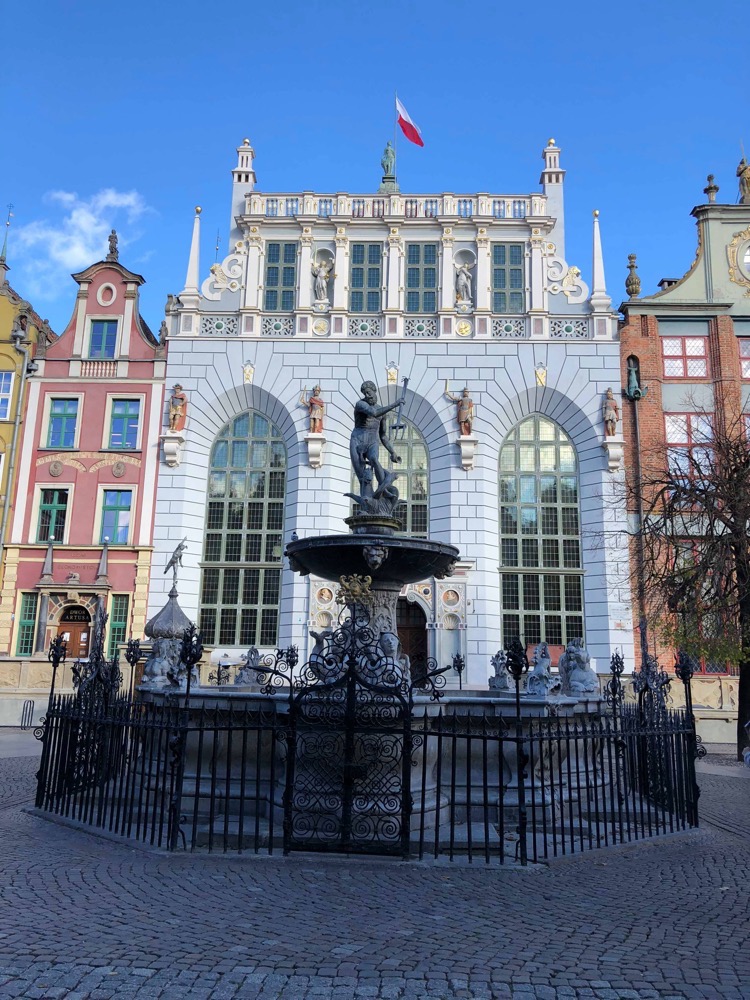
 After breakfast, we struck out to explore properly. Refreshingly most of the Old Town is laid out in a grid so instead of winding through confusing little streets, you could stroll down nice straight cobblestoned streets that would also allow you to (mostly) get far enough back to photograph the architectural gates that seemed to be at the end of most roads in the area.
After breakfast, we struck out to explore properly. Refreshingly most of the Old Town is laid out in a grid so instead of winding through confusing little streets, you could stroll down nice straight cobblestoned streets that would also allow you to (mostly) get far enough back to photograph the architectural gates that seemed to be at the end of most roads in the area.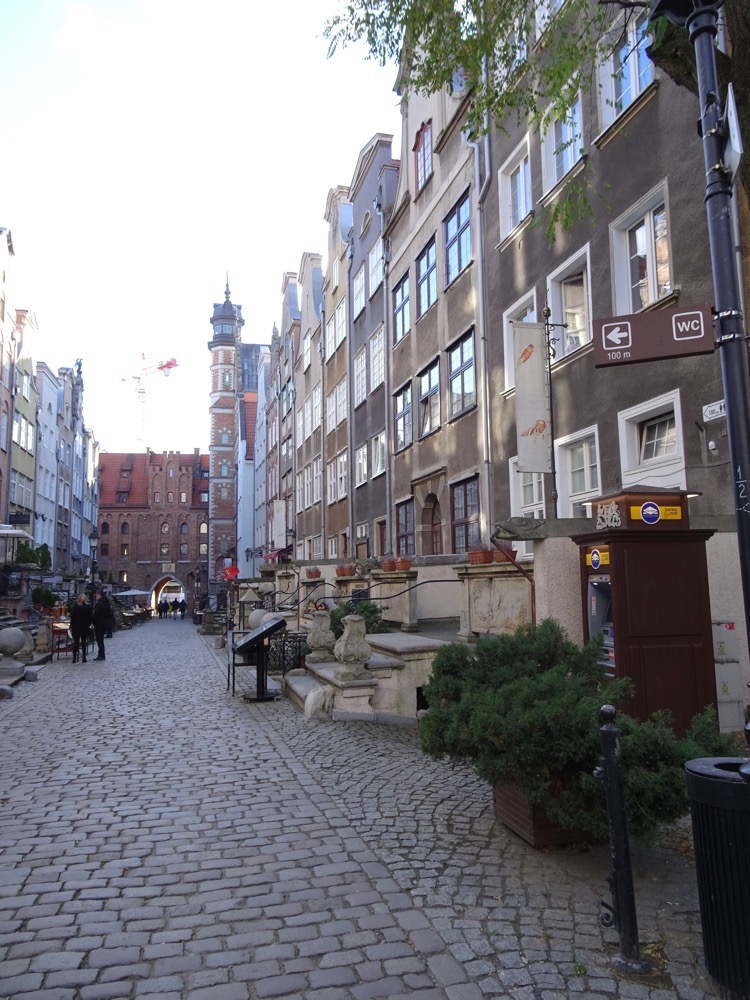 All the drainage down pipes have these fantastical stone dragons and gargoyles spitting water into the street – and for a short arse like me, most of them are at shoulder or head height, so they seem like they’d be a bit hazardous in really wet weather!
All the drainage down pipes have these fantastical stone dragons and gargoyles spitting water into the street – and for a short arse like me, most of them are at shoulder or head height, so they seem like they’d be a bit hazardous in really wet weather! The decorative details on all the buildings is just overwhelming, everywhere you look is something new and interesting whether it some stonework, wrought ironwork, frescos, tiles or sculpture… it’s a veritable feast for the eyes.
The decorative details on all the buildings is just overwhelming, everywhere you look is something new and interesting whether it some stonework, wrought ironwork, frescos, tiles or sculpture… it’s a veritable feast for the eyes.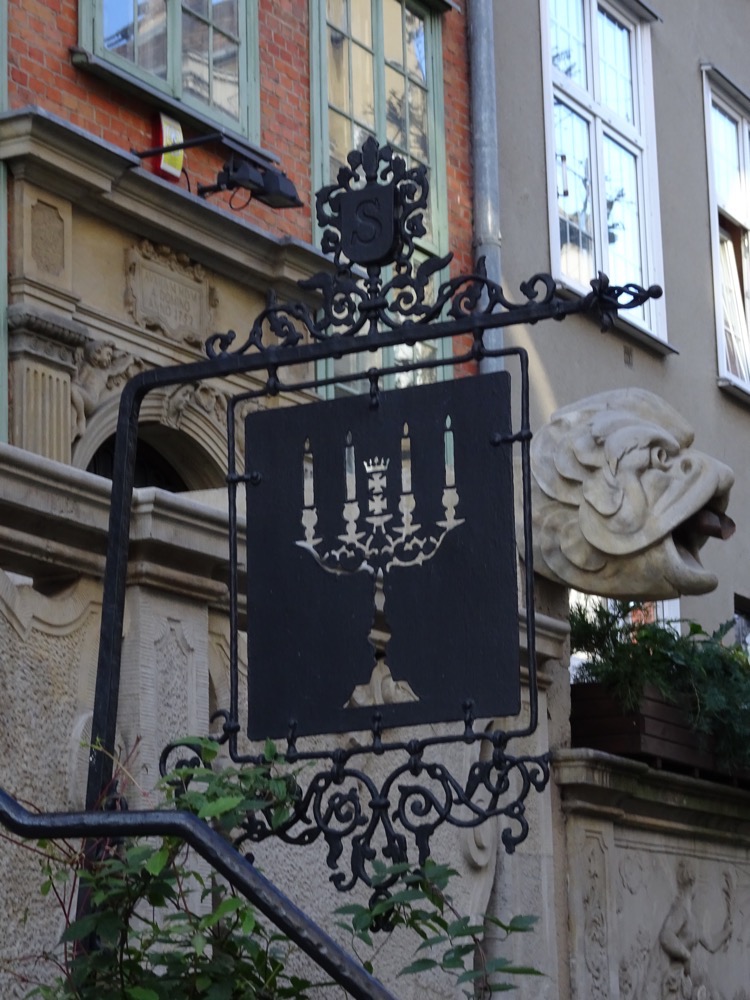
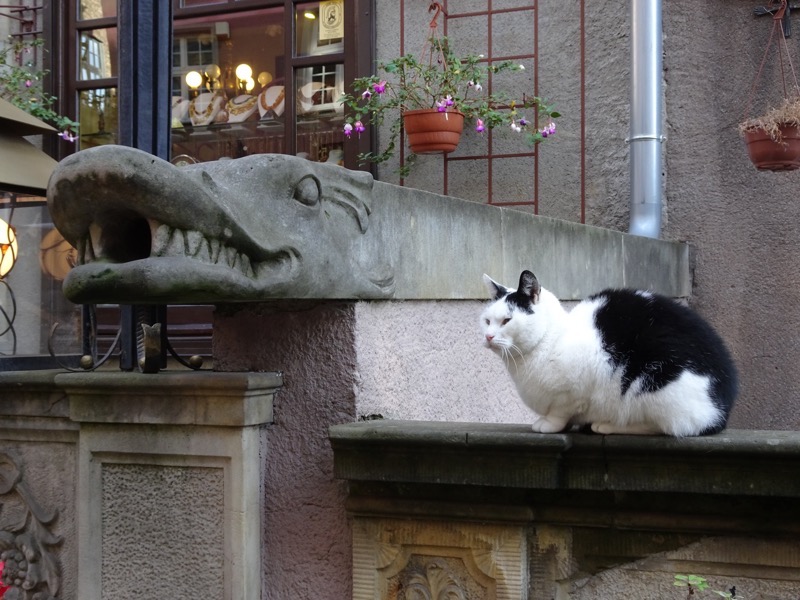 This is known to be the oldest surviving original building in Gdańsk, knowing as Gotyk House which was built in 1453.
This is known to be the oldest surviving original building in Gdańsk, knowing as Gotyk House which was built in 1453.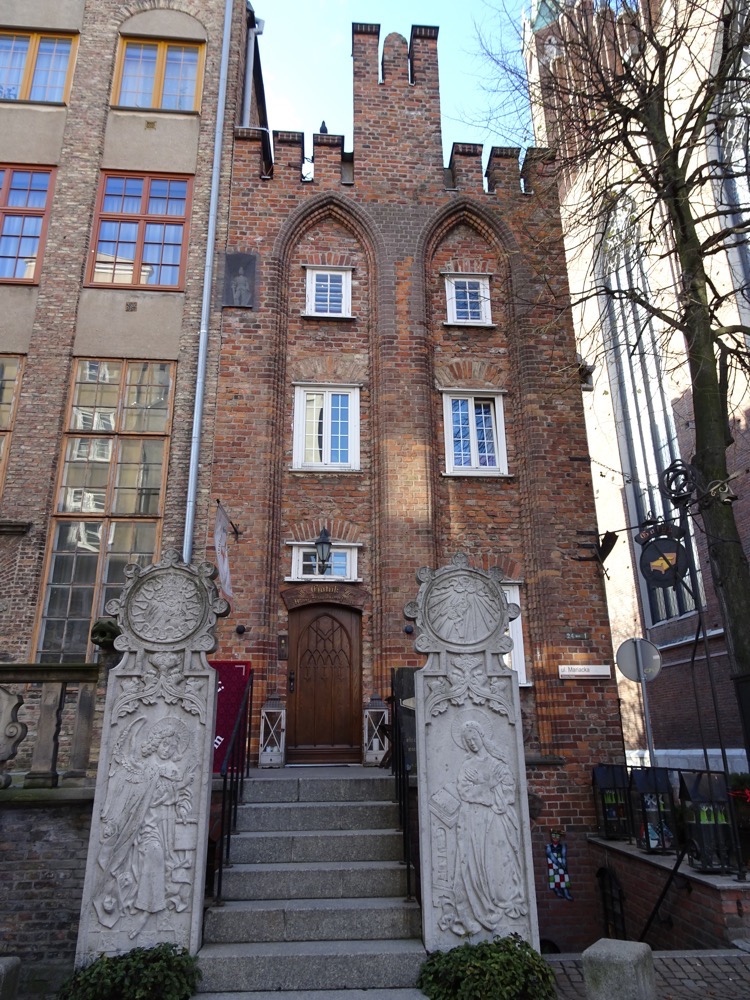 The tennement houses are lovely…
The tennement houses are lovely… … I want one! Red please.
… I want one! Red please. 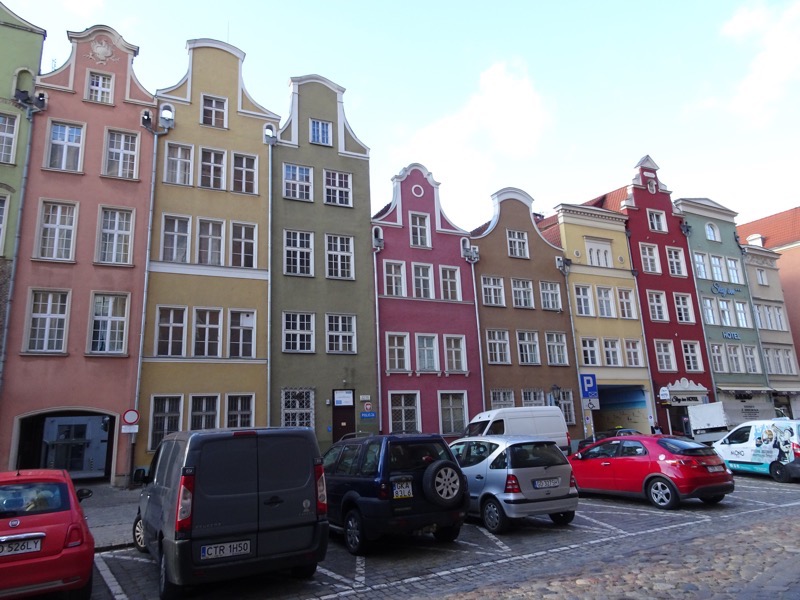
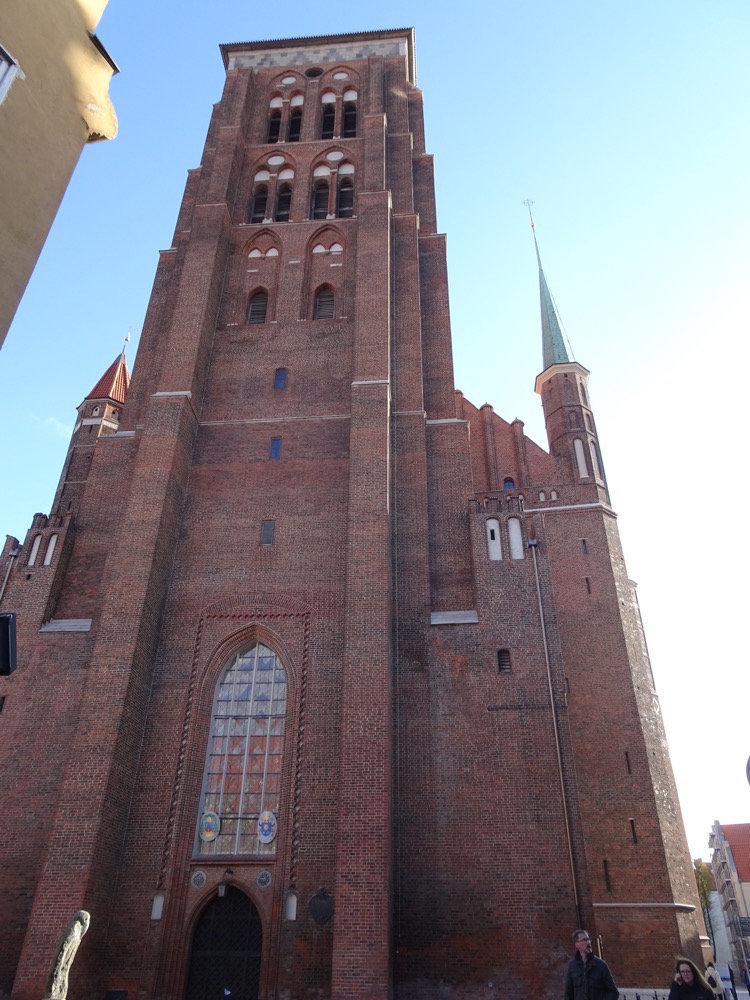

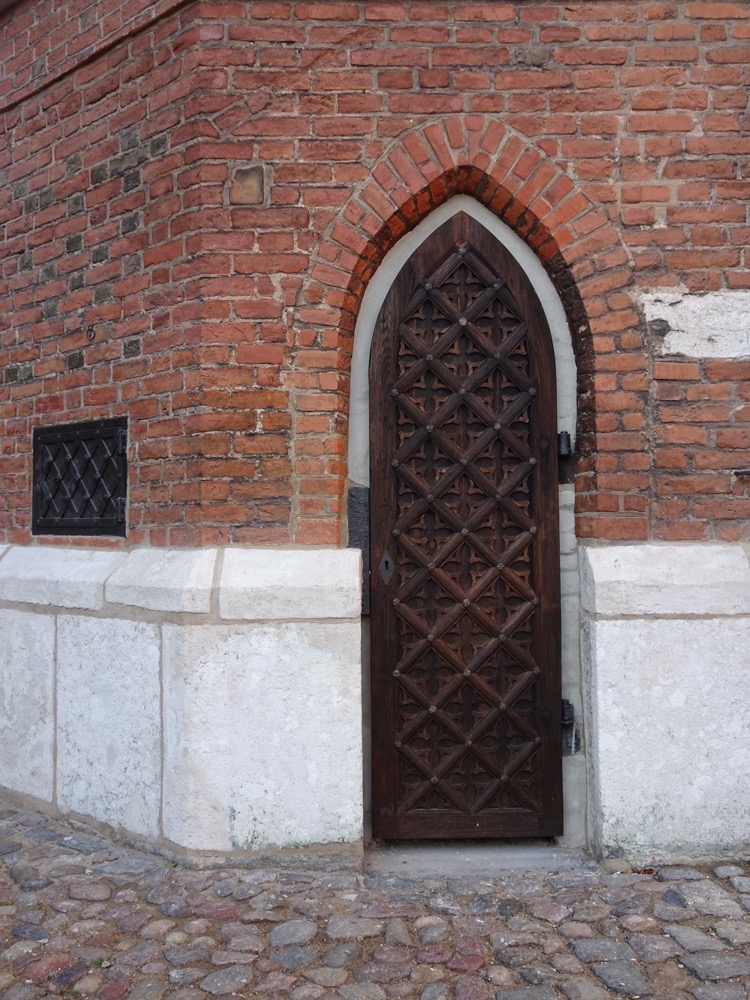 Inside the church is surprisingly stark (like the Frauenkirche in Munich), which was confusing when I first walked in and said to yale, ‘I thought this was a catholic church but it looks kinda Lutheran in here.’, and was again confused when I saw a confessional a bit later… but the dual denomination situation described above kinda explains that I guess.
Inside the church is surprisingly stark (like the Frauenkirche in Munich), which was confusing when I first walked in and said to yale, ‘I thought this was a catholic church but it looks kinda Lutheran in here.’, and was again confused when I saw a confessional a bit later… but the dual denomination situation described above kinda explains that I guess.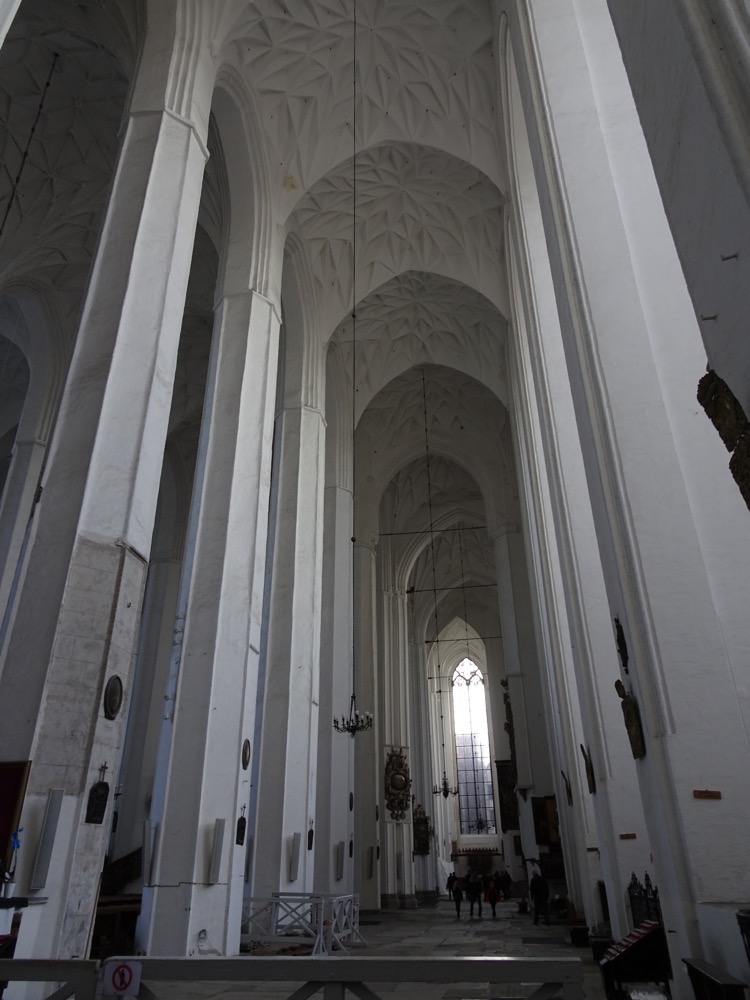
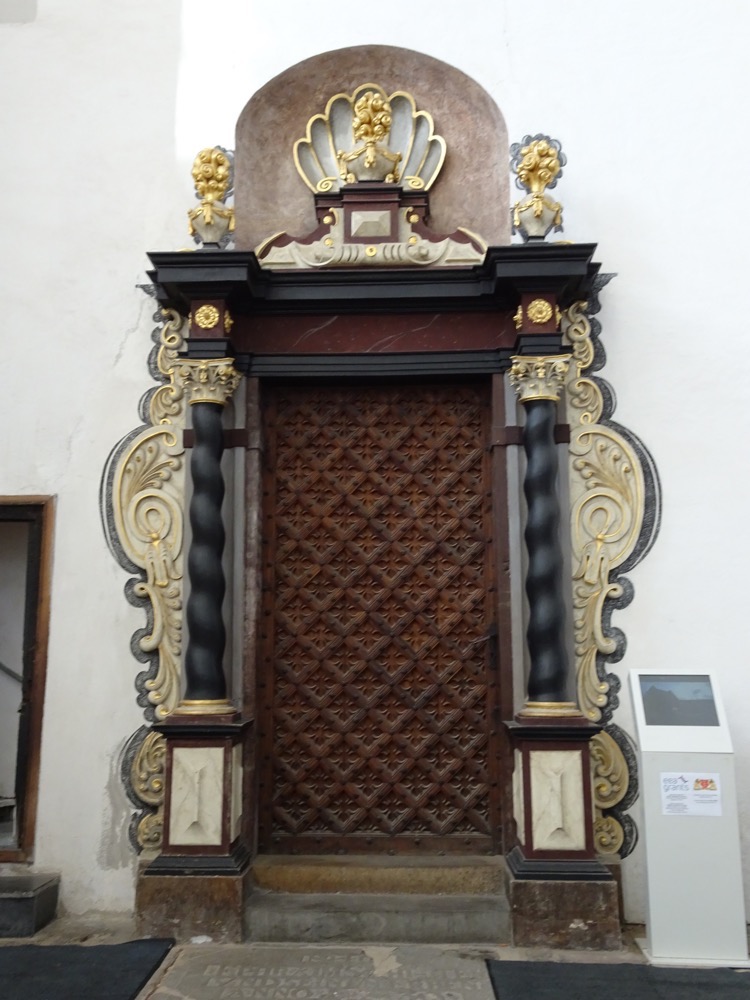 The enormous baptismal font is unusually placed almost right inside the door – about 50m from the nave.
The enormous baptismal font is unusually placed almost right inside the door – about 50m from the nave.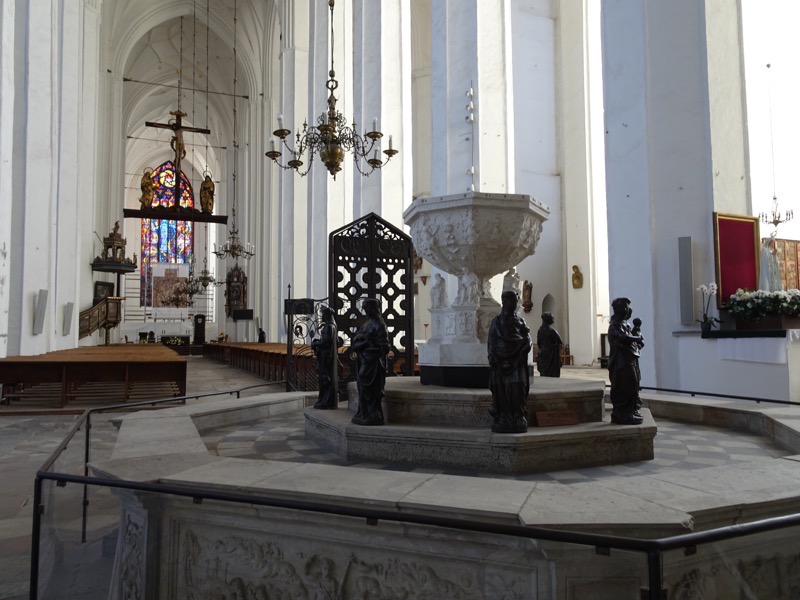 We saw this fancy commercial votive candle system – copyrighted in Ireland… sometimes I think we forget that big churches are more run as big business these days.
We saw this fancy commercial votive candle system – copyrighted in Ireland… sometimes I think we forget that big churches are more run as big business these days.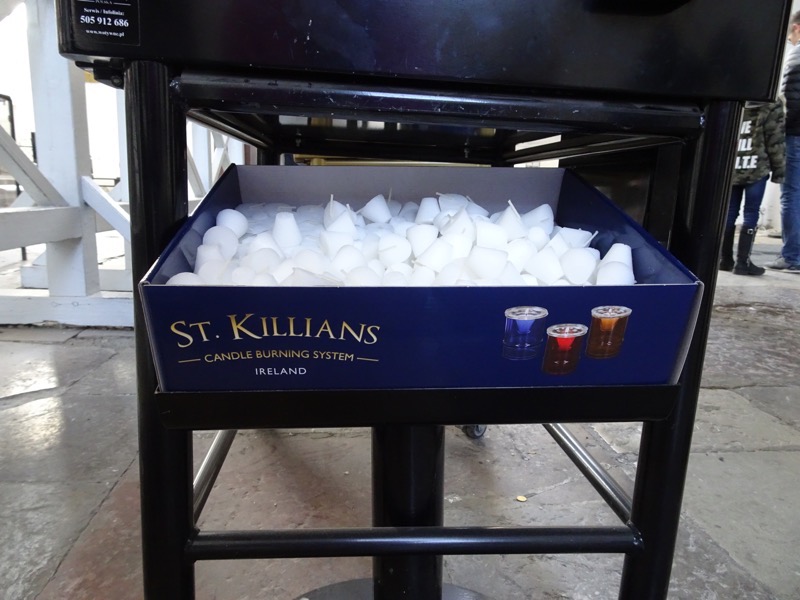
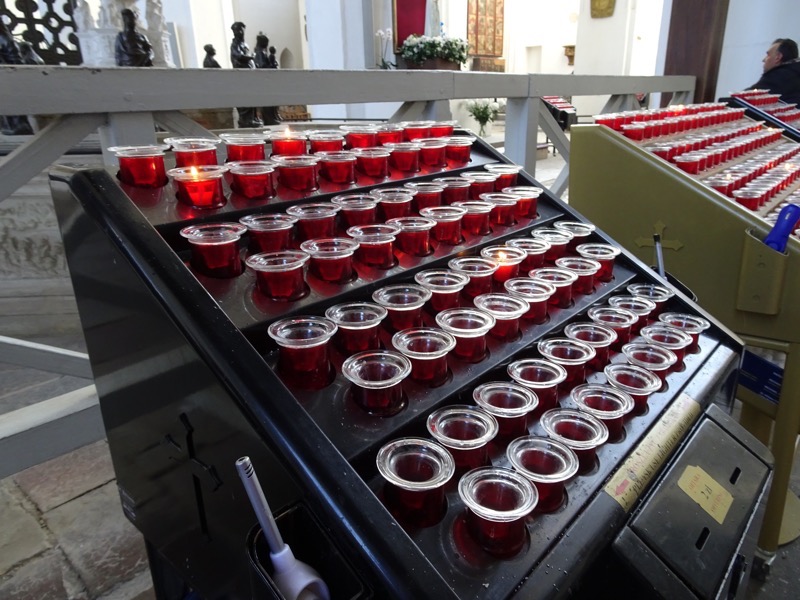 Anyway, St. Mary’s is a triple-aisled hall church with a triple-aisled transept – which basically means that the main nave and the two adjacent transepts are of roughly similar length, height and width. The building is an excellent example of late Gothic architecture. In the late 1500s to early 1600s the church was rebuilt and enlarged somewhat with the final footprint of the church not being achieved until over 150 years since the initial construction had started.
Anyway, St. Mary’s is a triple-aisled hall church with a triple-aisled transept – which basically means that the main nave and the two adjacent transepts are of roughly similar length, height and width. The building is an excellent example of late Gothic architecture. In the late 1500s to early 1600s the church was rebuilt and enlarged somewhat with the final footprint of the church not being achieved until over 150 years since the initial construction had started.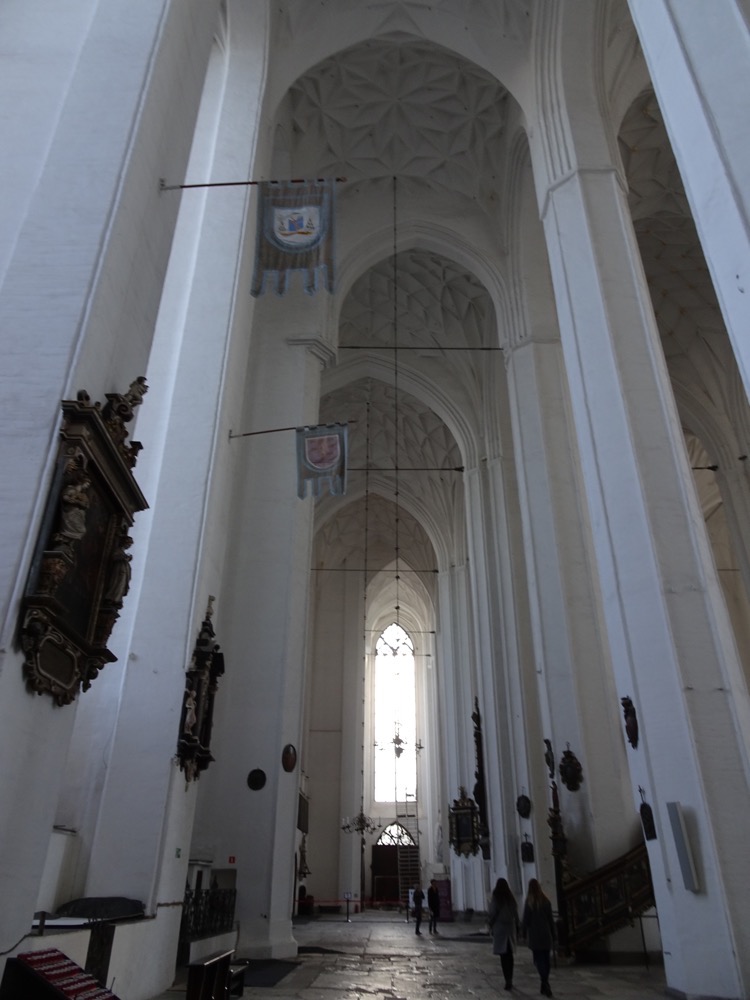 There are so many different donation boxes in this church – all different sizes, and marked to all different causes/saints/purposes.
There are so many different donation boxes in this church – all different sizes, and marked to all different causes/saints/purposes.
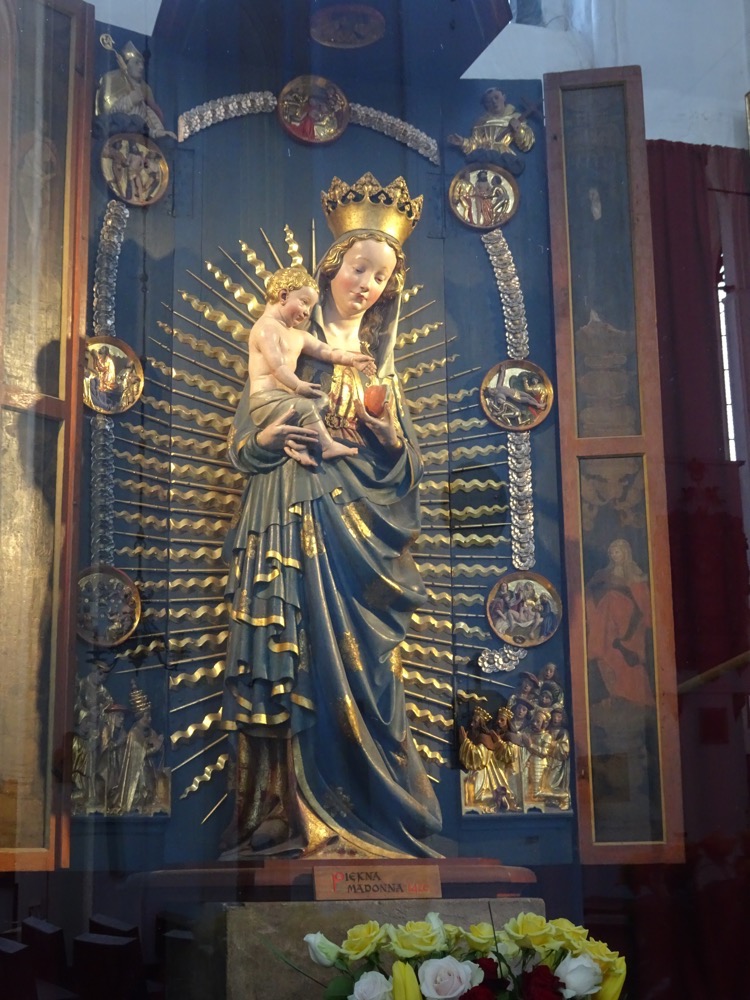 Embroidered banner: ‘God, Honour and Homeland’. No idea what period, but I want to say, late 19th or 20th centuries, just because this place isn’t climate controlled and the goldwork isn’t that tarnished.
Embroidered banner: ‘God, Honour and Homeland’. No idea what period, but I want to say, late 19th or 20th centuries, just because this place isn’t climate controlled and the goldwork isn’t that tarnished.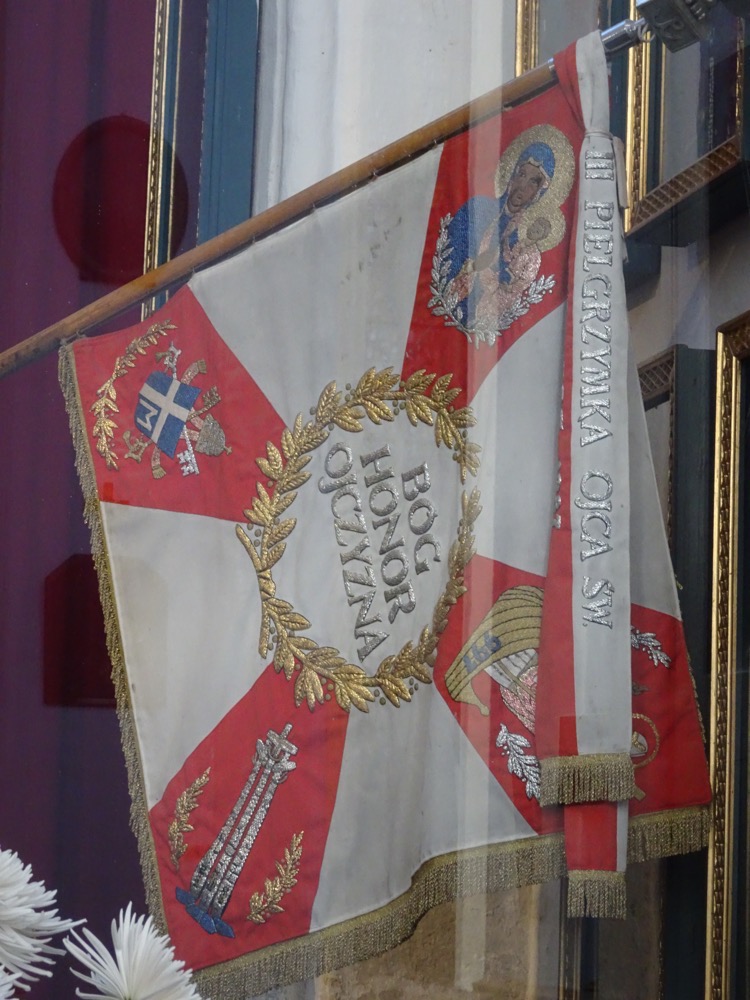
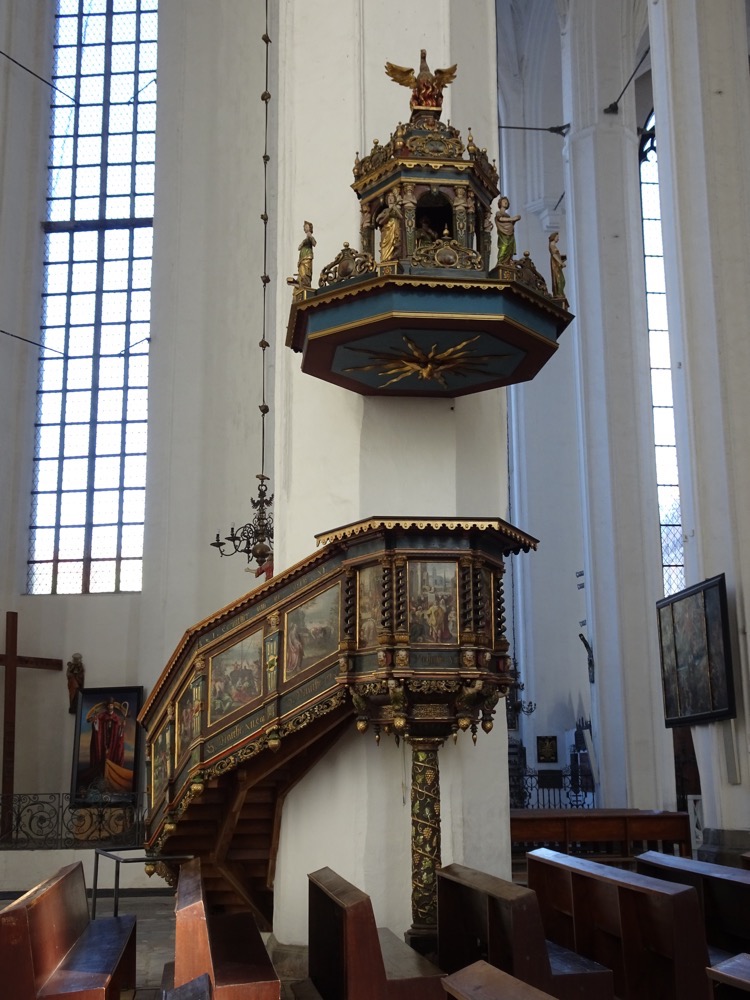
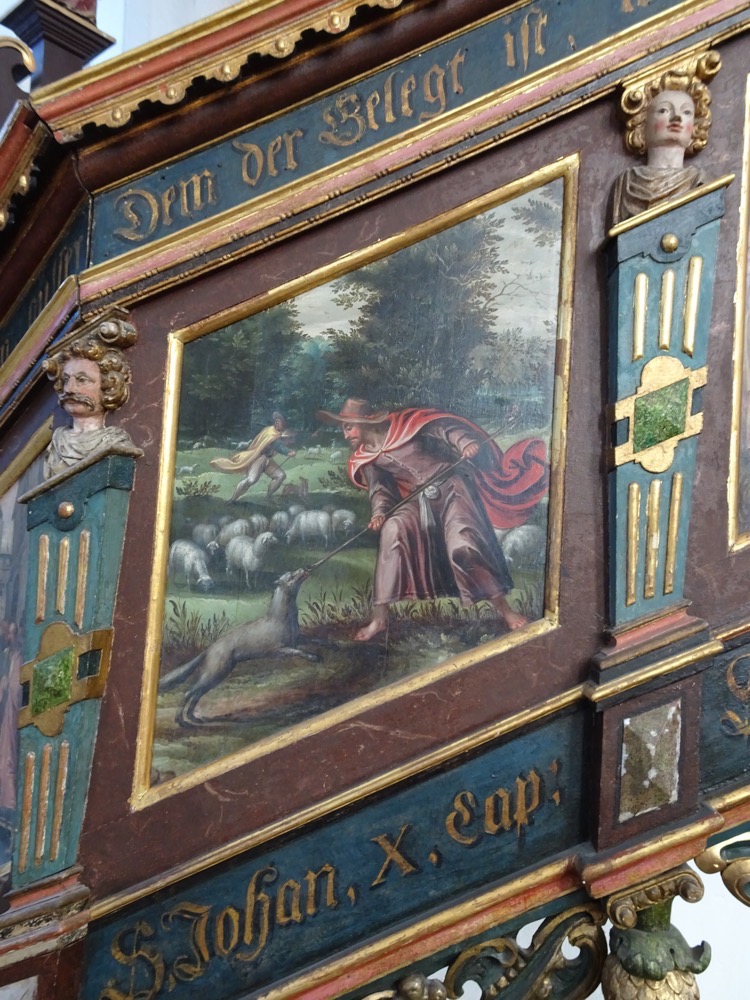
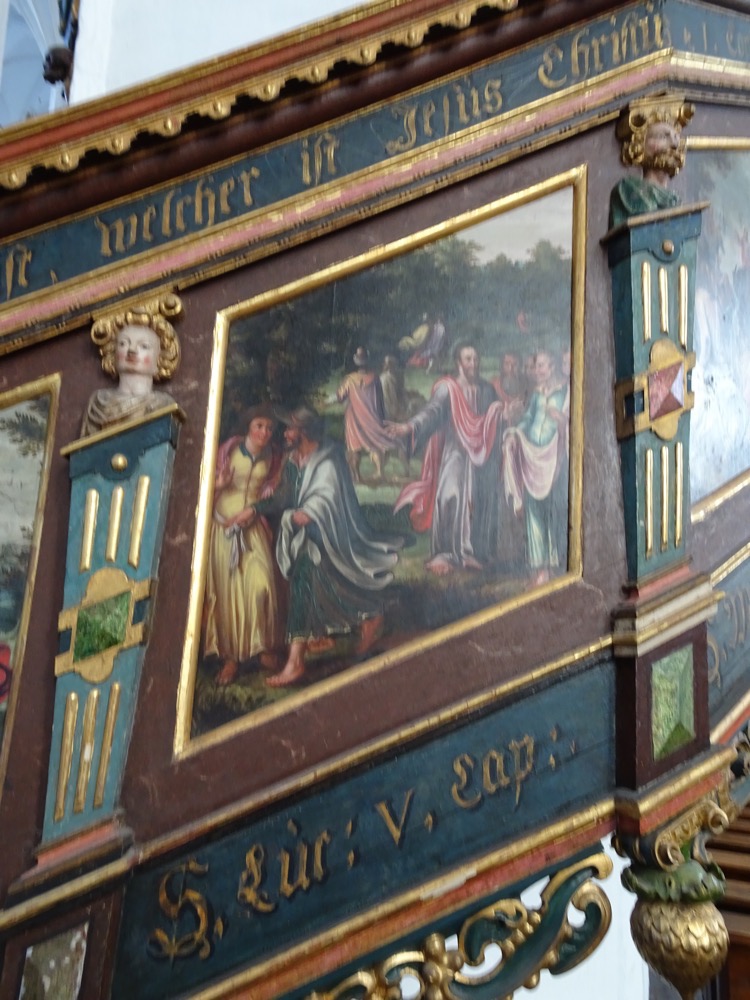
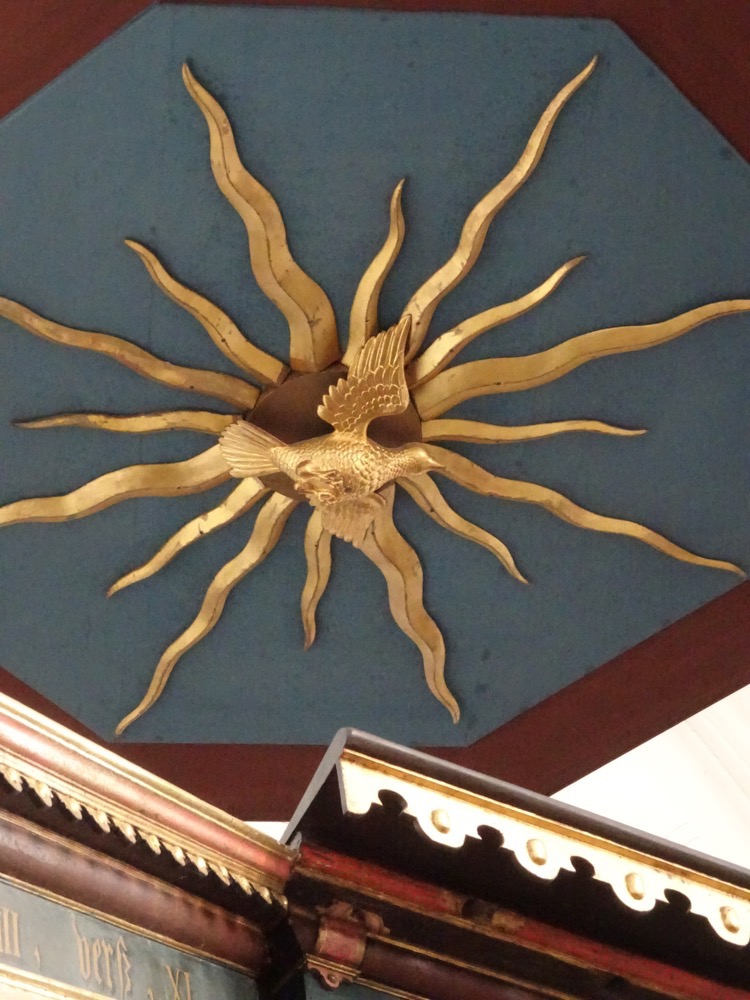
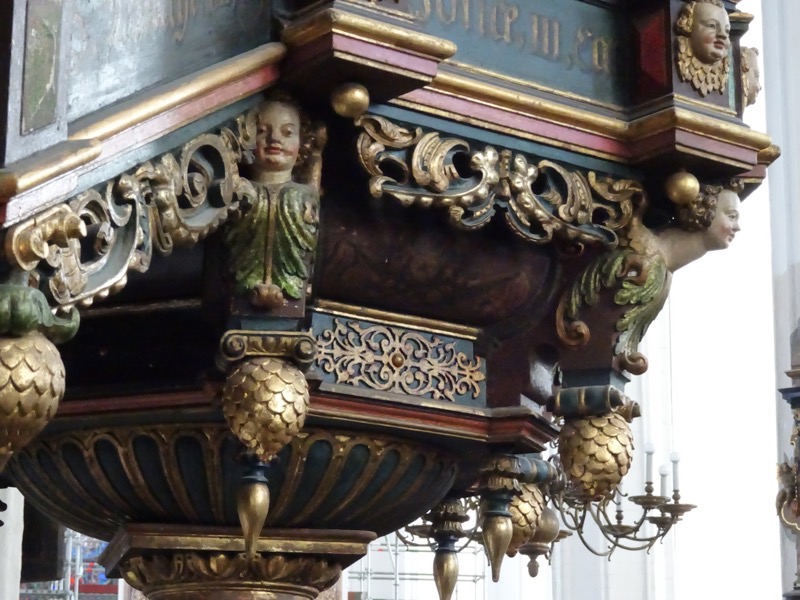
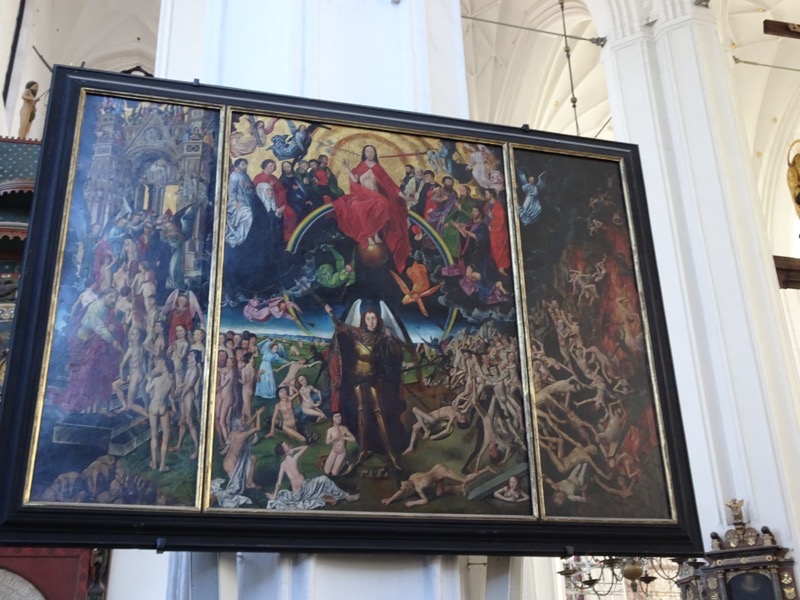 The central panel shows Jesus sitting in judgment, while St Michael is weighing souls and sending the damned to Hell, while the saved are being guided to heaven by St Peter and angels.
The central panel shows Jesus sitting in judgment, while St Michael is weighing souls and sending the damned to Hell, while the saved are being guided to heaven by St Peter and angels.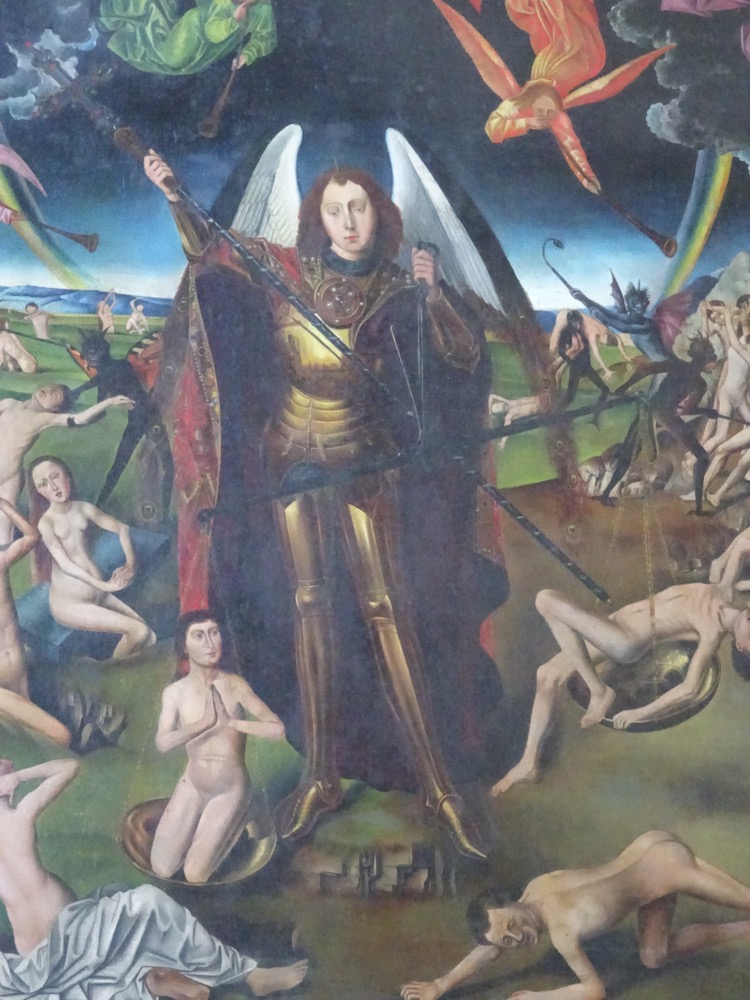
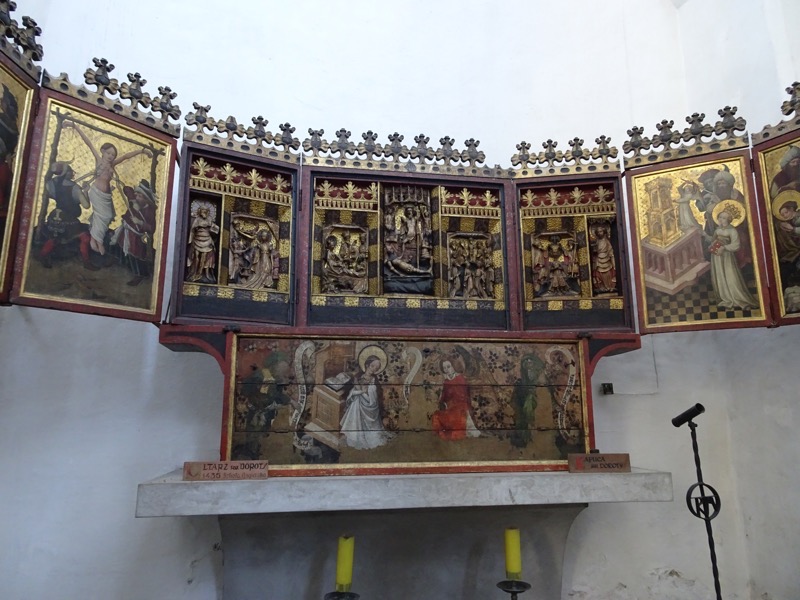
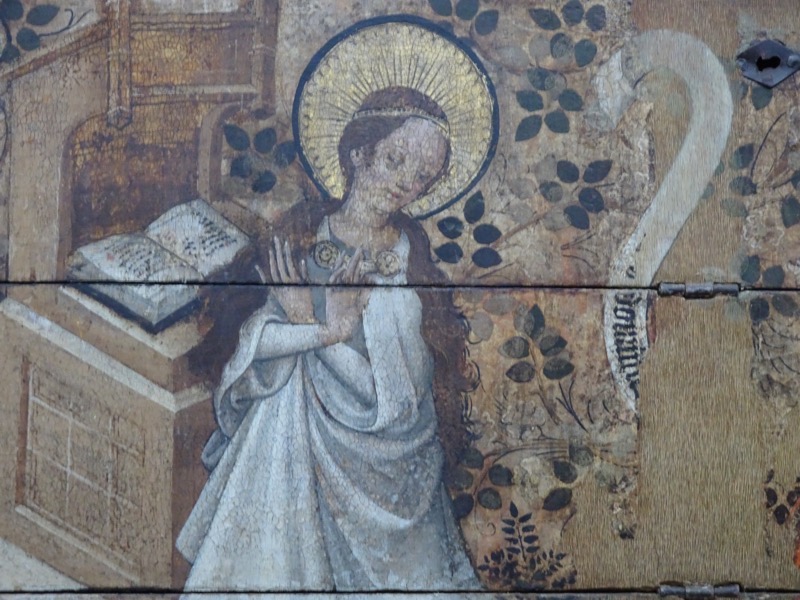 but here is your little bit o’ medieval weirdness for the day:
but here is your little bit o’ medieval weirdness for the day: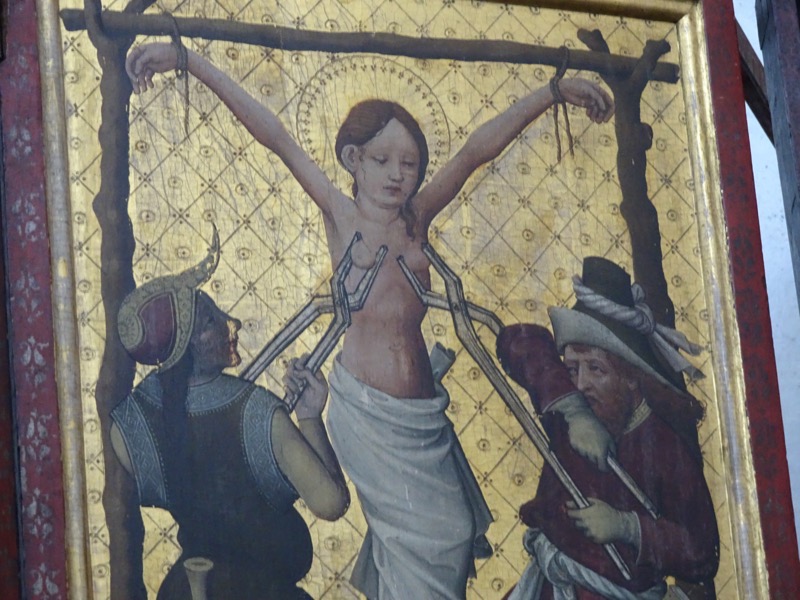 This rather incongruous memorial was to remember the 96 victims of a plane crash in Smolensk on 10th April 2011. Lech Kaczyński, the fourth President of the Republic of Poland, was on the Polish Air Force Tu-154 when it crashed outside of Smolensk, as was his wife, First Lady and Economic Minister for Poland at the time.
This rather incongruous memorial was to remember the 96 victims of a plane crash in Smolensk on 10th April 2011. Lech Kaczyński, the fourth President of the Republic of Poland, was on the Polish Air Force Tu-154 when it crashed outside of Smolensk, as was his wife, First Lady and Economic Minister for Poland at the time.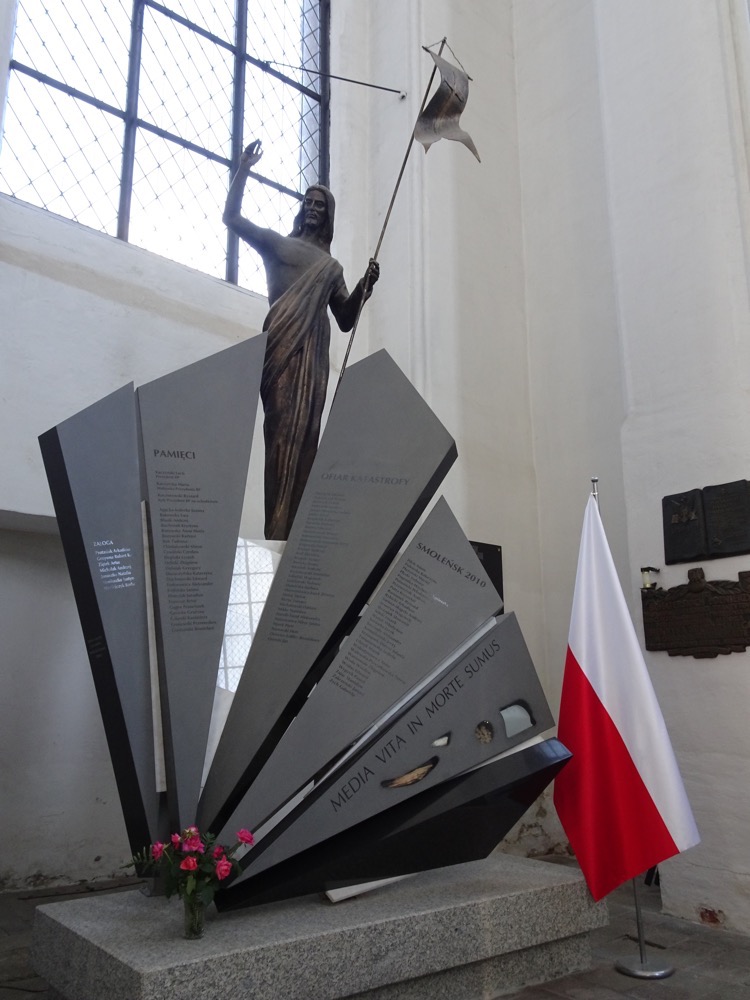 Directly opposite this very modern memorial is an enormous medieval astronomical clock. Standing 14m tall, it is said to have been constructed by Hans Düringer between 1464 and 1470. Like every other monumental medeival astronomical clock, it is said that Düringer had his eyes put out after he made it so he could not make another – which begs the question: why would a medieval master clockmaker accept such a commission if ultimately he was going to be blinded to stop him from replicating his work?! Dunno… urban myths alive and well in the middle ages.
Directly opposite this very modern memorial is an enormous medieval astronomical clock. Standing 14m tall, it is said to have been constructed by Hans Düringer between 1464 and 1470. Like every other monumental medeival astronomical clock, it is said that Düringer had his eyes put out after he made it so he could not make another – which begs the question: why would a medieval master clockmaker accept such a commission if ultimately he was going to be blinded to stop him from replicating his work?! Dunno… urban myths alive and well in the middle ages.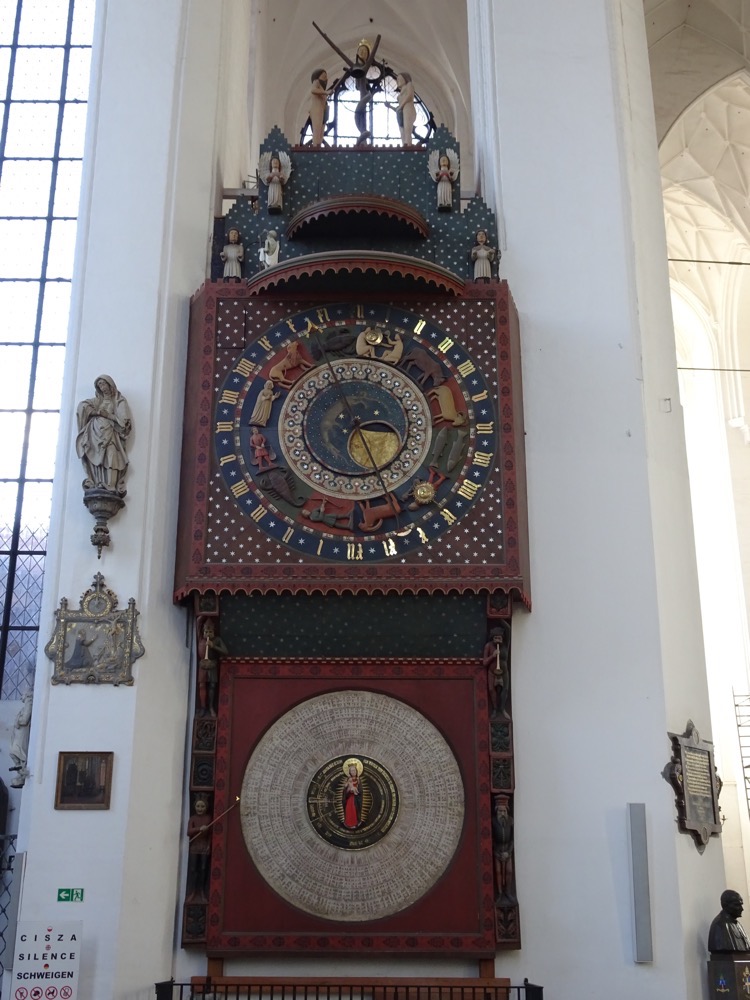 The clock has some pretty complex dials that show time, date, phases of the moon, the position of the moon and sun in relation to the zodiac signs, and the calendar of saints.
The clock has some pretty complex dials that show time, date, phases of the moon, the position of the moon and sun in relation to the zodiac signs, and the calendar of saints. 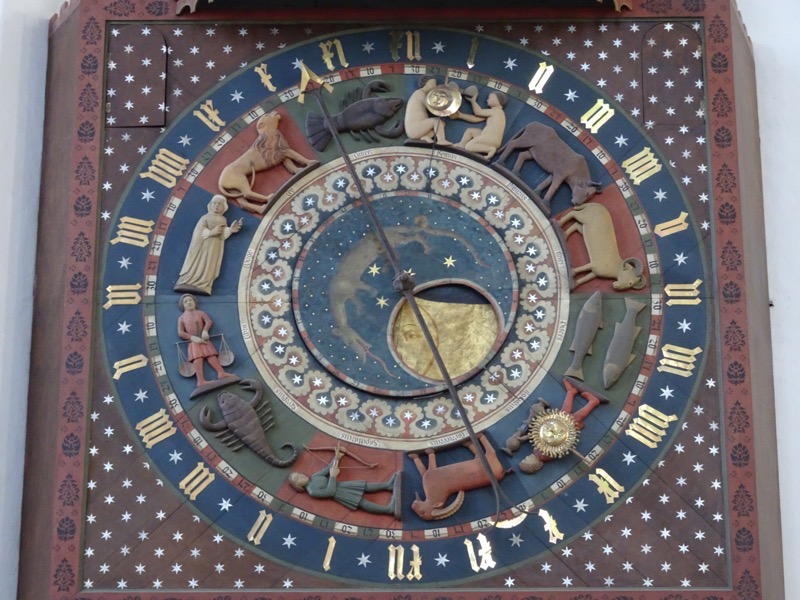
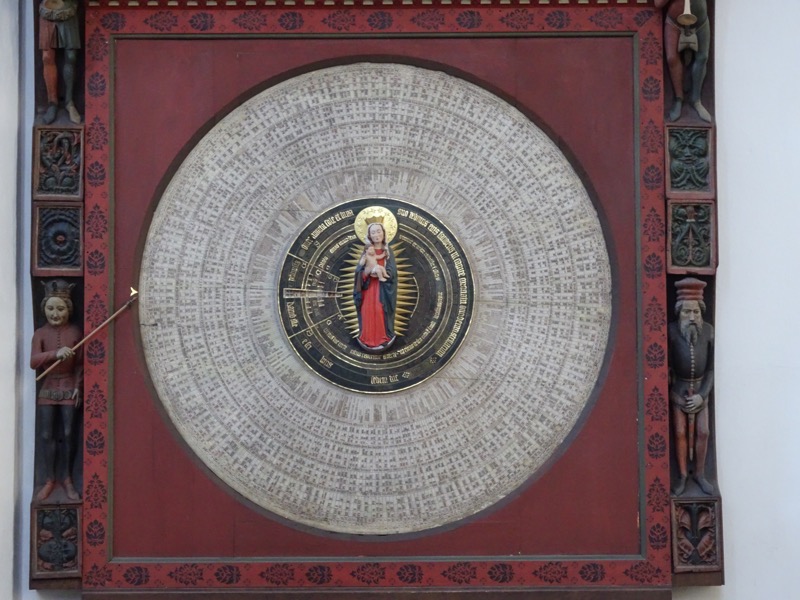
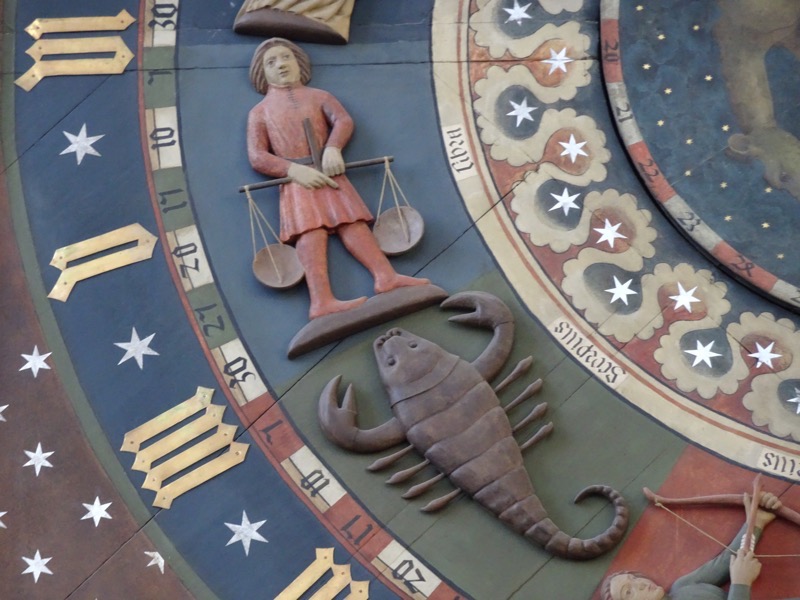
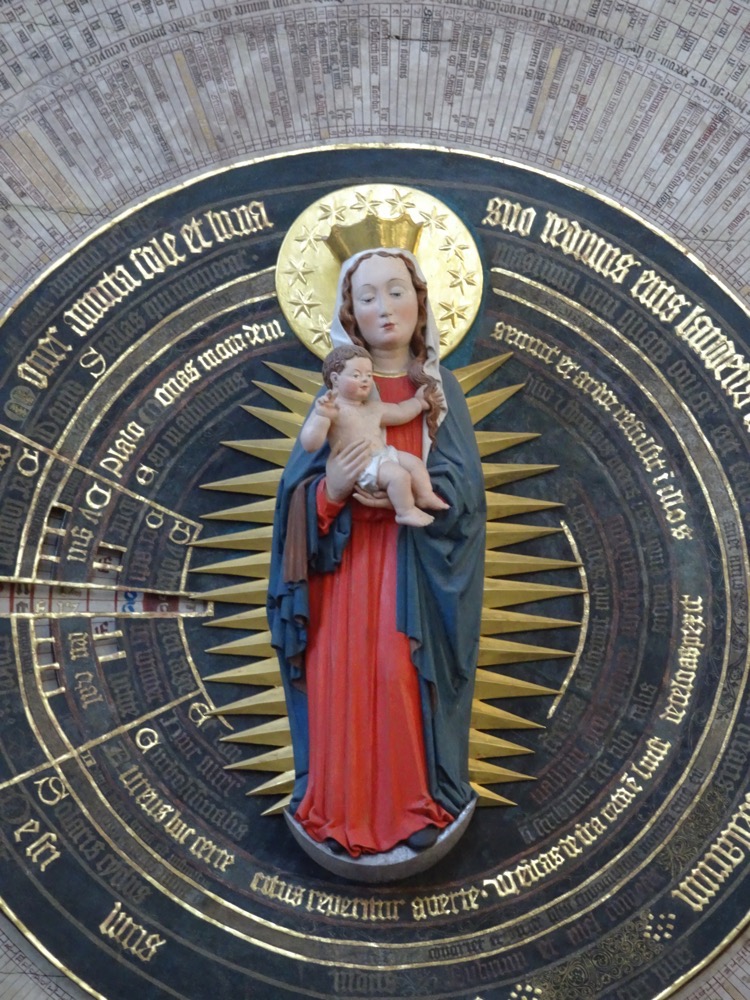 Another unlabelled, anonymous fresco/sculpture.
Another unlabelled, anonymous fresco/sculpture.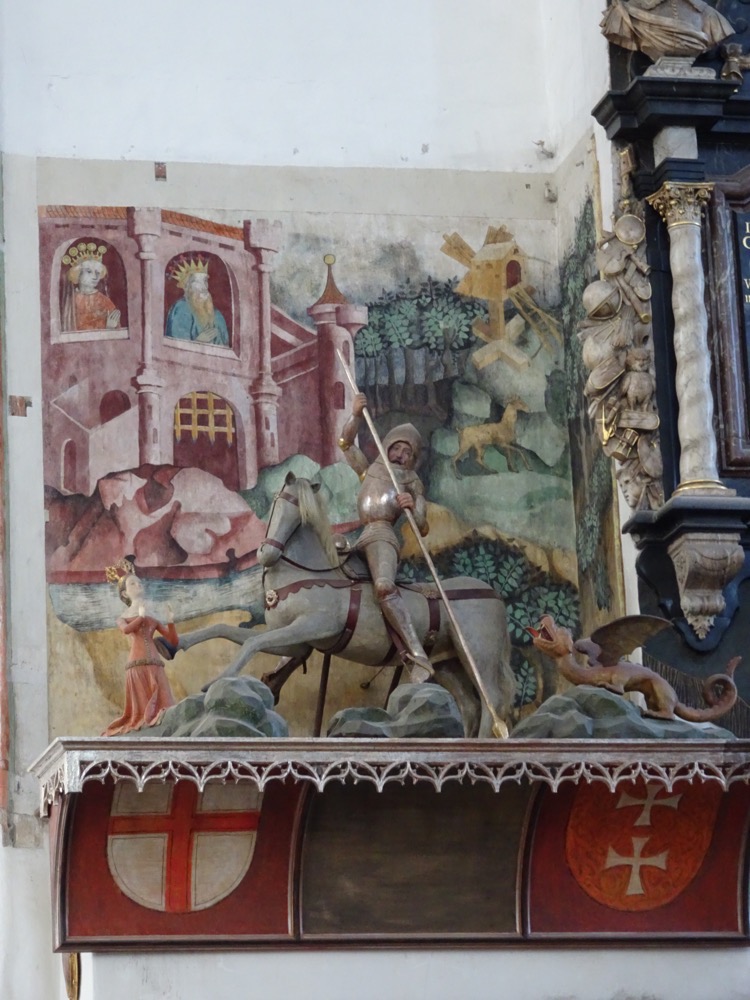
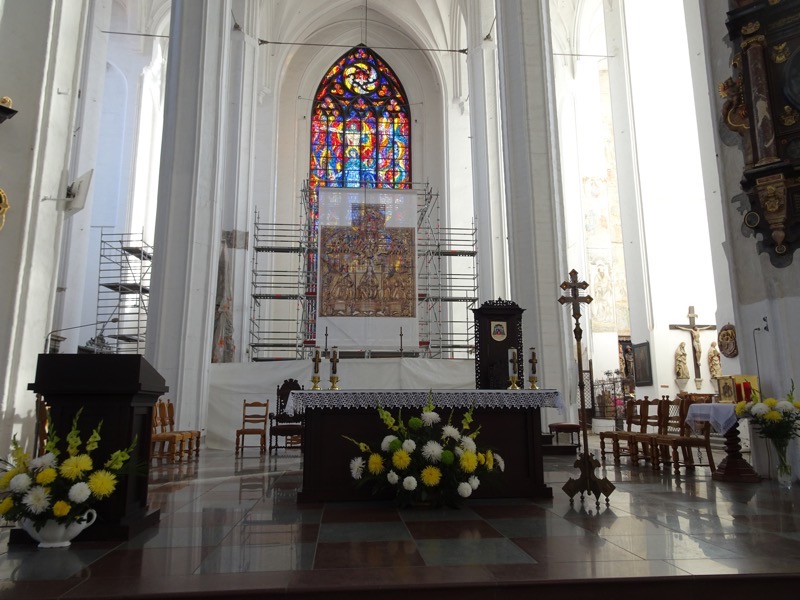 You can see the altar all pulled apart, and restorers were working on it while we were visiting.
You can see the altar all pulled apart, and restorers were working on it while we were visiting.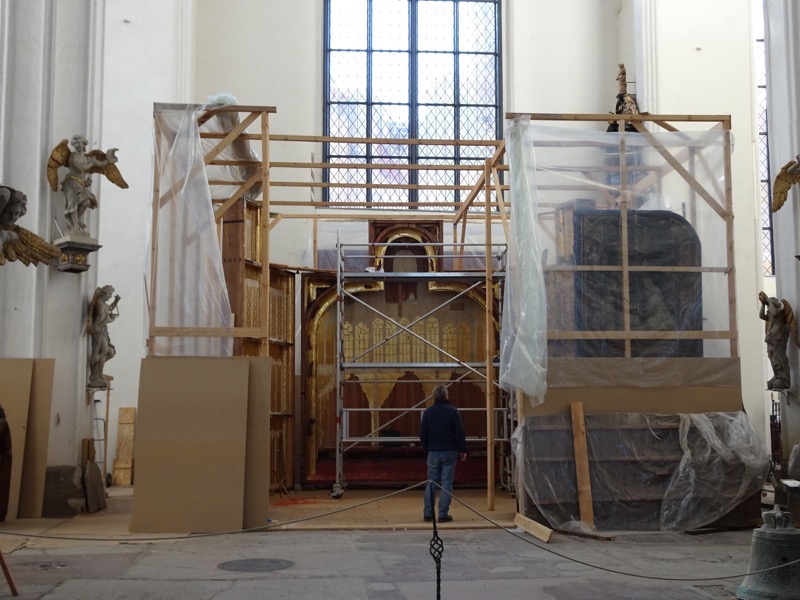
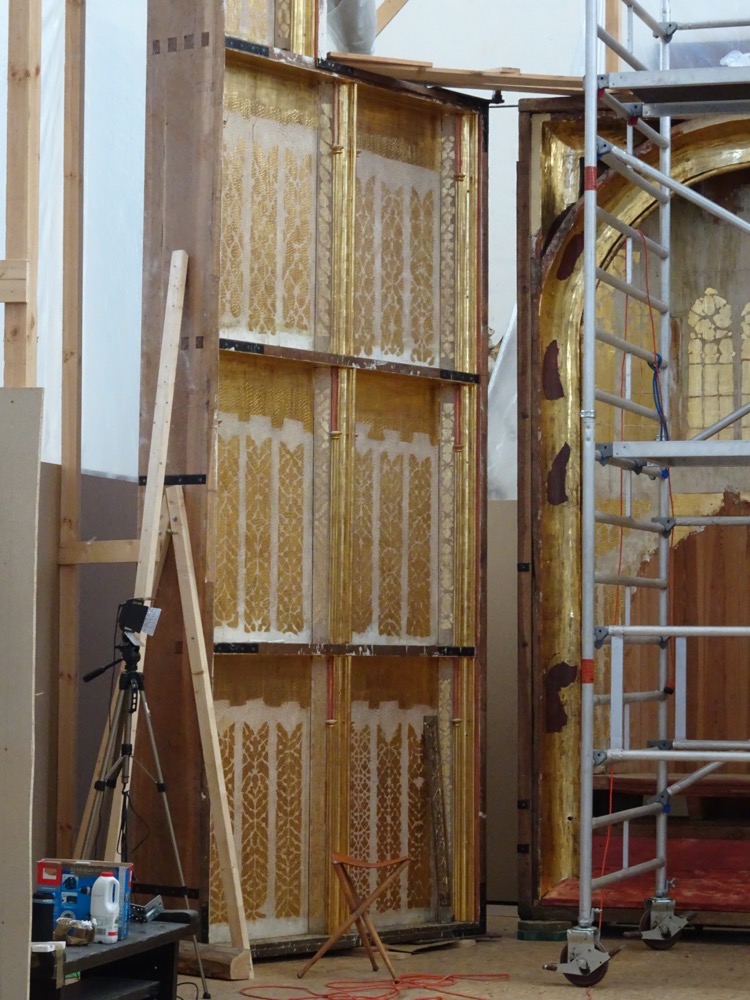
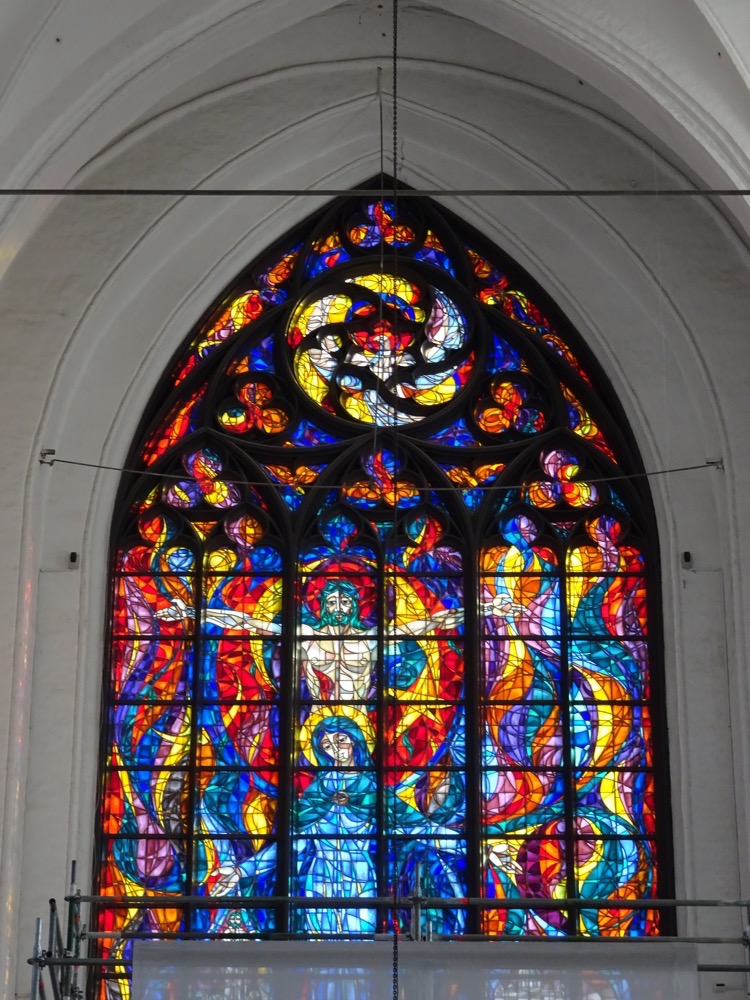 From the altar looking back down the nave – it really is an enromous church.
From the altar looking back down the nave – it really is an enromous church.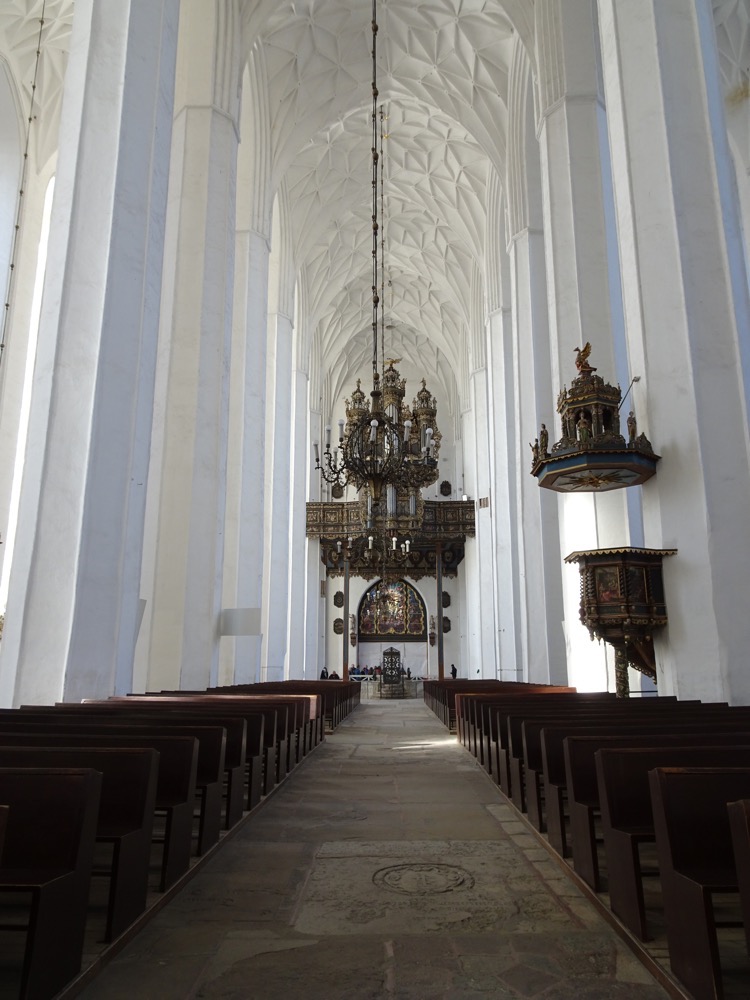 I think this is a representation of the ten commandments from 1485… there is supposed to be a piece here of that nature, though the artist is unknown.
I think this is a representation of the ten commandments from 1485… there is supposed to be a piece here of that nature, though the artist is unknown.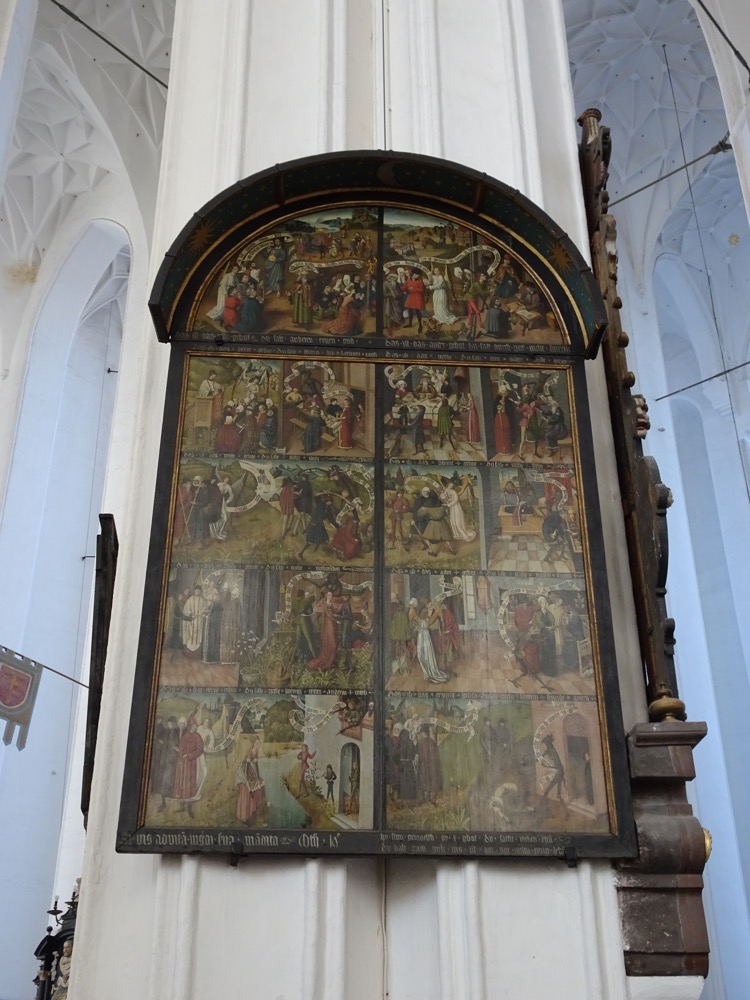
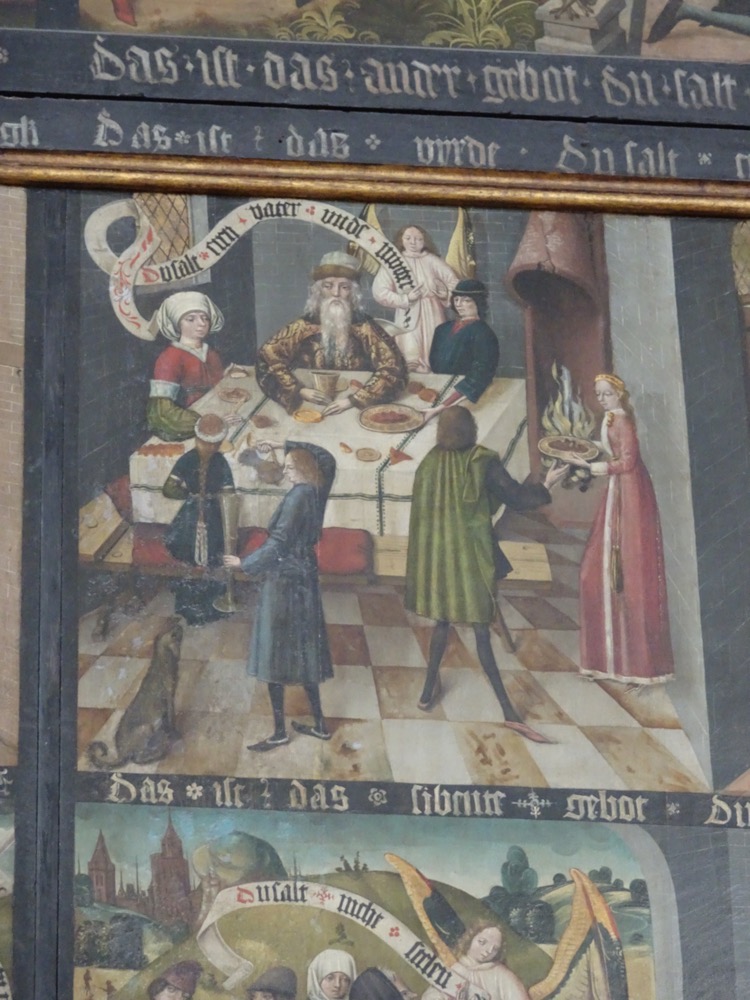
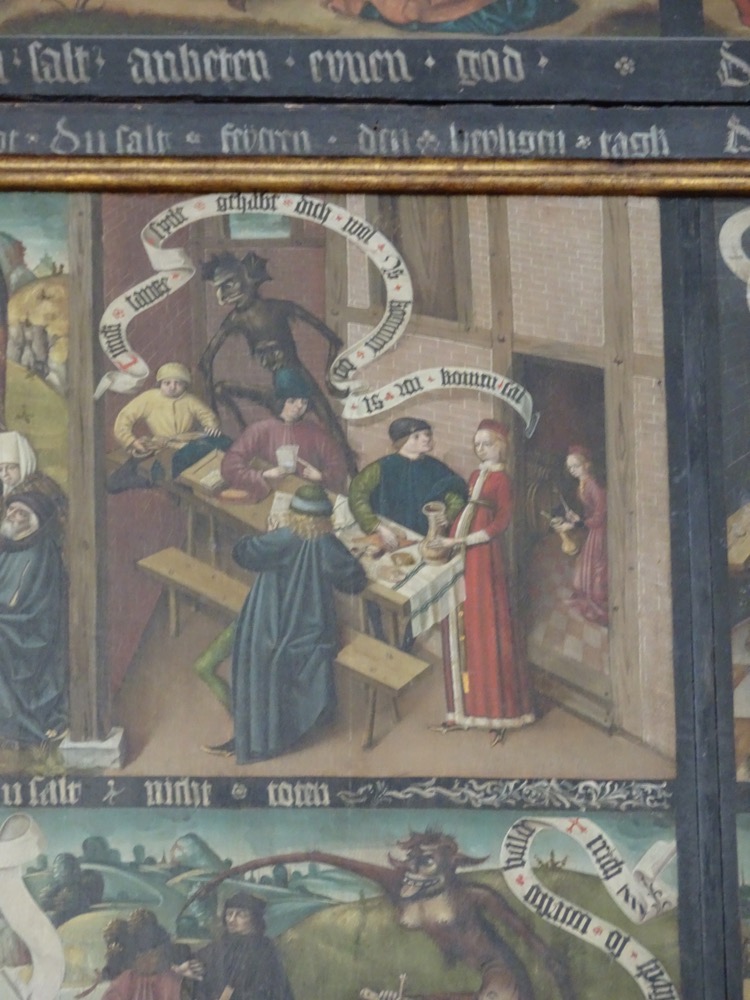
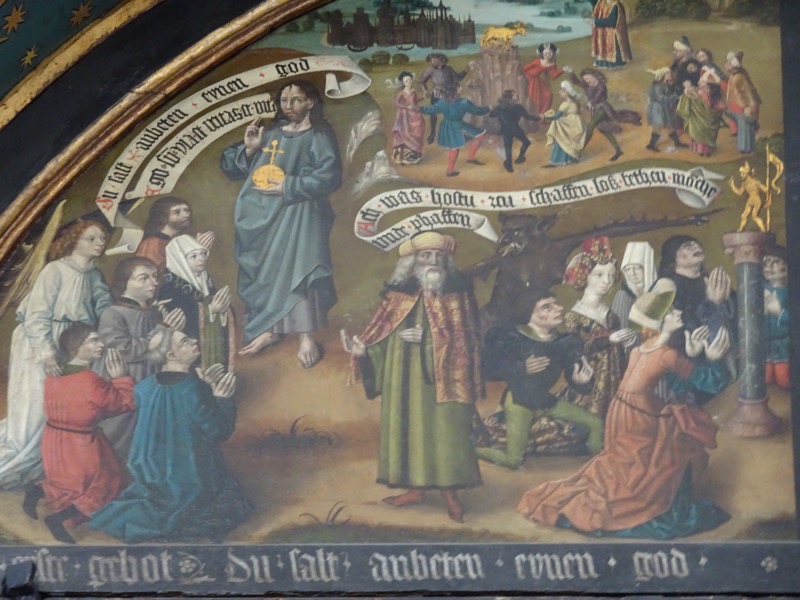 Organ – no real church is complete without one.
Organ – no real church is complete without one.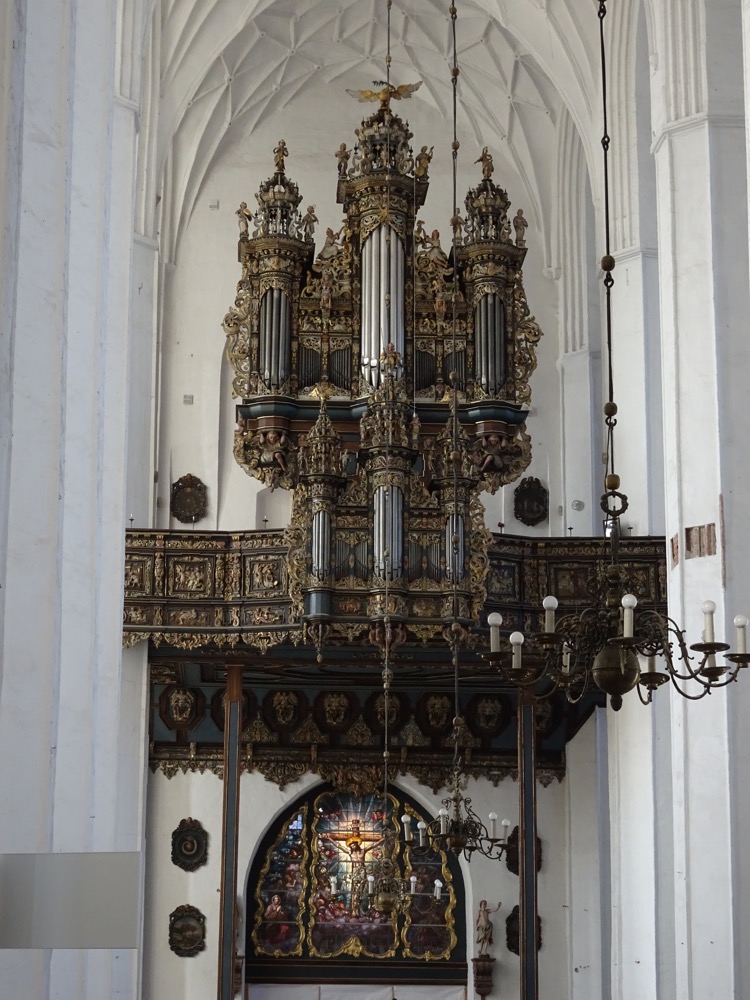
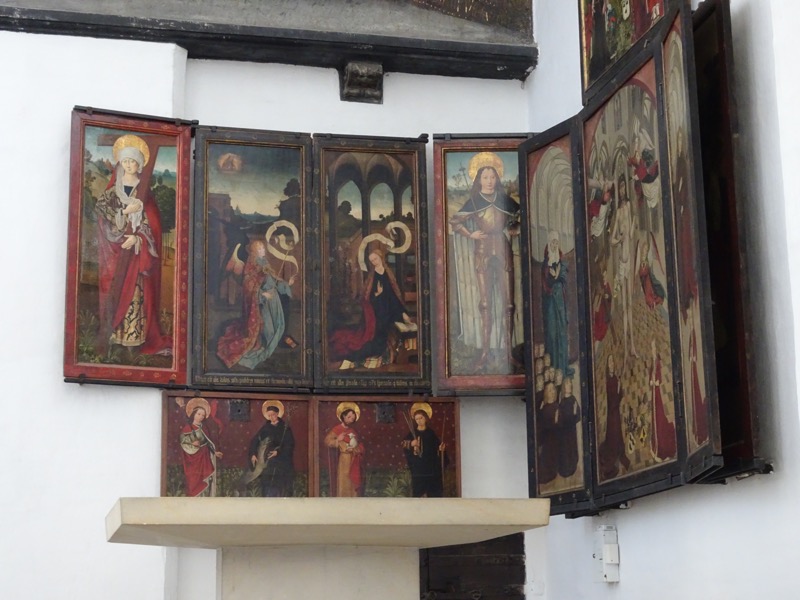 More medieval paintings with no information or attribution
More medieval paintings with no information or attribution 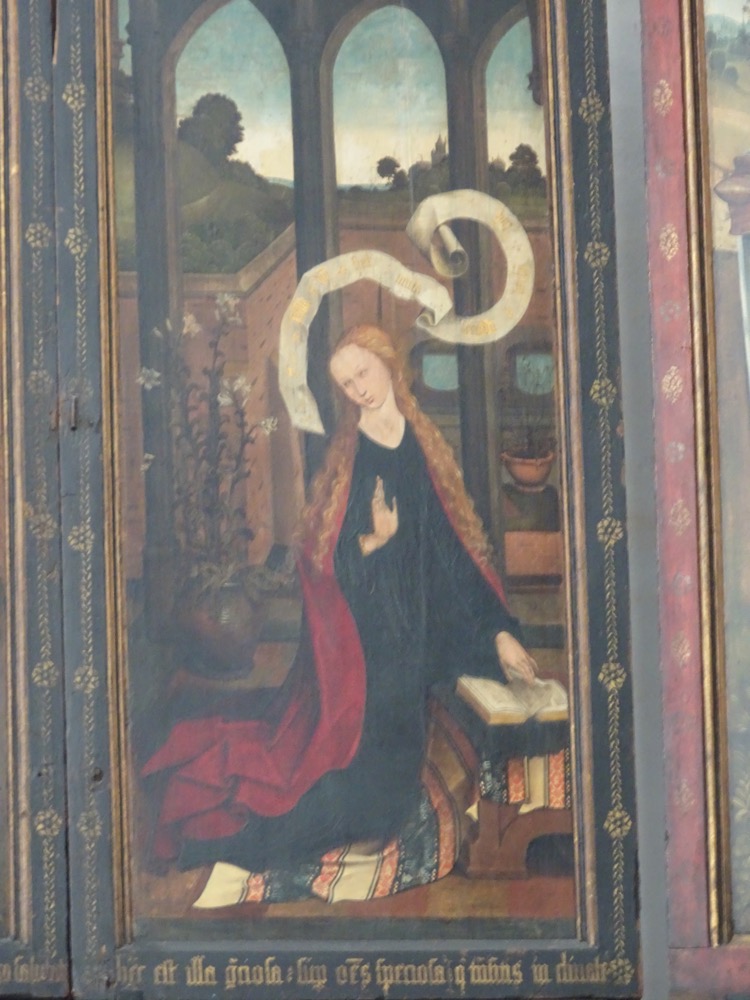
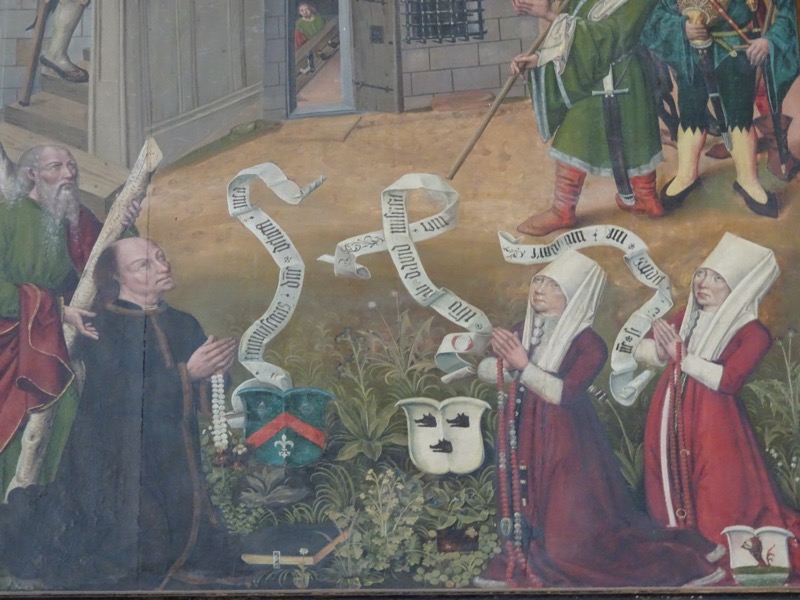 Photographing these paintings in this evironment is worse than in a musuem under glass – the camera just can’t handle the brightness ration from the stark white walls and the glare forming from them on the surface of the canvasses is almost impossible to avoid.
Photographing these paintings in this evironment is worse than in a musuem under glass – the camera just can’t handle the brightness ration from the stark white walls and the glare forming from them on the surface of the canvasses is almost impossible to avoid.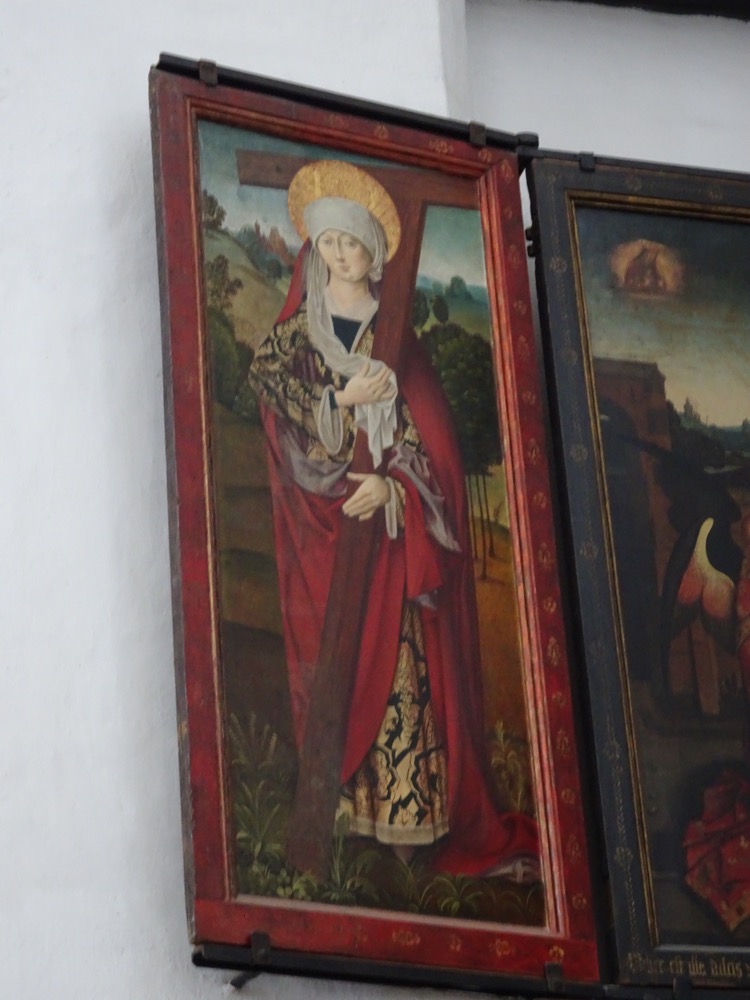
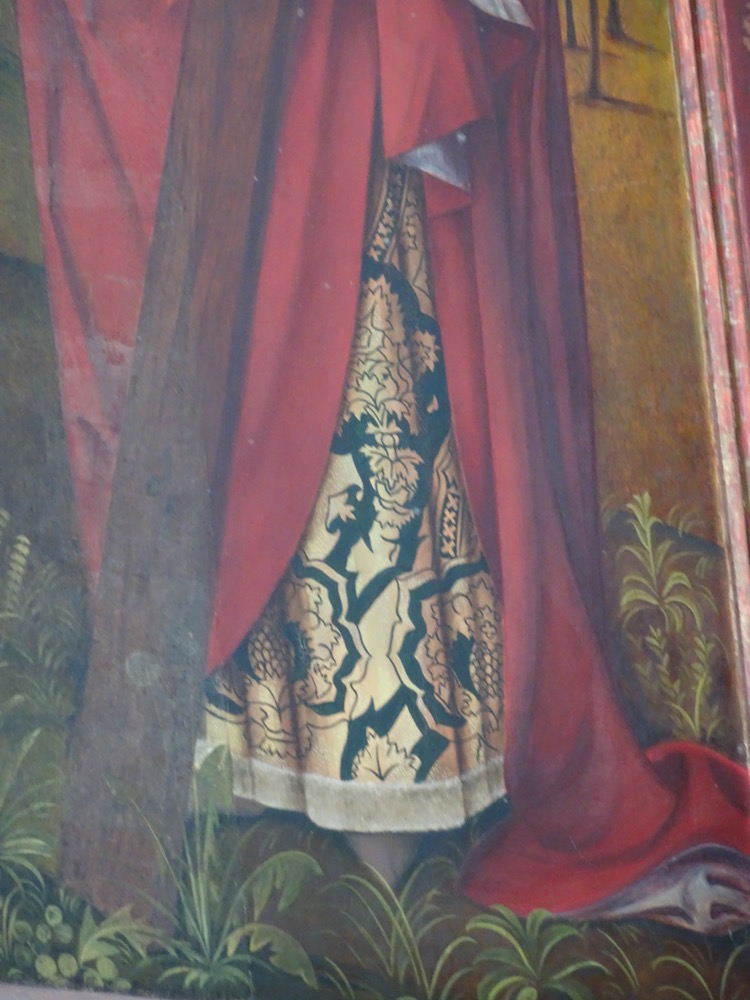

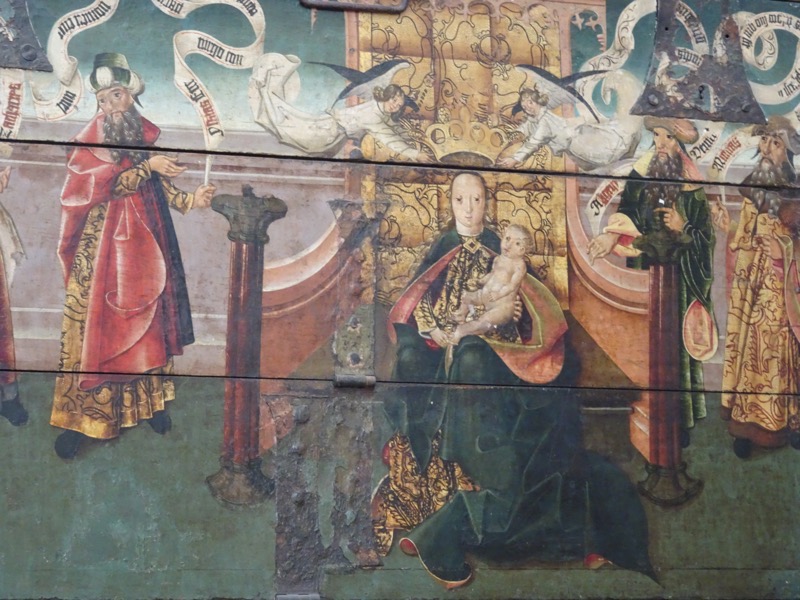
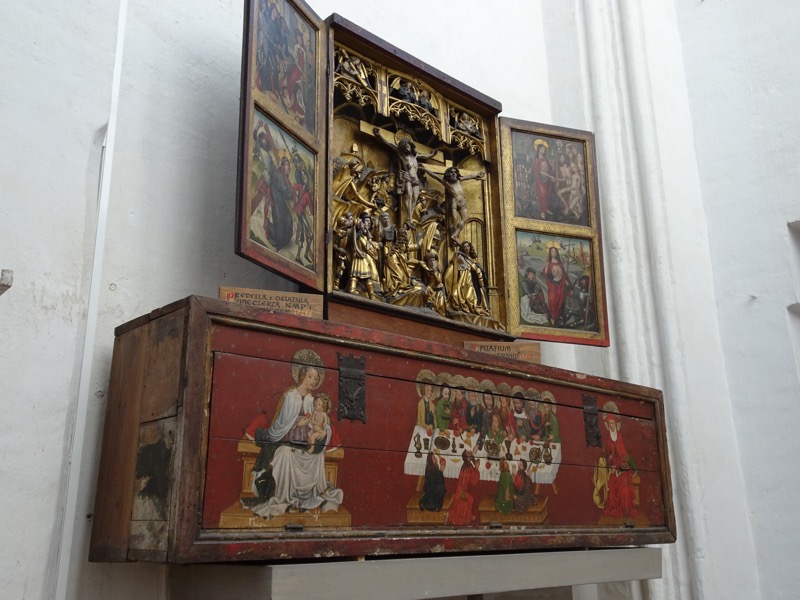
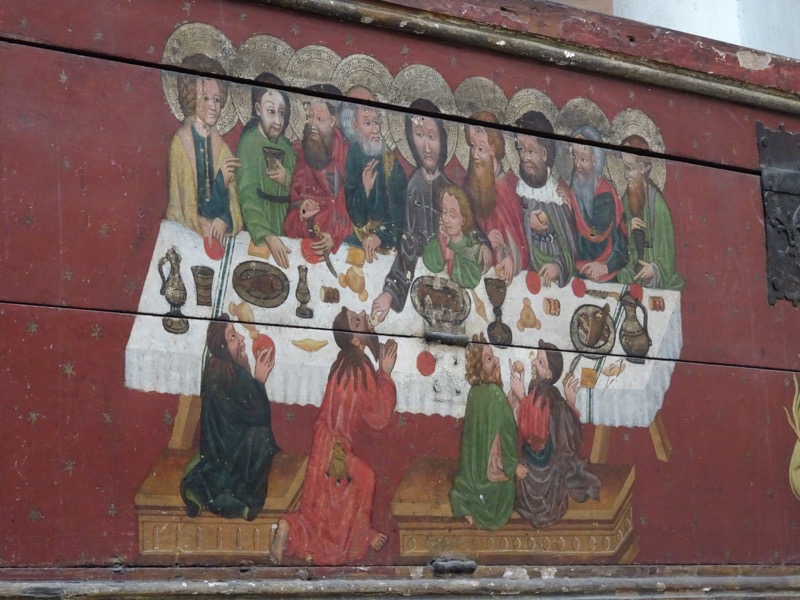
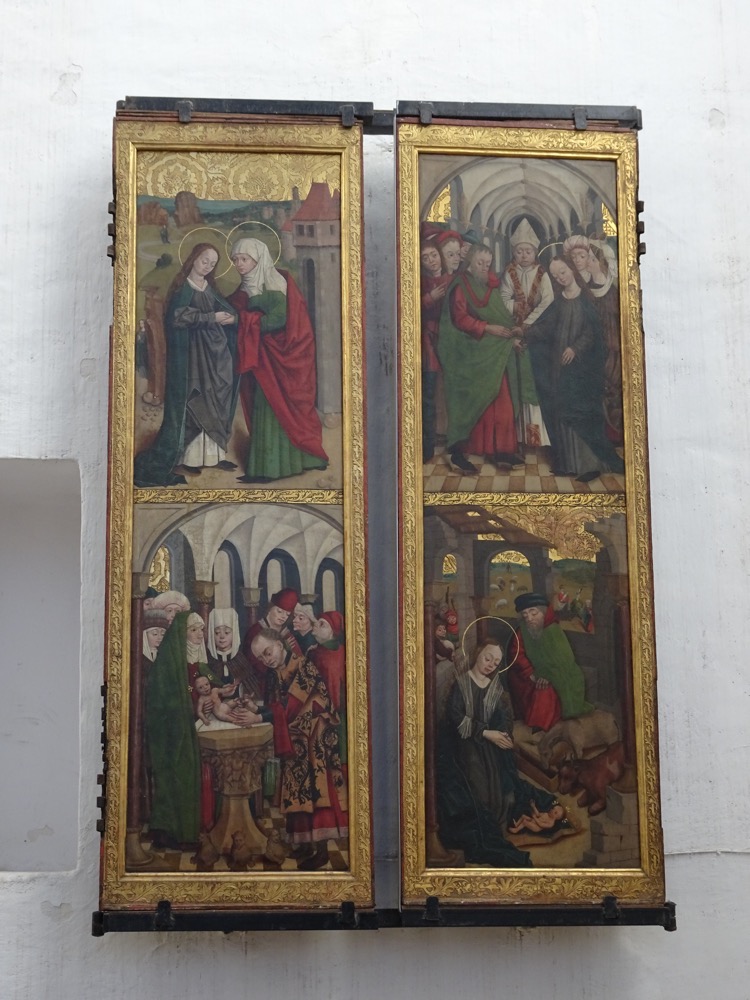
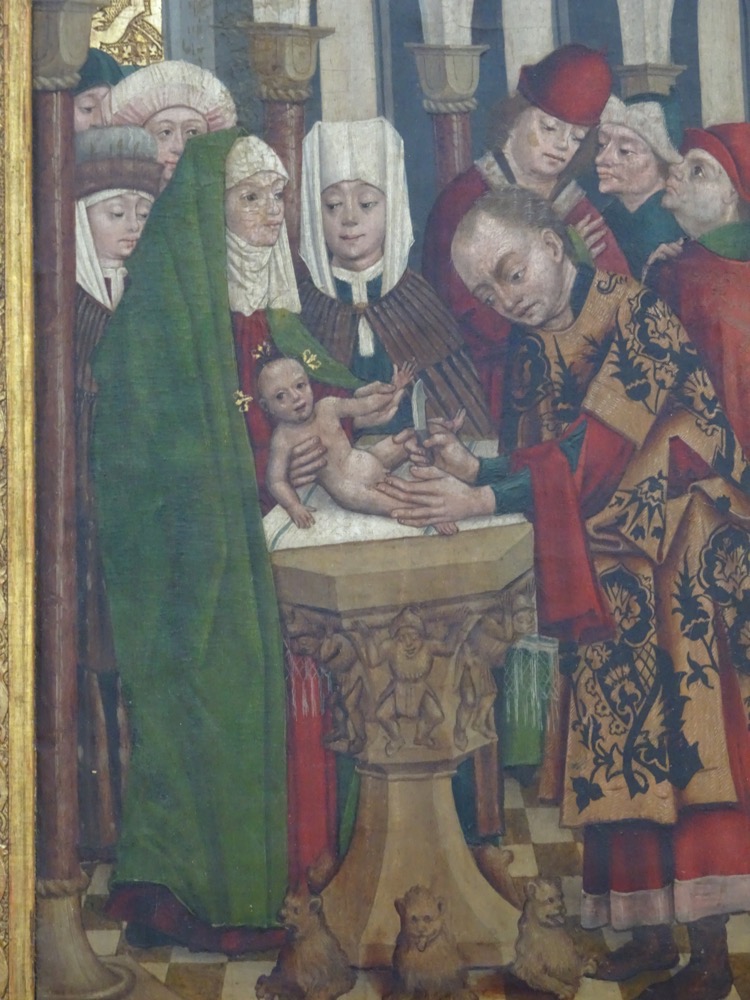
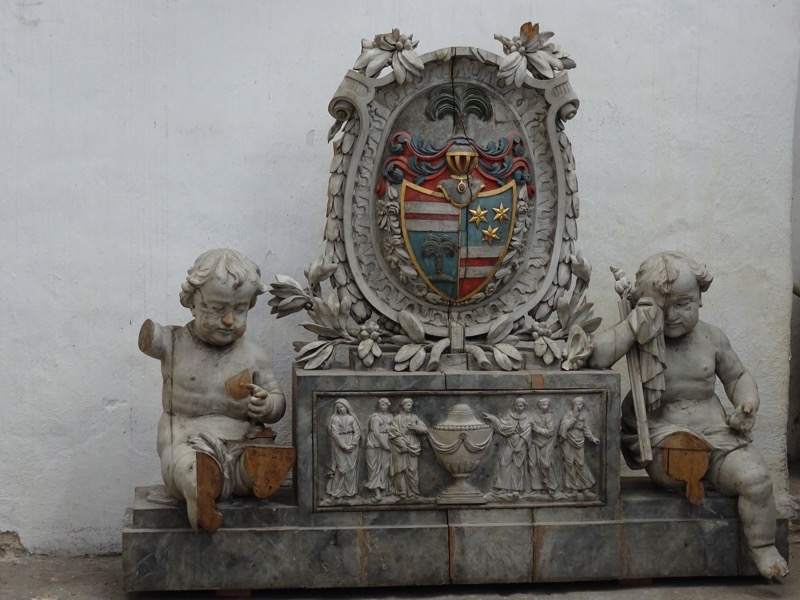 This is me… looking at all these cool paintings and then not being able to find any information on them whatsoever.
This is me… looking at all these cool paintings and then not being able to find any information on them whatsoever.
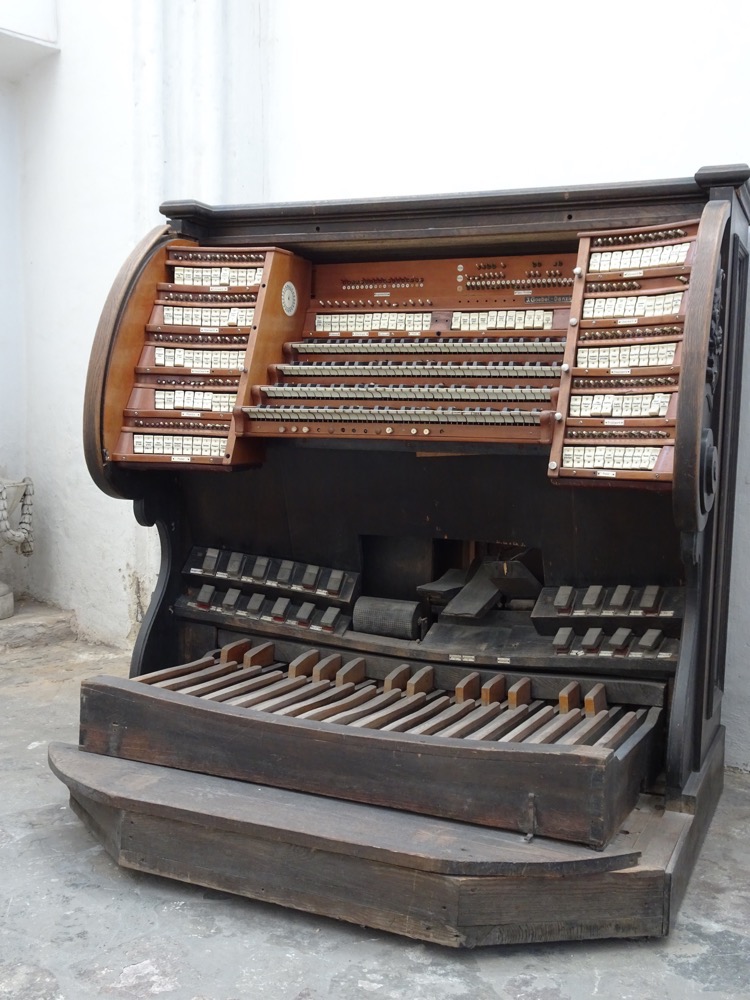
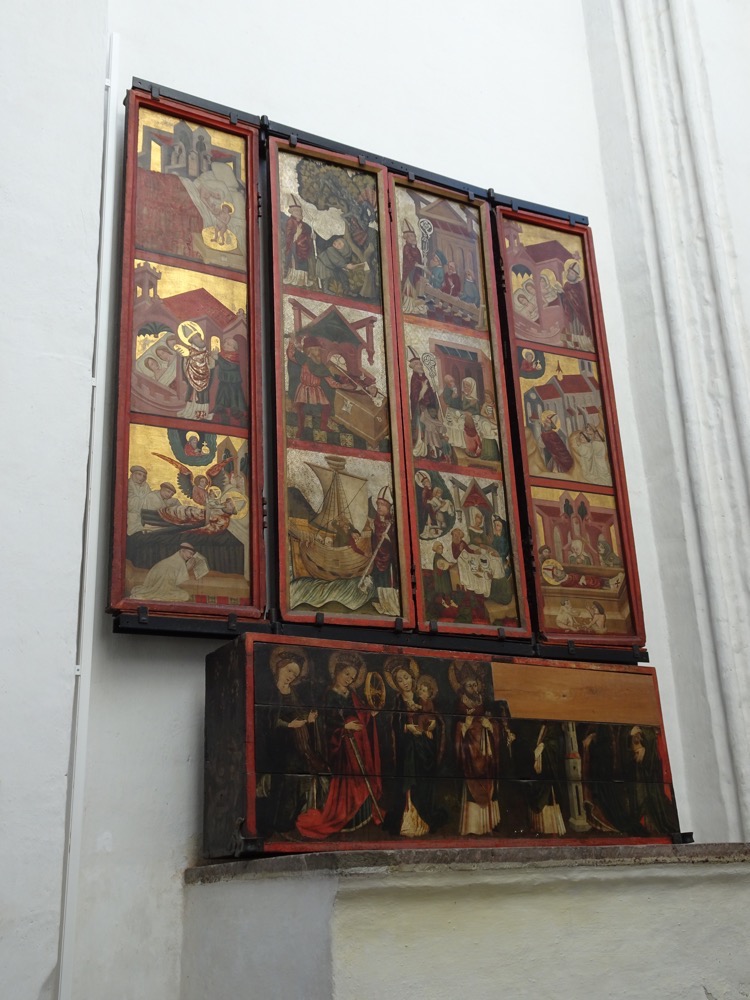
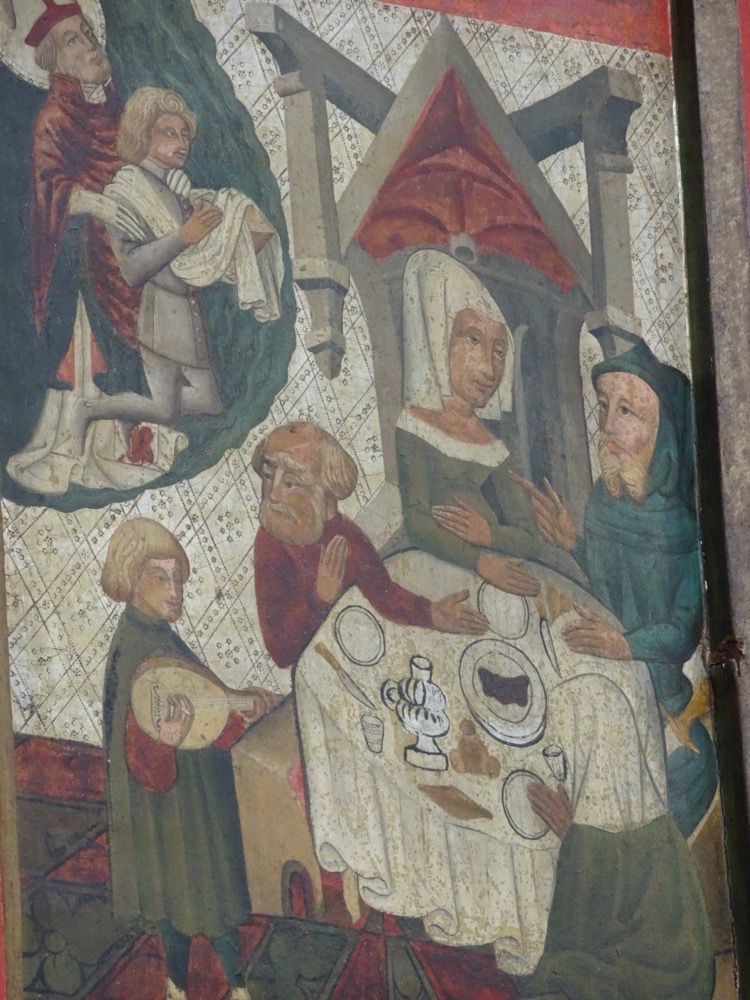
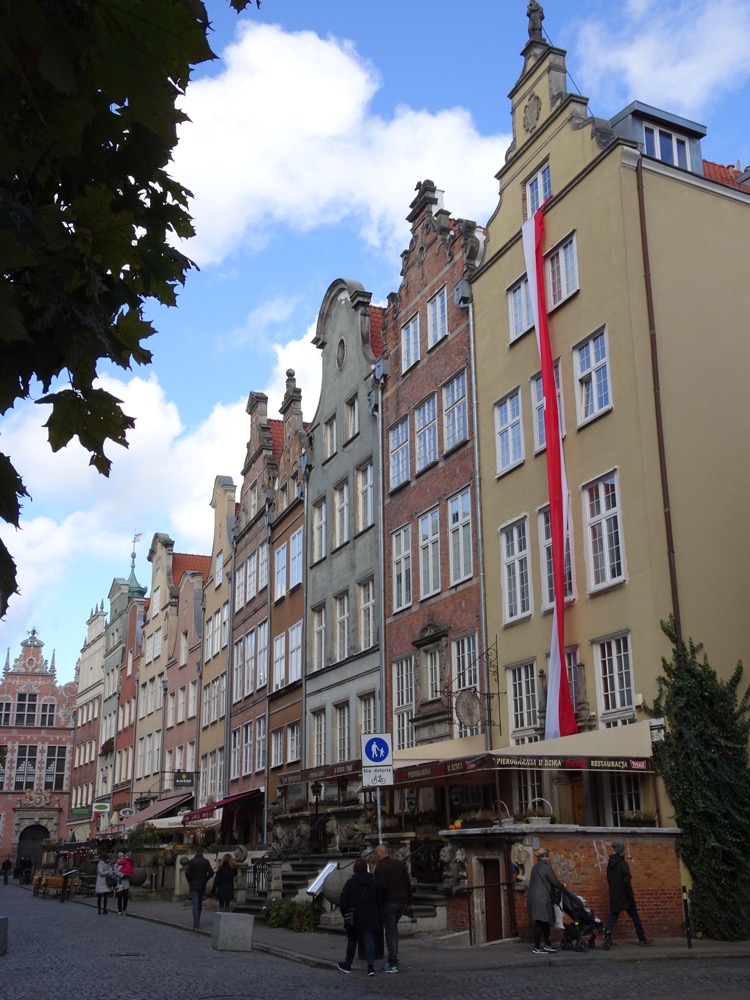
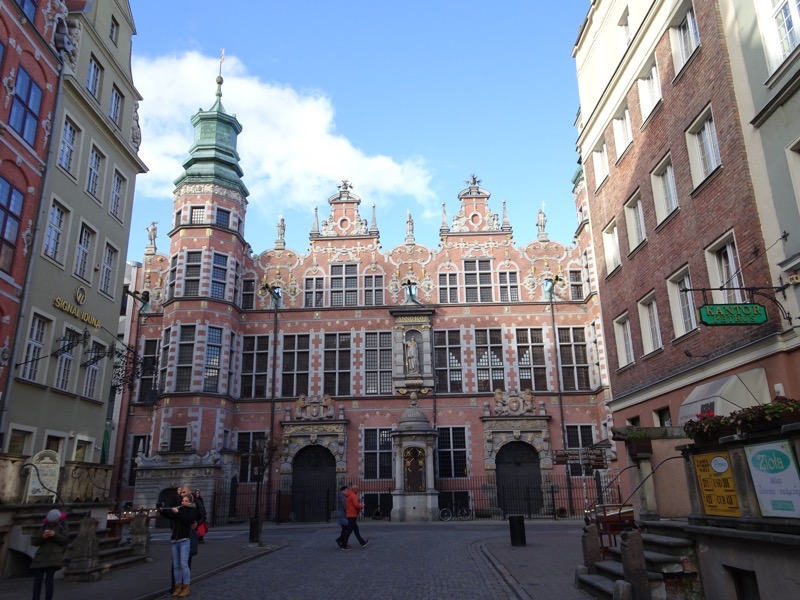
 Directly outside the armoury, the entire street is largely taken over by amber shops and by souvenir shops. You can face in any direction in this town and see amber for sale.
Directly outside the armoury, the entire street is largely taken over by amber shops and by souvenir shops. You can face in any direction in this town and see amber for sale.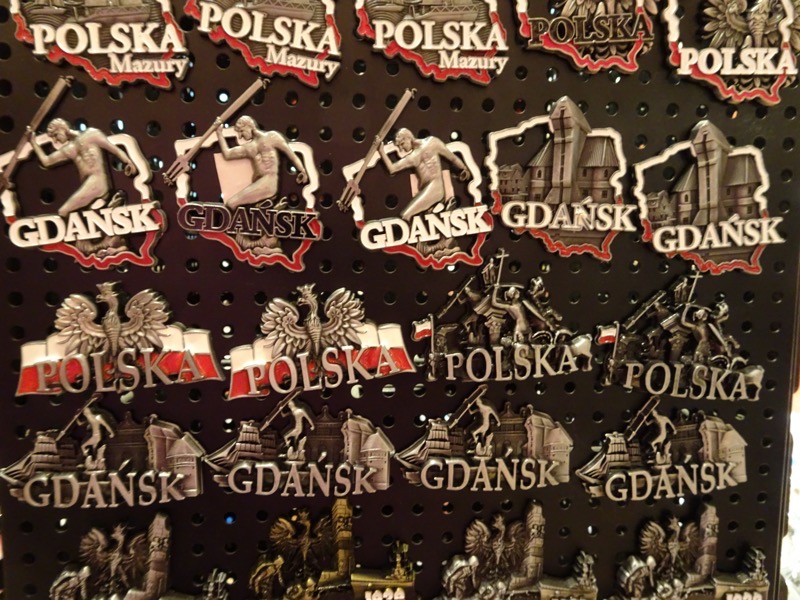
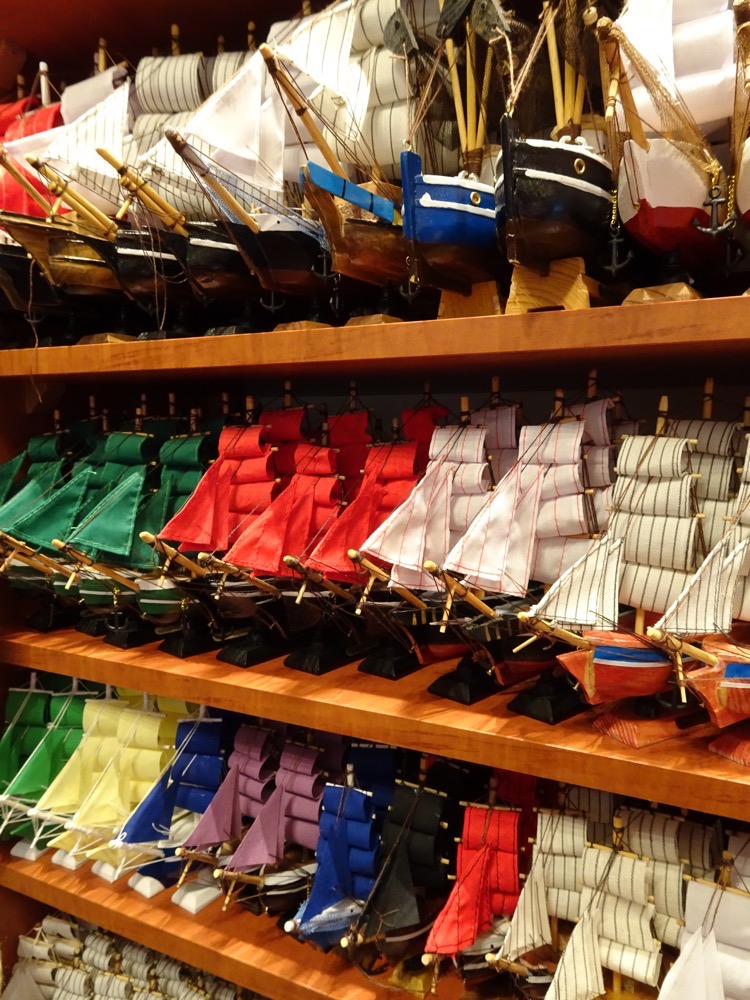
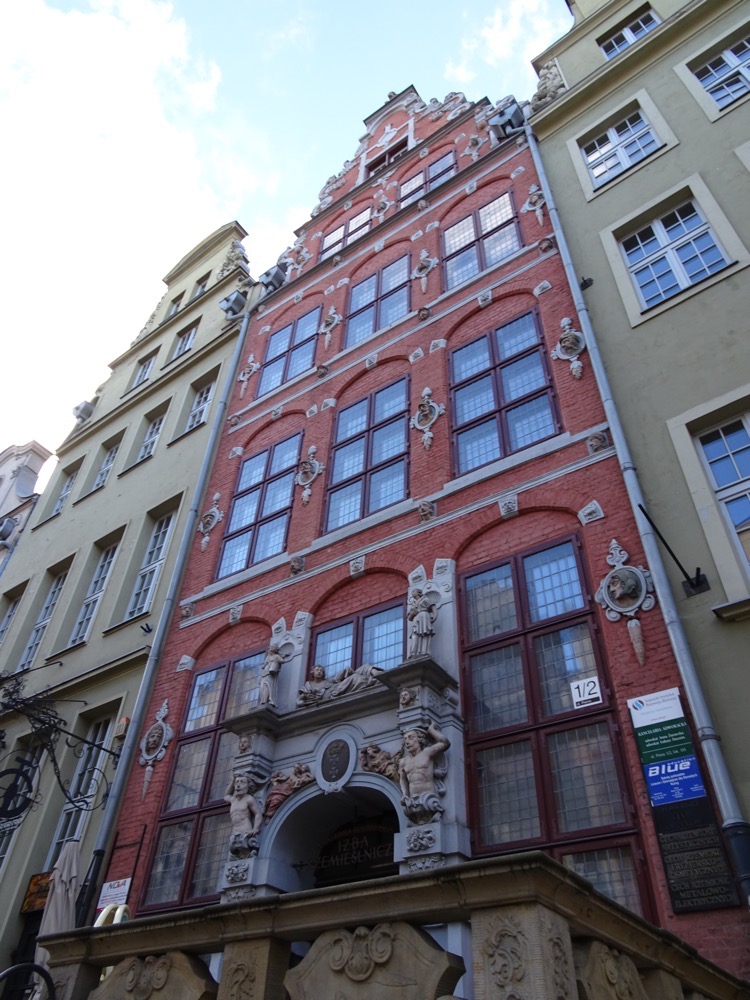
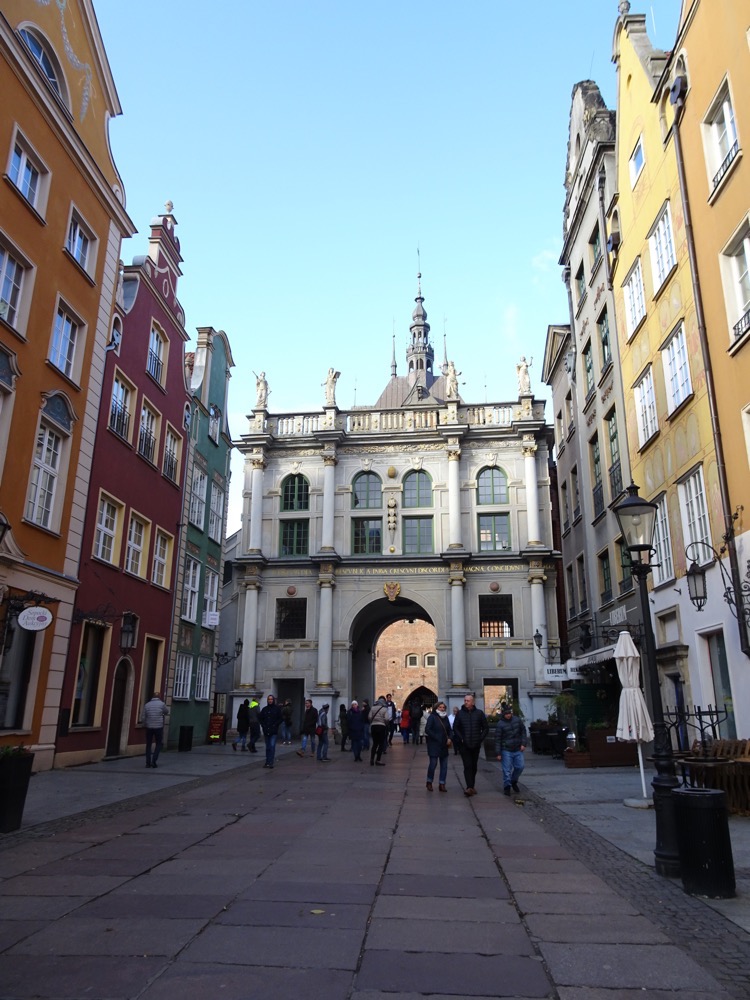
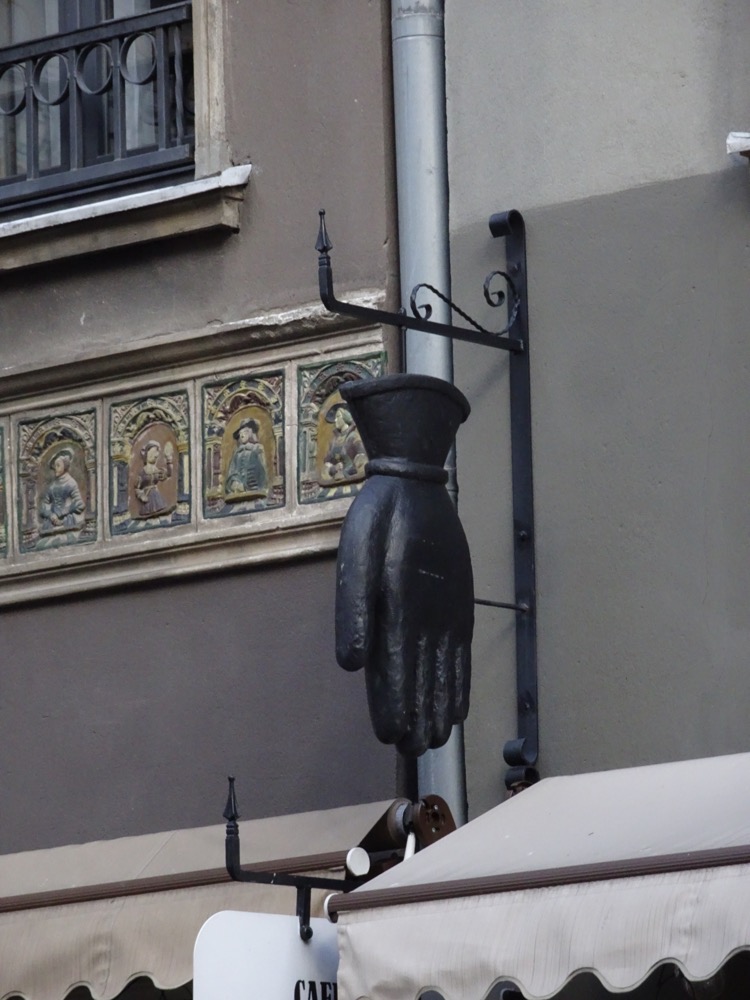 There are just too many very fancy and impressive buildings in the Long Market. I can’t describe them all, but have included many photographs to show how stunning this town is.
There are just too many very fancy and impressive buildings in the Long Market. I can’t describe them all, but have included many photographs to show how stunning this town is.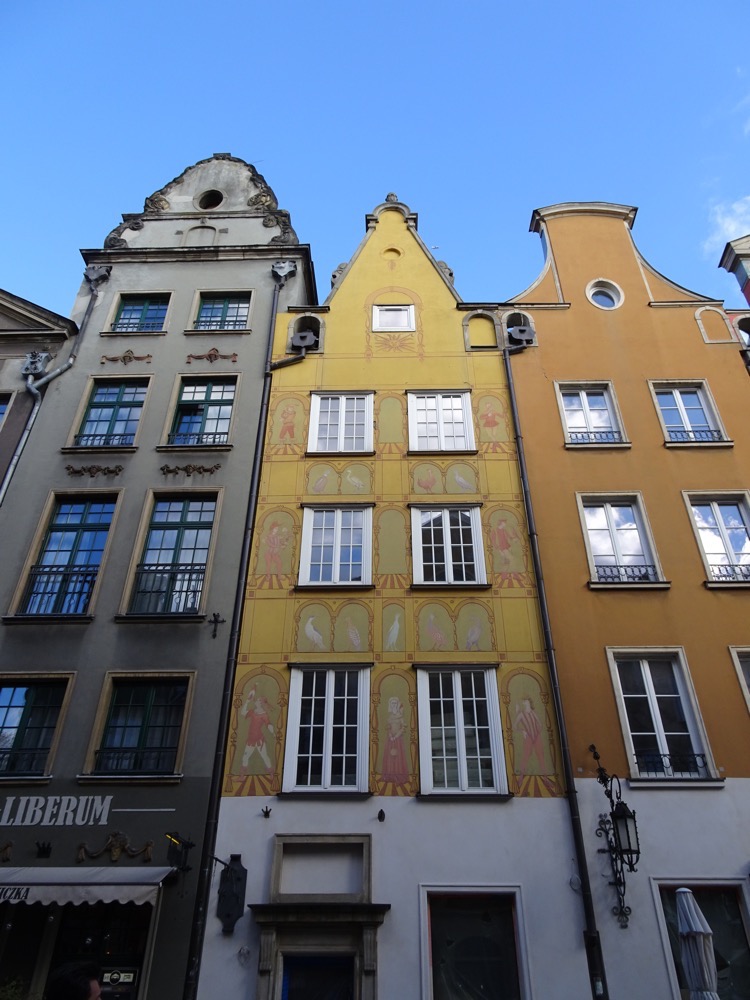
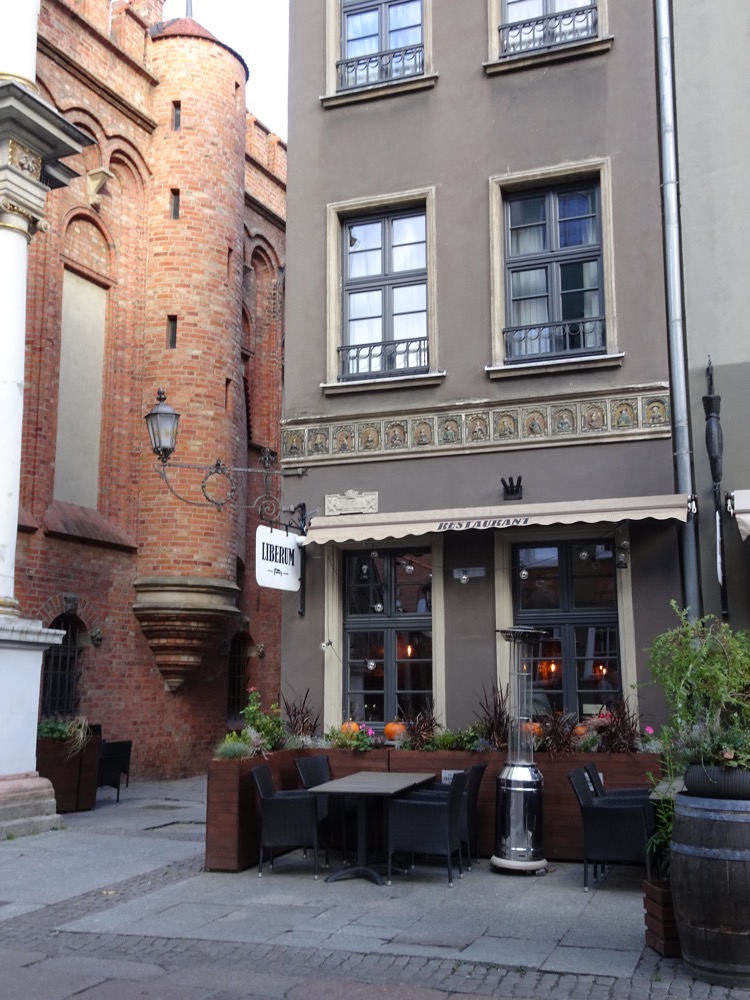
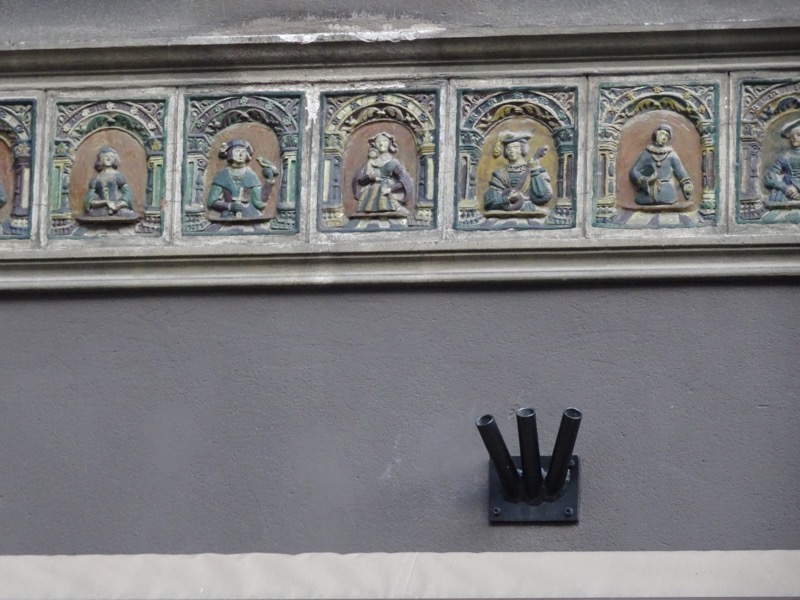 The older High Gate which is attached to the Golden Gate is a Renaissance city gate now at the main vehicular entrance to the Old Town.
The older High Gate which is attached to the Golden Gate is a Renaissance city gate now at the main vehicular entrance to the Old Town. 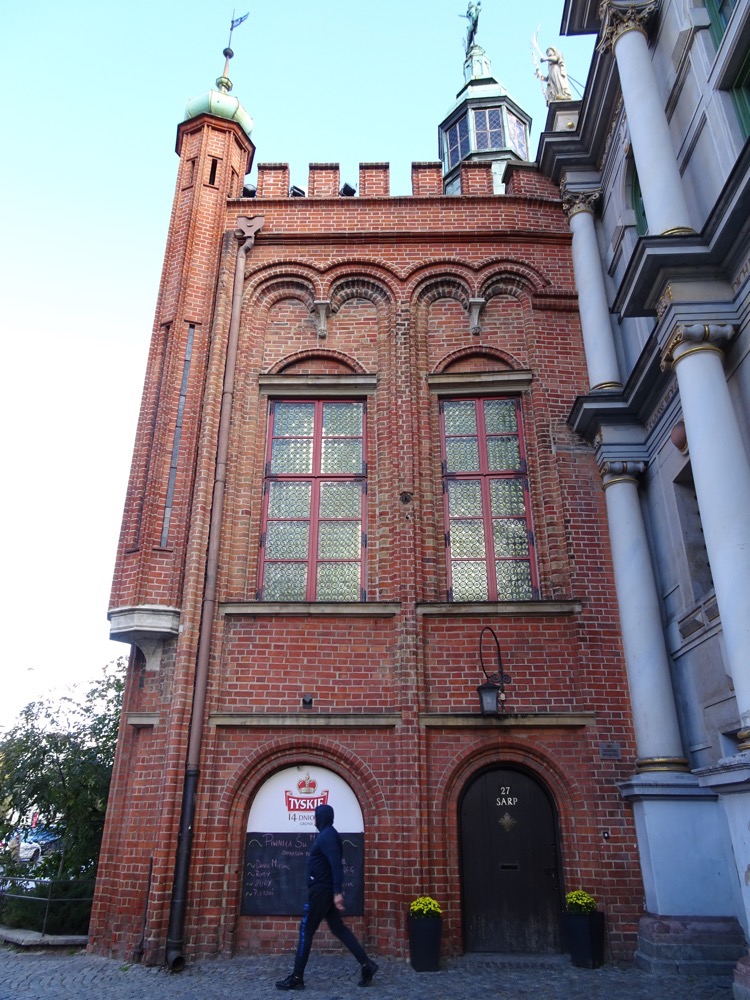
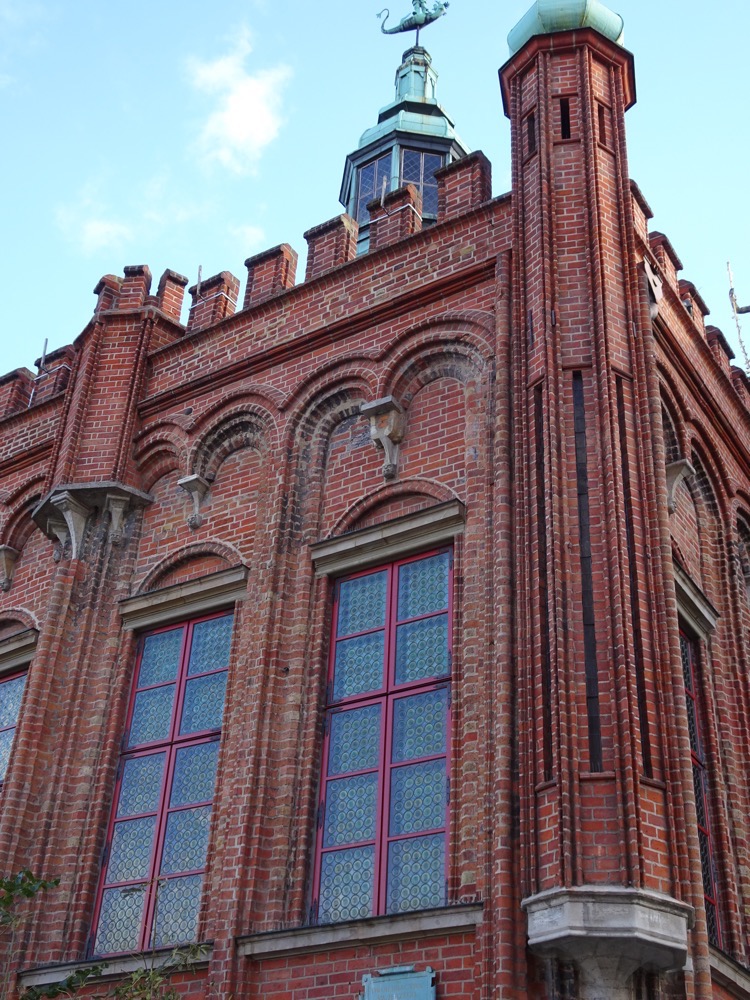
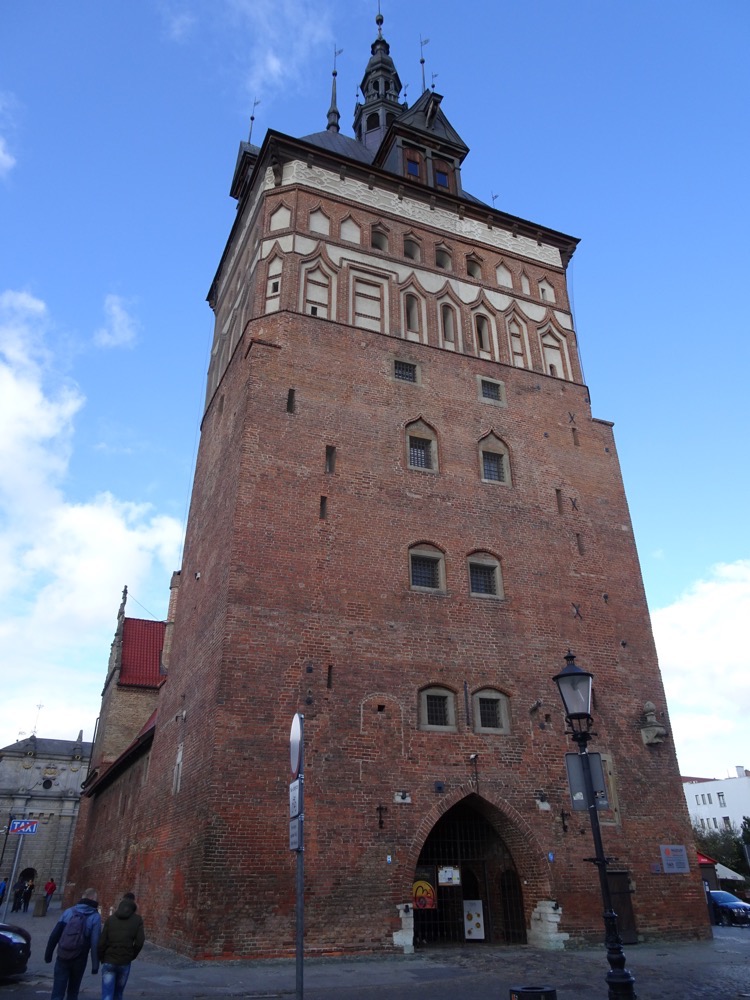 For over two centuries, from 1604 to 1858, this was the largest prison in Europe. Records show no known successful escape attempts, so we can guess it was a pretty effective one at that. Also located in the Prison Tower were Torture Chambers and the hangman’s headquarters which look like a small renaissance palace.
For over two centuries, from 1604 to 1858, this was the largest prison in Europe. Records show no known successful escape attempts, so we can guess it was a pretty effective one at that. Also located in the Prison Tower were Torture Chambers and the hangman’s headquarters which look like a small renaissance palace.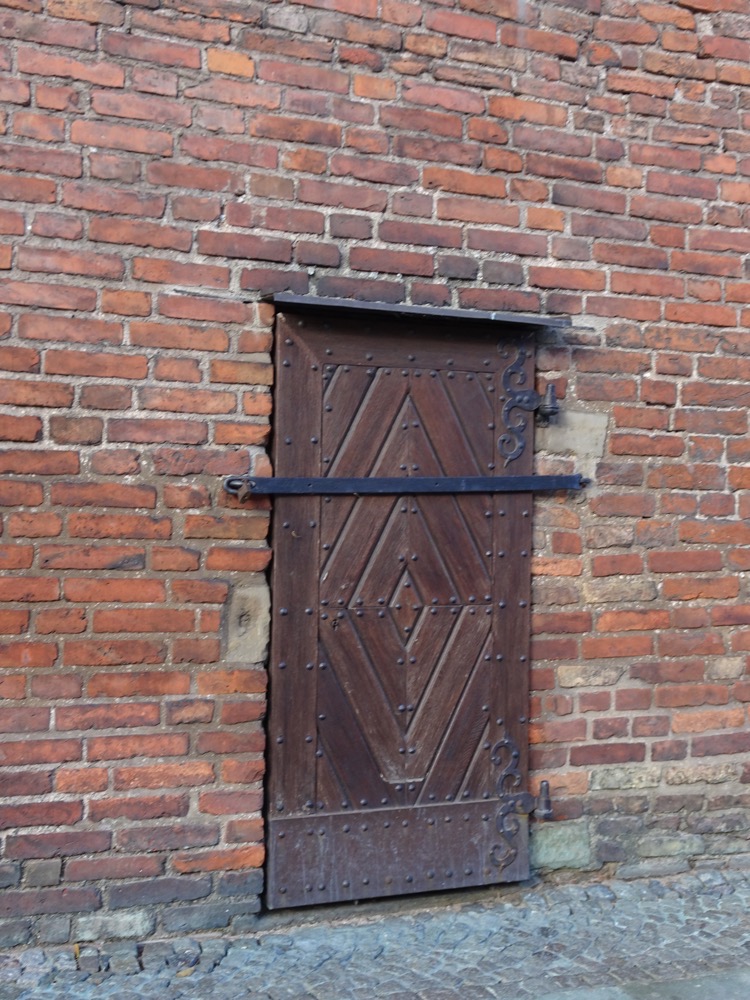
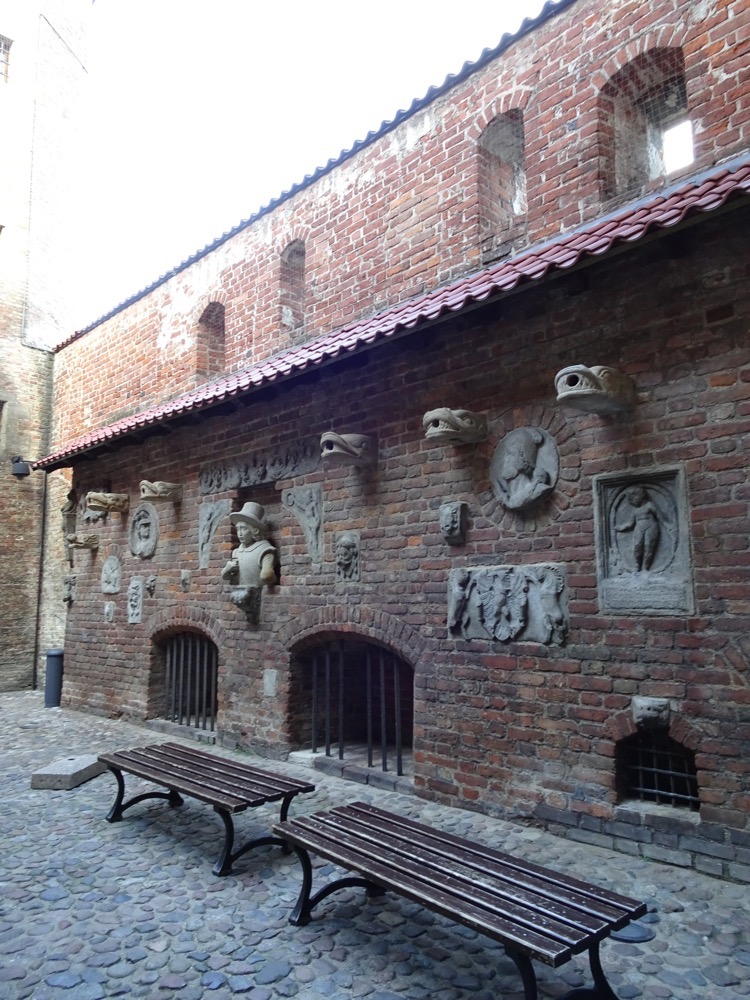

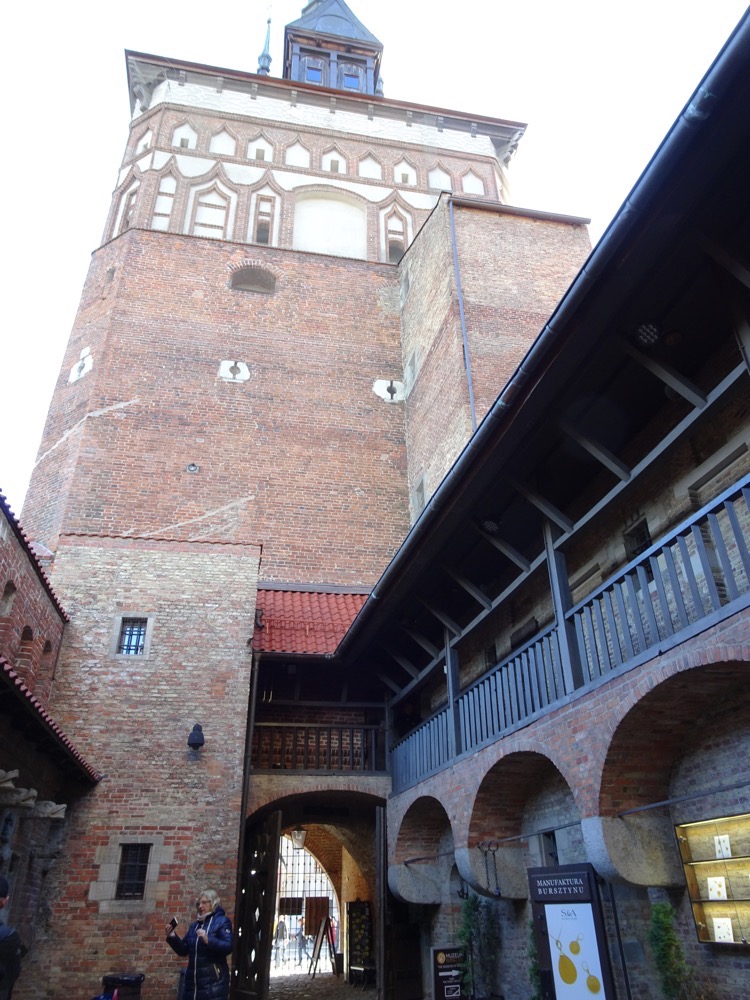
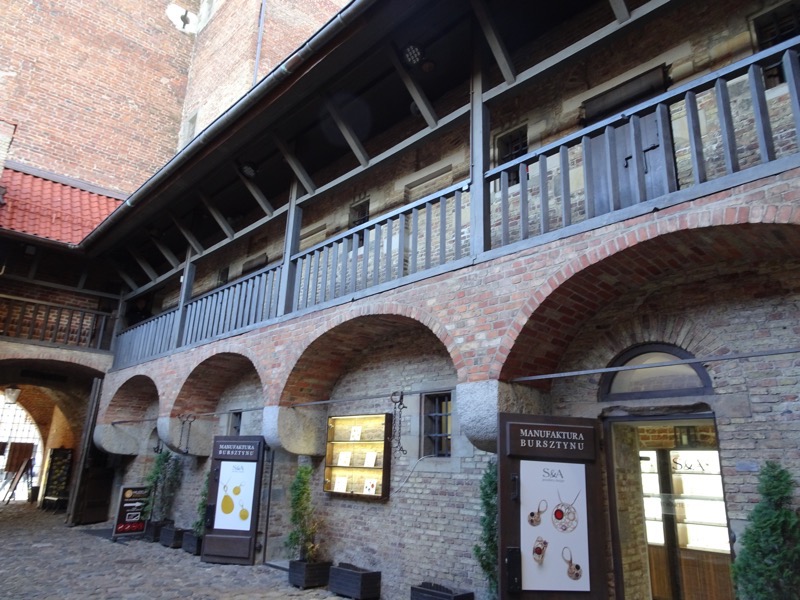
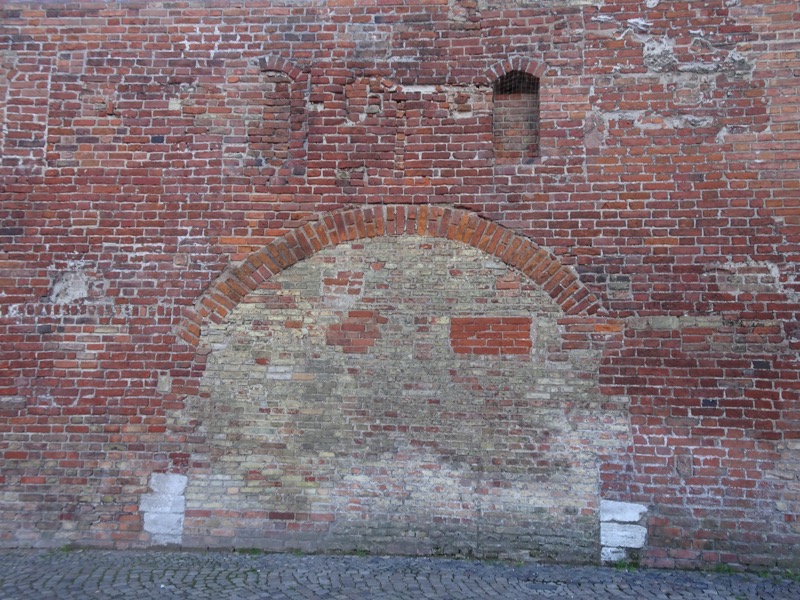
 After this we went through the Golden Gate and back into the Long Market to marvel at the beautiful tennement buildings.
After this we went through the Golden Gate and back into the Long Market to marvel at the beautiful tennement buildings.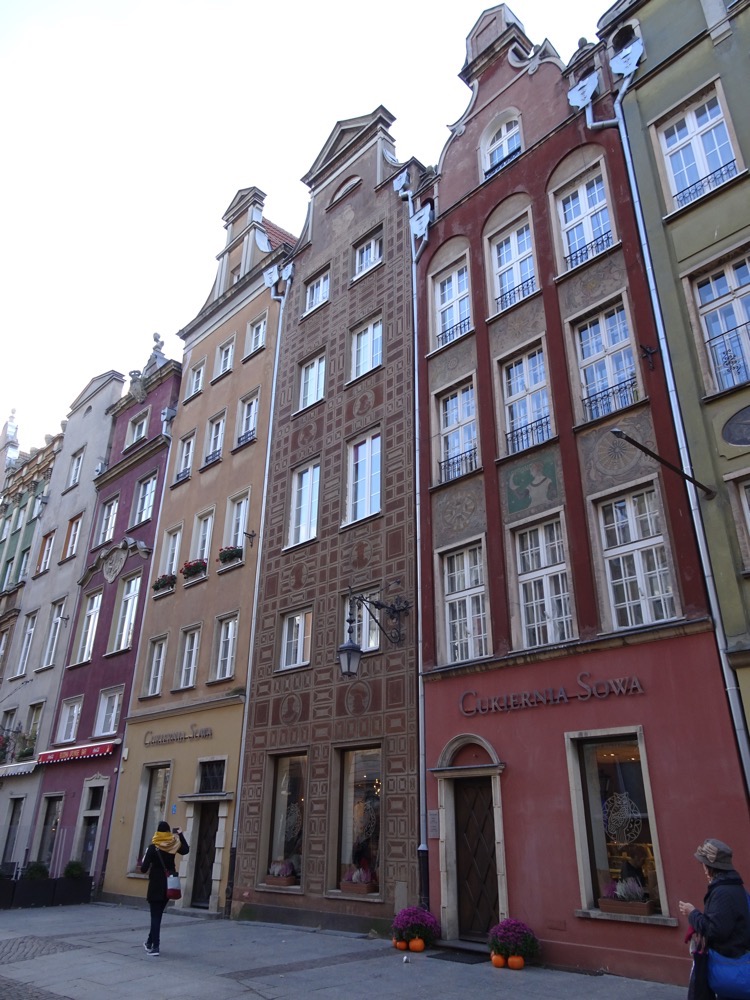 The Gdańsk Main Town Hall is a historic building located in the middle of the Long Market and it is considered to be one of the best the Gothic-Renaissance style historic buildings in the city. It is built at the intersection of the Long Lane and Long Market, and currently houses the History Museum of the City of Gdańsk and a weird modern art exhibition of Kazakhstani photographers?!
The Gdańsk Main Town Hall is a historic building located in the middle of the Long Market and it is considered to be one of the best the Gothic-Renaissance style historic buildings in the city. It is built at the intersection of the Long Lane and Long Market, and currently houses the History Museum of the City of Gdańsk and a weird modern art exhibition of Kazakhstani photographers?! 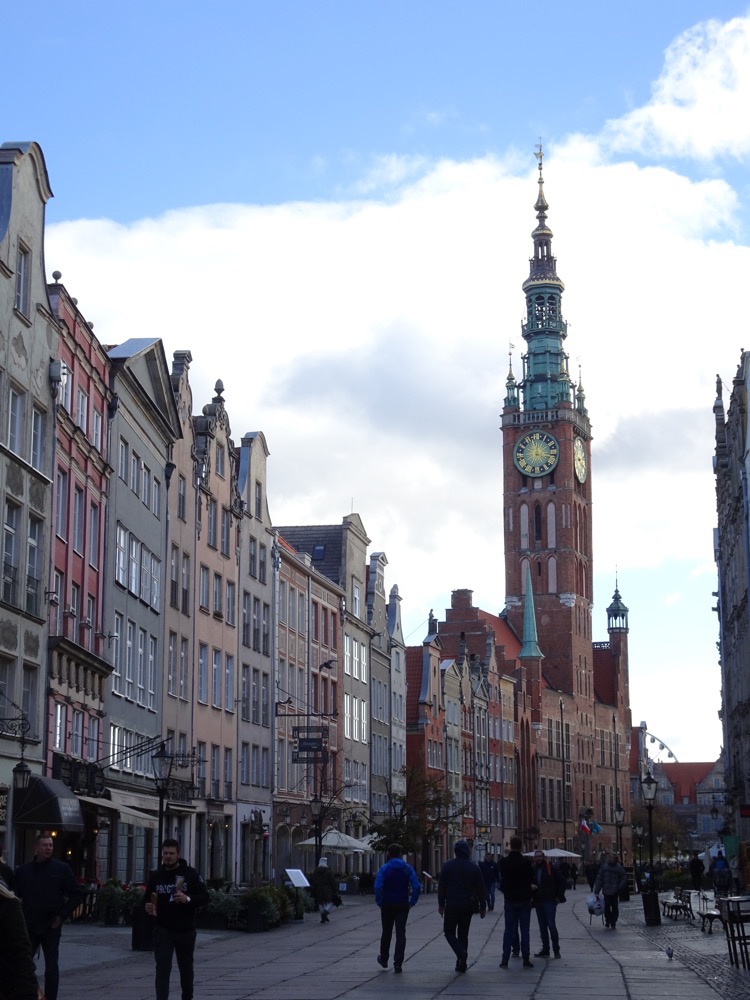
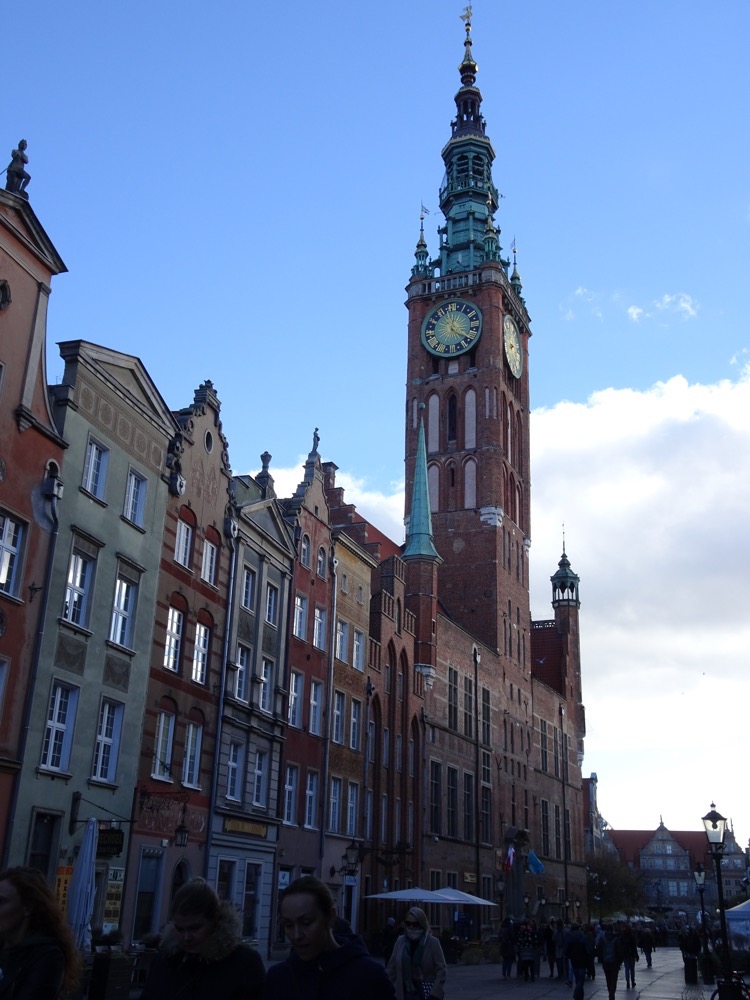
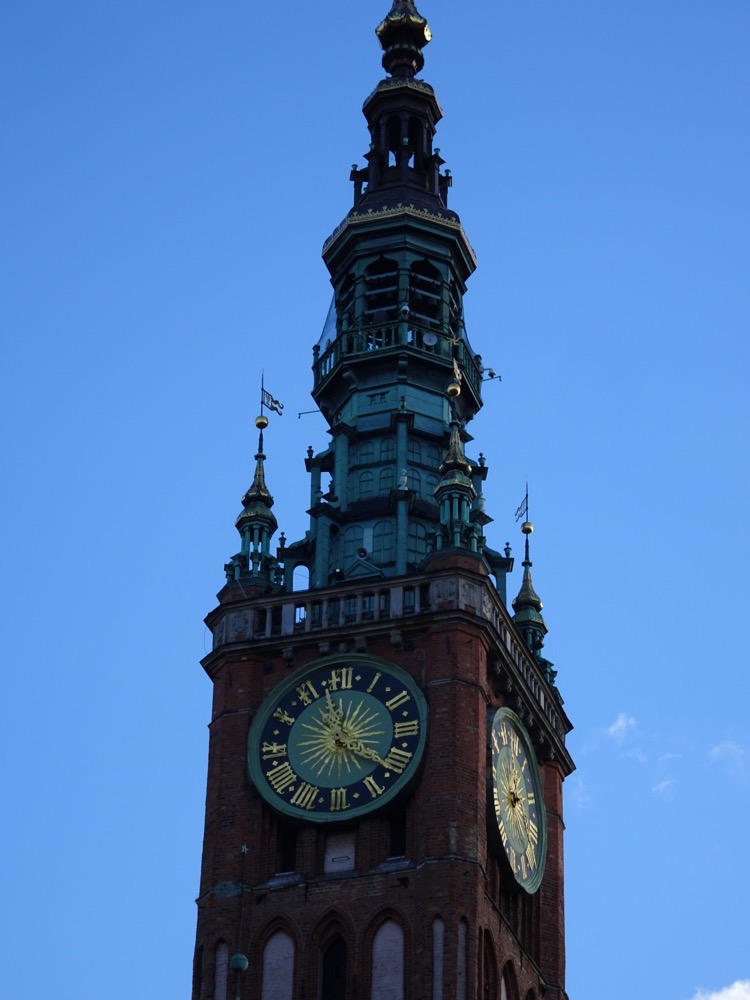 So many of these beautiful tenement houses have a long and distinguished history all of their own – for example, this red building below is called, the Schumann House. It was designed and built for a man named, Hans Conert the Younger, by an unknown architect in around 1560. The building was known as the King’s House as the top of the house has a sculpture of Zeus. Now, it houses a Tourist Information Centre… but my point is, every one of these buildings has a history.
So many of these beautiful tenement houses have a long and distinguished history all of their own – for example, this red building below is called, the Schumann House. It was designed and built for a man named, Hans Conert the Younger, by an unknown architect in around 1560. The building was known as the King’s House as the top of the house has a sculpture of Zeus. Now, it houses a Tourist Information Centre… but my point is, every one of these buildings has a history.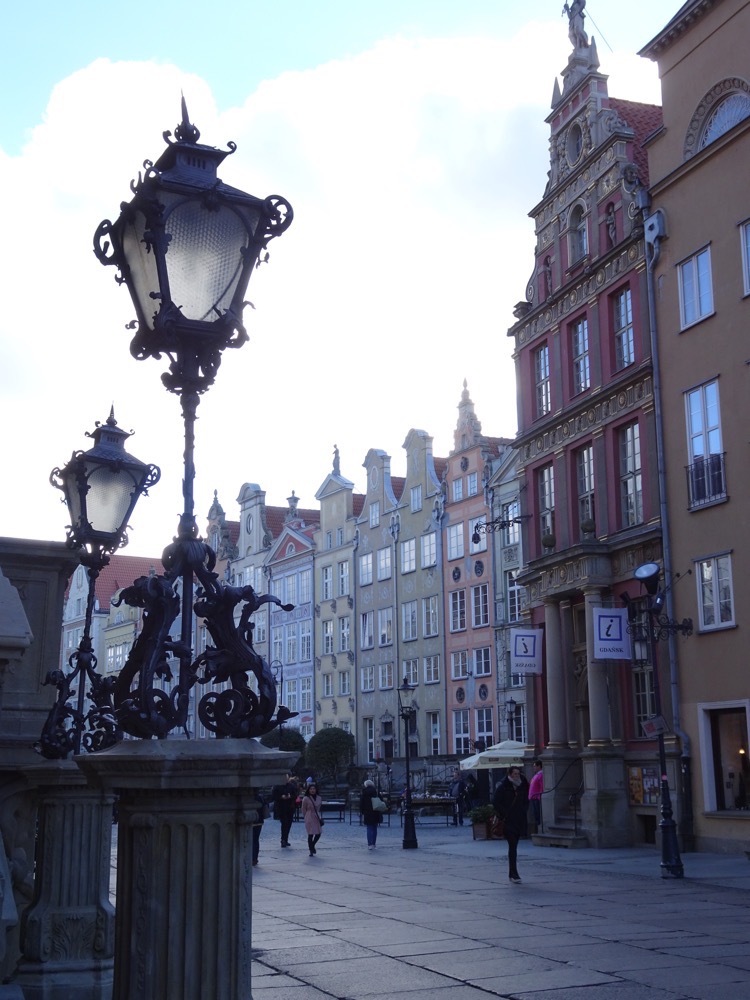 It’s nearly midday and the tourists are finally up and about – I am very glad I came out earlier and took some photos of the empty streets.
It’s nearly midday and the tourists are finally up and about – I am very glad I came out earlier and took some photos of the empty streets.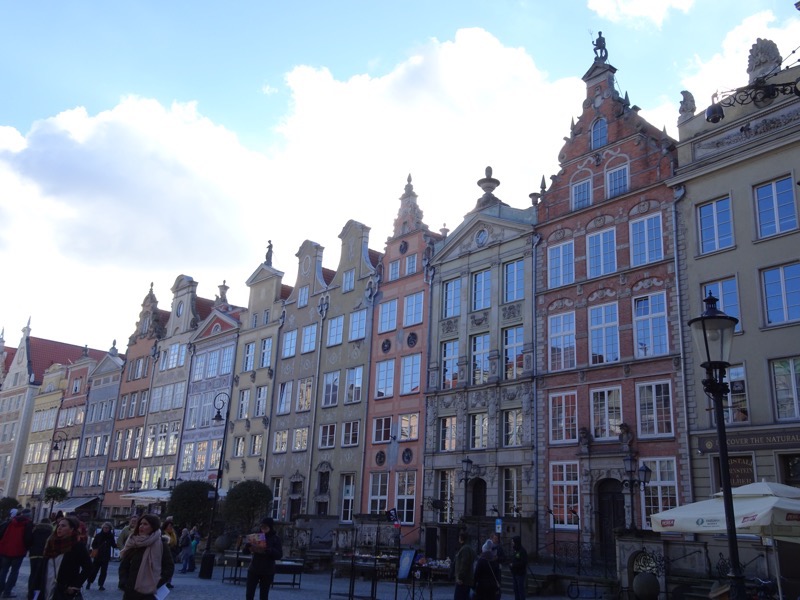
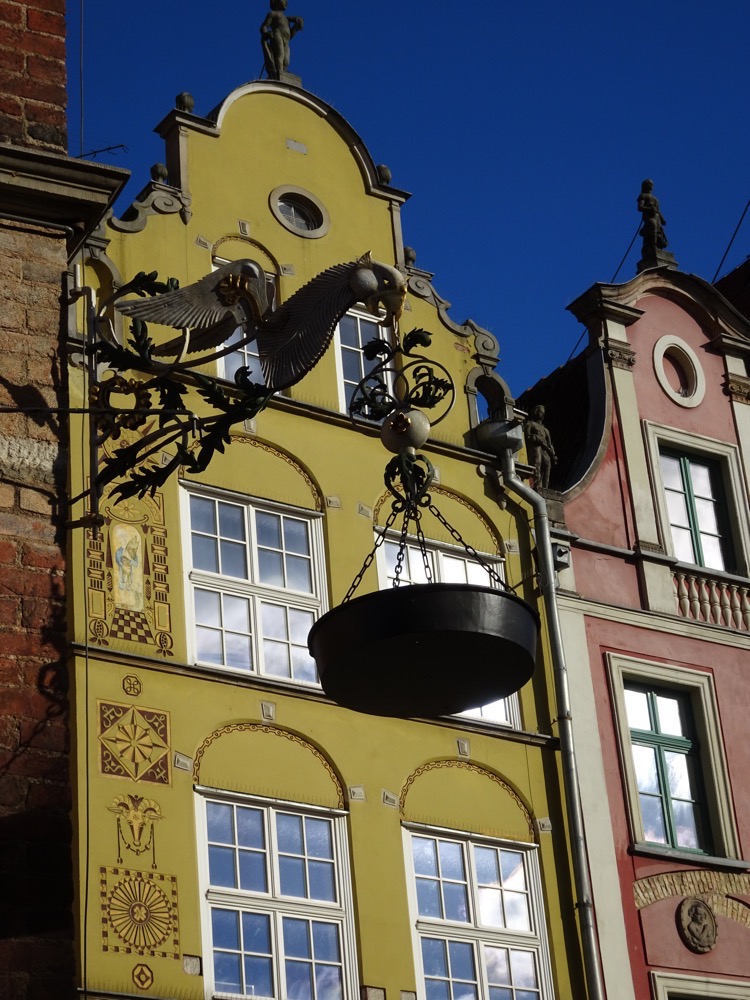
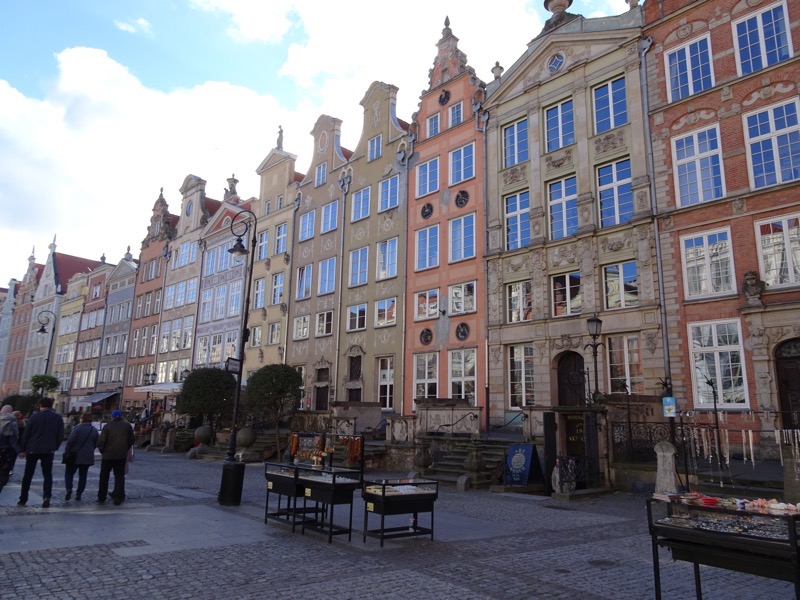
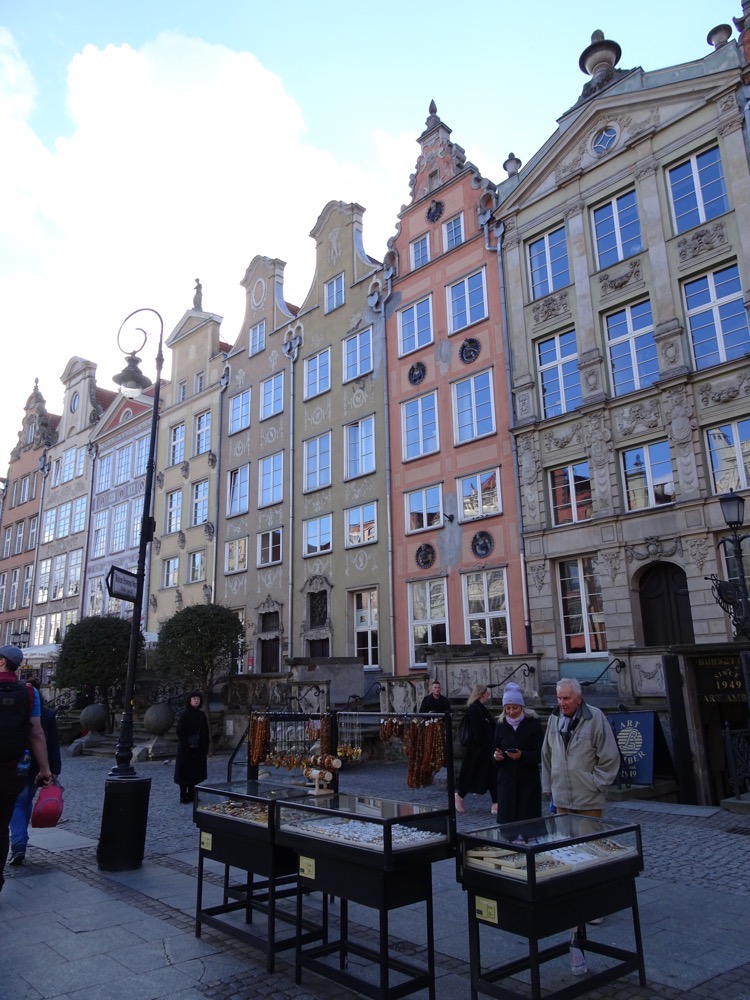
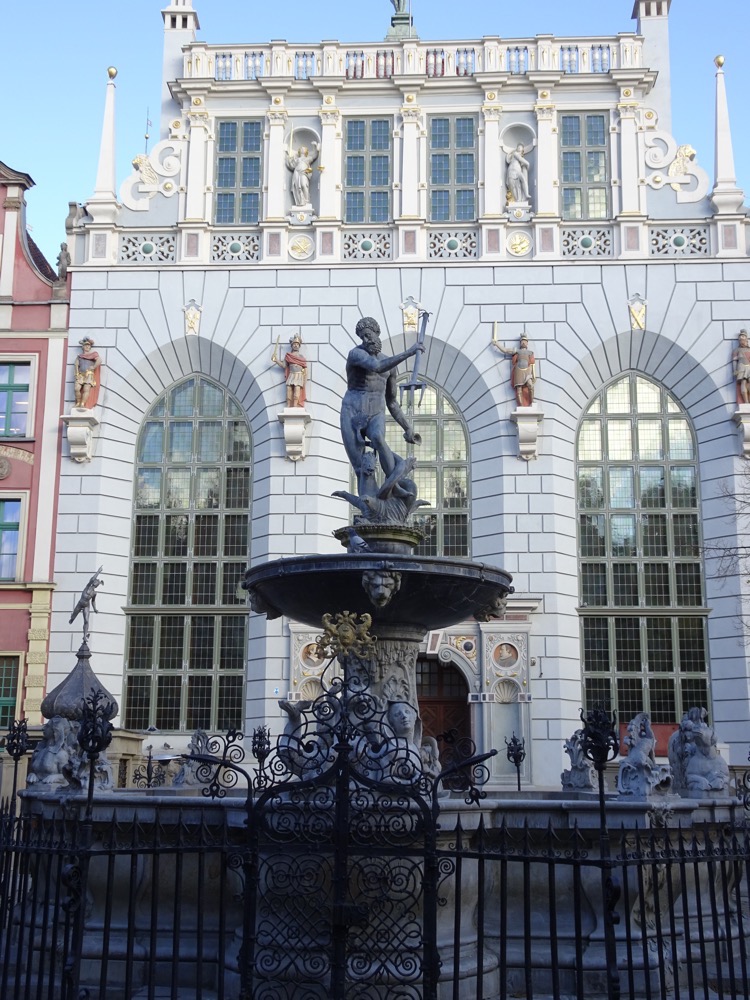 Neptune’s Fountain – is an iconic fountain of Gdańsk. It was constructed by a local Mayor, Bartłomiej Schachmann in 1549 and is located outside a building called Artus Court because there was a natural well here. The fountain was proposed and approved in 1549 but didn’t ‘open’ until 1633 due to a series of construction delays – the Artus Court building was being renovated, there were problems with the water system, and then the terribly inconvenient Thirty Years’ War.
Neptune’s Fountain – is an iconic fountain of Gdańsk. It was constructed by a local Mayor, Bartłomiej Schachmann in 1549 and is located outside a building called Artus Court because there was a natural well here. The fountain was proposed and approved in 1549 but didn’t ‘open’ until 1633 due to a series of construction delays – the Artus Court building was being renovated, there were problems with the water system, and then the terribly inconvenient Thirty Years’ War. 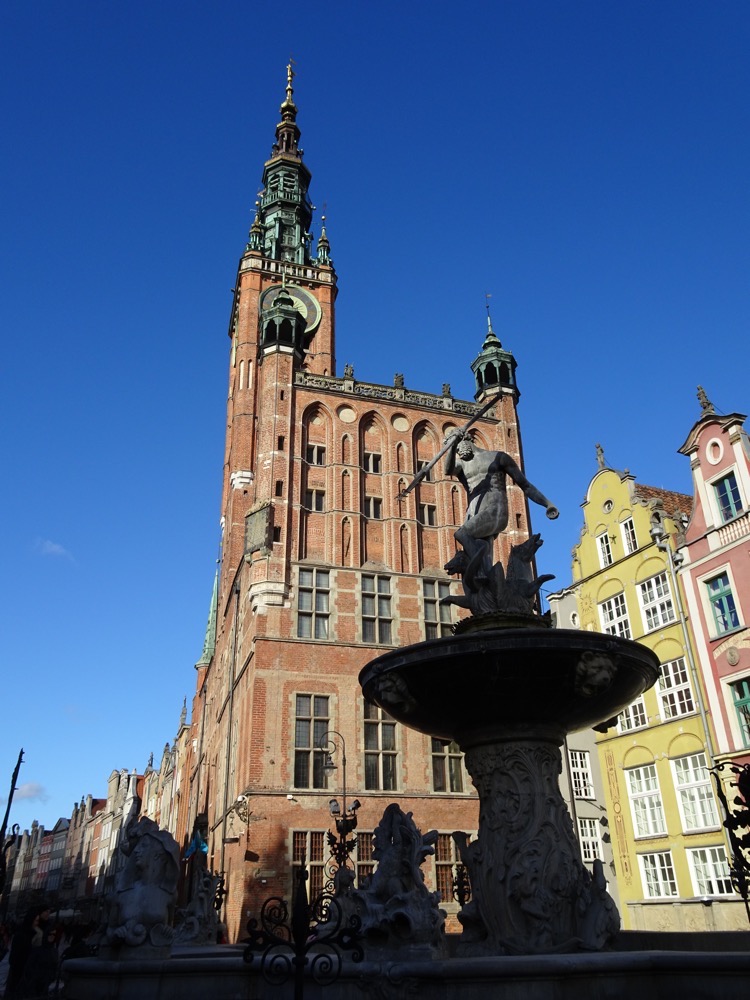
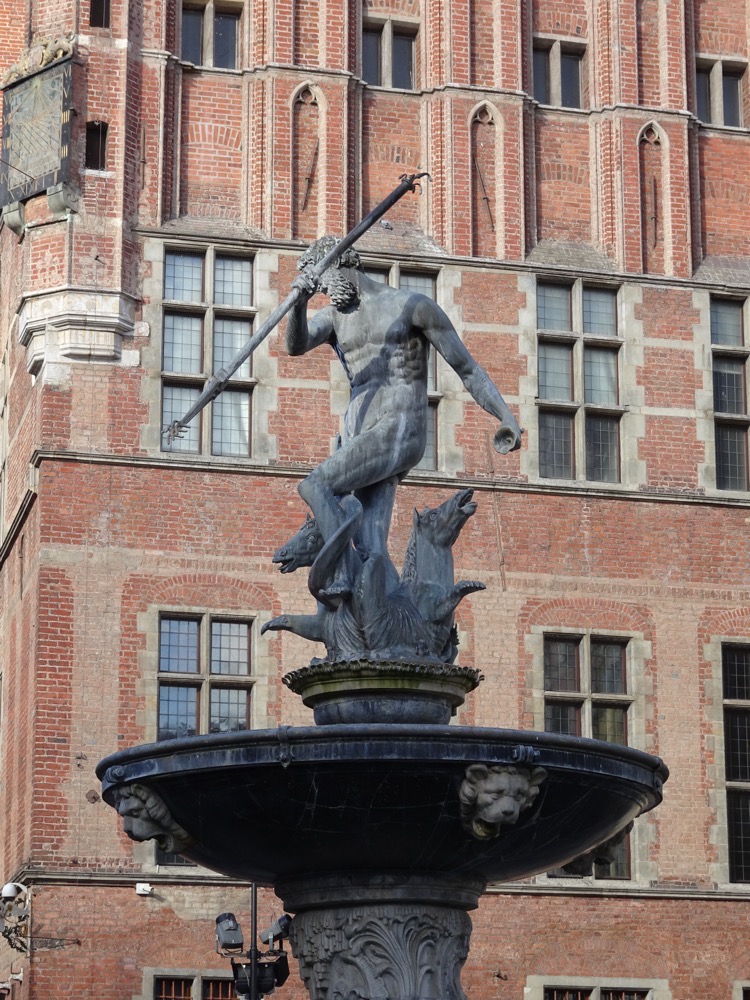
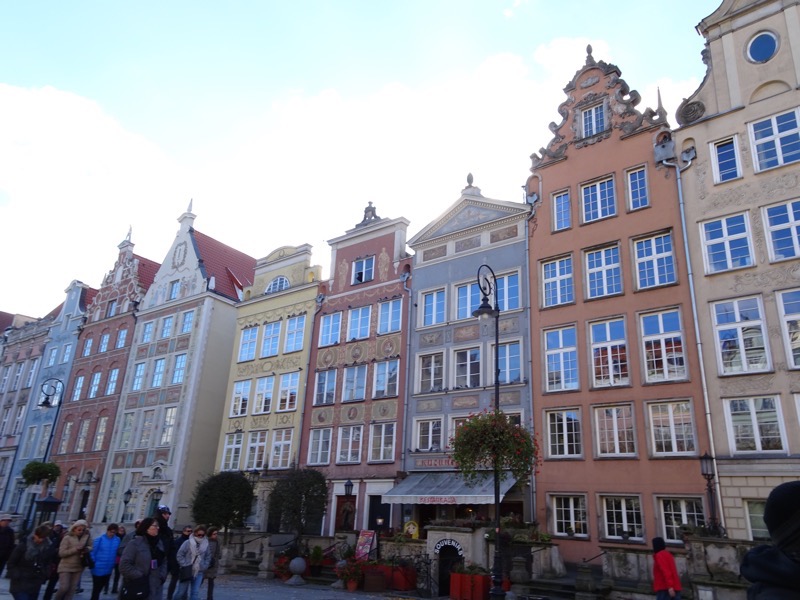 At the other end of the Long Market – the back of the Green Gate.
At the other end of the Long Market – the back of the Green Gate.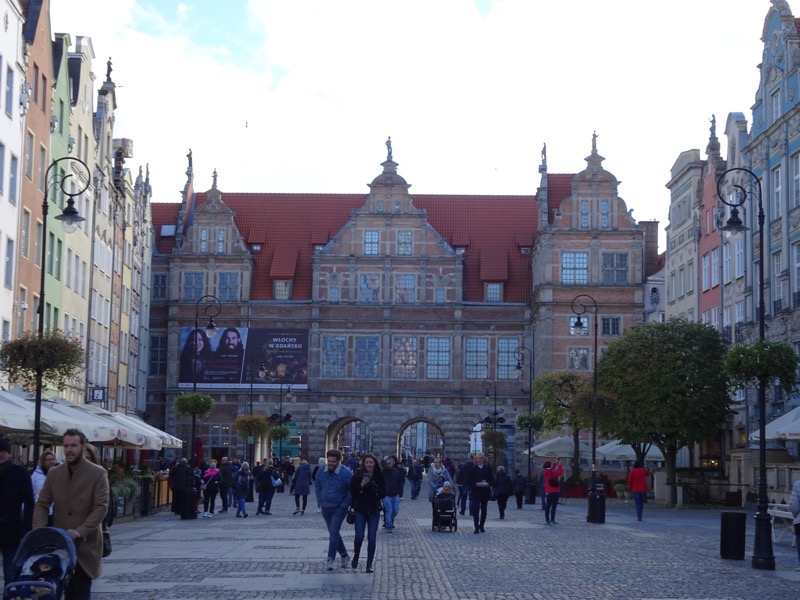
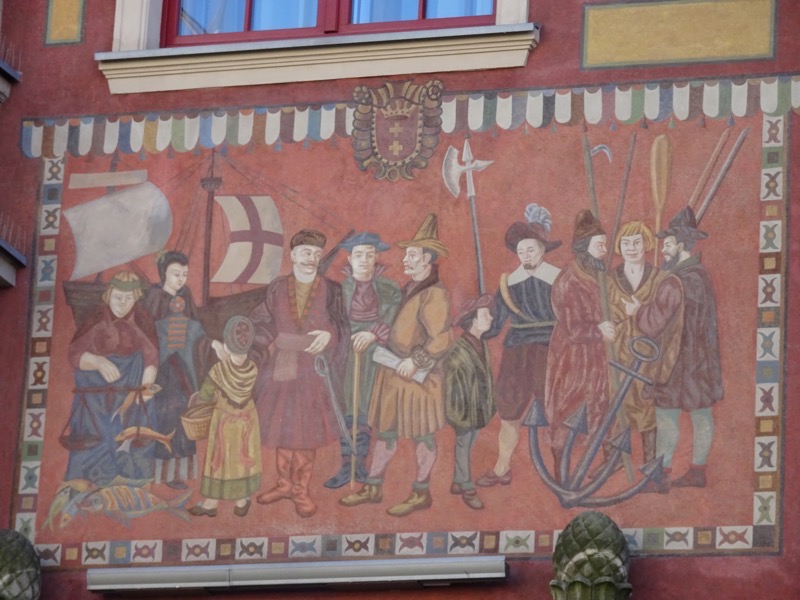 So many beautiful buildings! It’s simply overwhelming… so many beautiful facades to look at and so many wonderfully detailed frontages.
So many beautiful buildings! It’s simply overwhelming… so many beautiful facades to look at and so many wonderfully detailed frontages.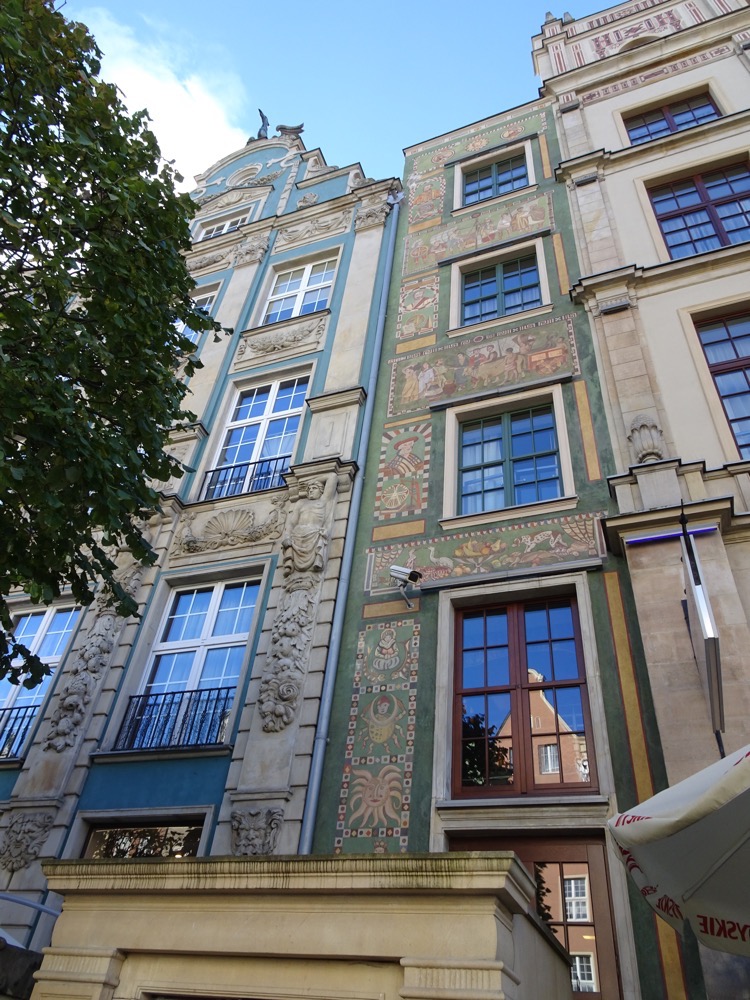
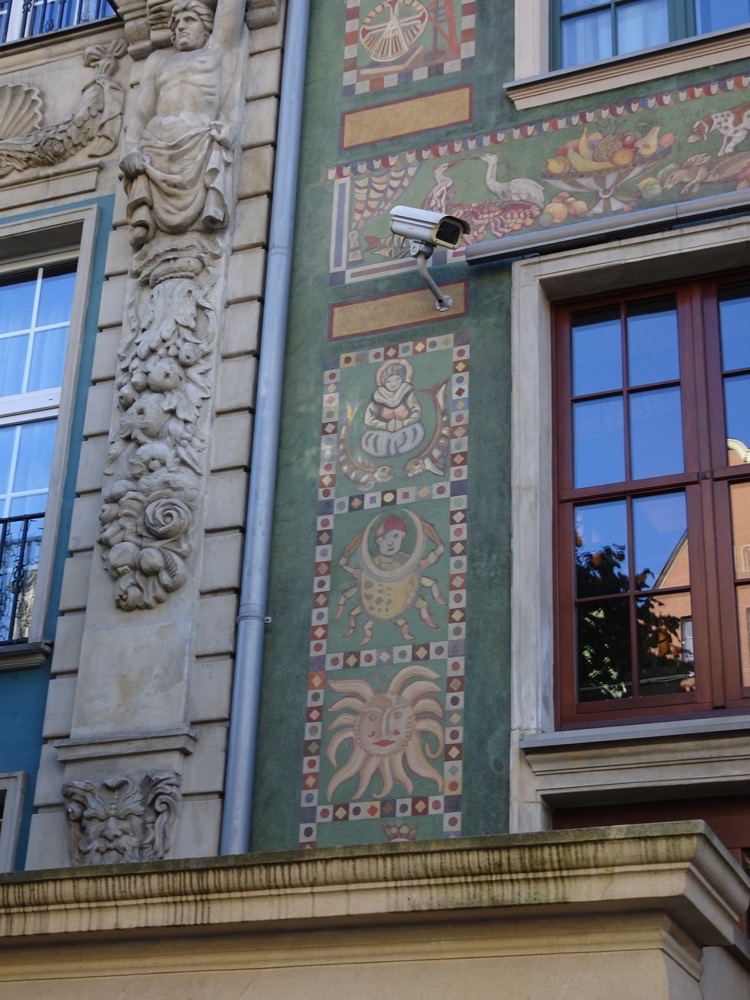
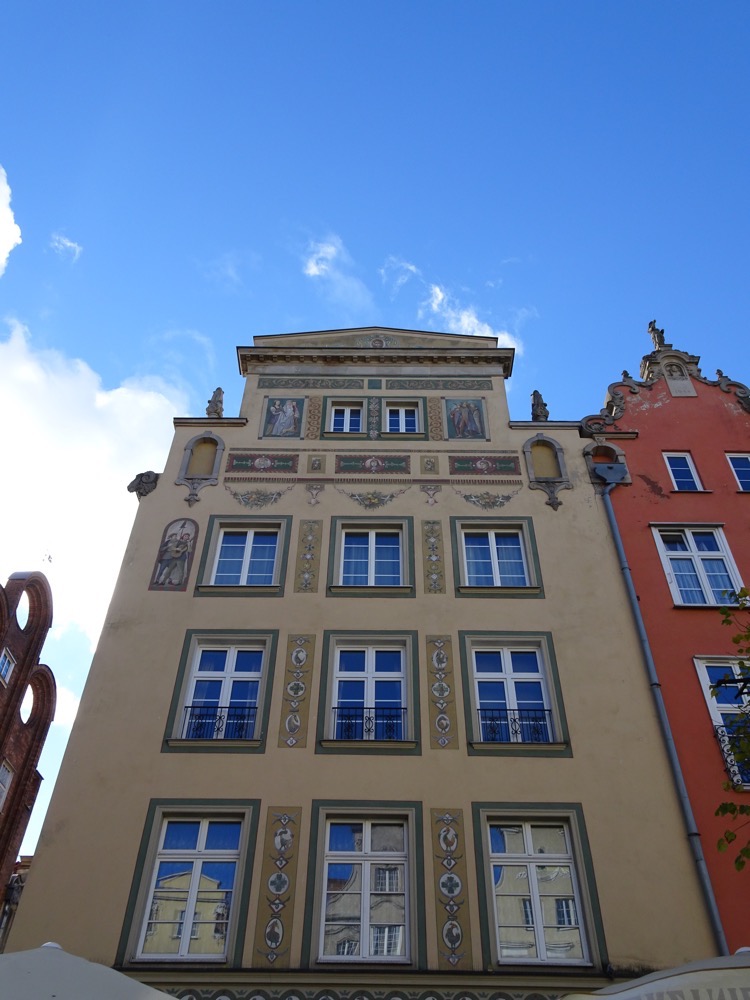
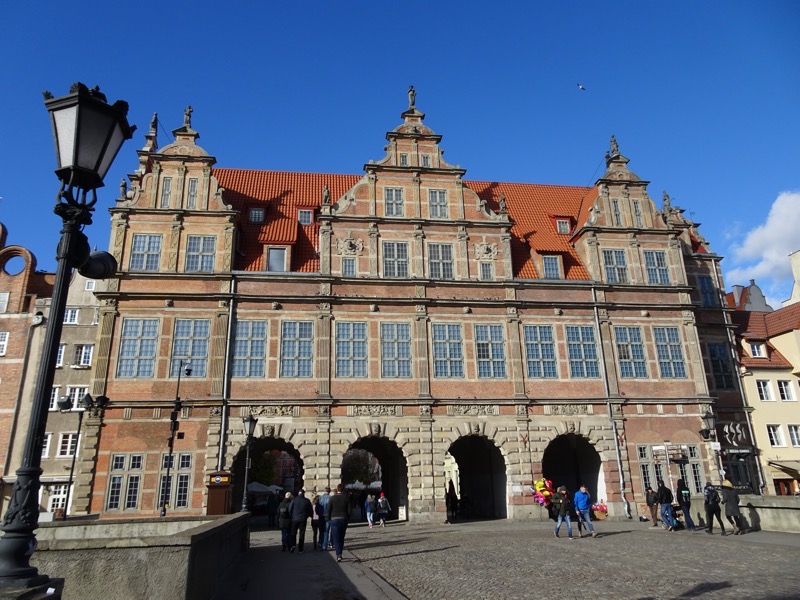
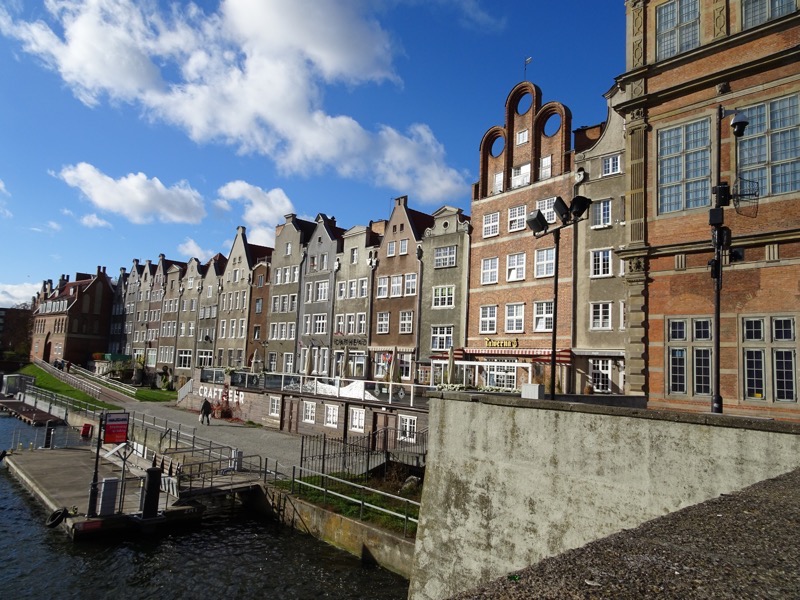 More tenement buildings lining the river to either side of the Green Gate.
More tenement buildings lining the river to either side of the Green Gate.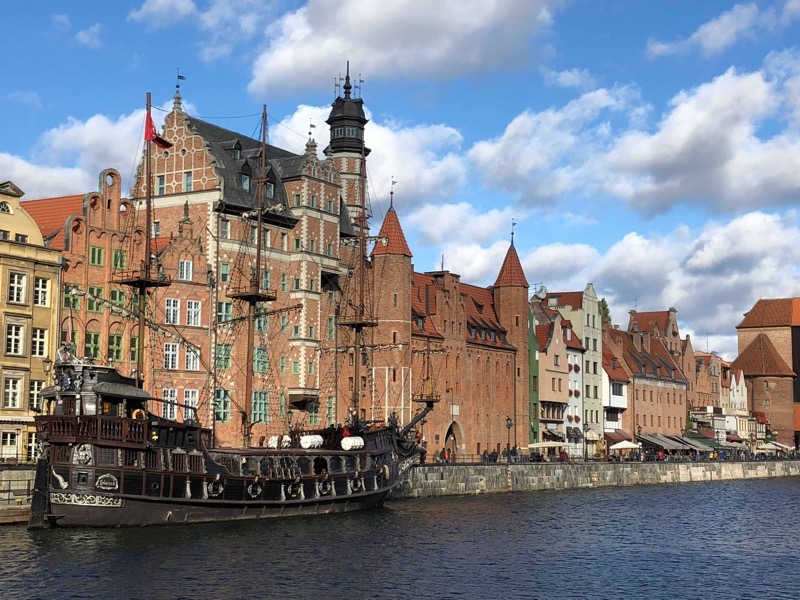 Across the river is Granary Island – we popped over there very briefly, but it seemed full of modern hotels, a ferris wheel (called the Amber Sky of course) and several bars that appeared to largely cater to American tourists (Jack Lives Here).
Across the river is Granary Island – we popped over there very briefly, but it seemed full of modern hotels, a ferris wheel (called the Amber Sky of course) and several bars that appeared to largely cater to American tourists (Jack Lives Here).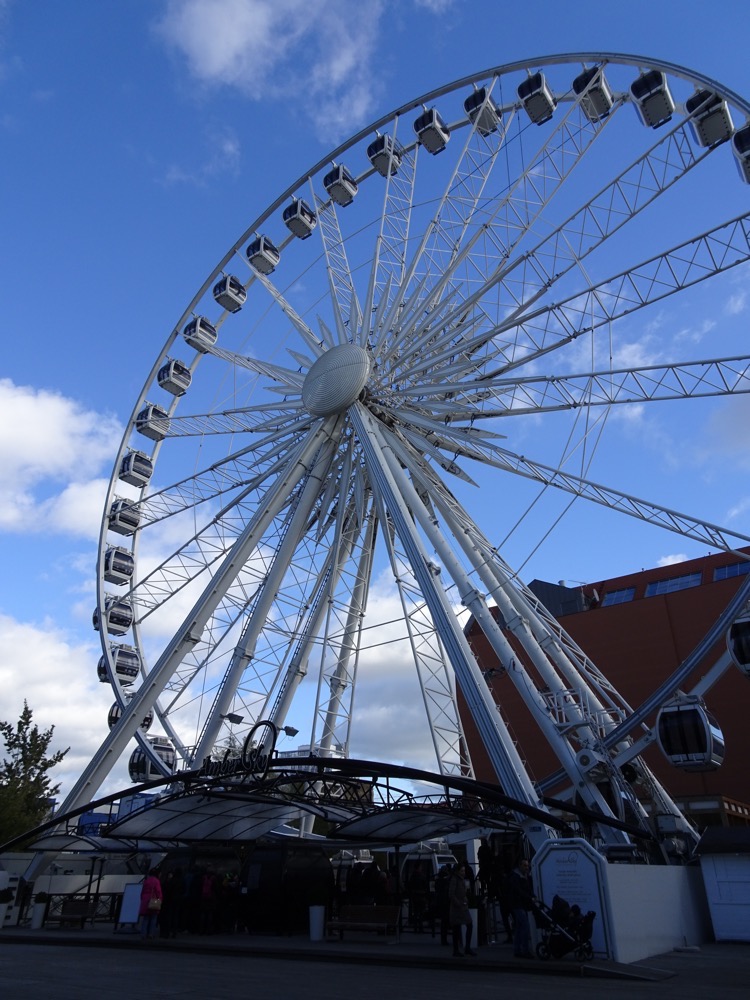
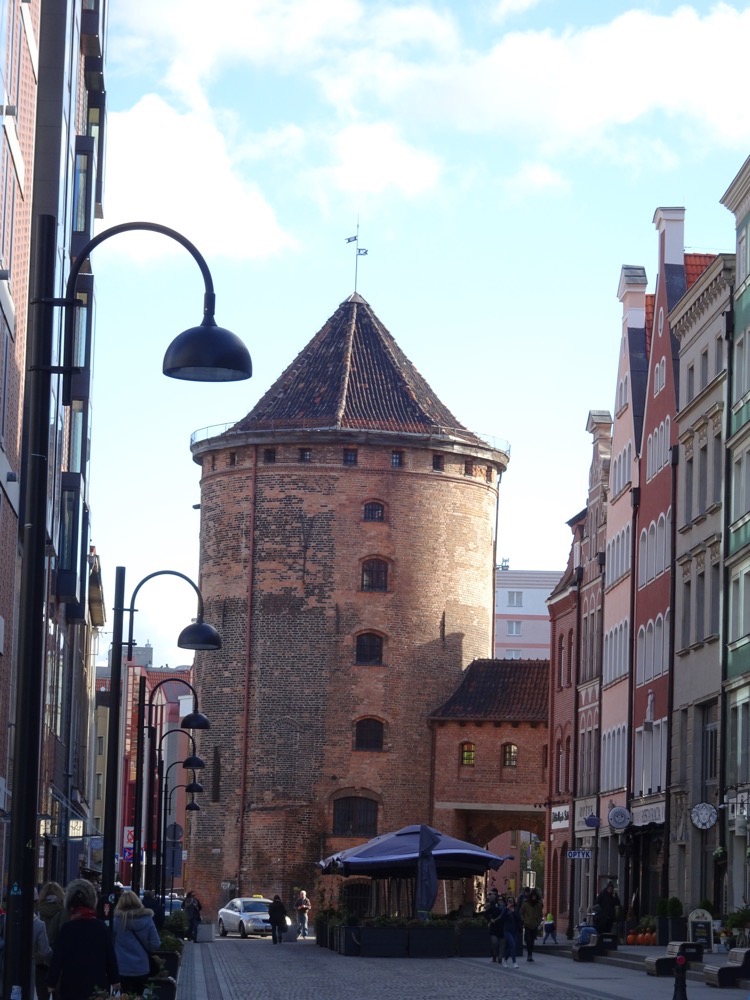 So we made our way along the waterfront and back into the Old Town to meander through more back streets.
So we made our way along the waterfront and back into the Old Town to meander through more back streets.
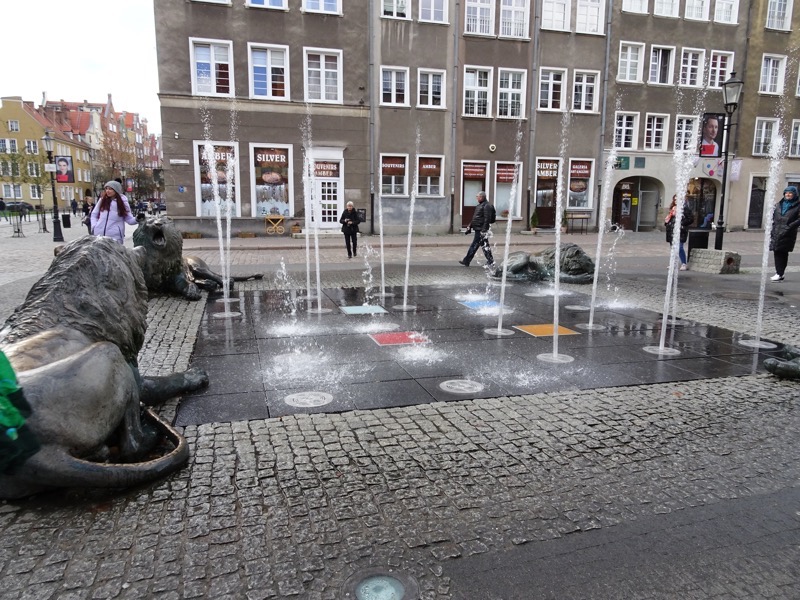
 The seemingly modest, Royal Chapel.
The seemingly modest, Royal Chapel.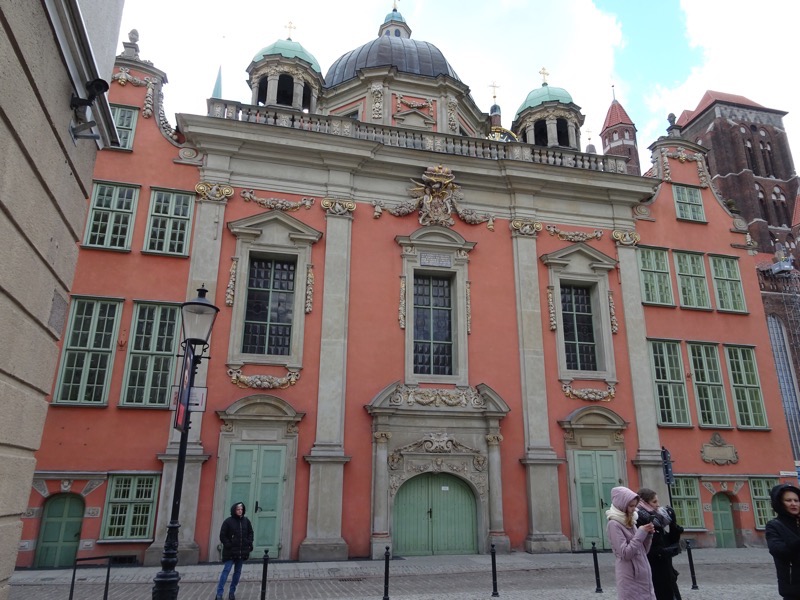 The famous Gdansk treadwheel crane – originally built in 1366, the crane was operated by men in the treadwheel to hoist heavy weights onto ships.
The famous Gdansk treadwheel crane – originally built in 1366, the crane was operated by men in the treadwheel to hoist heavy weights onto ships.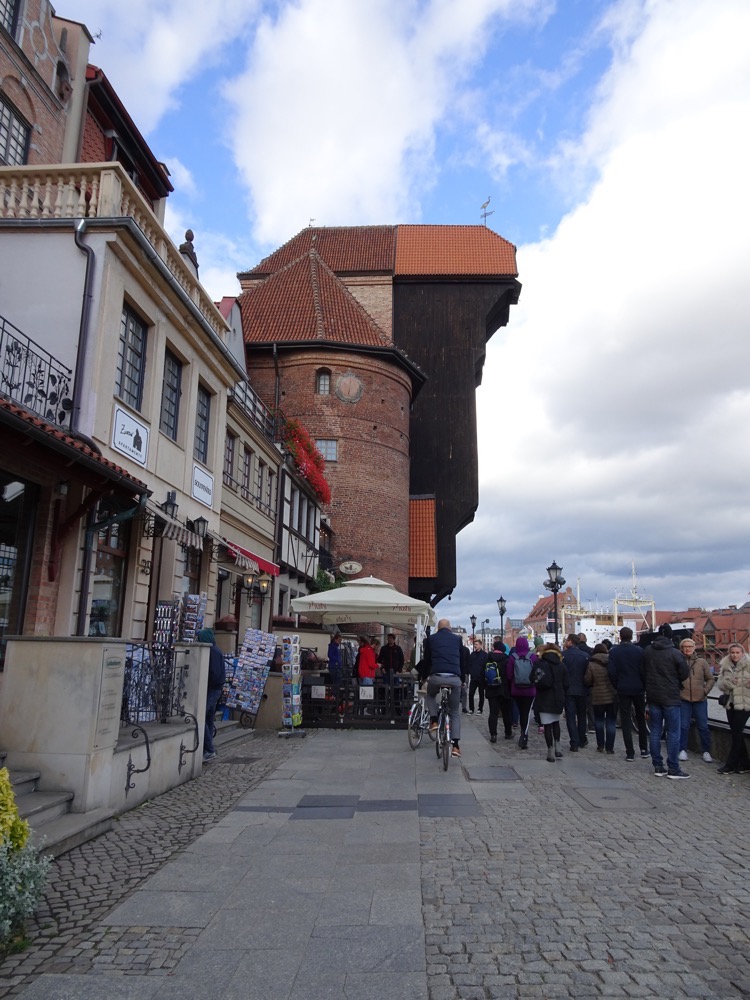
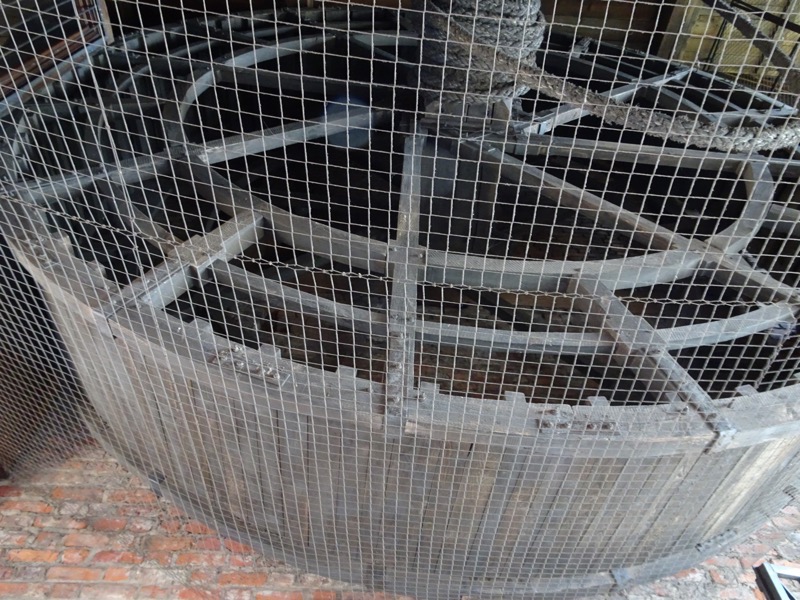
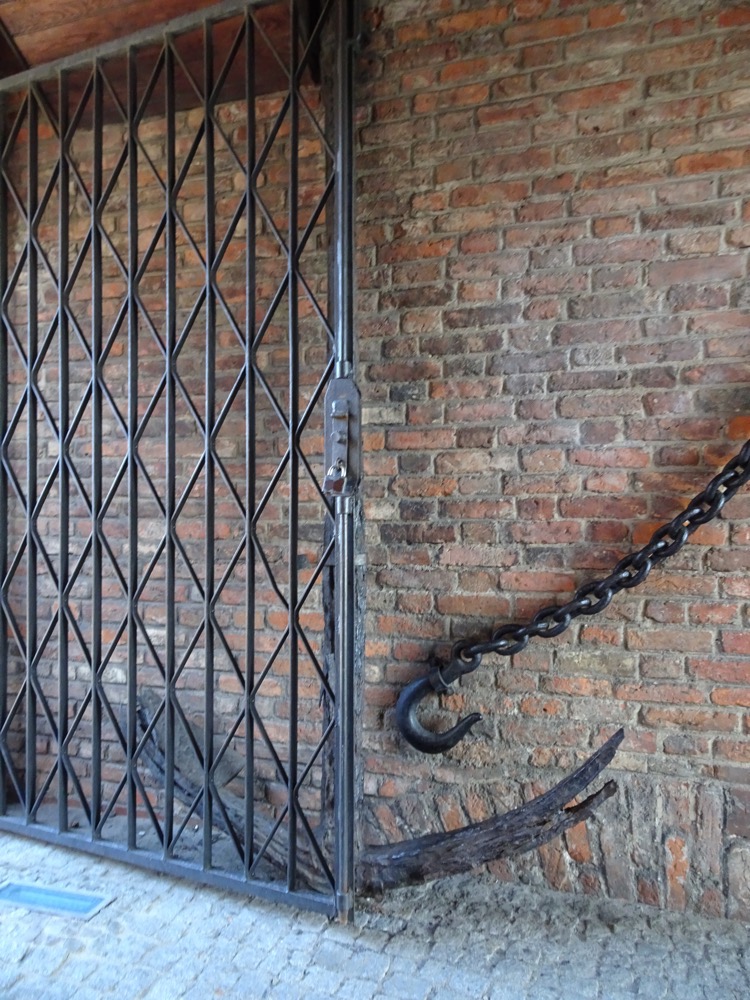
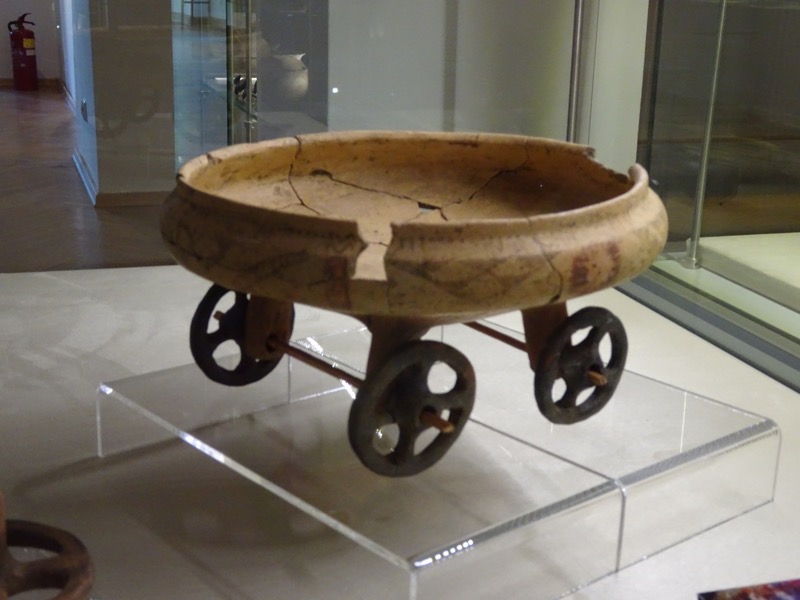
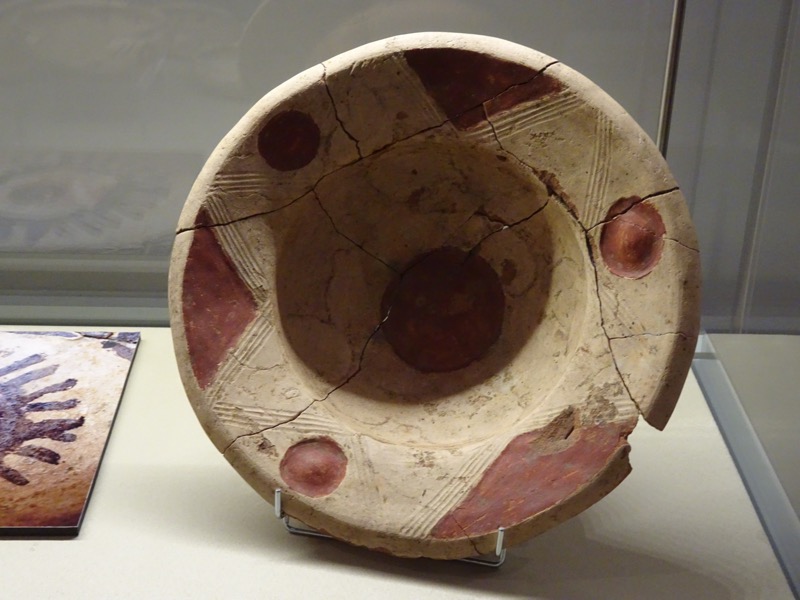
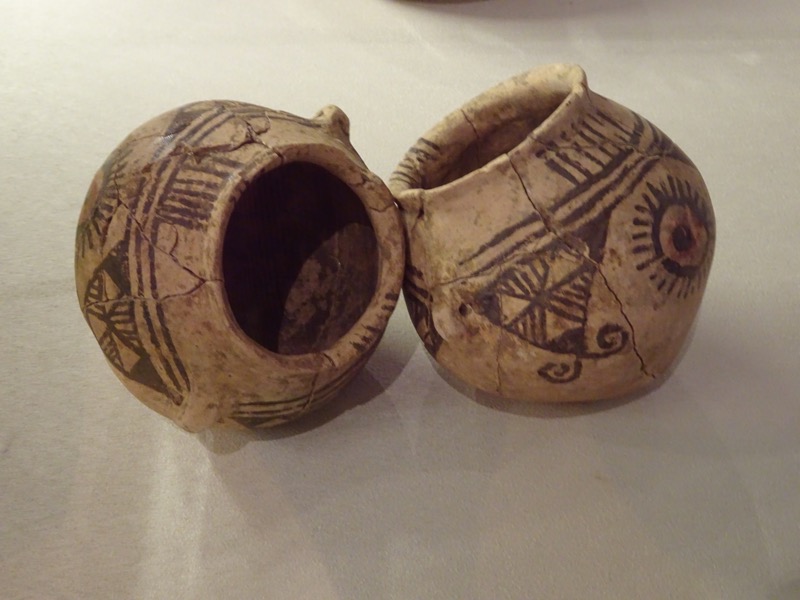
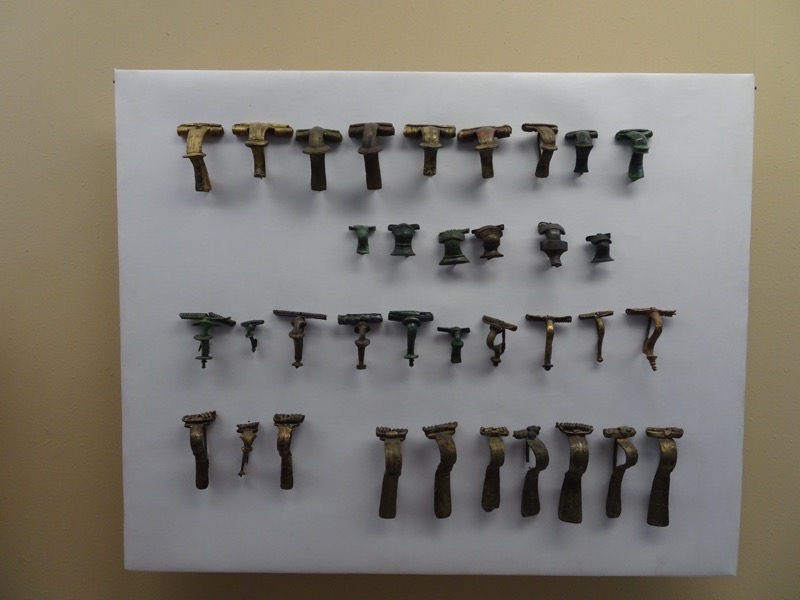
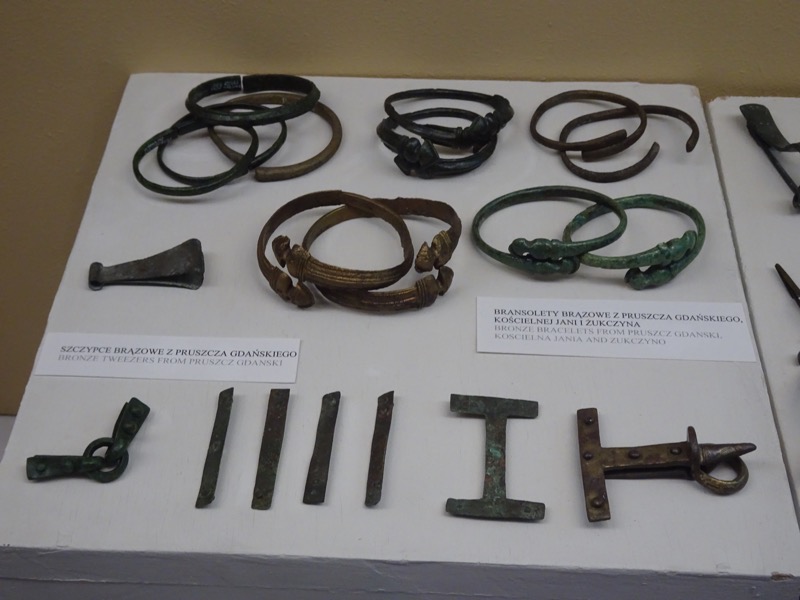

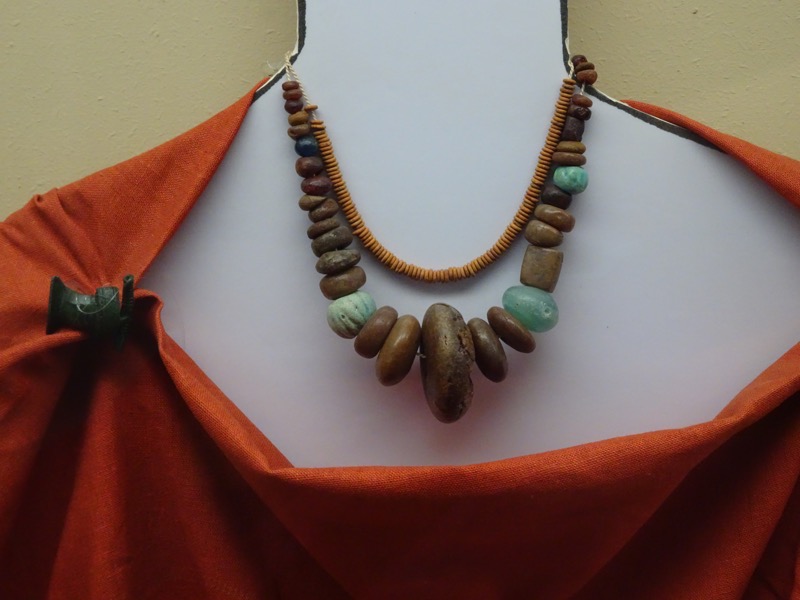
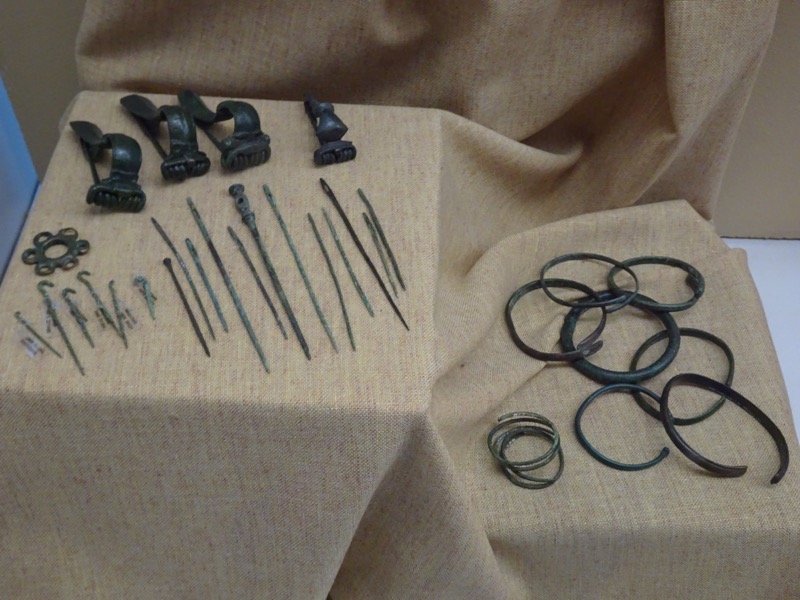
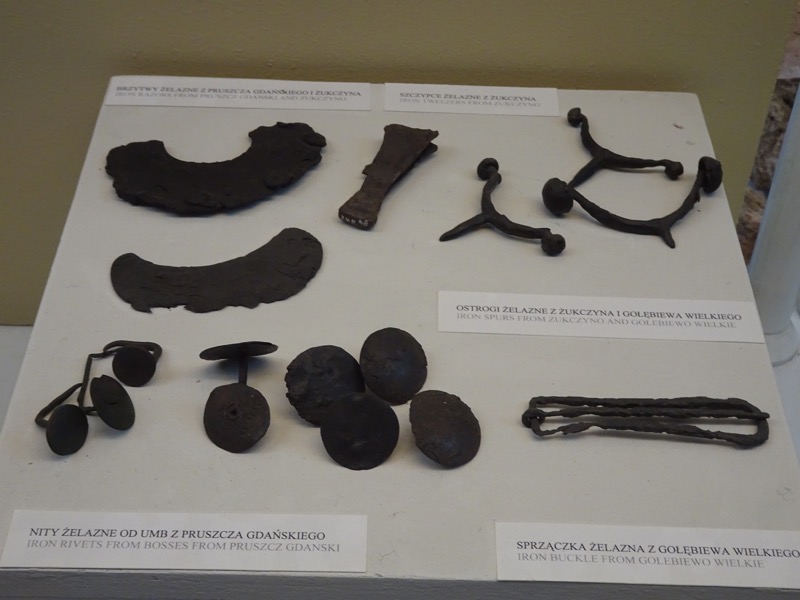
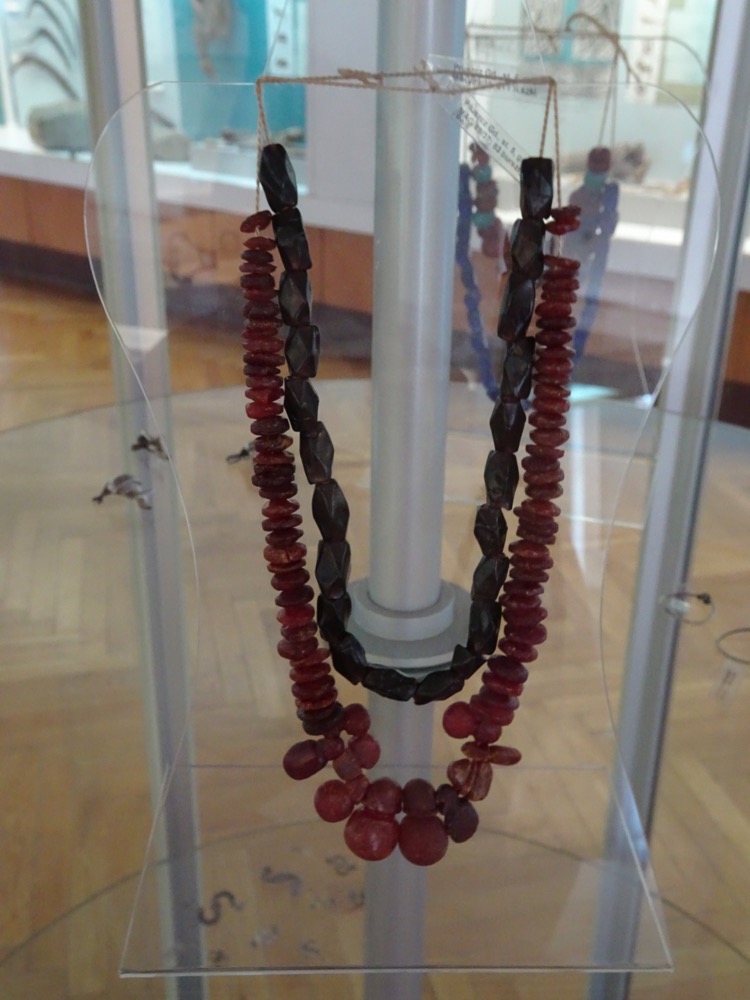
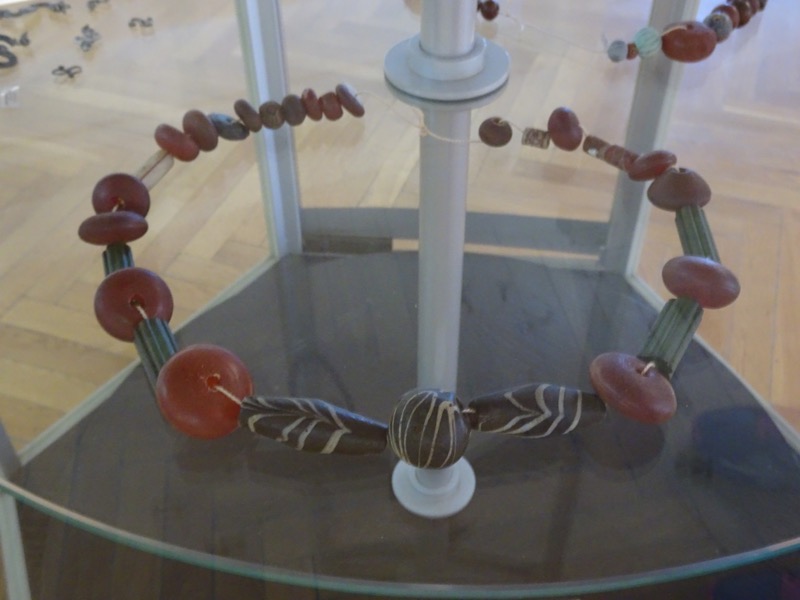
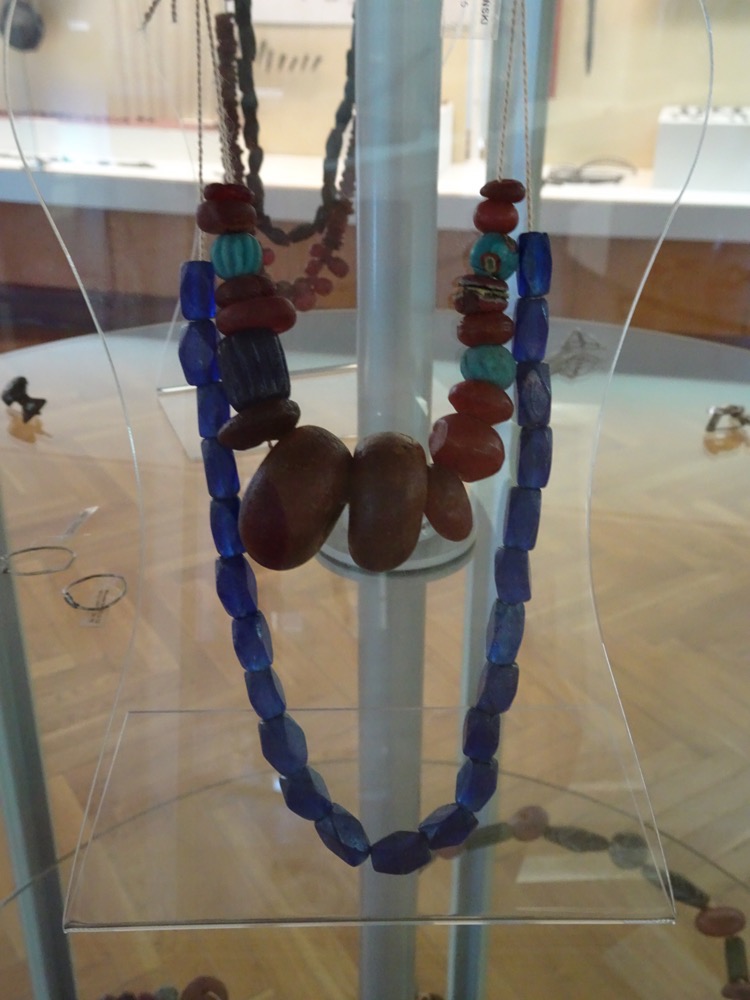
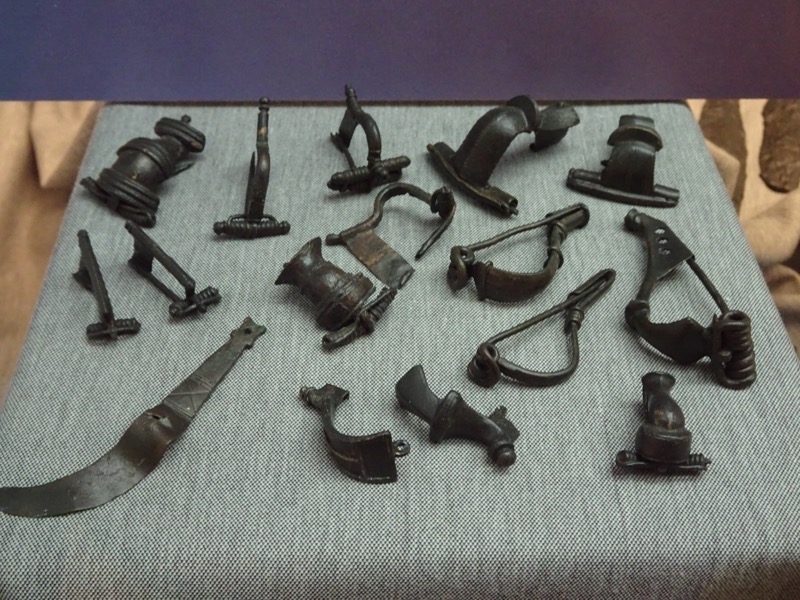
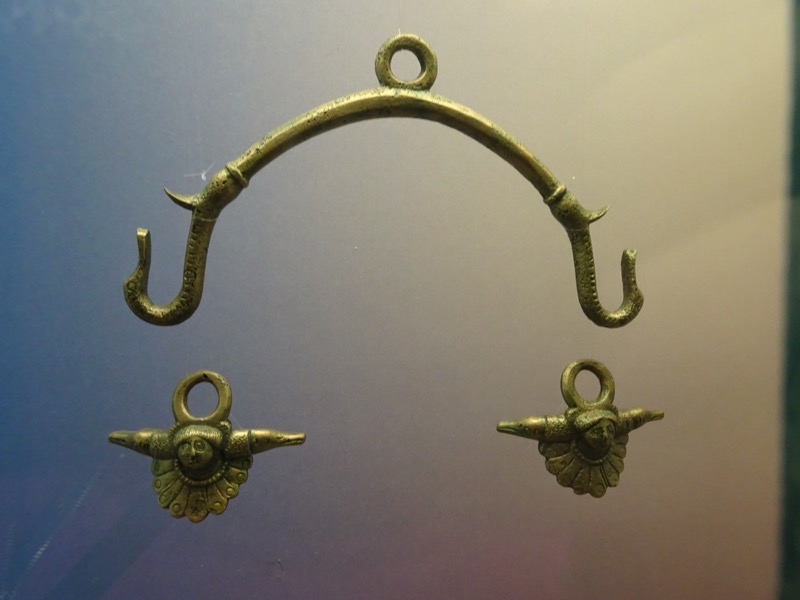
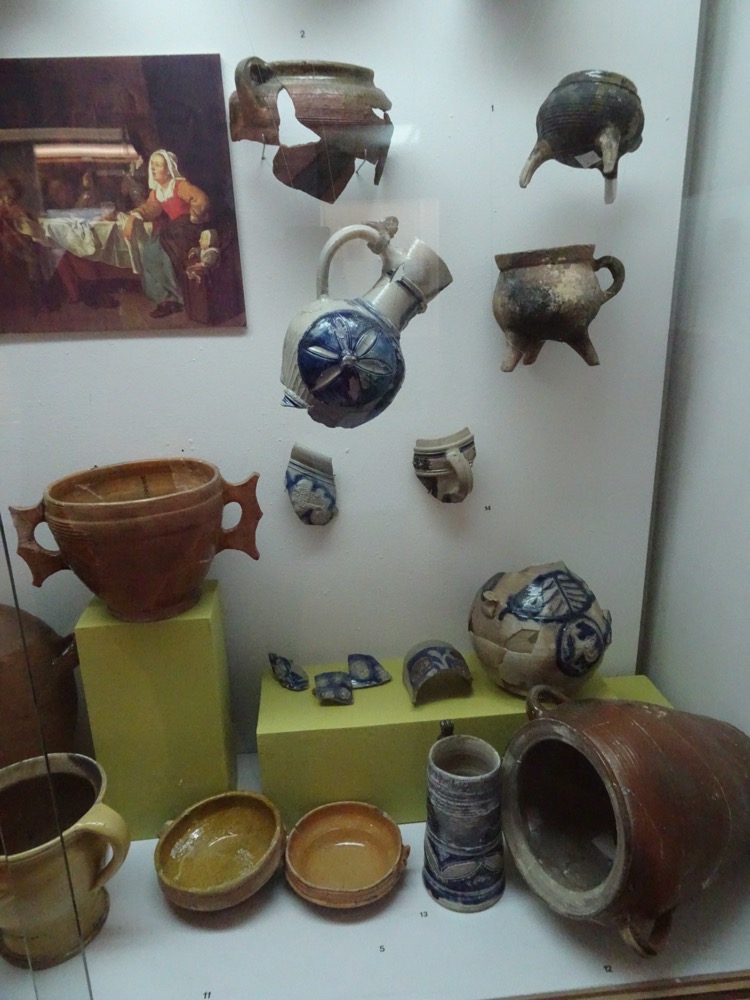
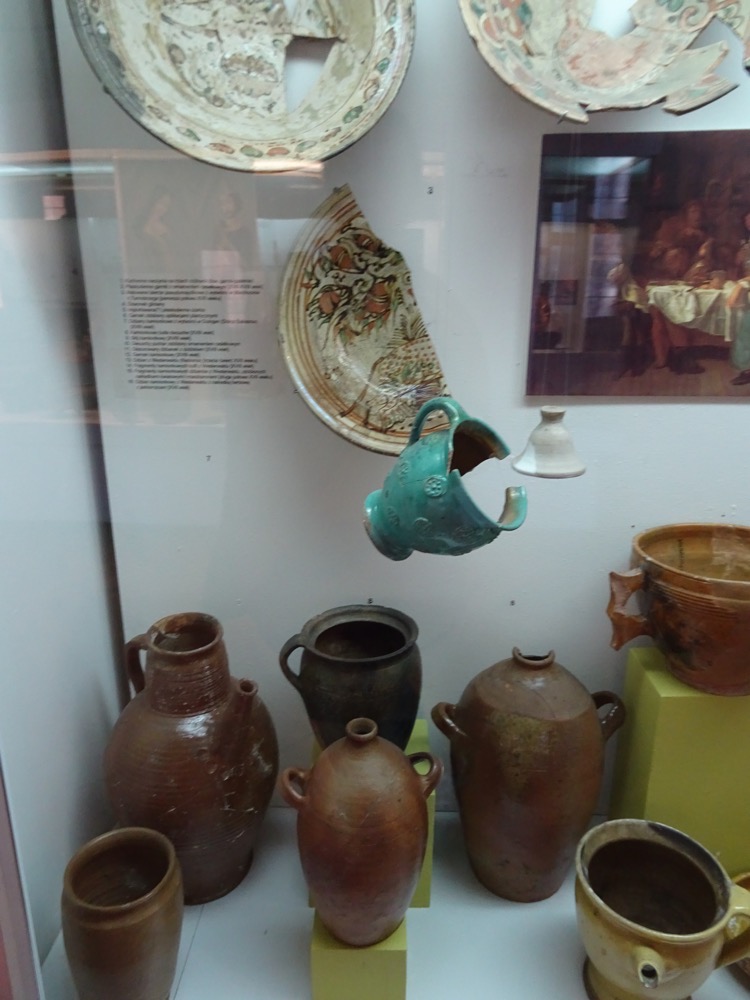
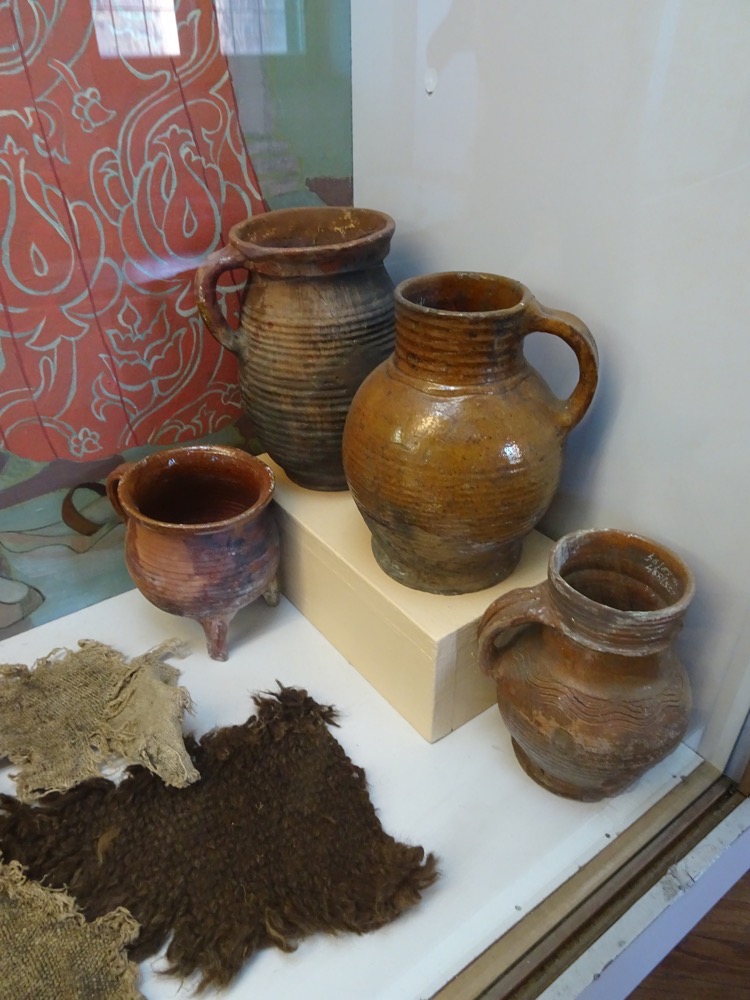
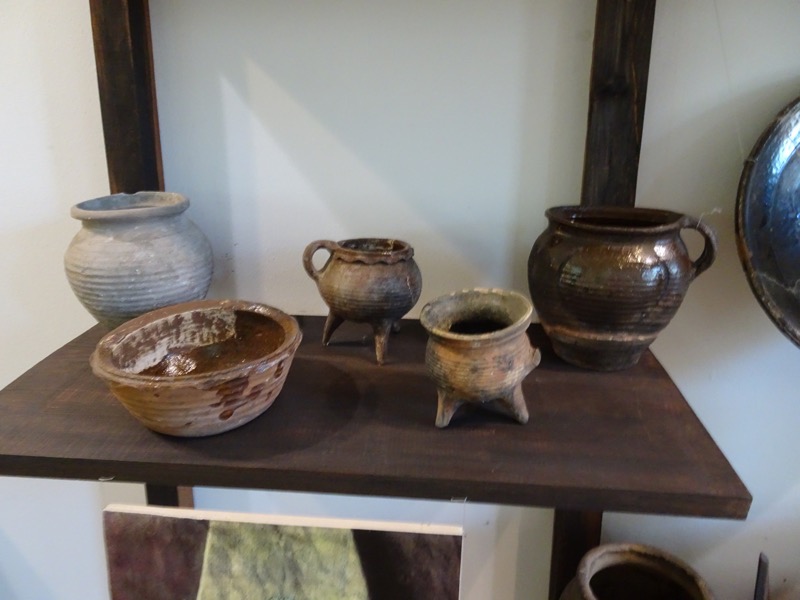
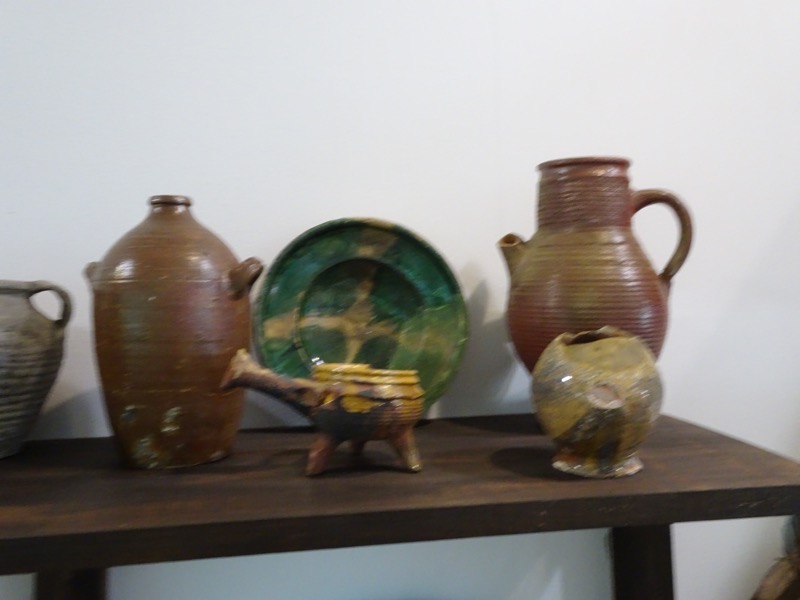
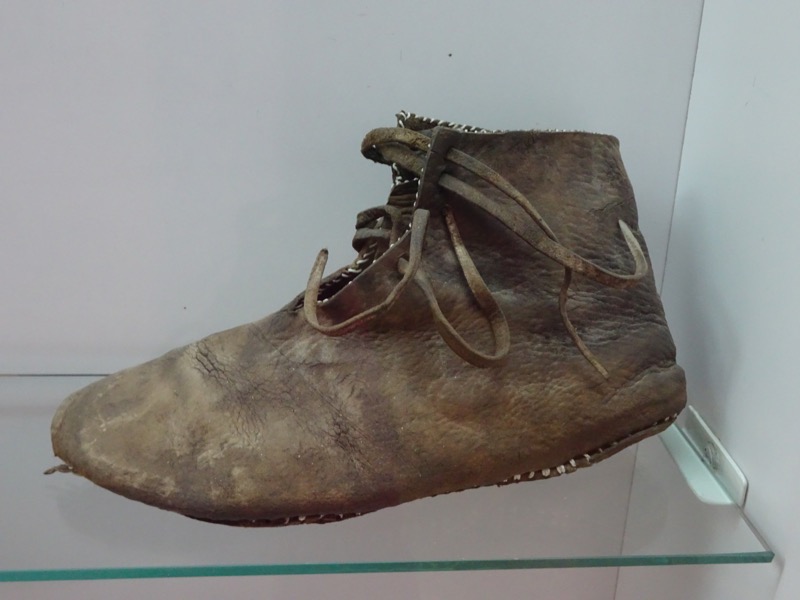
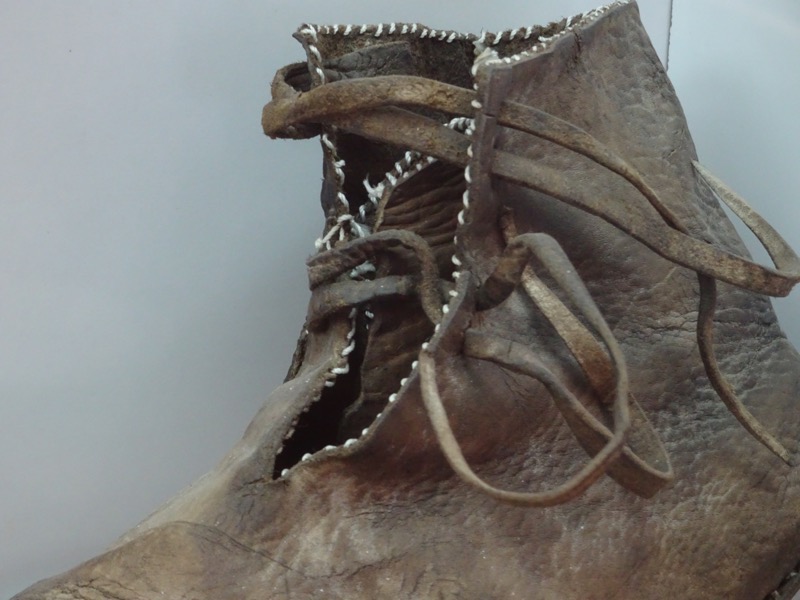
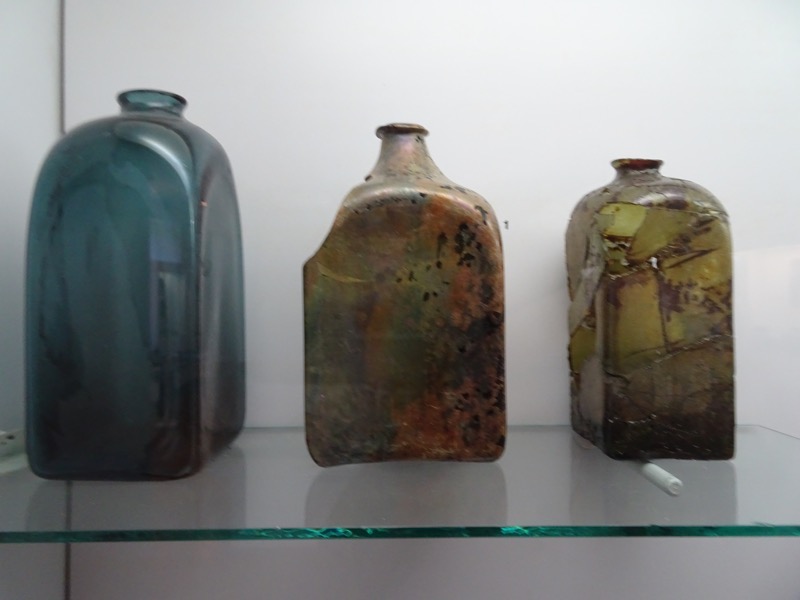 This was marked – it’s a 10th century viking longboat most likely used for trading and not so much for the war and the pillaging bit.
This was marked – it’s a 10th century viking longboat most likely used for trading and not so much for the war and the pillaging bit.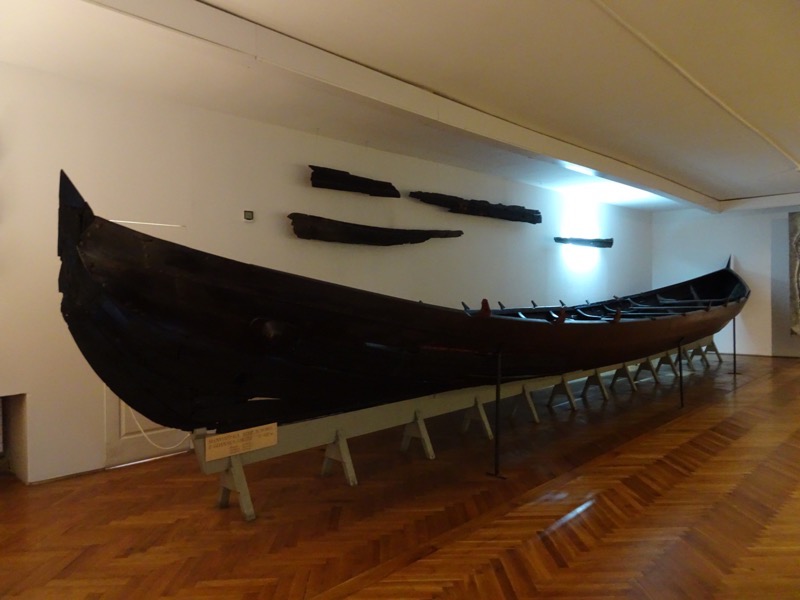
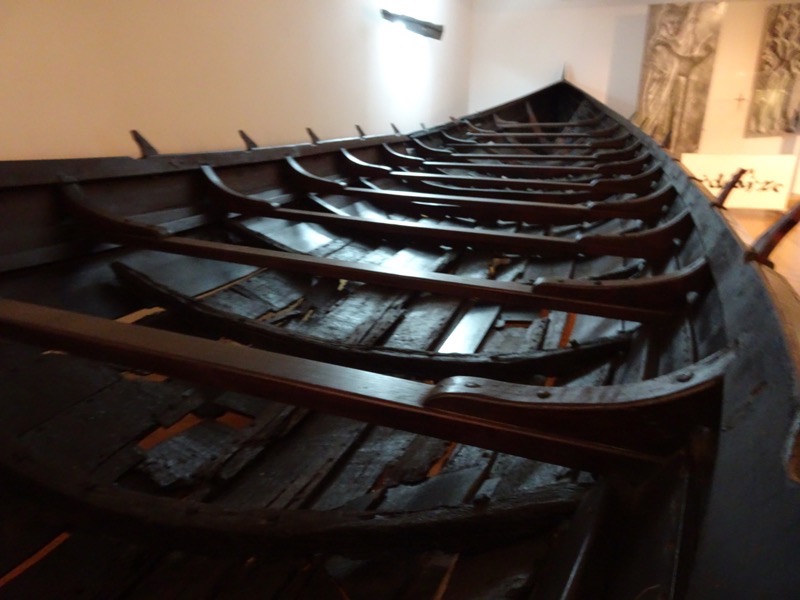
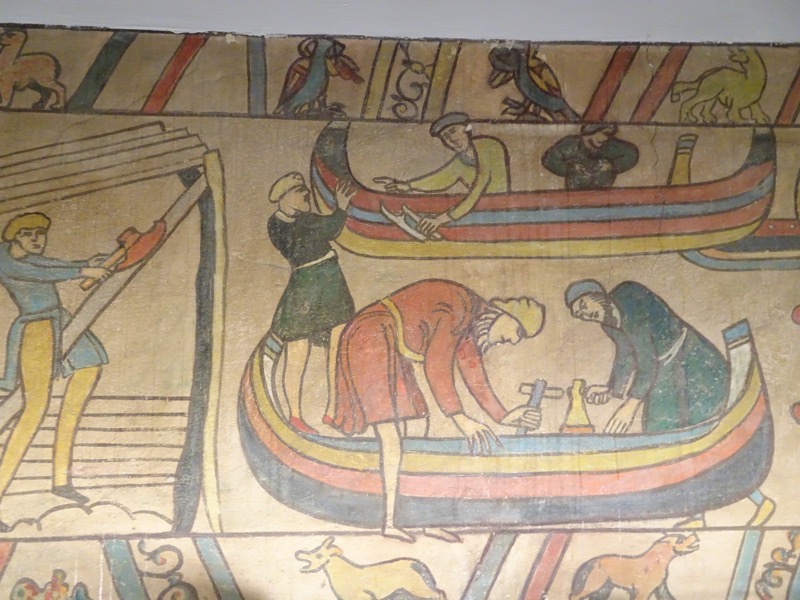
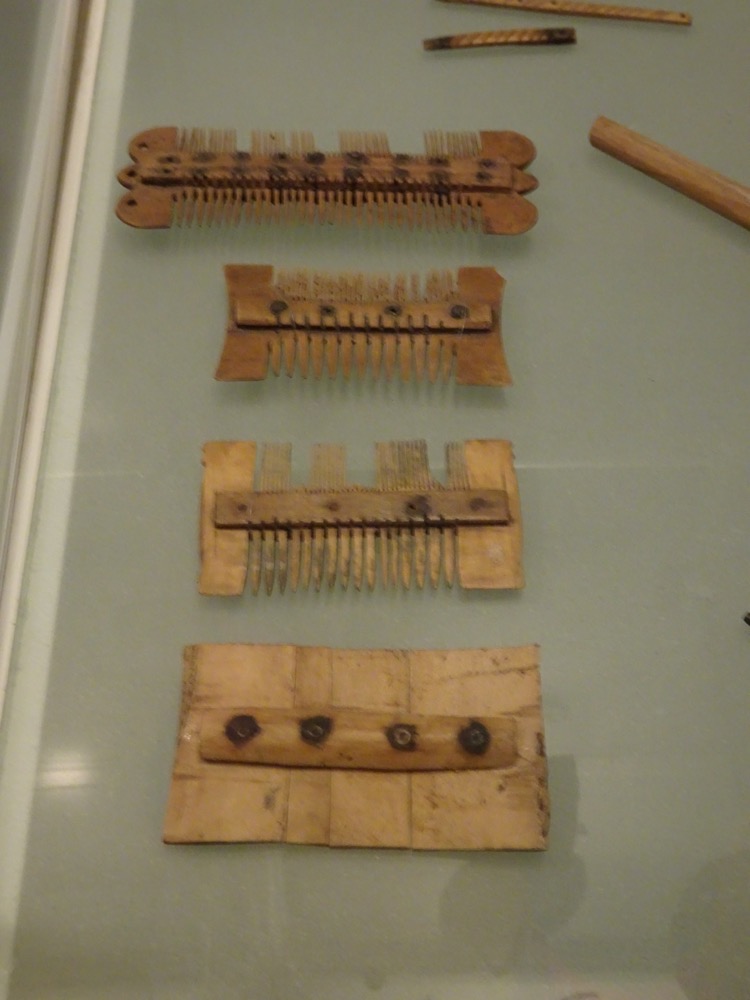
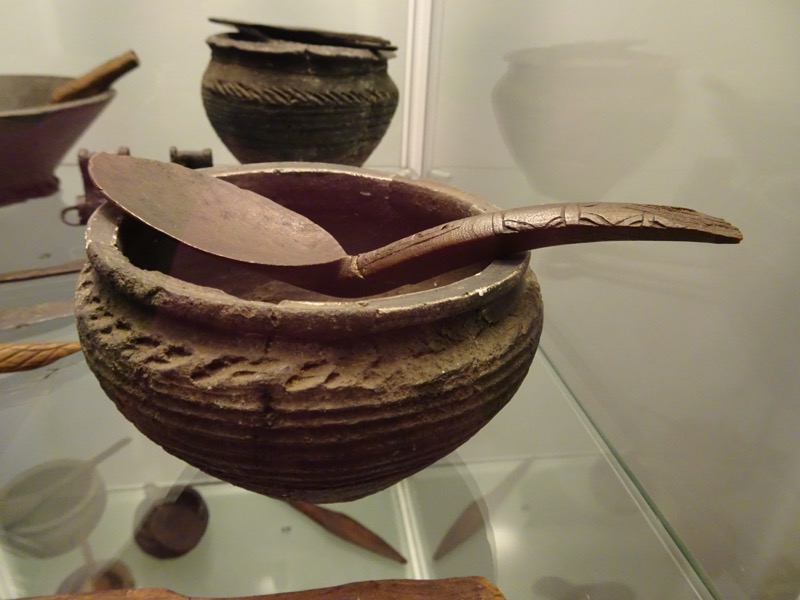
 The most noteable thing about the Gdansk Archeological Museum is how much of their collection was so completely lost during World War II. The Museum apparently had a remarkable collection of artefacts and now it is a hodge podge of what remains.
The most noteable thing about the Gdansk Archeological Museum is how much of their collection was so completely lost during World War II. The Museum apparently had a remarkable collection of artefacts and now it is a hodge podge of what remains. yale splashed out and ordered the Fried Foie Gras which was served with a beetroot sponge and truffle mousse – the sponge was light and fluffy as to be souffle-like, and the foie gras was rich and in a really meaty flavoursome sauce.
yale splashed out and ordered the Fried Foie Gras which was served with a beetroot sponge and truffle mousse – the sponge was light and fluffy as to be souffle-like, and the foie gras was rich and in a really meaty flavoursome sauce.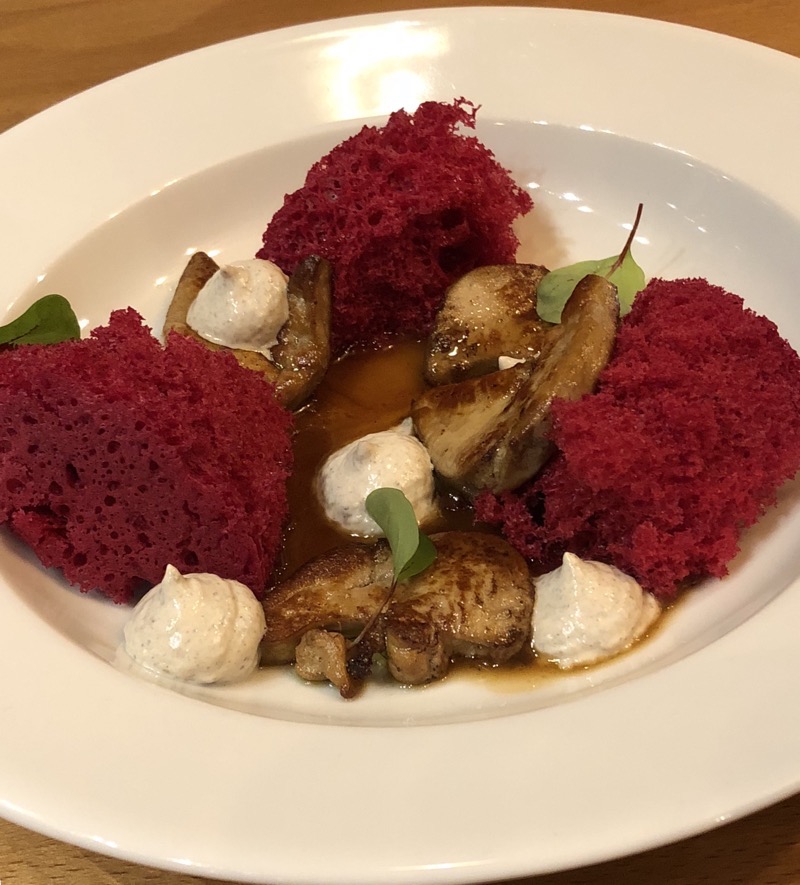 For a main, I ordered the Pork Tenderloin that came wrapped in bacon was served with pearl buckwheat and caramelised red onion jam. Fabulous!
For a main, I ordered the Pork Tenderloin that came wrapped in bacon was served with pearl buckwheat and caramelised red onion jam. Fabulous!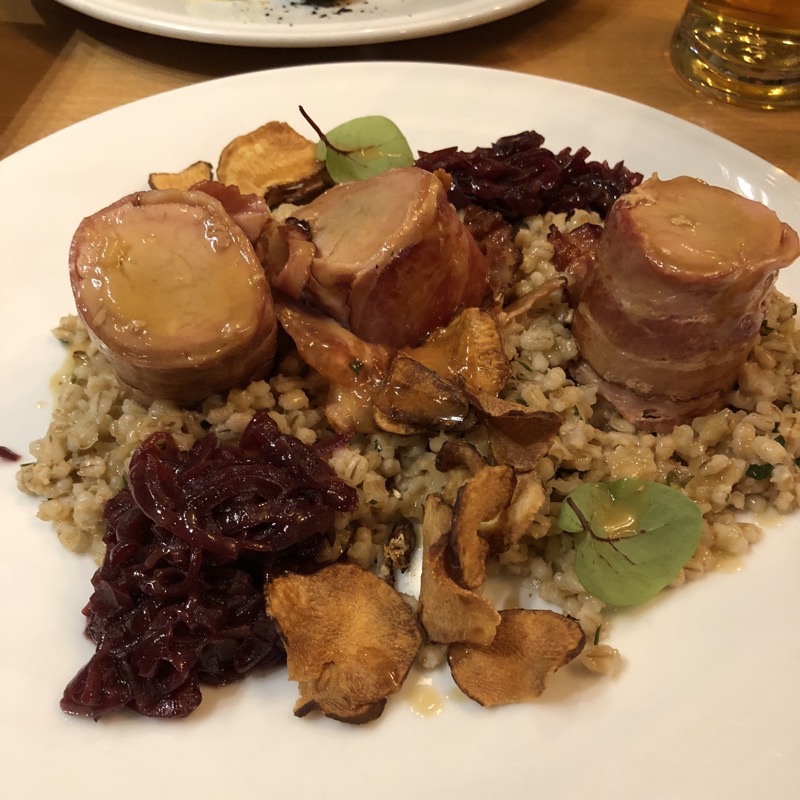 And becaue yale is a bottomless pit, he ordered two mains, Greased “Russian” dumplings with curd cheese filling served with bacon sprinkles and sour cream (the Polish love their sour cream!). These were very tasty also but a bit stodgy for my liking.
And becaue yale is a bottomless pit, he ordered two mains, Greased “Russian” dumplings with curd cheese filling served with bacon sprinkles and sour cream (the Polish love their sour cream!). These were very tasty also but a bit stodgy for my liking. And he also had the Guinea Fowl breast served with truffle potatoes and a vegetable ratatouille… which was also really really good.
And he also had the Guinea Fowl breast served with truffle potatoes and a vegetable ratatouille… which was also really really good.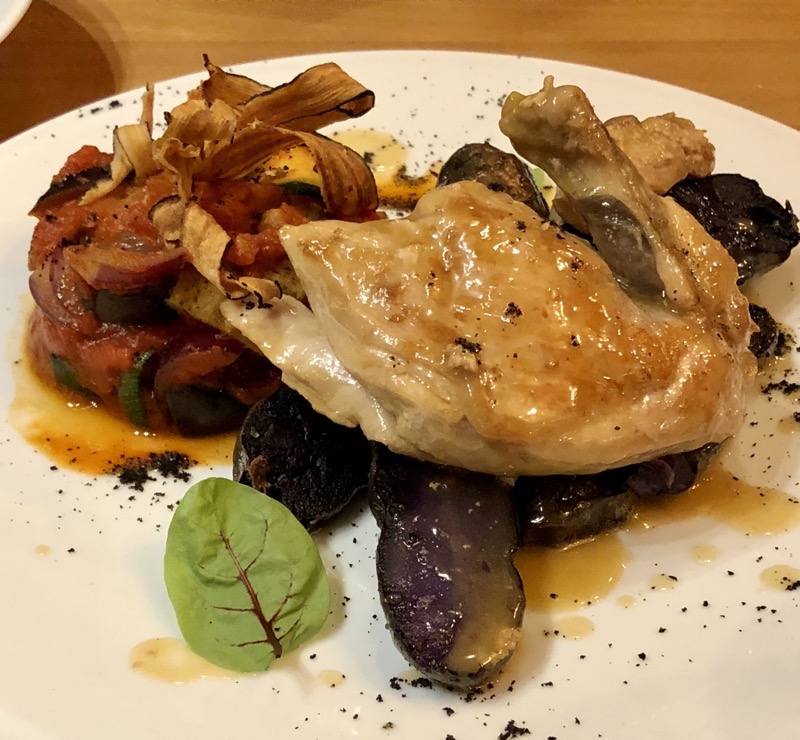 After this, we had to decline dessert – as the portions were much larger than you normally encounter in high-end restaurants. But our waiter was having none of that, said we can’t end our meal there and he brought us some complimentary freezing cold, cherry vodka liqueurs to try.
After this, we had to decline dessert – as the portions were much larger than you normally encounter in high-end restaurants. But our waiter was having none of that, said we can’t end our meal there and he brought us some complimentary freezing cold, cherry vodka liqueurs to try.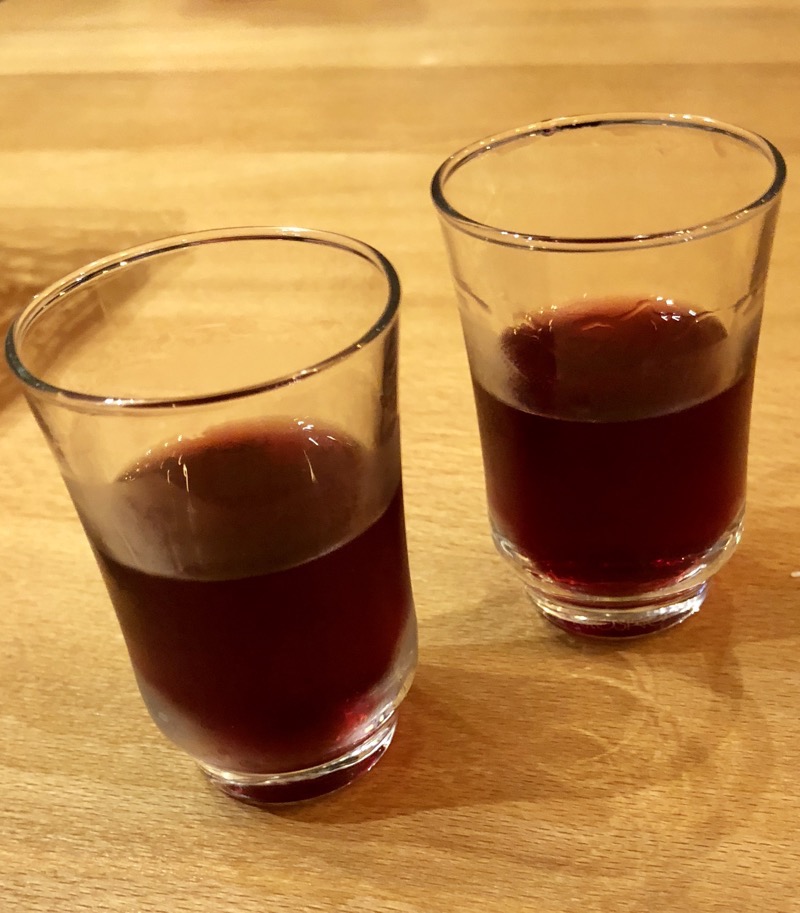 This stuff is amazing -Lubelska Wisniowka Cherry Vodka – I’m not normally one for cherry flavoured anything, but served freezing cold, it certainly warmed the cockles quicker than anything I’ve ever tried. Only 30% alcohol, I could have had two more.
This stuff is amazing -Lubelska Wisniowka Cherry Vodka – I’m not normally one for cherry flavoured anything, but served freezing cold, it certainly warmed the cockles quicker than anything I’ve ever tried. Only 30% alcohol, I could have had two more.
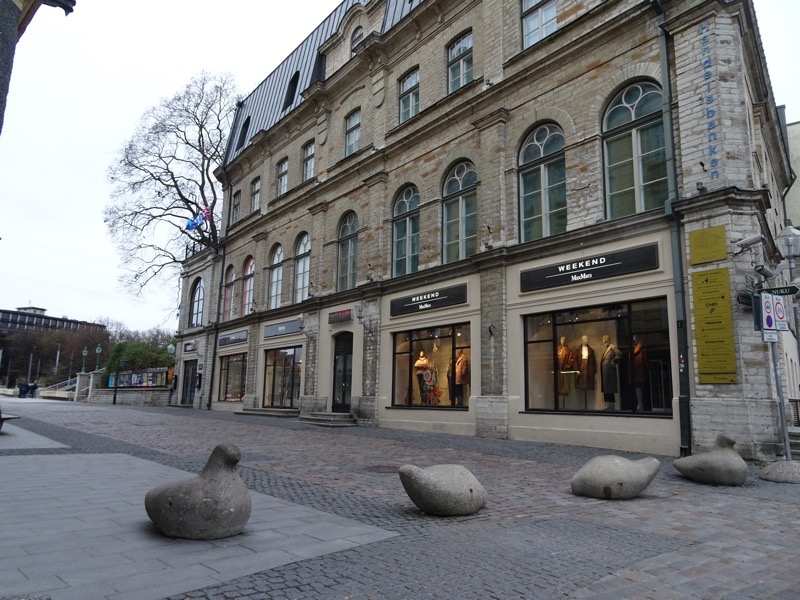 We found a great little cafe for breakfast which wasn’t so easy given that many places were just not open this early – you know, about 0930. It was called Revel and was warm and cosy and served up the best €4.95 brekkie ever – a potato, bacon, onion and mushroom bubble and squeak type deal with an egg on top. I didn’t finish it, but it was a delicious start to the day.
We found a great little cafe for breakfast which wasn’t so easy given that many places were just not open this early – you know, about 0930. It was called Revel and was warm and cosy and served up the best €4.95 brekkie ever – a potato, bacon, onion and mushroom bubble and squeak type deal with an egg on top. I didn’t finish it, but it was a delicious start to the day.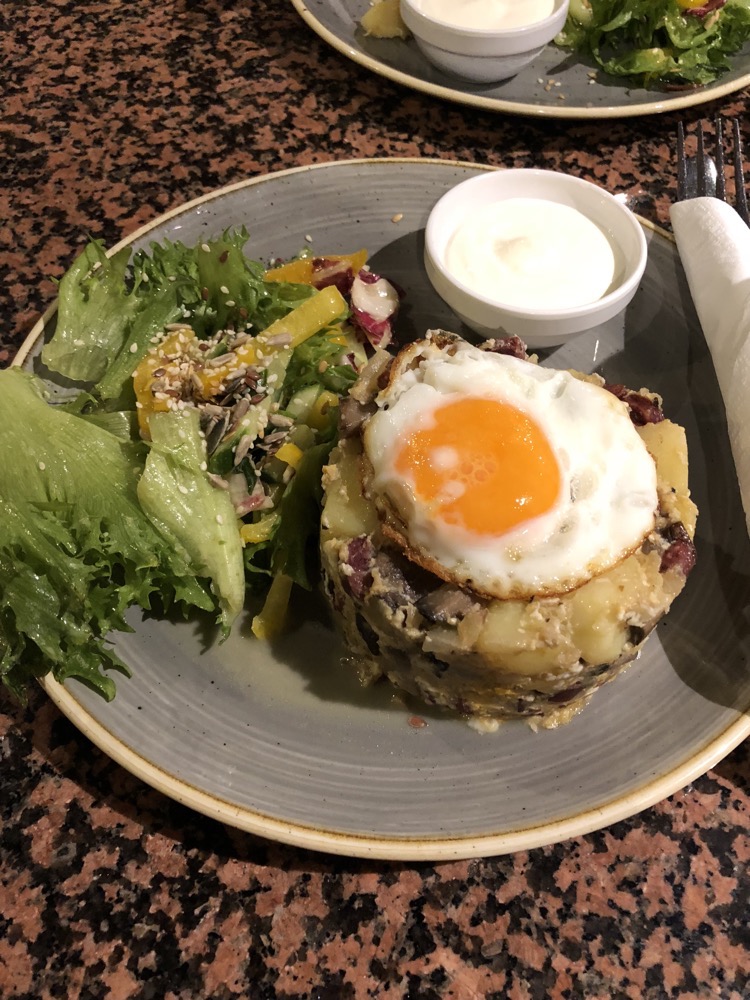
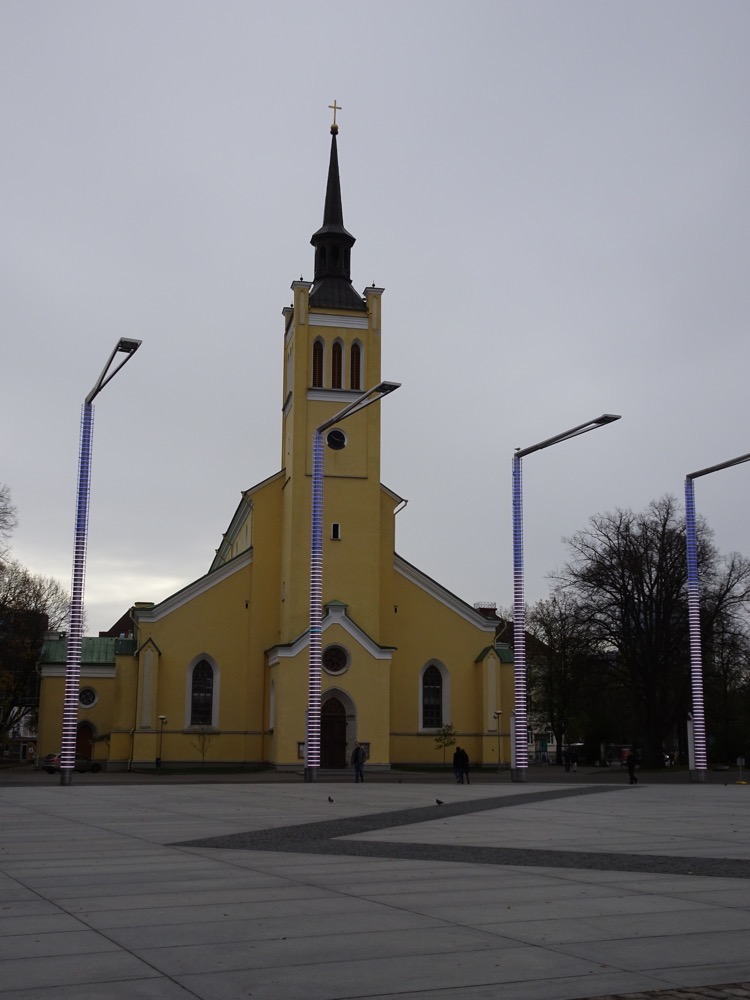 Across the Square, the imposing War of Independence Victory Column is currently under wraps. It is a tall, usually well-lit plinth with an enormous cross on it. Usually, I try to crop the scaffolded buildings and monuments out of my photos, but this one struck me as a bit of a monument in its own right. It was only unveiled about a decade ago and already under scaffold… I think this piece is currently a monument to the: ‘They Don’t Make ‘Em Like They Used To’ field of civic building.
Across the Square, the imposing War of Independence Victory Column is currently under wraps. It is a tall, usually well-lit plinth with an enormous cross on it. Usually, I try to crop the scaffolded buildings and monuments out of my photos, but this one struck me as a bit of a monument in its own right. It was only unveiled about a decade ago and already under scaffold… I think this piece is currently a monument to the: ‘They Don’t Make ‘Em Like They Used To’ field of civic building.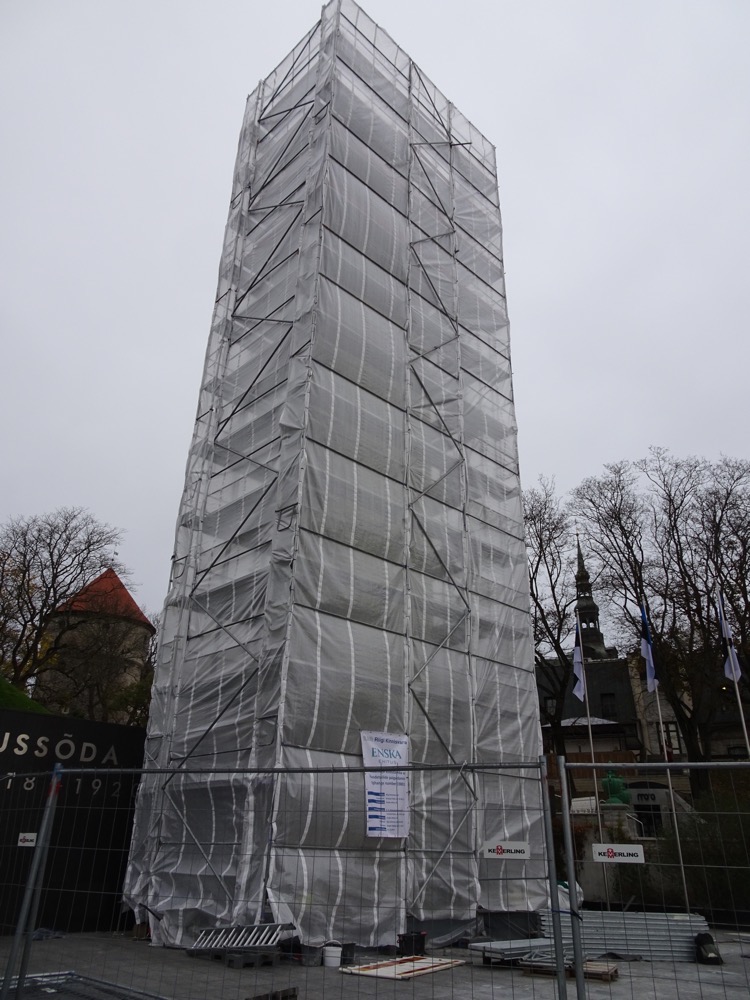 On the hill above the Independence Square was the marker for the Baltic Way – commemorating the 2,000,000 people that formed a human chain across the 675kms from Tallinn to Riga to Vilnius on 23rd of August 1989. The plaques were bestowed by the city of Vilnius, we will have to find the Riga one when we get there too, I think. The Baltic Way event occurred to commemorate the stunning peaceable act that was to protest against the Molotov-Ribbentrop protocols.
On the hill above the Independence Square was the marker for the Baltic Way – commemorating the 2,000,000 people that formed a human chain across the 675kms from Tallinn to Riga to Vilnius on 23rd of August 1989. The plaques were bestowed by the city of Vilnius, we will have to find the Riga one when we get there too, I think. The Baltic Way event occurred to commemorate the stunning peaceable act that was to protest against the Molotov-Ribbentrop protocols.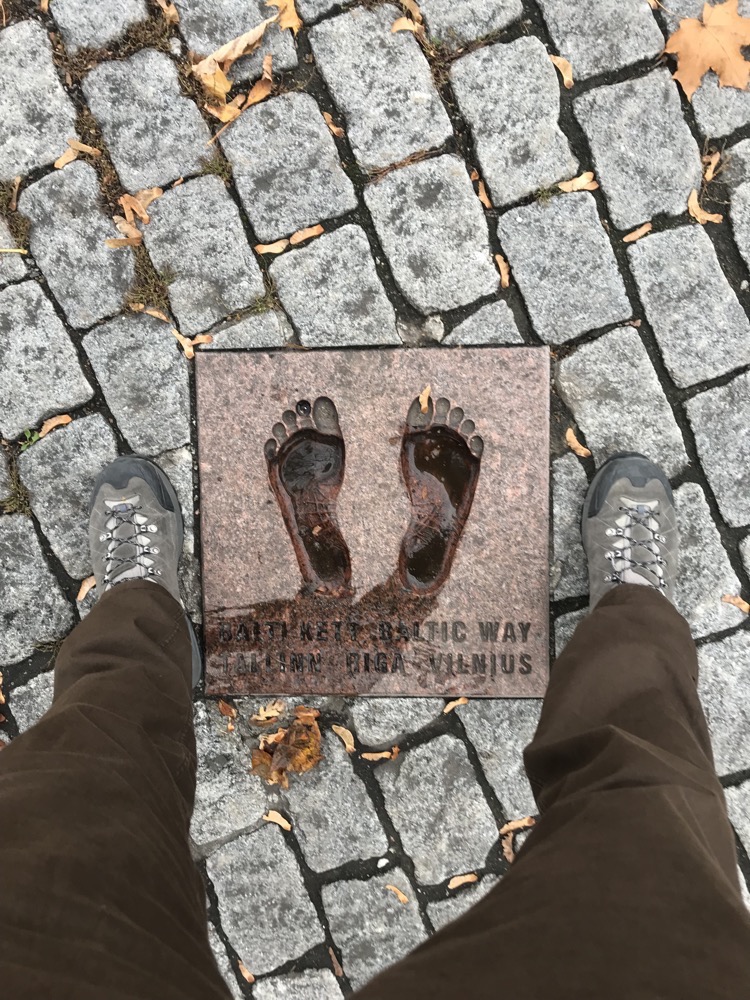 I am so totally in love with the autumn colours – we experience nothing like this in subtropical Brisbane.
I am so totally in love with the autumn colours – we experience nothing like this in subtropical Brisbane.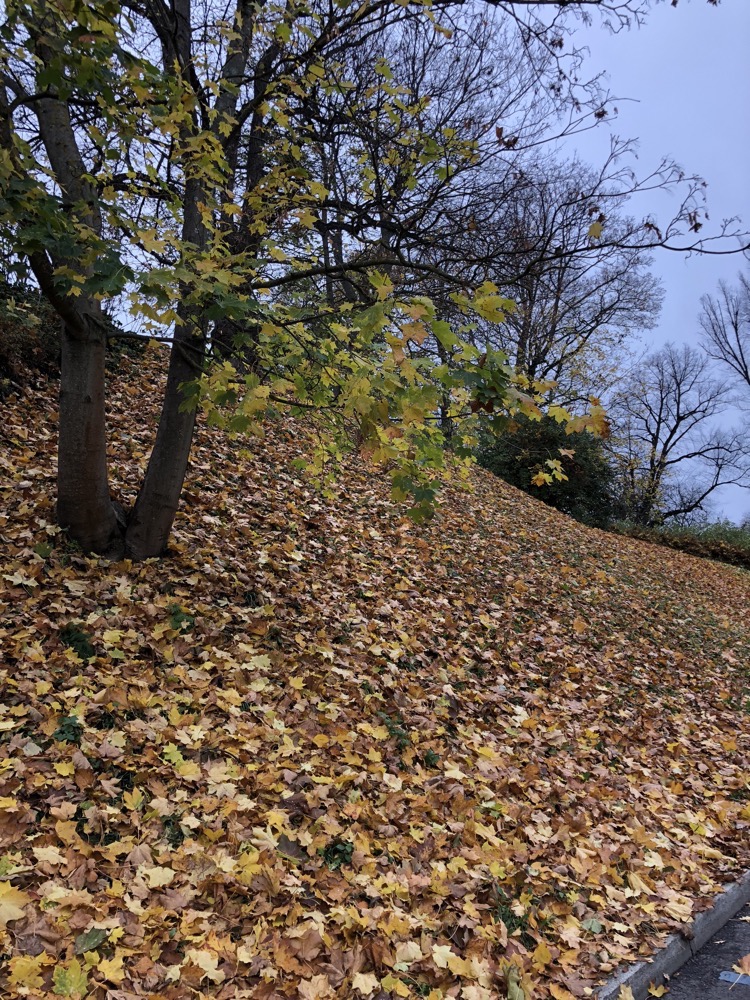 Not far from Independence Square is the Kiek in de Kök – a restored cannon tower from the 15th century that is now a museum. The name, Kiek in de Kök, literally means ‘peek in the kitchen’ in German; the tower got its name from stories about how soldiers in the fortification could peek from the top of the tower into the kitchens of the town below.
Not far from Independence Square is the Kiek in de Kök – a restored cannon tower from the 15th century that is now a museum. The name, Kiek in de Kök, literally means ‘peek in the kitchen’ in German; the tower got its name from stories about how soldiers in the fortification could peek from the top of the tower into the kitchens of the town below. 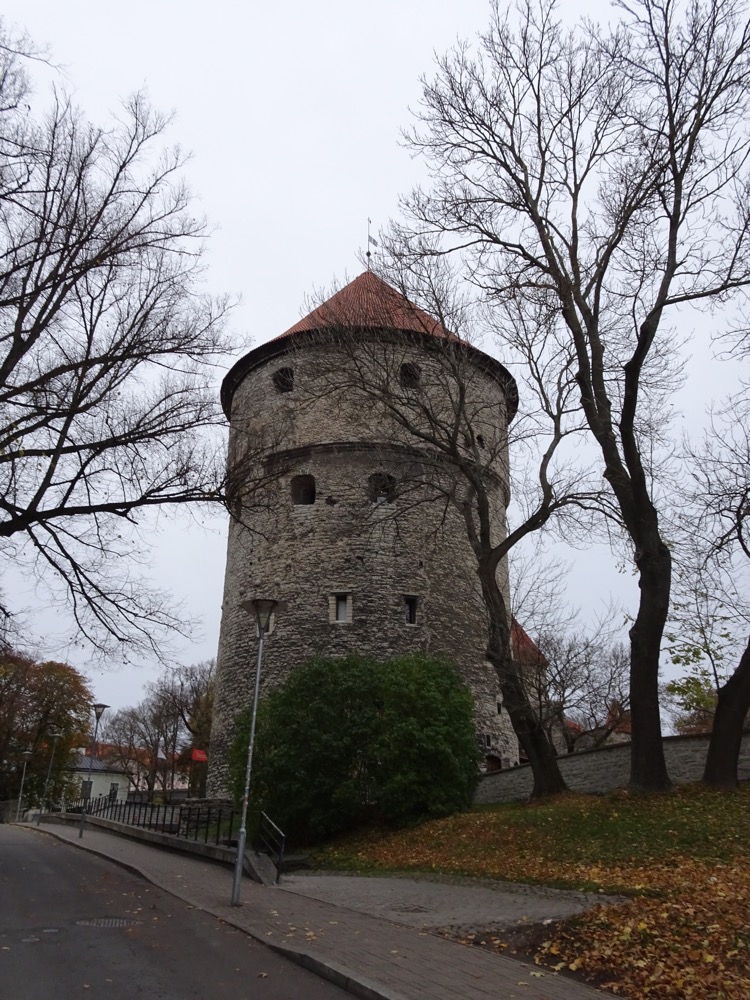 Nearby is the sturdy 14th century, Maiden’s Tower which is currently a cafe and small museum which oddly focuses on the culinary arts and the art of war – interesting combo. We thought we may double back around on these museums later if it started raining and we needed to take refuge indoors (it didn’t and we didn’t).
Nearby is the sturdy 14th century, Maiden’s Tower which is currently a cafe and small museum which oddly focuses on the culinary arts and the art of war – interesting combo. We thought we may double back around on these museums later if it started raining and we needed to take refuge indoors (it didn’t and we didn’t).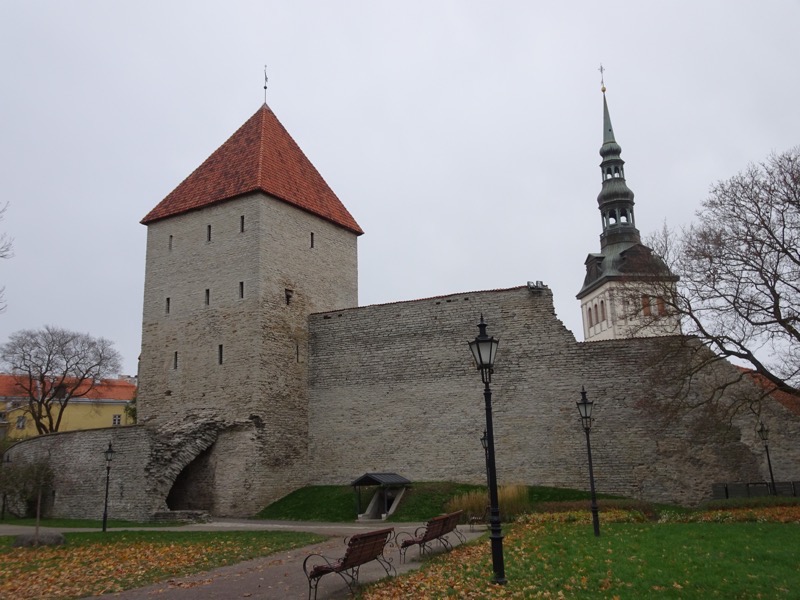 Up a small hill from the Maiden’s Tower is the decidedly pink Toompea Palace. The Palace/Castle was erected on the foundations of the crumbling eastern wing of the 13th – 14th century fortress that was on this site. The Baroque castle was built in the late 18th century, and is now the Estonia parliament, complete with carpark and (out of frame to the left) be-logo’d scaffolding, which I am now convinced is permanent, as it was here last year and isn’t covering or protecting anything, just being used as a visual divider between the road and the palace.
Up a small hill from the Maiden’s Tower is the decidedly pink Toompea Palace. The Palace/Castle was erected on the foundations of the crumbling eastern wing of the 13th – 14th century fortress that was on this site. The Baroque castle was built in the late 18th century, and is now the Estonia parliament, complete with carpark and (out of frame to the left) be-logo’d scaffolding, which I am now convinced is permanent, as it was here last year and isn’t covering or protecting anything, just being used as a visual divider between the road and the palace.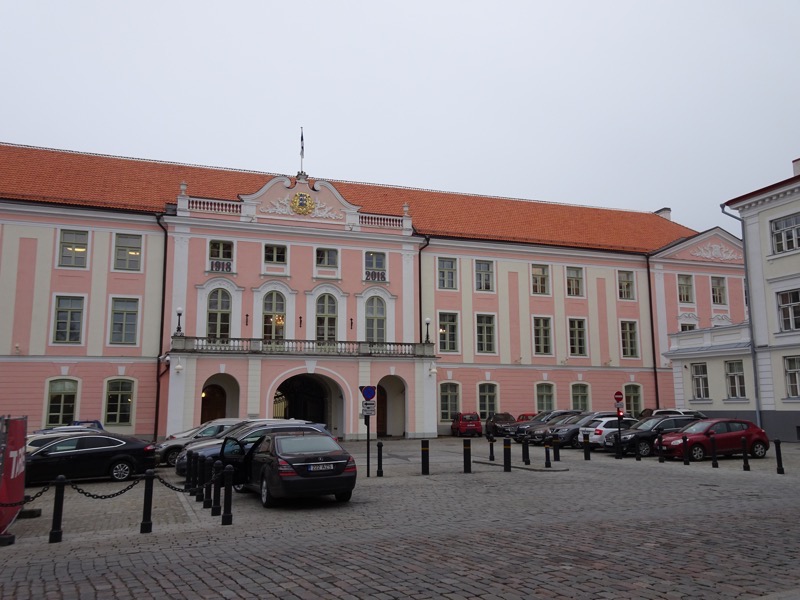 Across the street is the Alexander Nevsky Cathedral which is Tallinn’s largest and grandest orthodox cupola cathedral and is dedicated to Saint Alexander Nevsky, and the locals hate it. Apparently, the cathedral was built during the late 19th century as part of the efforts to Russify Estonia. It is so heartily disliked by many Estonians as a symbol of abject oppression, such that Estonia officials had scheduled the cathedral for demolition in 1924,. The only reason the cathedral is still standing is due to lack of money – it was going to be an expensive effort to destroy and remove the massive construction. After Estonia gained their independence, the Estonian parliament again started to discuss plans to demolish Cathedral in the 1990s! Seriously as recently as 30 years ago they wanted to demolish this beautiful building to extend the parking lot for the members of Parliament!
Across the street is the Alexander Nevsky Cathedral which is Tallinn’s largest and grandest orthodox cupola cathedral and is dedicated to Saint Alexander Nevsky, and the locals hate it. Apparently, the cathedral was built during the late 19th century as part of the efforts to Russify Estonia. It is so heartily disliked by many Estonians as a symbol of abject oppression, such that Estonia officials had scheduled the cathedral for demolition in 1924,. The only reason the cathedral is still standing is due to lack of money – it was going to be an expensive effort to destroy and remove the massive construction. After Estonia gained their independence, the Estonian parliament again started to discuss plans to demolish Cathedral in the 1990s! Seriously as recently as 30 years ago they wanted to demolish this beautiful building to extend the parking lot for the members of Parliament! 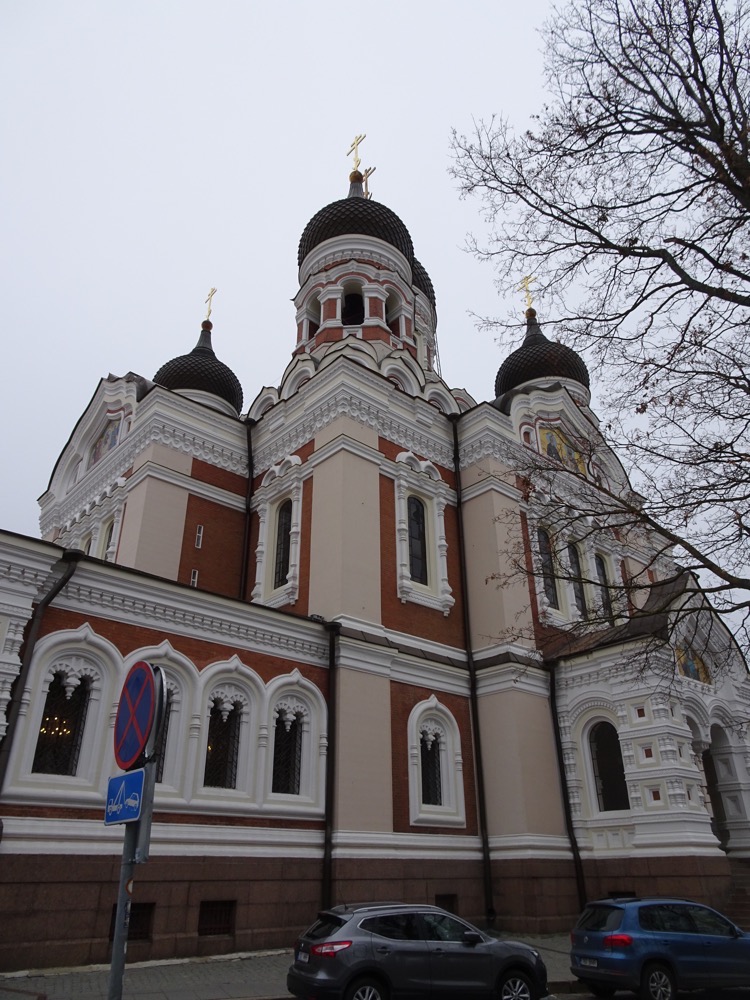
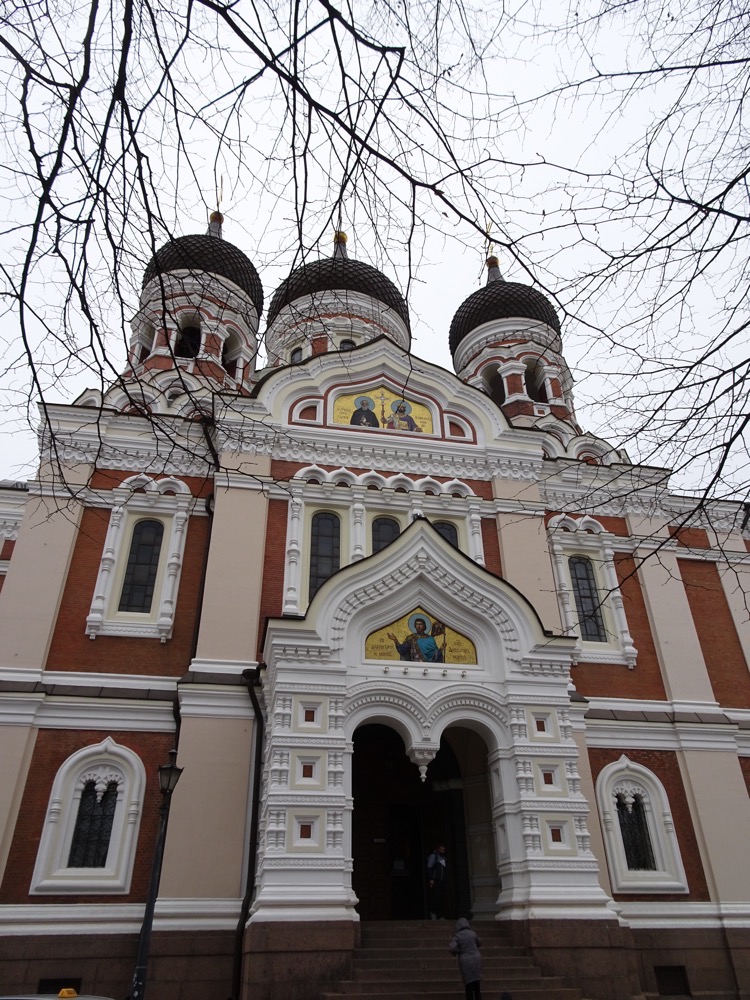
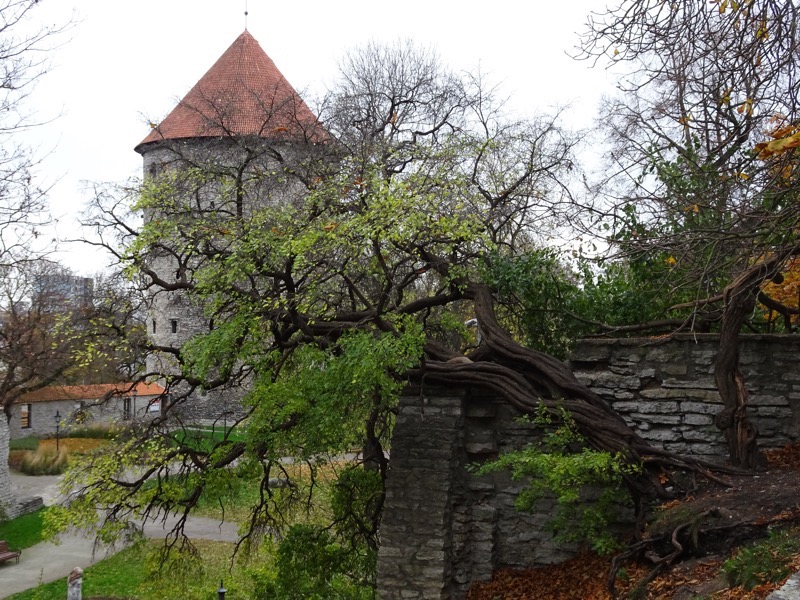 I love these street lamps – I wish I could take one home for the front garden… it would only look a little out of place.
I love these street lamps – I wish I could take one home for the front garden… it would only look a little out of place.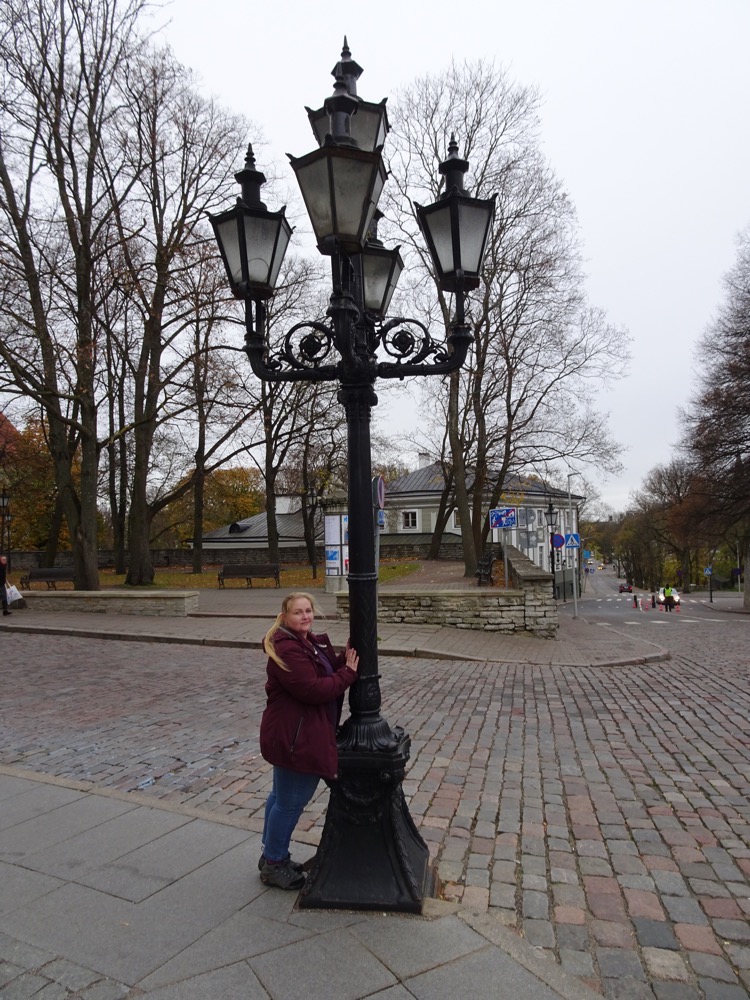 It was supposed to only get to 7°C today, but with the wind chill, feel more like 2-3°C and a high possibility of rain, so I wore my Fantastic Purple Jacket Of Warmth that I bought last year in Oslo on the end of season bargain shelves for €50 – only problem is as soon as you are indoors, you’re overheating like mad, so it’s on and off, on and off, with the jacket all day.
It was supposed to only get to 7°C today, but with the wind chill, feel more like 2-3°C and a high possibility of rain, so I wore my Fantastic Purple Jacket Of Warmth that I bought last year in Oslo on the end of season bargain shelves for €50 – only problem is as soon as you are indoors, you’re overheating like mad, so it’s on and off, on and off, with the jacket all day.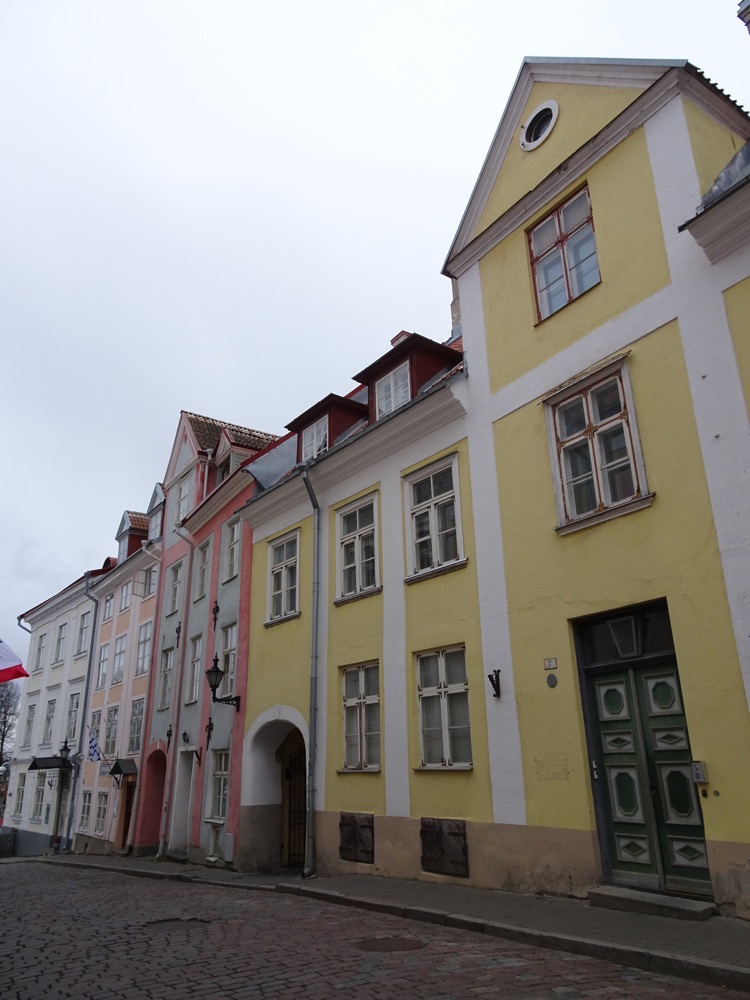 Souvenirs – the more I travel, the more I realise that I like to look at souvenirs and see what sort of things people make/sell to represent their towns and special places, but I don’t actually like to buy souvenirs.
Souvenirs – the more I travel, the more I realise that I like to look at souvenirs and see what sort of things people make/sell to represent their towns and special places, but I don’t actually like to buy souvenirs. 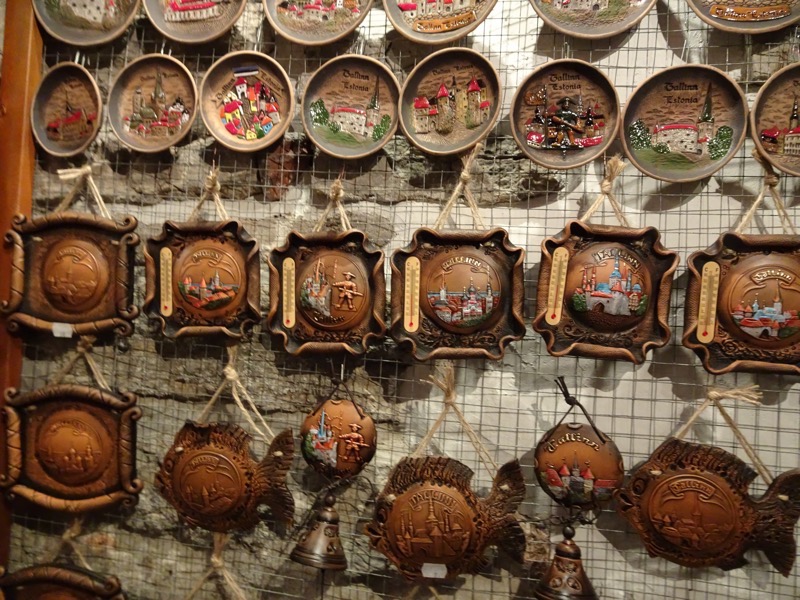
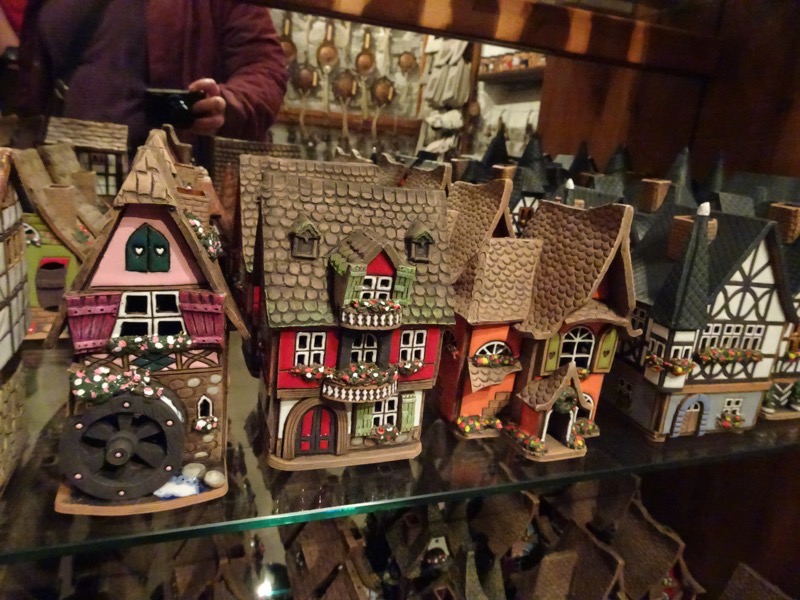 Vikings – with horns or course.
Vikings – with horns or course.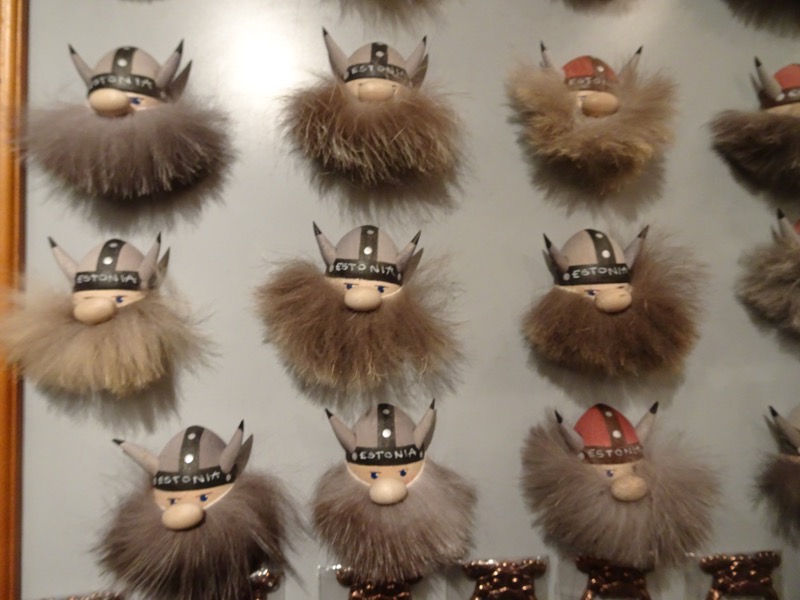
 I love these heavy felted fun wool hats – I’d love to be able to take half a dozen of them home for friends, but at €45-55 and knowing how little wear they would get in Queensland, it just doesn’t seem a sensible proposition.
I love these heavy felted fun wool hats – I’d love to be able to take half a dozen of them home for friends, but at €45-55 and knowing how little wear they would get in Queensland, it just doesn’t seem a sensible proposition.  Around the corner is the Toomkirik or St Mary’s Cathedral. Originally dating from the 13th century, the medieval church has a Baroque bell tower and an amazing organ inside that someone was playing this morning.
Around the corner is the Toomkirik or St Mary’s Cathedral. Originally dating from the 13th century, the medieval church has a Baroque bell tower and an amazing organ inside that someone was playing this morning.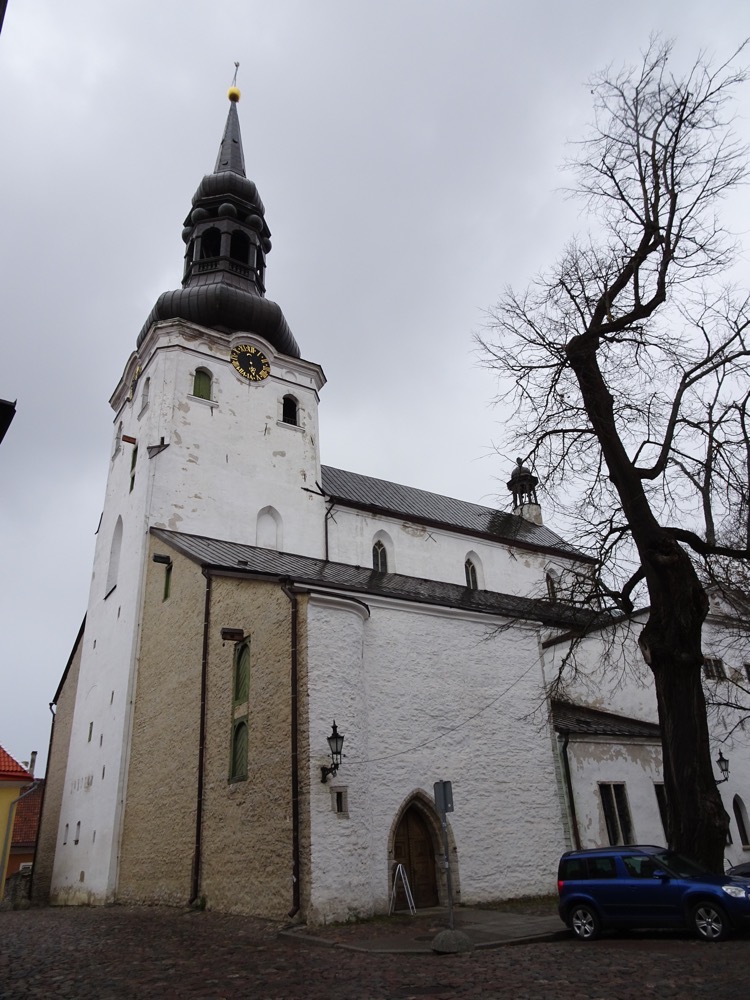
 The Toomkirik is the oldest church in Tallinn and mainland Estonia. It is also the only building in the Toompea area that survived a severe fire in the 17th century fire.
The Toomkirik is the oldest church in Tallinn and mainland Estonia. It is also the only building in the Toompea area that survived a severe fire in the 17th century fire.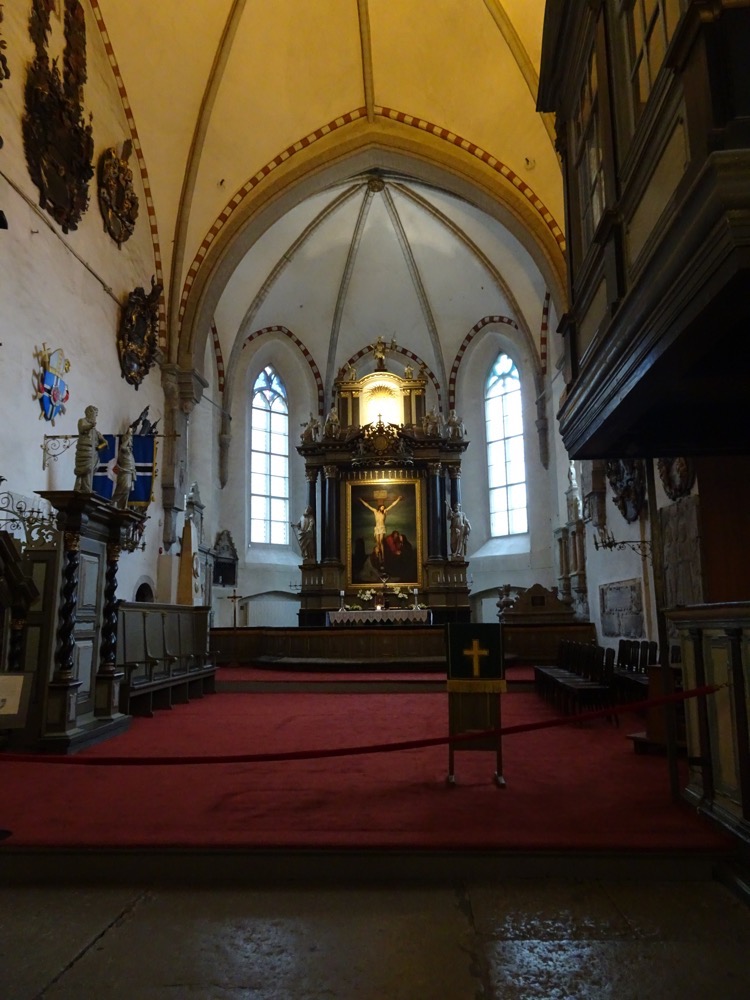
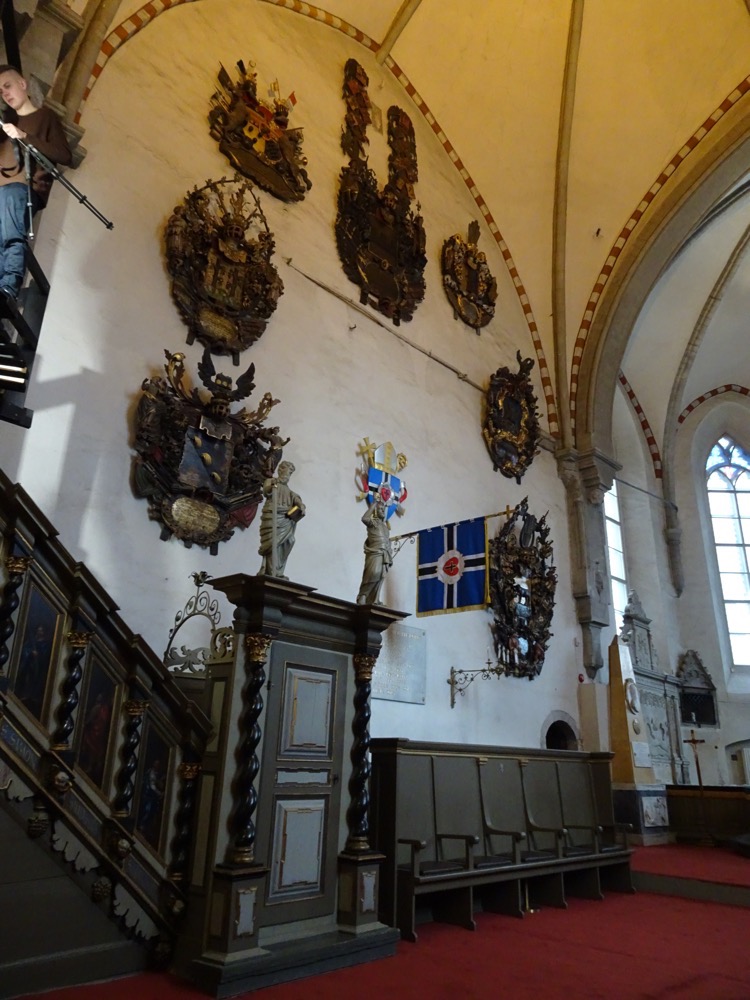
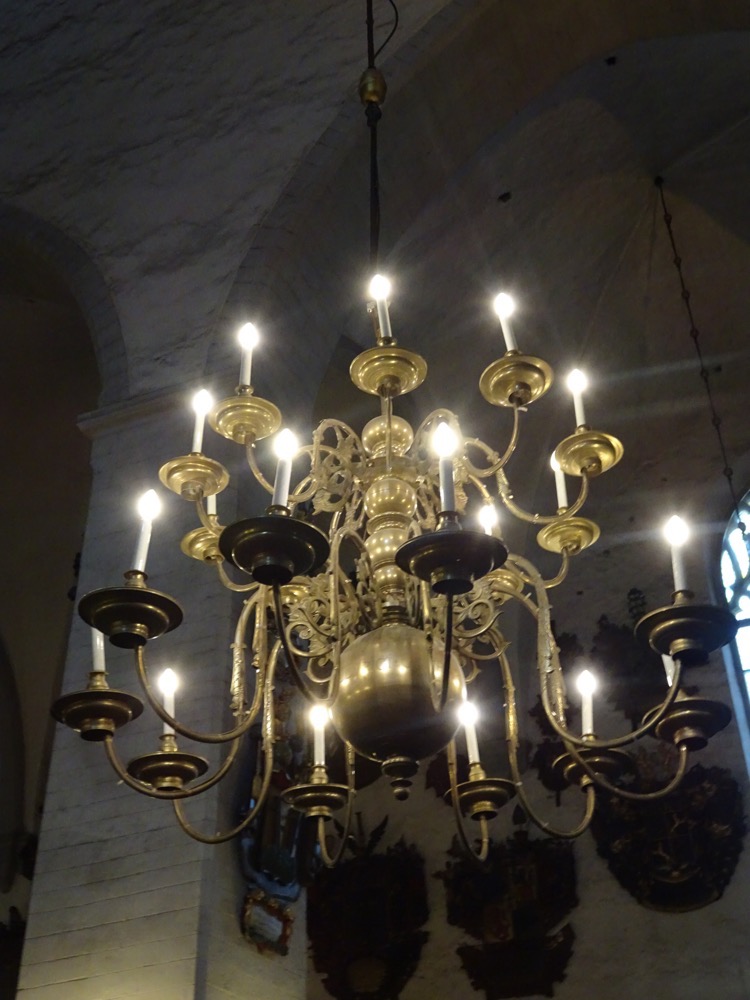
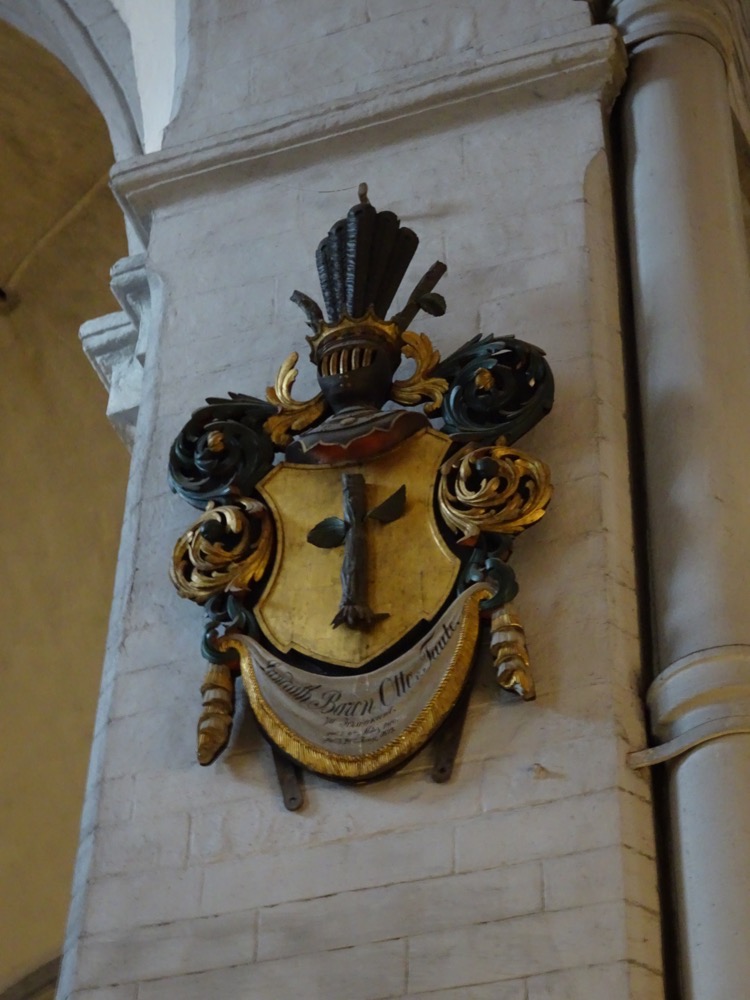 The interior is rather austere with these enormous high pews that congregants would sit in, probably as a family, quite pointedly separated from the people in front and behind them. yale for scale:
The interior is rather austere with these enormous high pews that congregants would sit in, probably as a family, quite pointedly separated from the people in front and behind them. yale for scale: I can’t hardly see the altar over the pew… borys for scale:
I can’t hardly see the altar over the pew… borys for scale: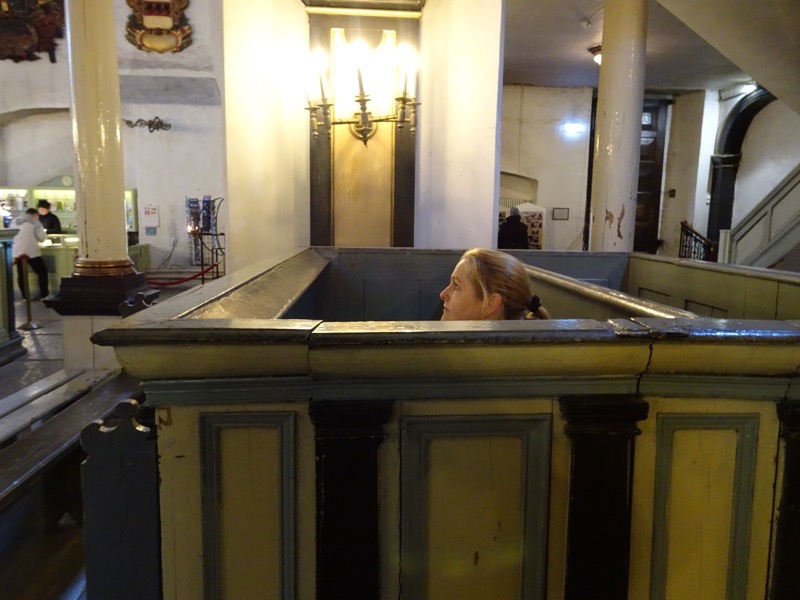
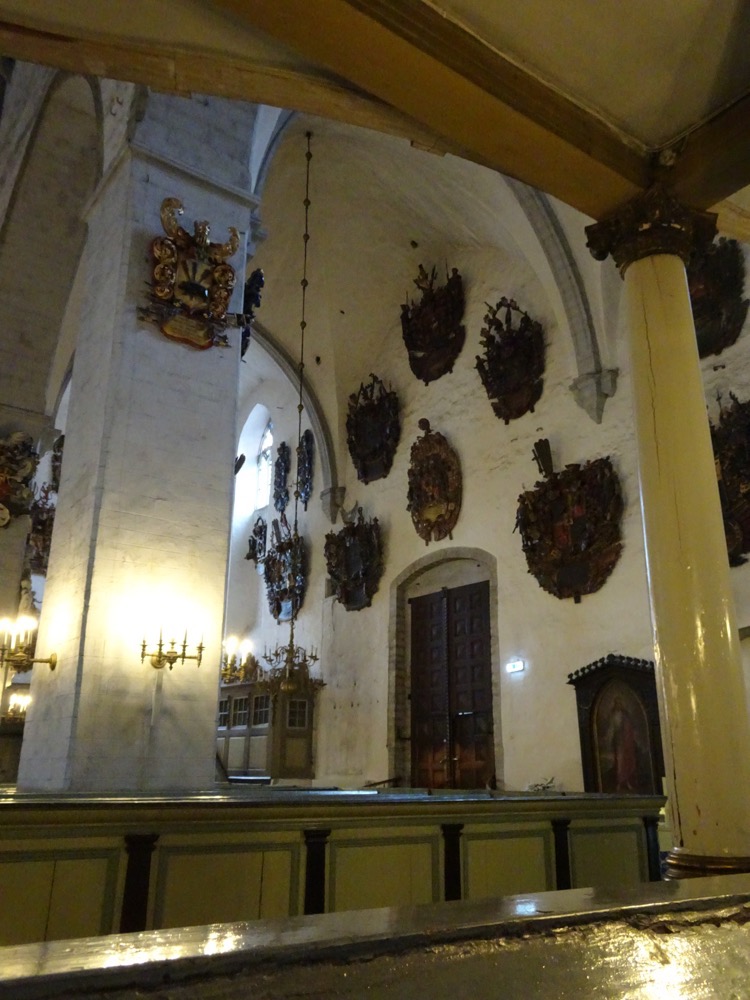 After leaving St Mary’s we walked around to the first of several viewing platforms to see over the city – the Piiskopi viewing platform faces over more modern areas of Tallinn.
After leaving St Mary’s we walked around to the first of several viewing platforms to see over the city – the Piiskopi viewing platform faces over more modern areas of Tallinn.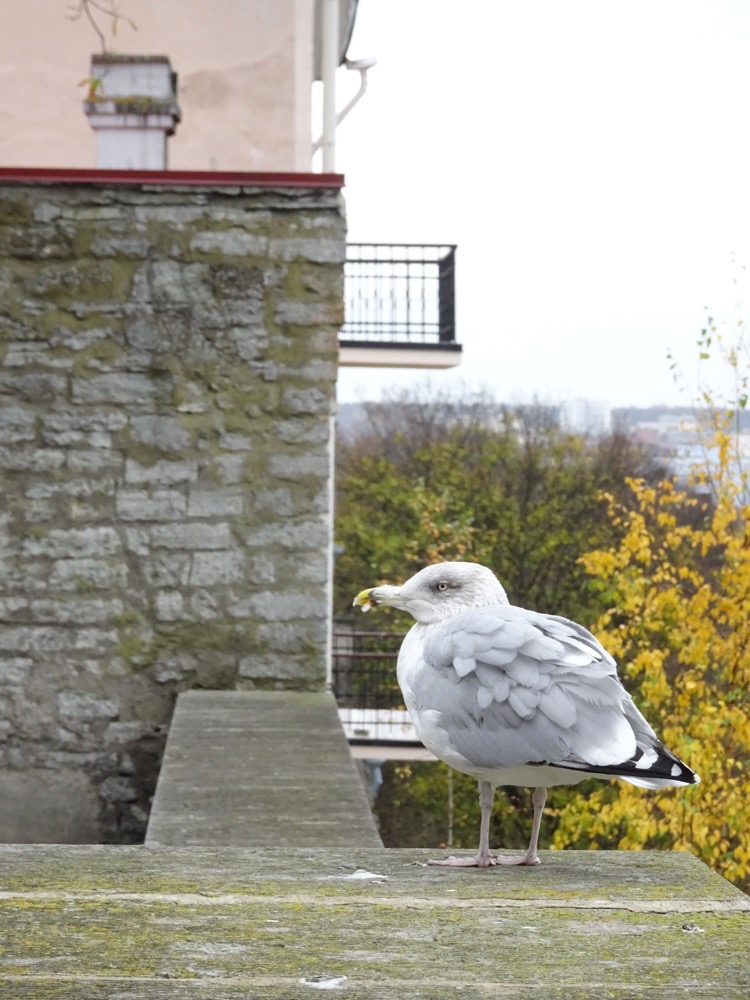
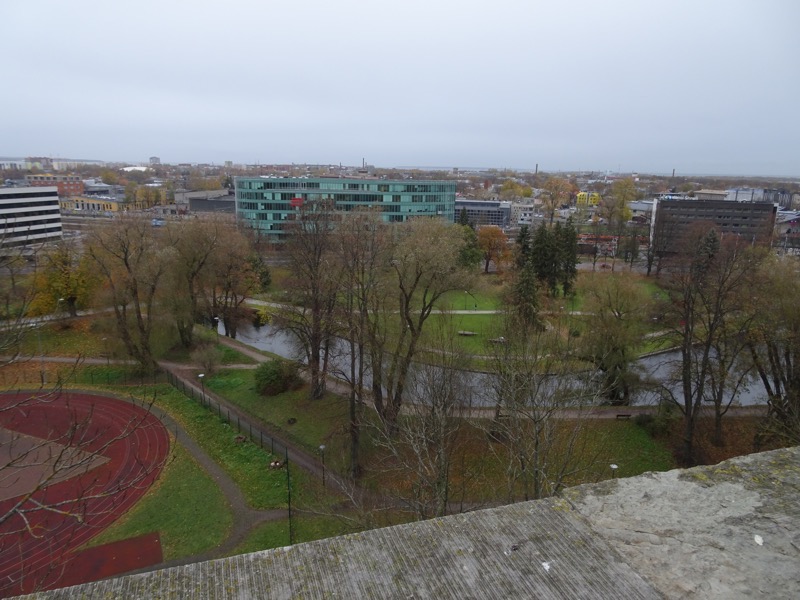 And there was no one here! Amazing… especially after still feeling swamped by tourists in Prague and Kiev.
And there was no one here! Amazing… especially after still feeling swamped by tourists in Prague and Kiev.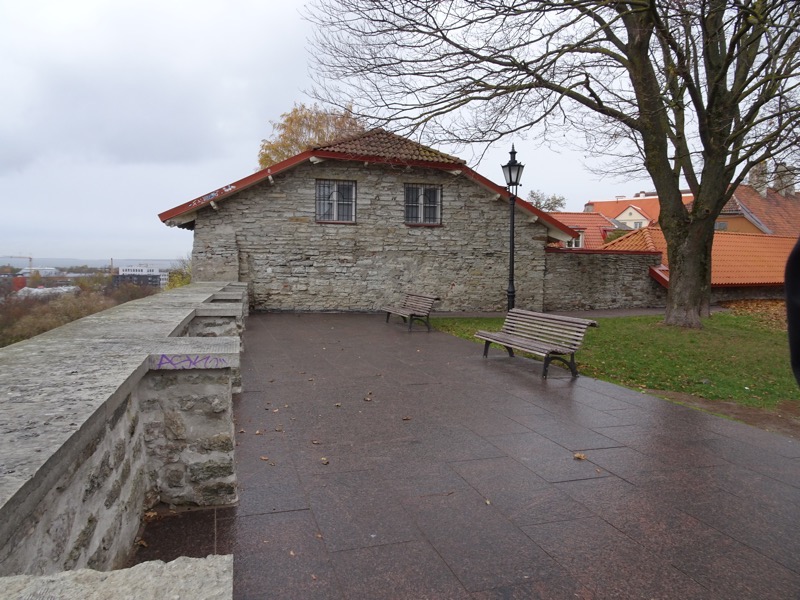 As you move around the Toompea area, views of the Alexander Nevsky’s onion domes can be seen peeking through the buildings in the narrow streets – I can’t believe they would still want to knock it down!
As you move around the Toompea area, views of the Alexander Nevsky’s onion domes can be seen peeking through the buildings in the narrow streets – I can’t believe they would still want to knock it down!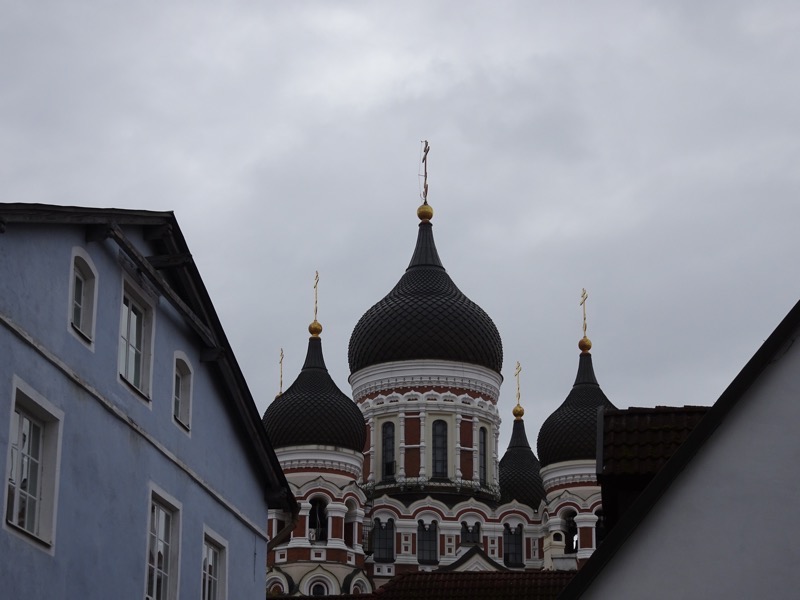
 The only evidence that Tallinn was once a major port for the Hanseatic Guilds are these signs outside of the souvenir shops – the Hanseatic Guild of Souvenir Shop Owners perhaps? They certainly seem organised or even unionised to keep their pricing on par.
The only evidence that Tallinn was once a major port for the Hanseatic Guilds are these signs outside of the souvenir shops – the Hanseatic Guild of Souvenir Shop Owners perhaps? They certainly seem organised or even unionised to keep their pricing on par. 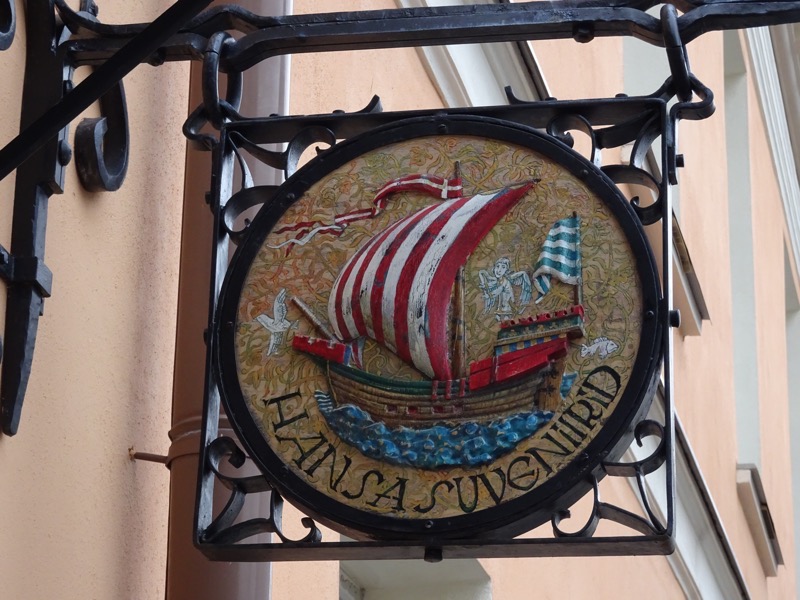
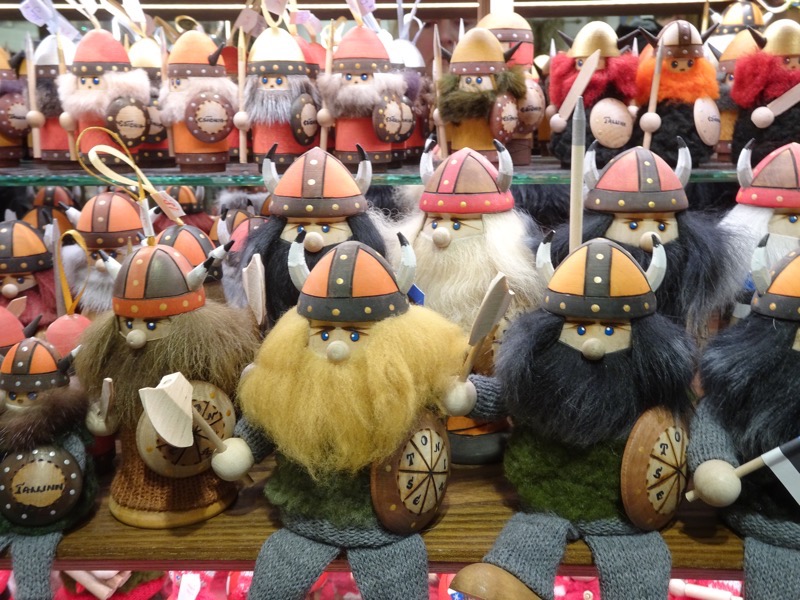
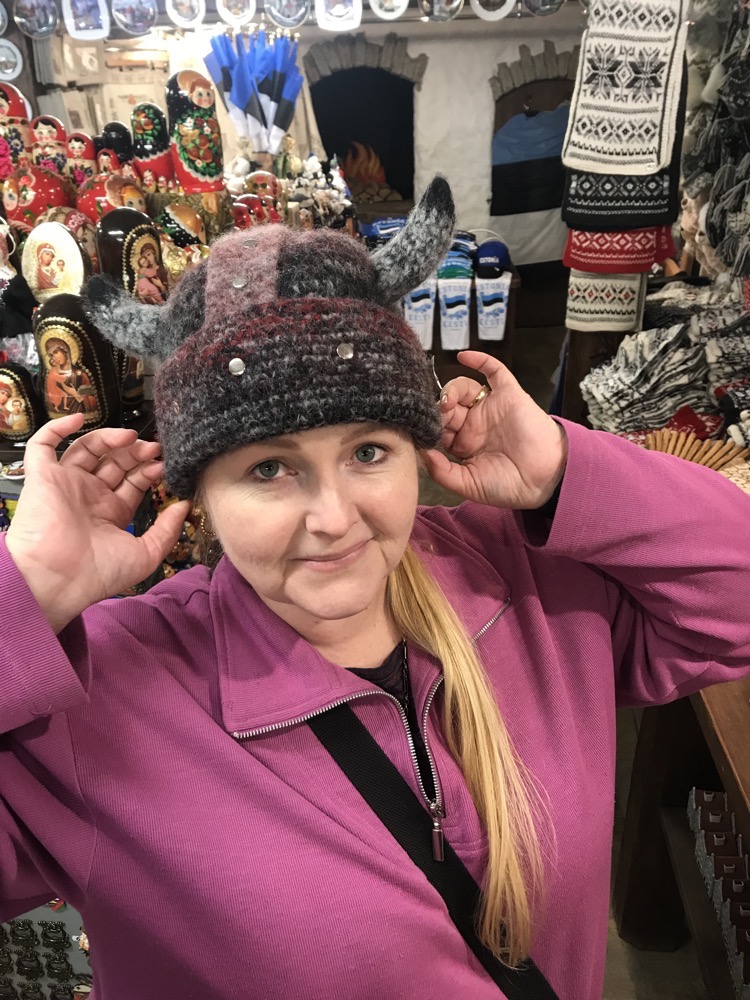 A little further around the town winding through the international embassies that are placed around Toompea near the Parliament buildings is another viewing platform, the Patkuli Viewing Platform.
A little further around the town winding through the international embassies that are placed around Toompea near the Parliament buildings is another viewing platform, the Patkuli Viewing Platform.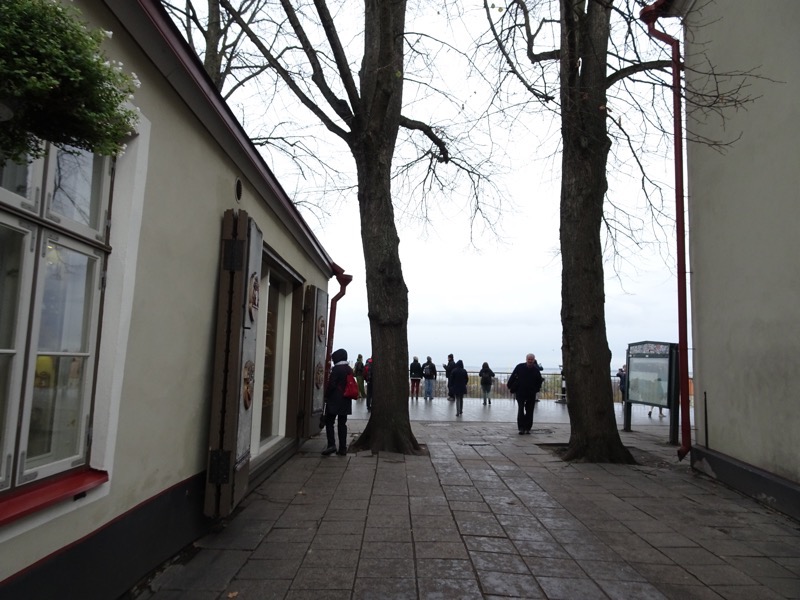 This time facing out over an older section of the city and with a few visitors.
This time facing out over an older section of the city and with a few visitors. 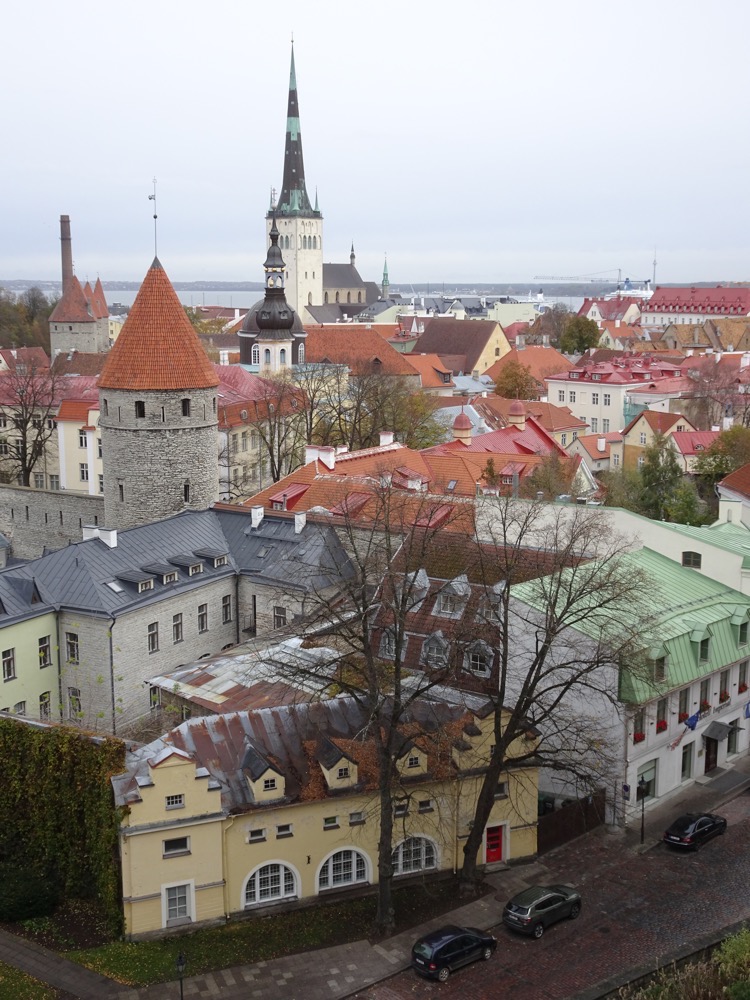
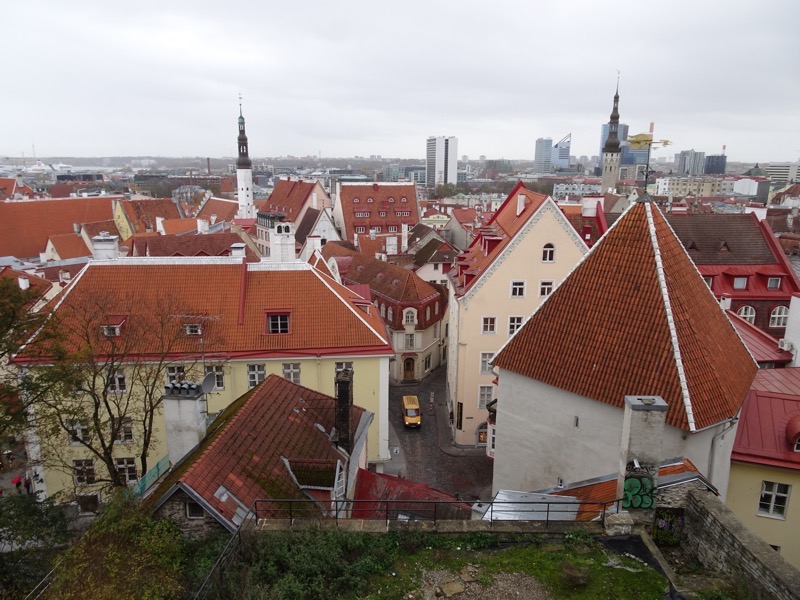
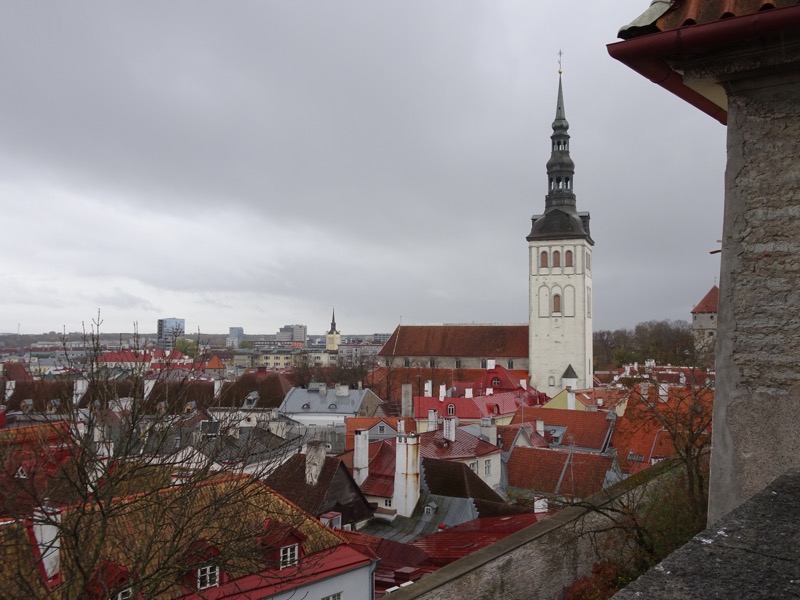 I took some panorama photos here so will have to share those on FB using the 3D thing. Amber, amber everywhere – some of it lovely, some of it hideous. It’s hard to find just nice chunks of amber that you could do your own thing with them, and when you do, they are enormous with price tags to match. I bought some rough amber beads (strings of large chips?) when I was here last year and have done absolutely nothing wtih them, so was determined not to buy more!
I took some panorama photos here so will have to share those on FB using the 3D thing. Amber, amber everywhere – some of it lovely, some of it hideous. It’s hard to find just nice chunks of amber that you could do your own thing with them, and when you do, they are enormous with price tags to match. I bought some rough amber beads (strings of large chips?) when I was here last year and have done absolutely nothing wtih them, so was determined not to buy more!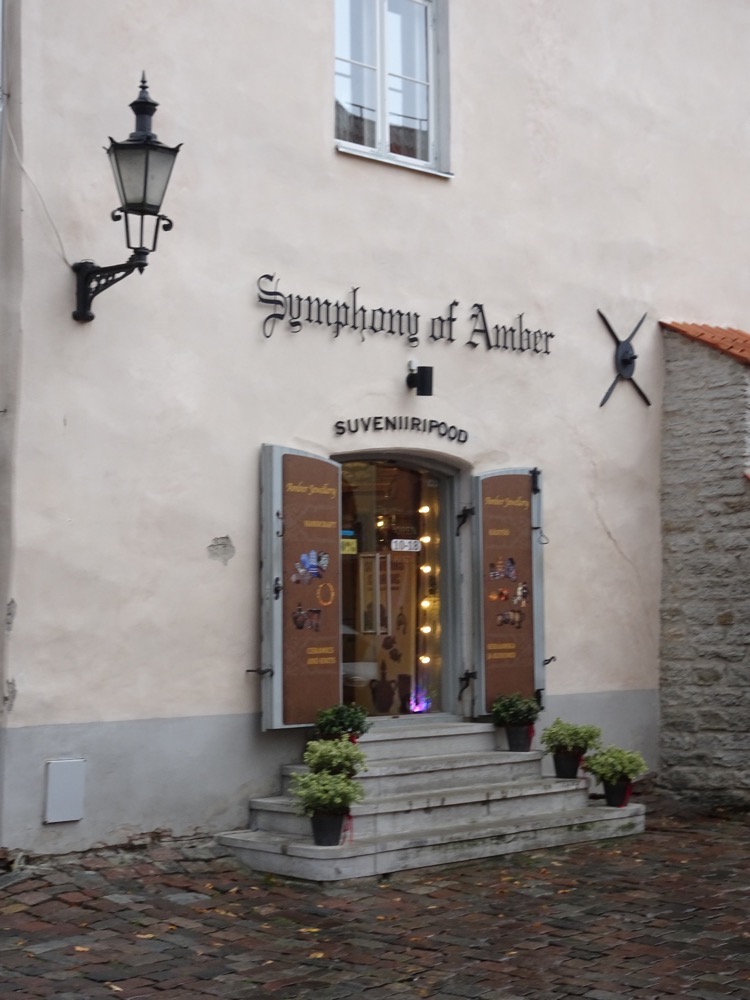
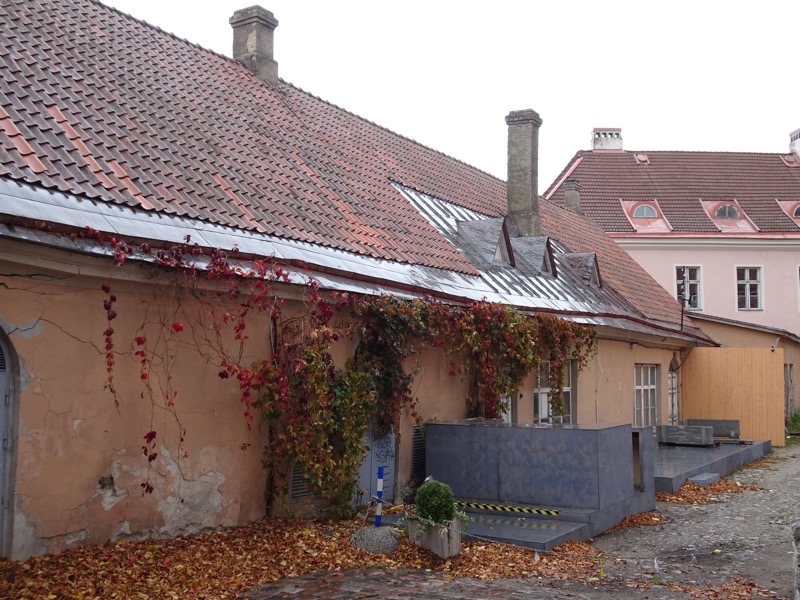
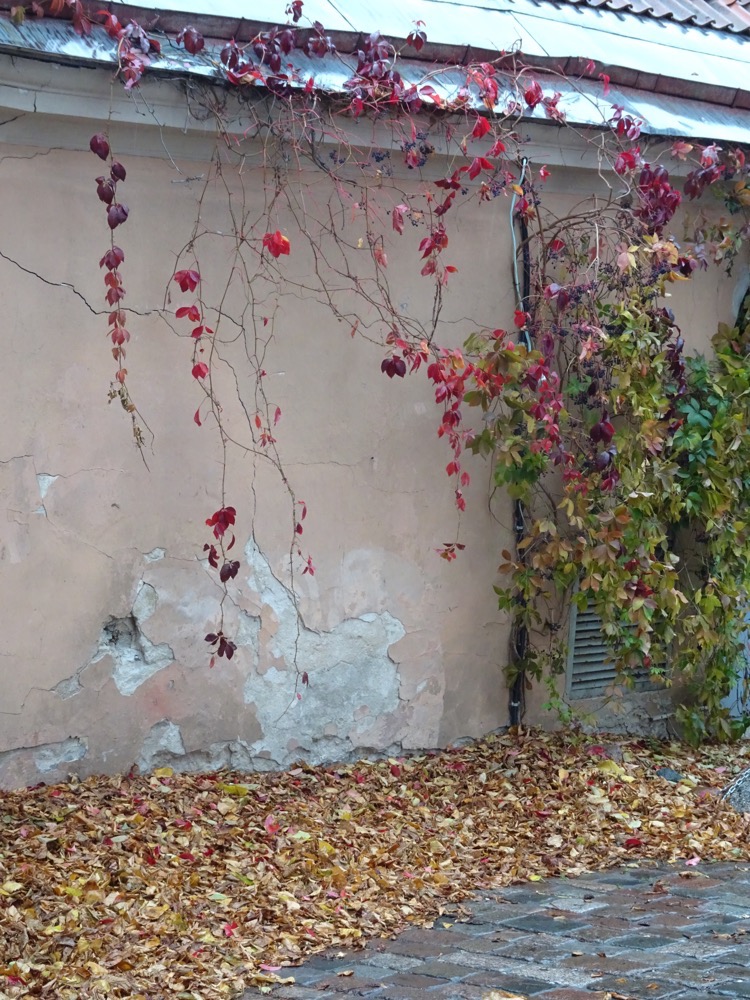

 Which amazingly had nearly zero visitors. The Raekoja plats or Town Hall has been here since 1322 and the town square next to it has been here ever since then as well. The hall was rebuilt from 1402 to 1404 into its current form. Every year since 1441, the town puts up a large Christmas tree display in the square beside the Town Hall in a tradition that is now over 570 years old. You can visit inside the Town Hall – between the months of June and August.
Which amazingly had nearly zero visitors. The Raekoja plats or Town Hall has been here since 1322 and the town square next to it has been here ever since then as well. The hall was rebuilt from 1402 to 1404 into its current form. Every year since 1441, the town puts up a large Christmas tree display in the square beside the Town Hall in a tradition that is now over 570 years old. You can visit inside the Town Hall – between the months of June and August.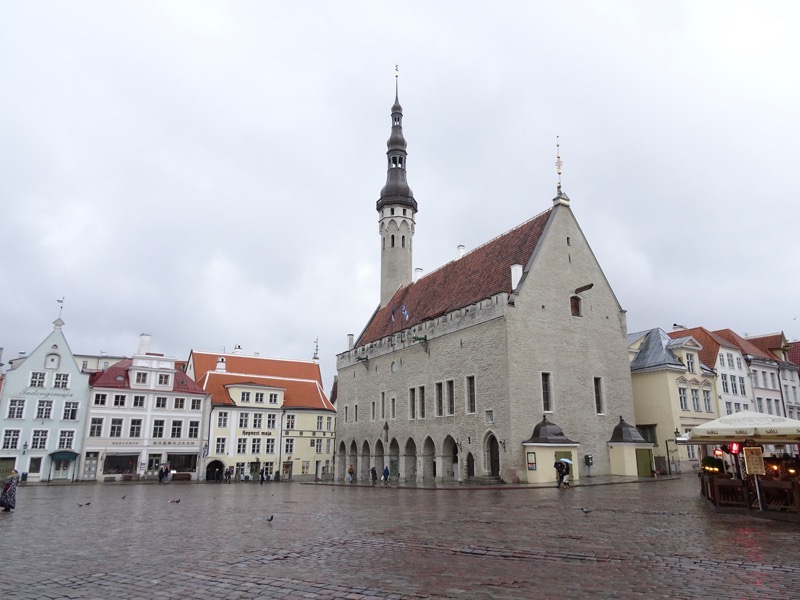 The Square is lined with restaurants, cafes and shops – most of which are fairly empty today. Some of which have signs out saying ‘Thanks for a great summer – see you next year!’.
The Square is lined with restaurants, cafes and shops – most of which are fairly empty today. Some of which have signs out saying ‘Thanks for a great summer – see you next year!’.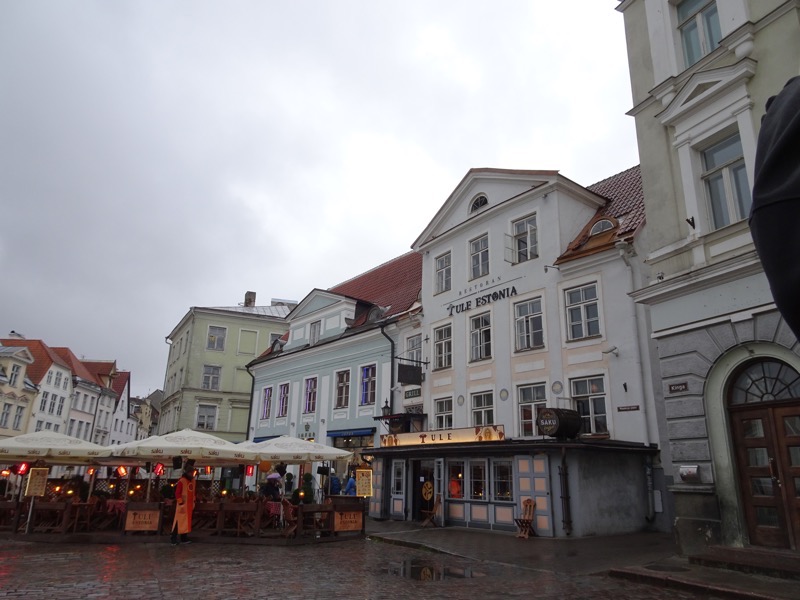
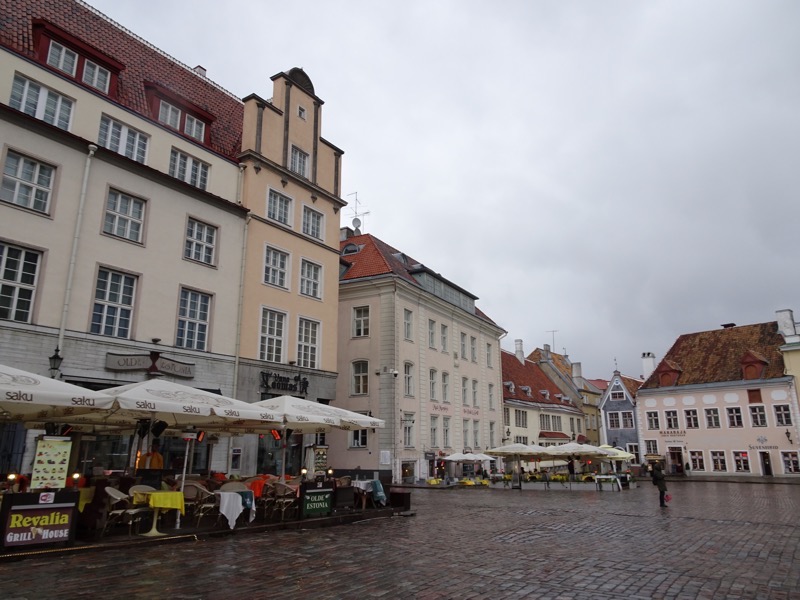

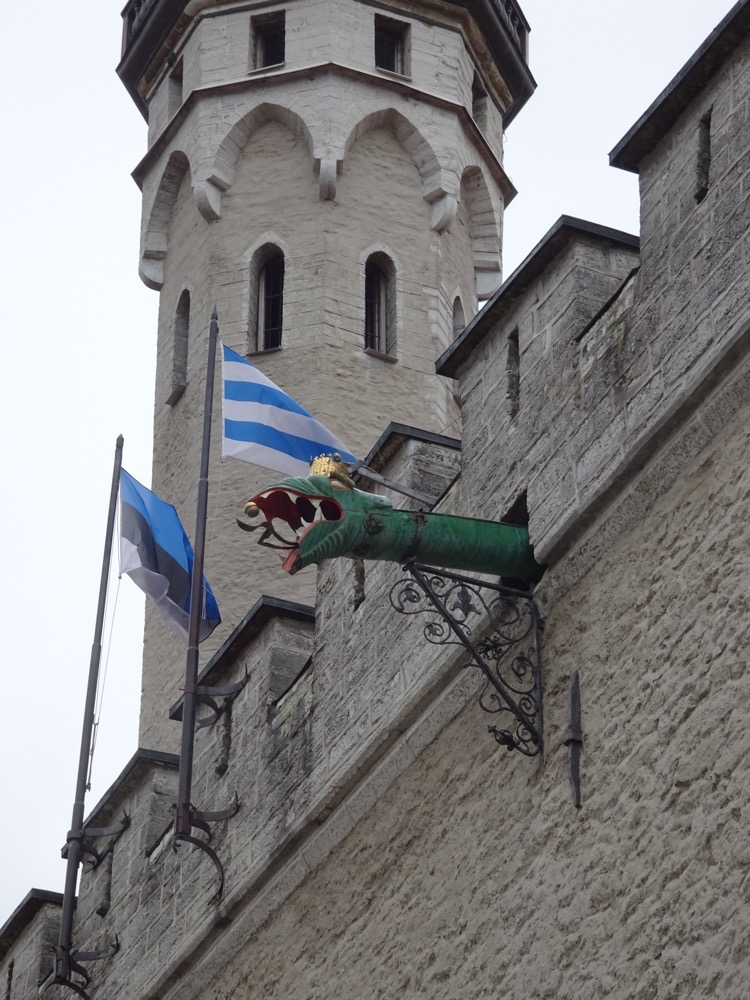
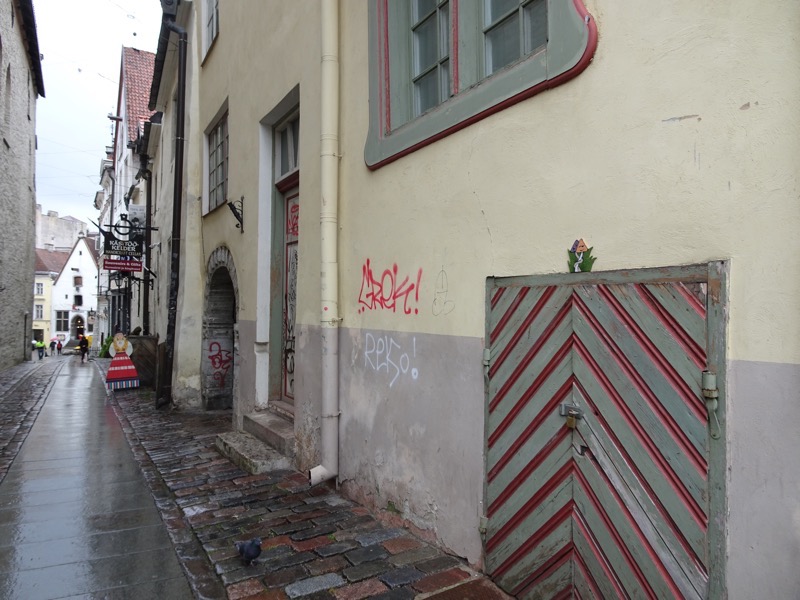
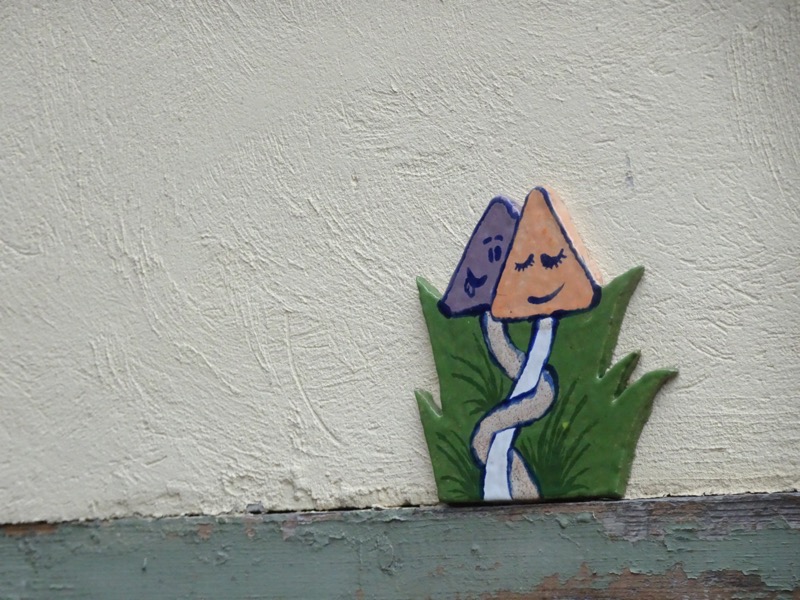 The old jail which is right beside the Town Hall and is now a photography exhibit.
The old jail which is right beside the Town Hall and is now a photography exhibit.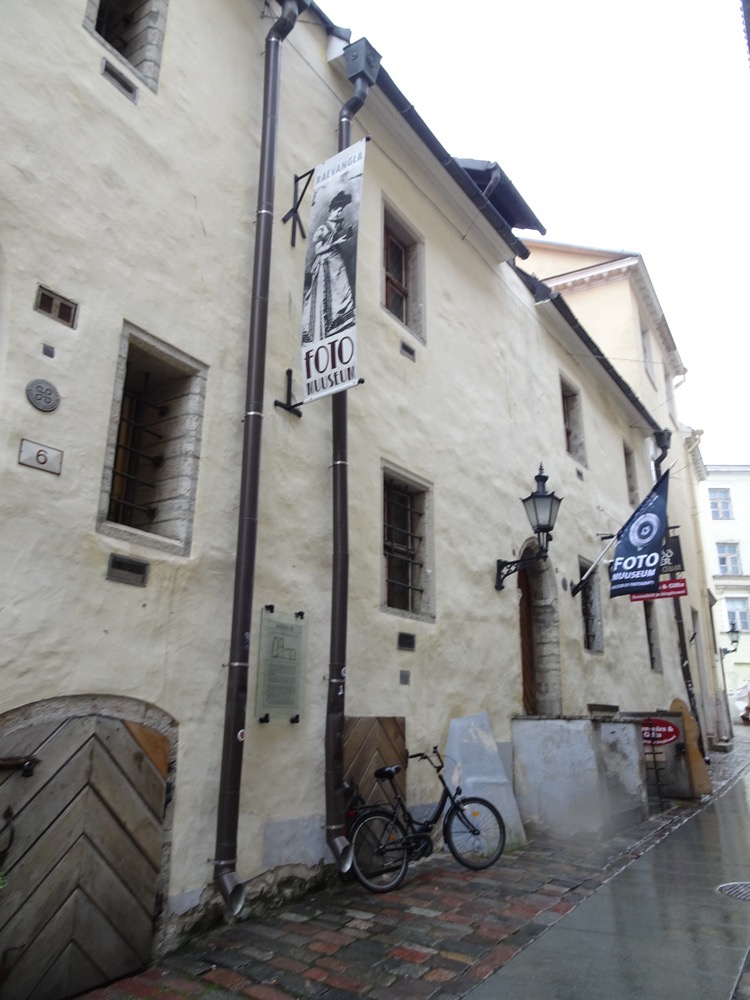
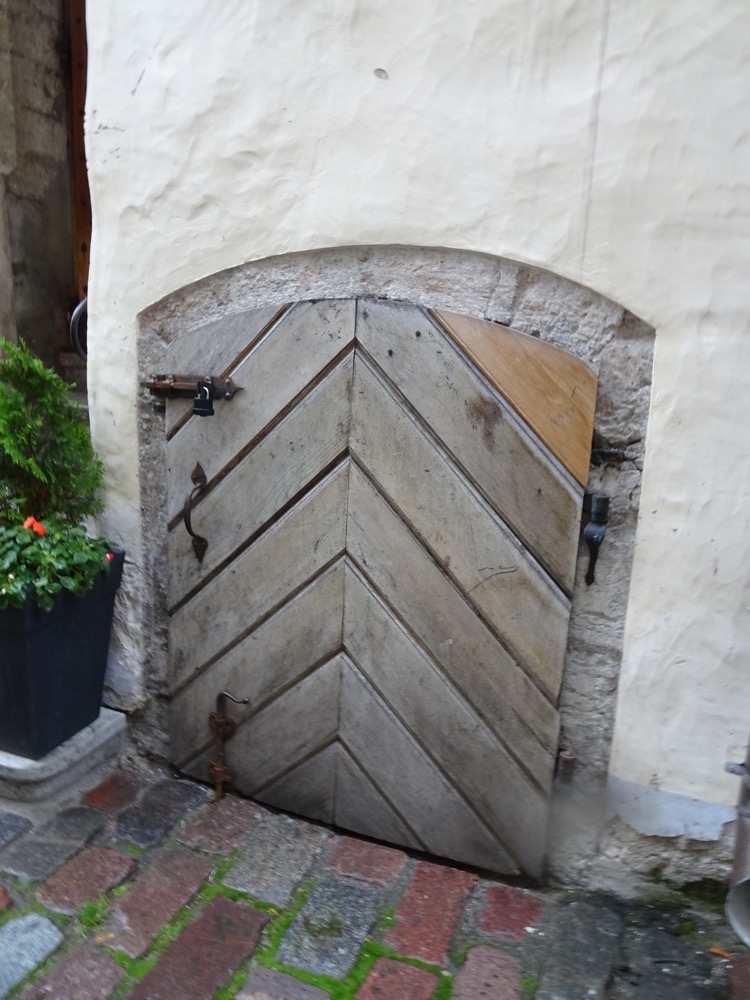
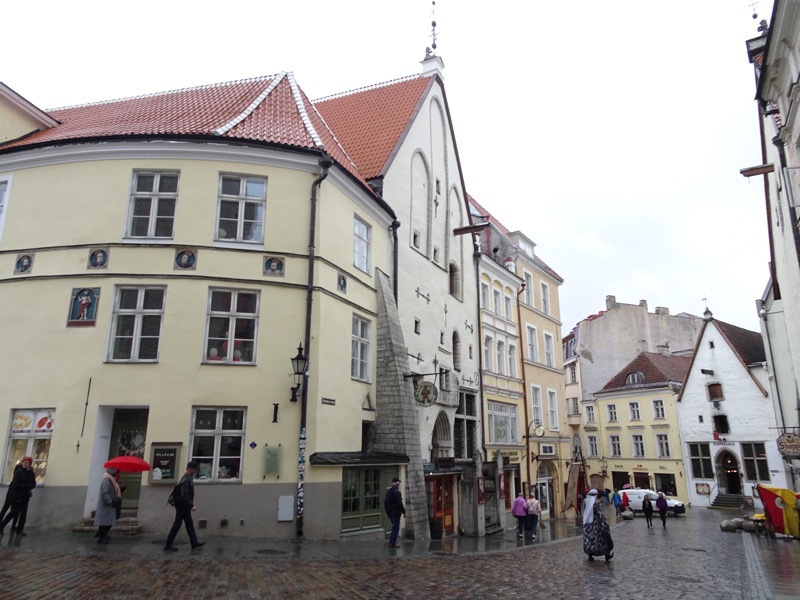
 By this point we were looking for somewhere to warm up a bit – maybe some mulled wine and a light lunch. We saw this restaurant with the promise of mushroom soup on their chalkboard and were enticed inside. We had no idea what we were walking into – but rolled with it nonetheless.
By this point we were looking for somewhere to warm up a bit – maybe some mulled wine and a light lunch. We saw this restaurant with the promise of mushroom soup on their chalkboard and were enticed inside. We had no idea what we were walking into – but rolled with it nonetheless.
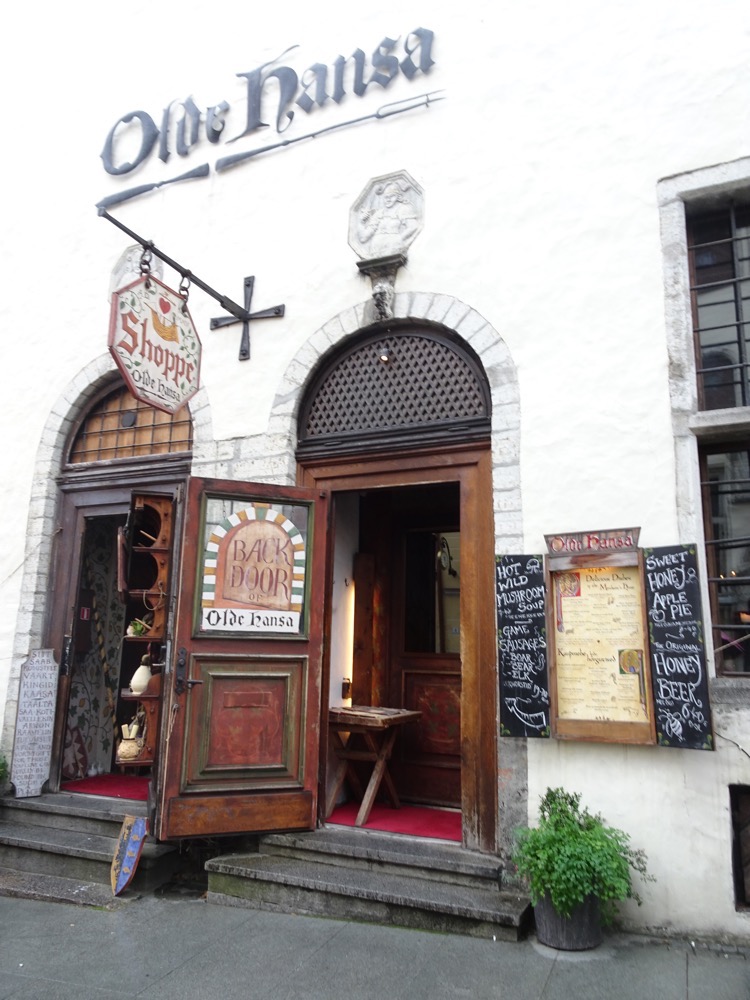 Turns out it is the most touristy of touristy medieval tavern/cafe/restaurants in town! Complete with garbed waitstaff and a hearty, “Greetings traveller, can we offer you some fare to warm your gullet” type welcome. Oh dear.
Turns out it is the most touristy of touristy medieval tavern/cafe/restaurants in town! Complete with garbed waitstaff and a hearty, “Greetings traveller, can we offer you some fare to warm your gullet” type welcome. Oh dear. 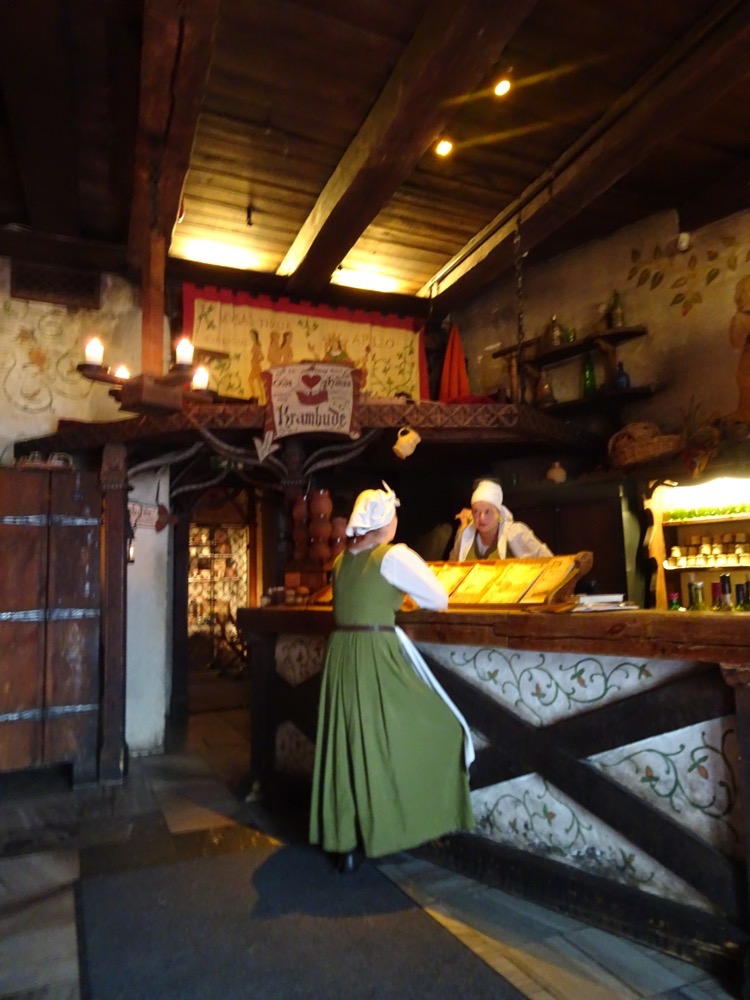 The entire hall is lit only by candlelight and the menu was really quite interesting.
The entire hall is lit only by candlelight and the menu was really quite interesting.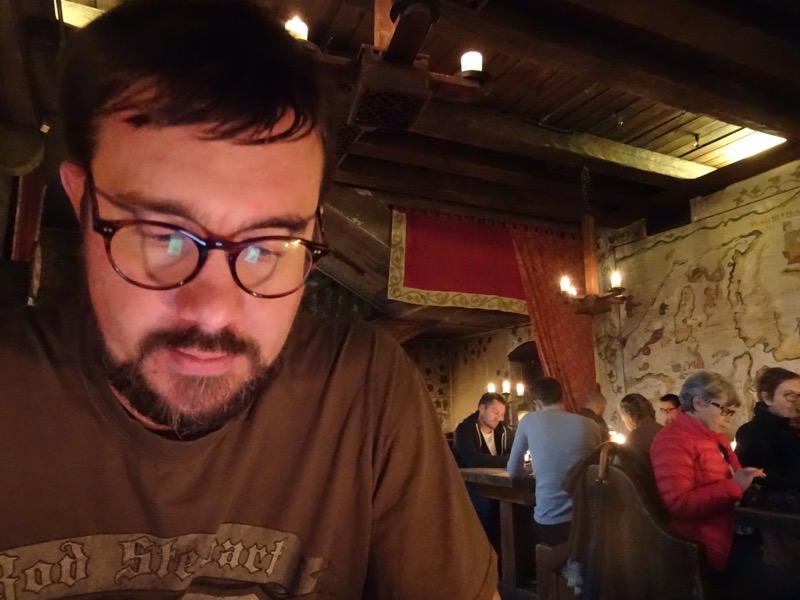
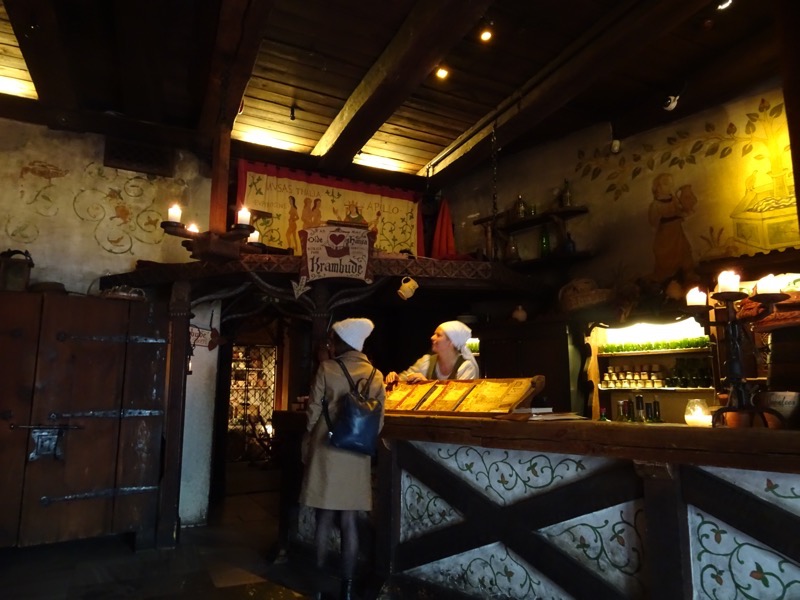 We were unaware, but visitors were even able to dress in medieval clothing to enjoy their medieval lunch. Apparently, this place is a major draw for many visitors to Tallinn. and rates very highly on Trip Advisor –
We were unaware, but visitors were even able to dress in medieval clothing to enjoy their medieval lunch. Apparently, this place is a major draw for many visitors to Tallinn. and rates very highly on Trip Advisor – Having only come in for a cider/mulled wine and some soup – we ended up trying lots of interesting food. Designed as an entree for one, we shared this ‘Neptune’s Platter’ which contained – Salmon eggs, Andalusian fish, smoke-grilled salmon, herring, anchovies, quail eggs, Castle’s fresh cheese, herb-bread with nuts, rye bread with smoked ham.
Having only come in for a cider/mulled wine and some soup – we ended up trying lots of interesting food. Designed as an entree for one, we shared this ‘Neptune’s Platter’ which contained – Salmon eggs, Andalusian fish, smoke-grilled salmon, herring, anchovies, quail eggs, Castle’s fresh cheese, herb-bread with nuts, rye bread with smoked ham. 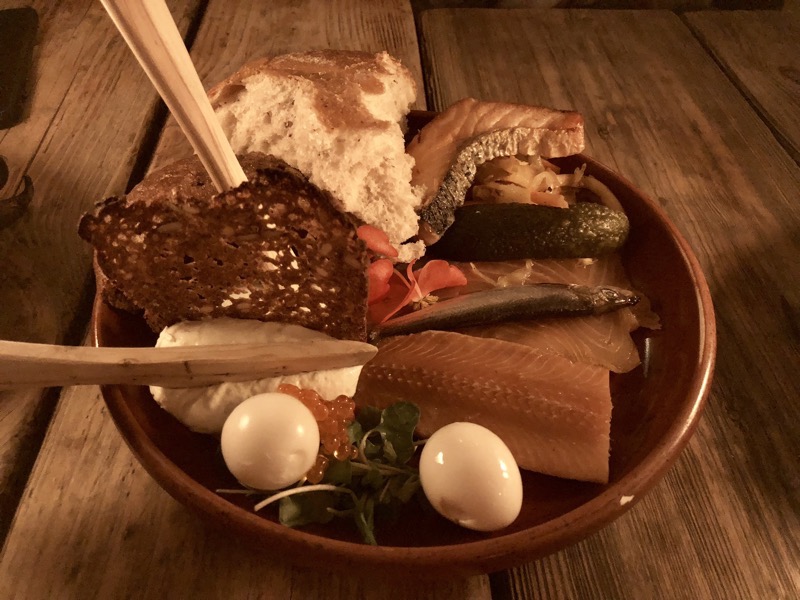 yale ordered the
yale ordered the 
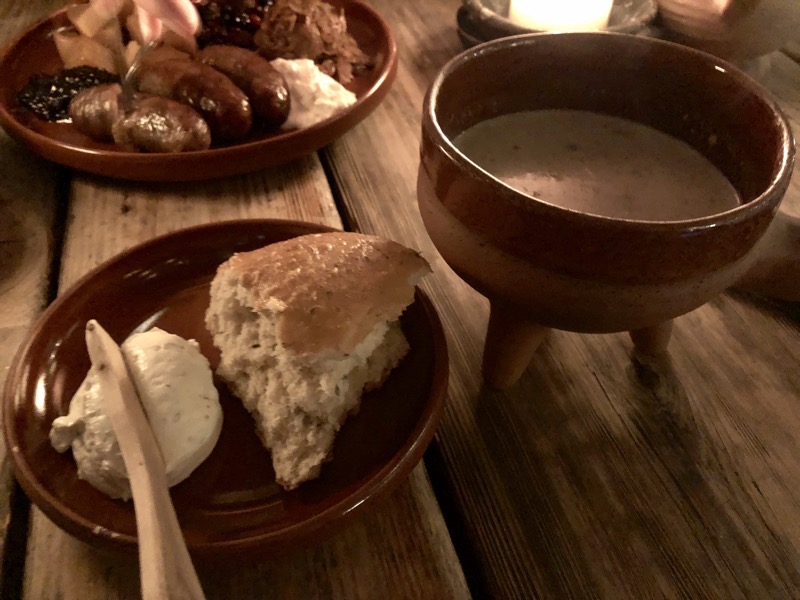 Afterwards we had enjoyed the Neptune Platter so well, that we decided to not have a dessert but instead flip back to try the non-seafood version taster plate called the Reval’s Beef and Liver Pate Tasting Plate, which contained: Juniper-flavoured beef, orange tongue jelly, French royal poultry liver paté, olives, breads and caramelized onion jam. Also all very tasty. One thing about eating out with yale – I get to try all the things knowing he will finish them.
Afterwards we had enjoyed the Neptune Platter so well, that we decided to not have a dessert but instead flip back to try the non-seafood version taster plate called the Reval’s Beef and Liver Pate Tasting Plate, which contained: Juniper-flavoured beef, orange tongue jelly, French royal poultry liver paté, olives, breads and caramelized onion jam. Also all very tasty. One thing about eating out with yale – I get to try all the things knowing he will finish them. 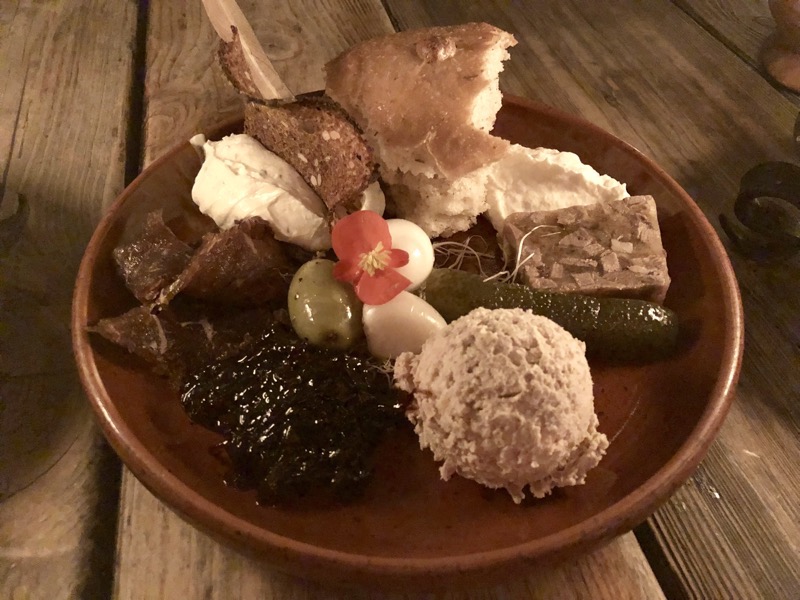
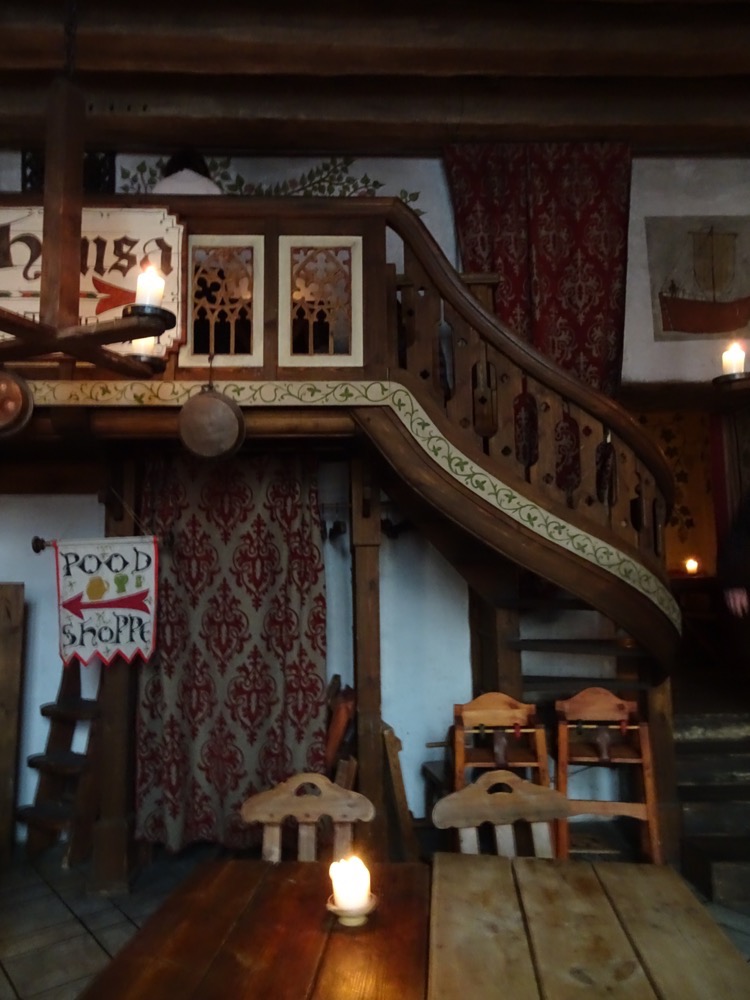
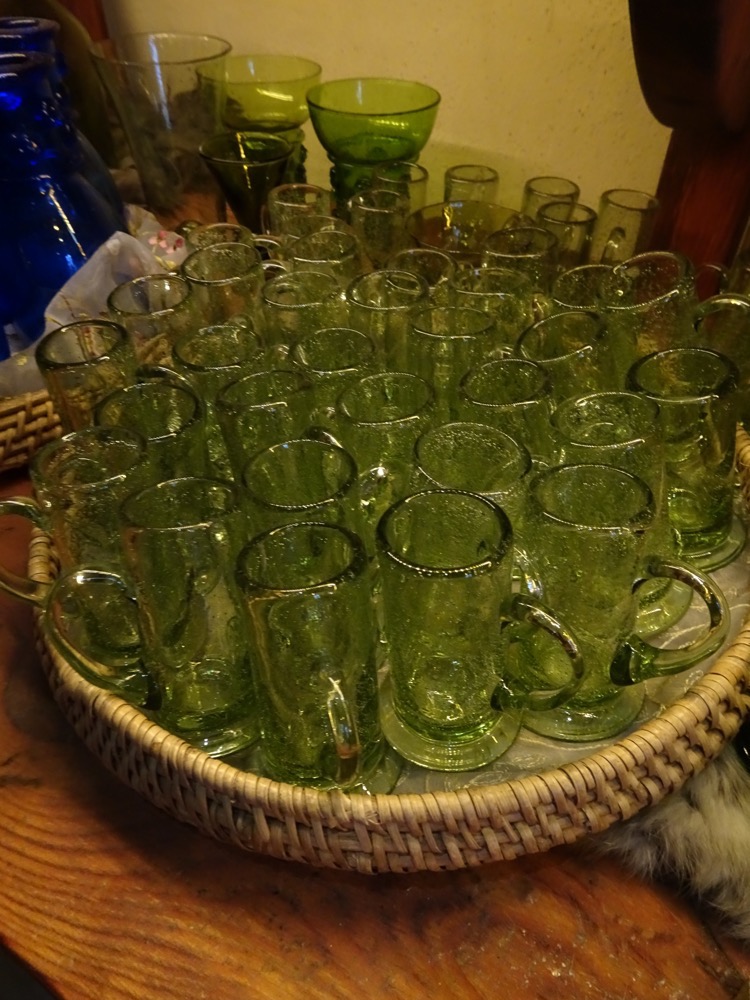
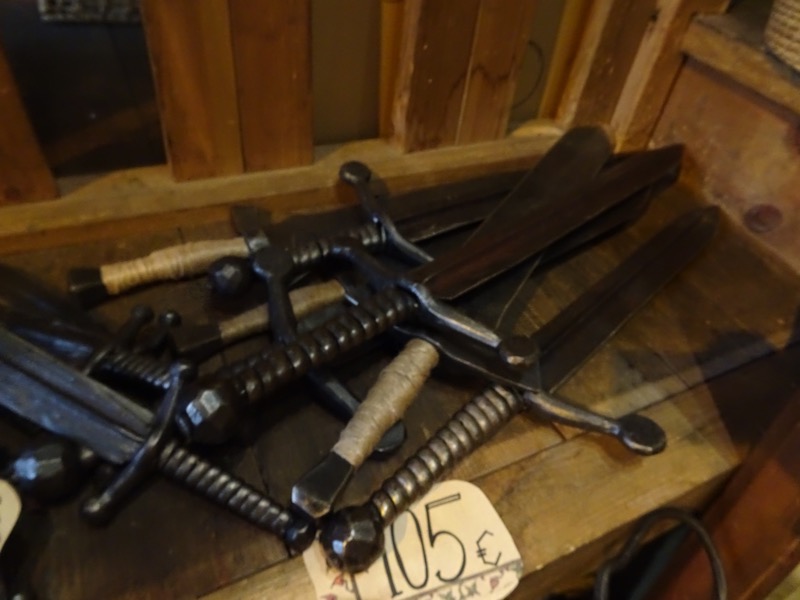
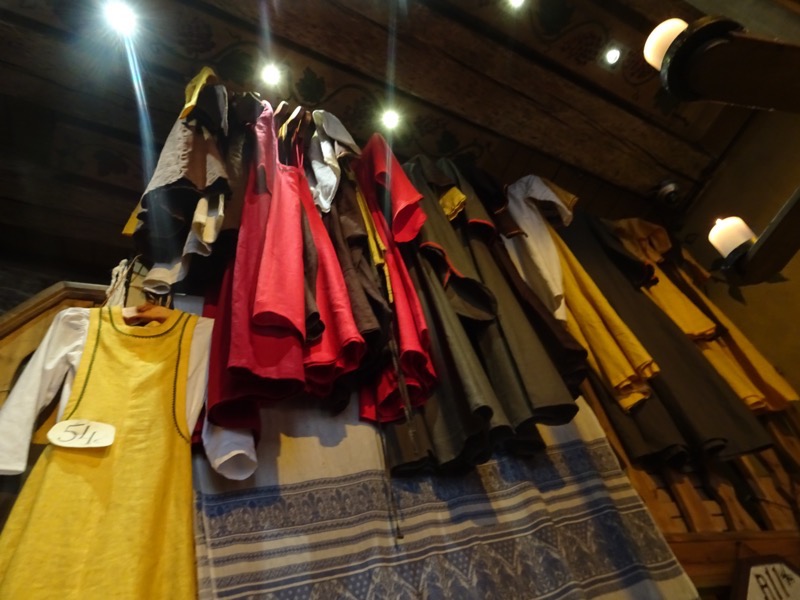
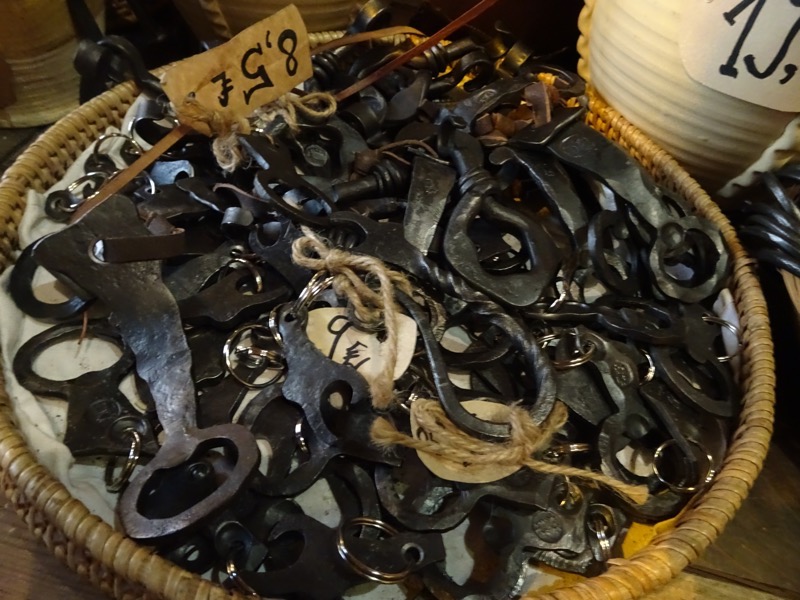
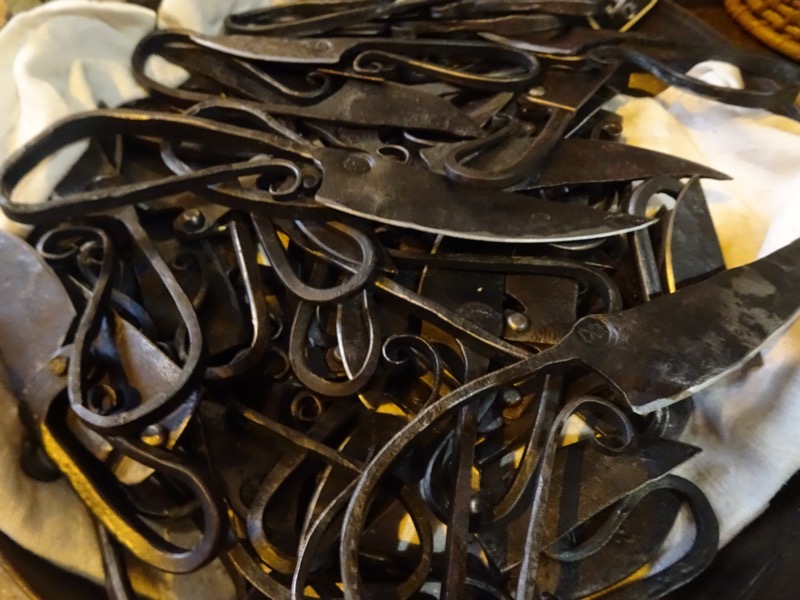
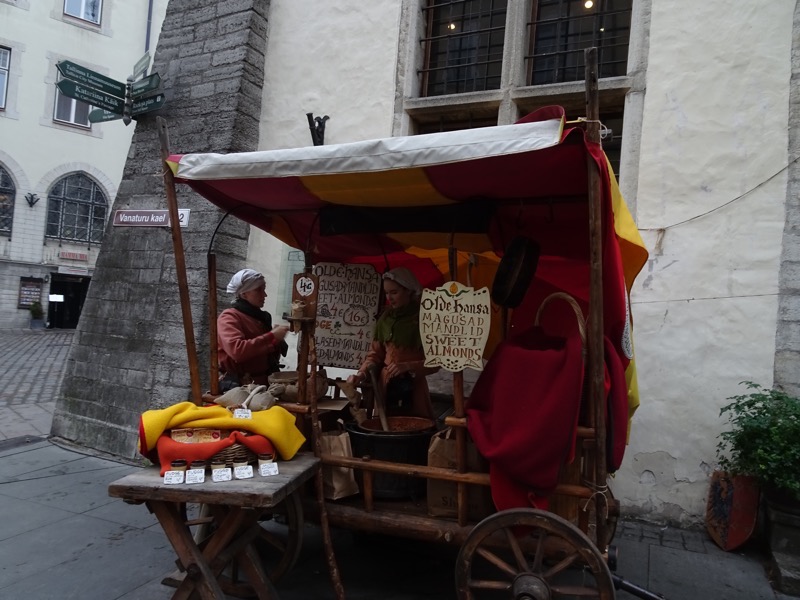 I am not sure what this was about on the website of a different nearby ‘medieval’ tavern… is it lodgings for if you’re drunk and can’t drive home? Or are they offering ‘special services’ upstairs?
I am not sure what this was about on the website of a different nearby ‘medieval’ tavern… is it lodgings for if you’re drunk and can’t drive home? Or are they offering ‘special services’ upstairs? 
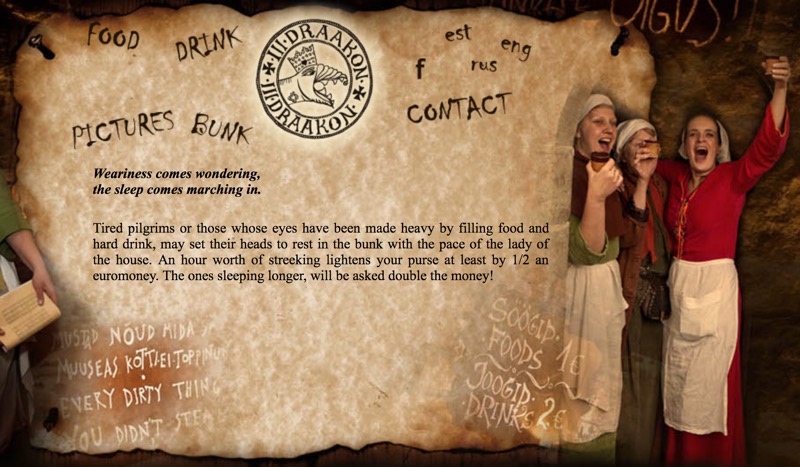 Back out on the street we went looking for the Town Hall Pharmacy also known as the Raeapteek which is the oldest pharmacy in Europe that has been in continuous operation in the same premises.
Back out on the street we went looking for the Town Hall Pharmacy also known as the Raeapteek which is the oldest pharmacy in Europe that has been in continuous operation in the same premises.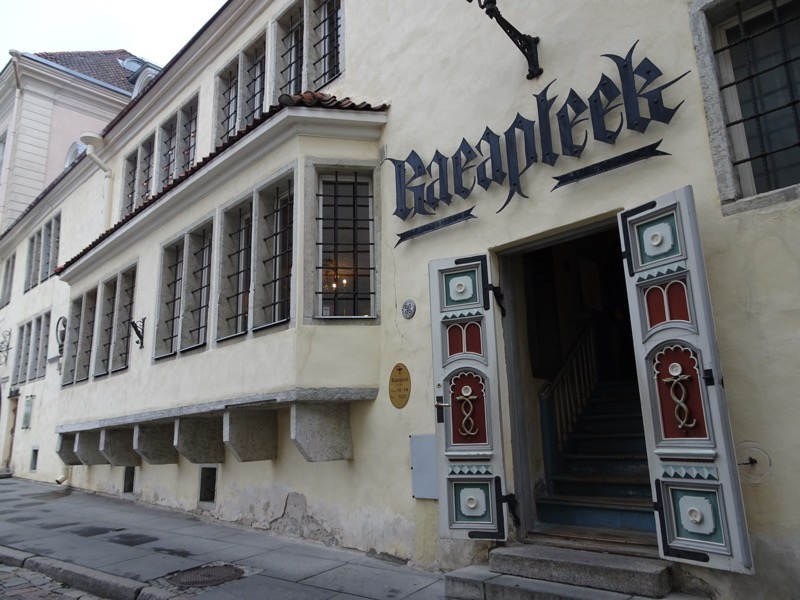

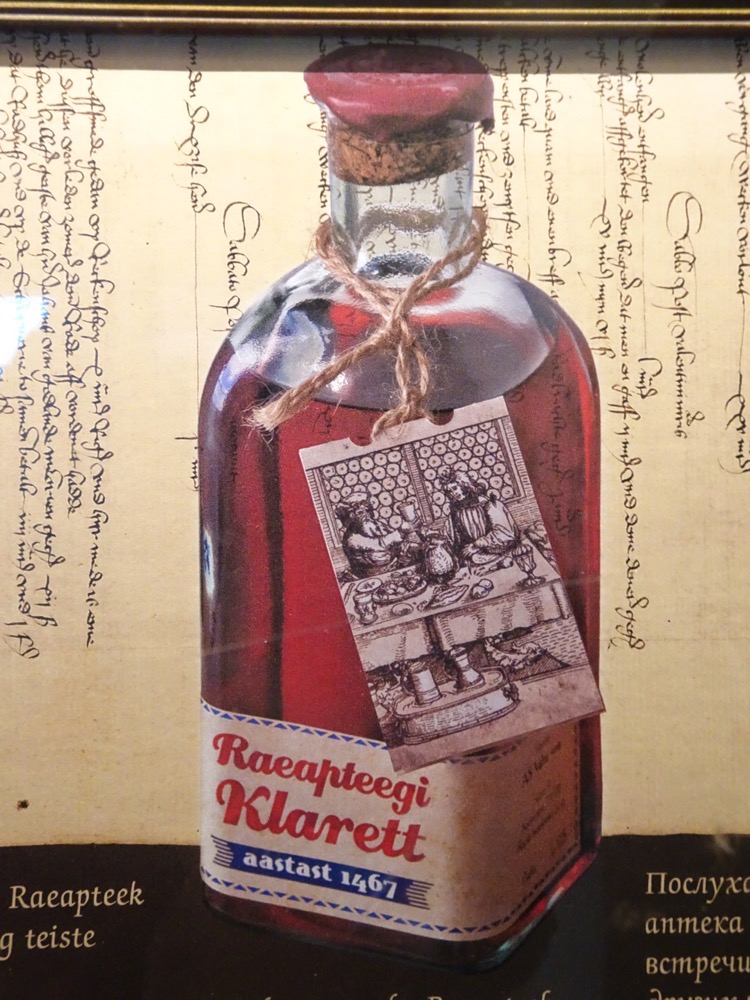
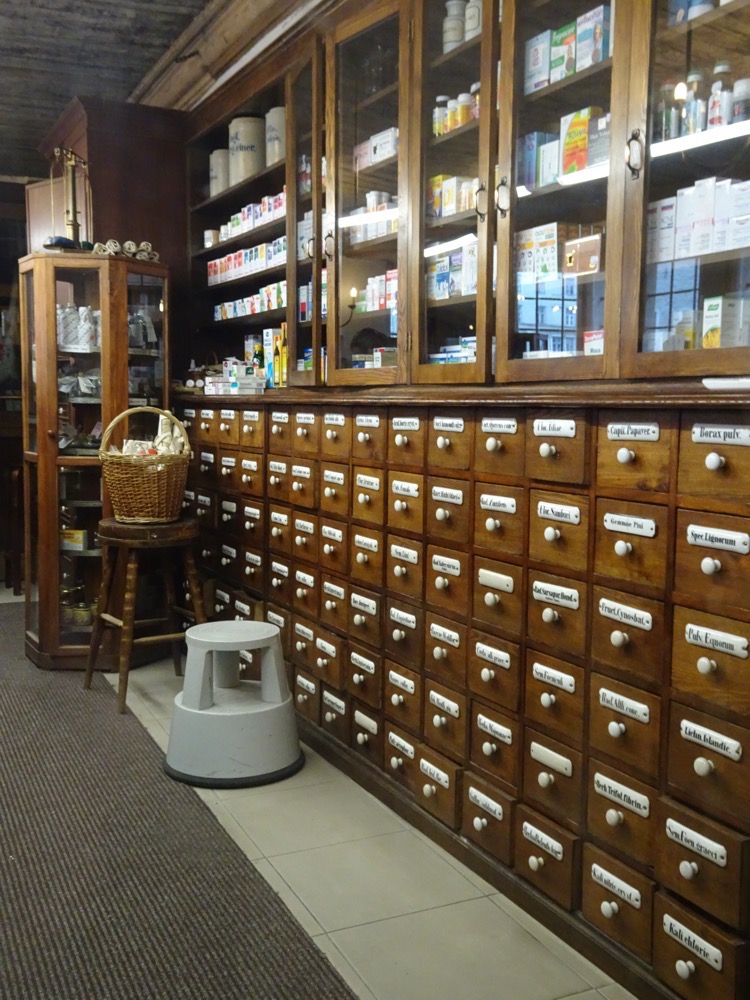 It looked a bit weird to see all the modern medicines in the old cabinets – but it is still a working pharmacy so you can go buy your panadol here.
It looked a bit weird to see all the modern medicines in the old cabinets – but it is still a working pharmacy so you can go buy your panadol here.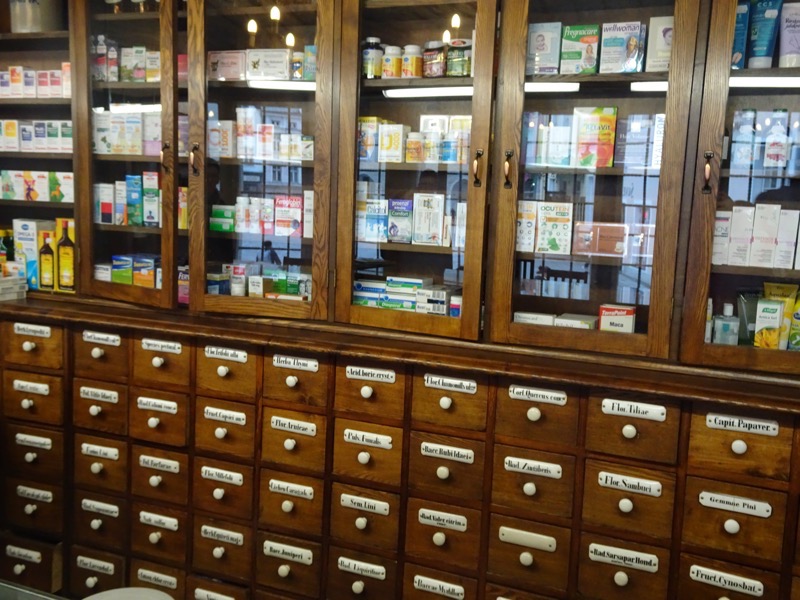 There is a small museum of old ‘treatments’… dried toads, bats, hedgehogs?
There is a small museum of old ‘treatments’… dried toads, bats, hedgehogs?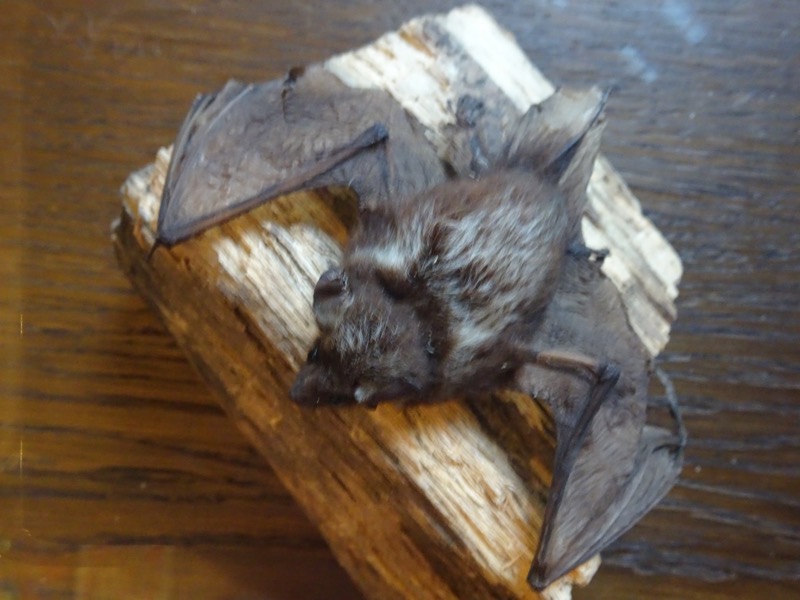
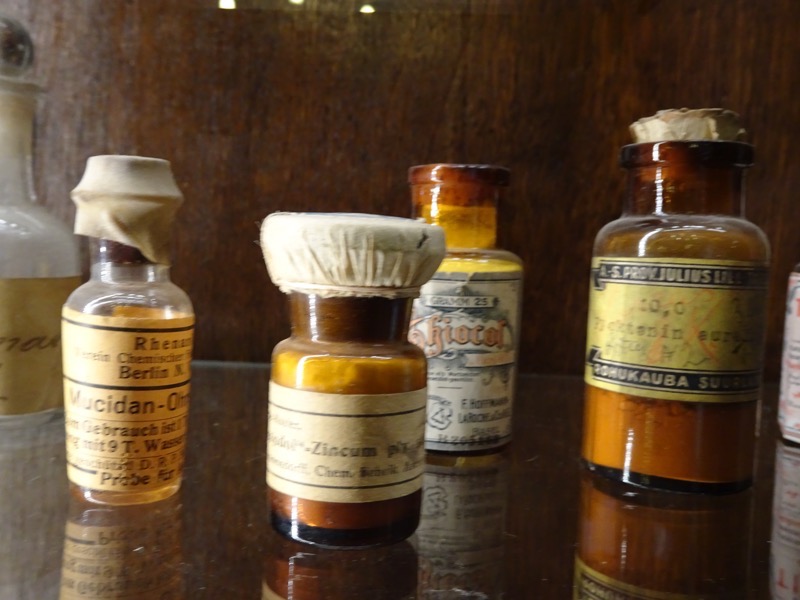
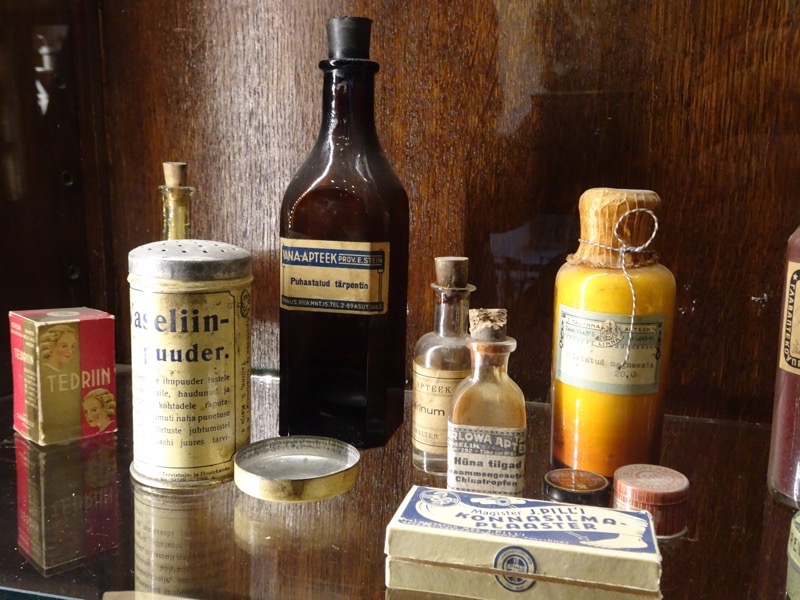
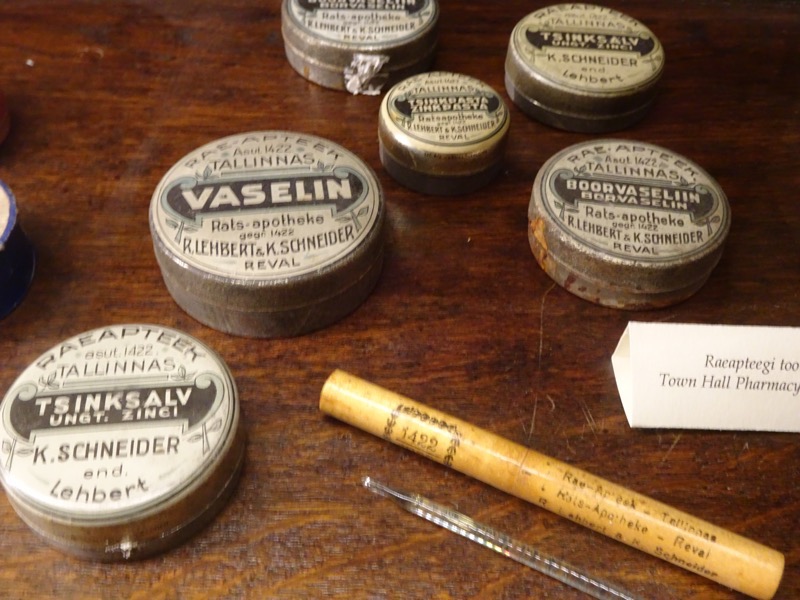
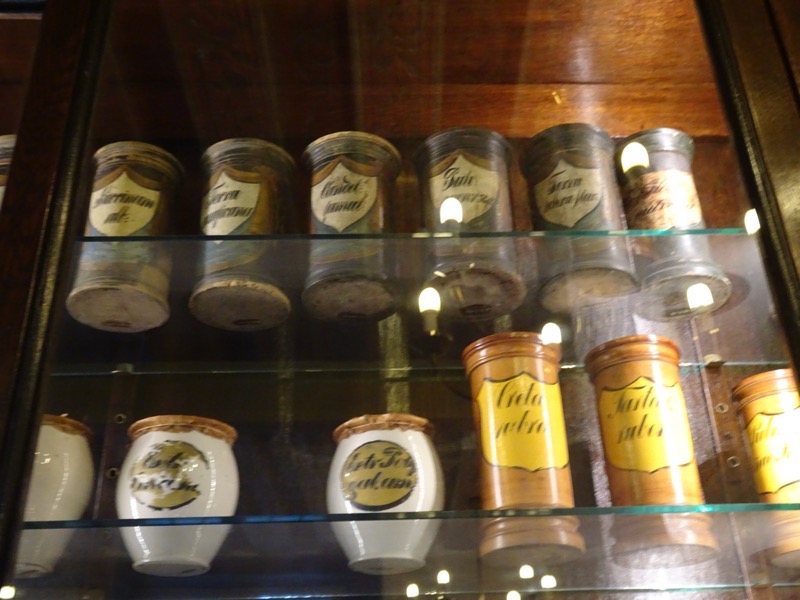
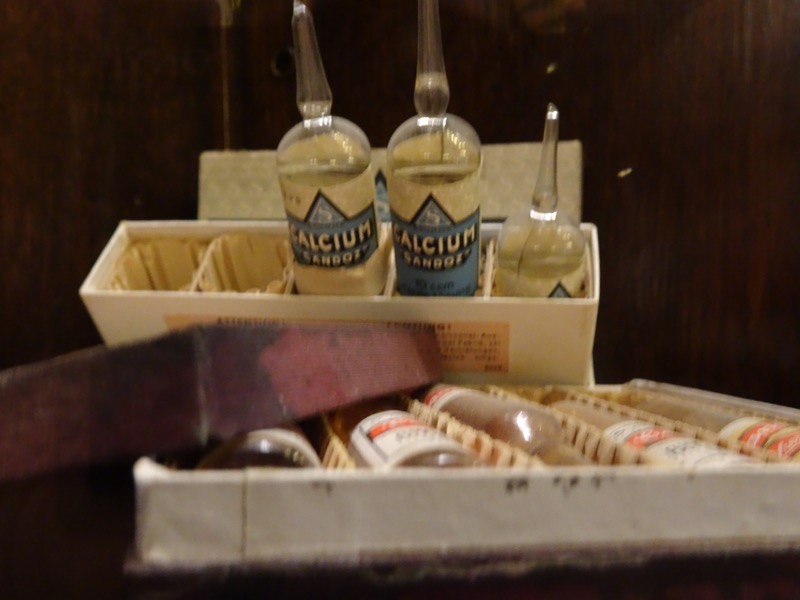


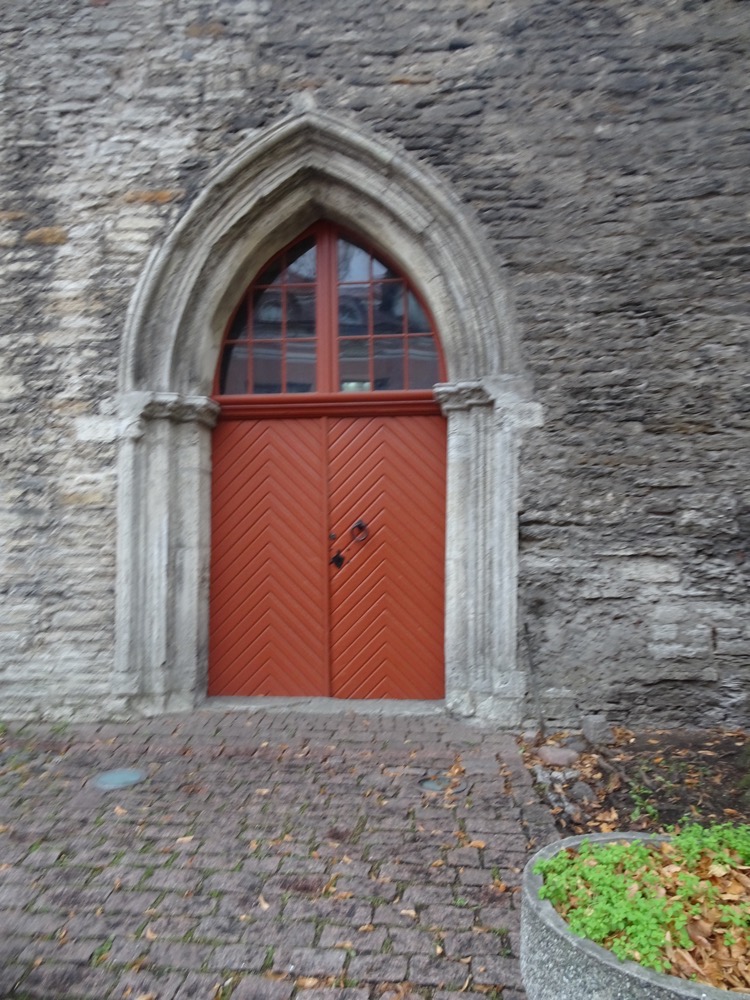
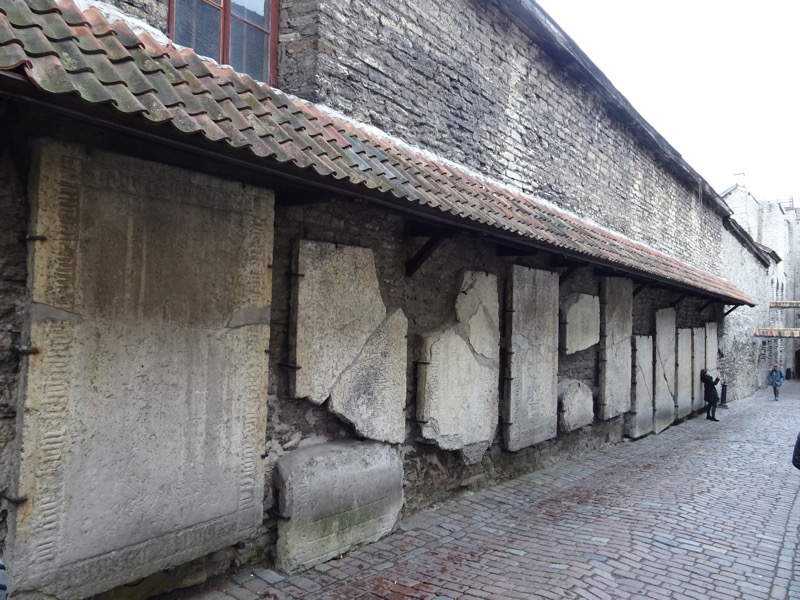 No summer crowds!
No summer crowds!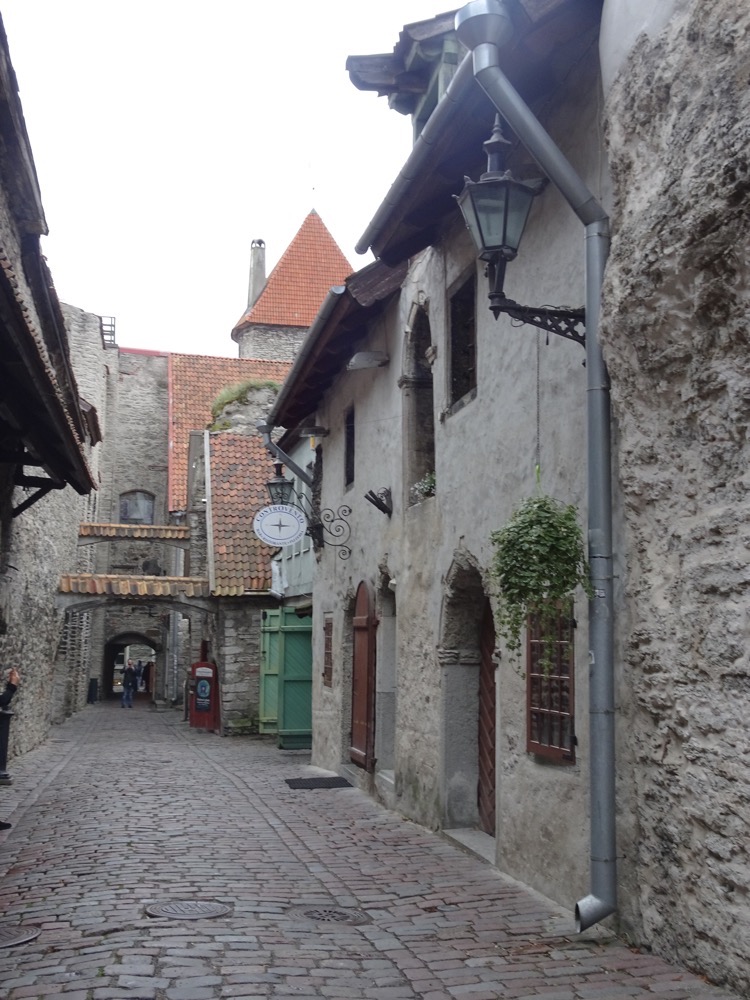
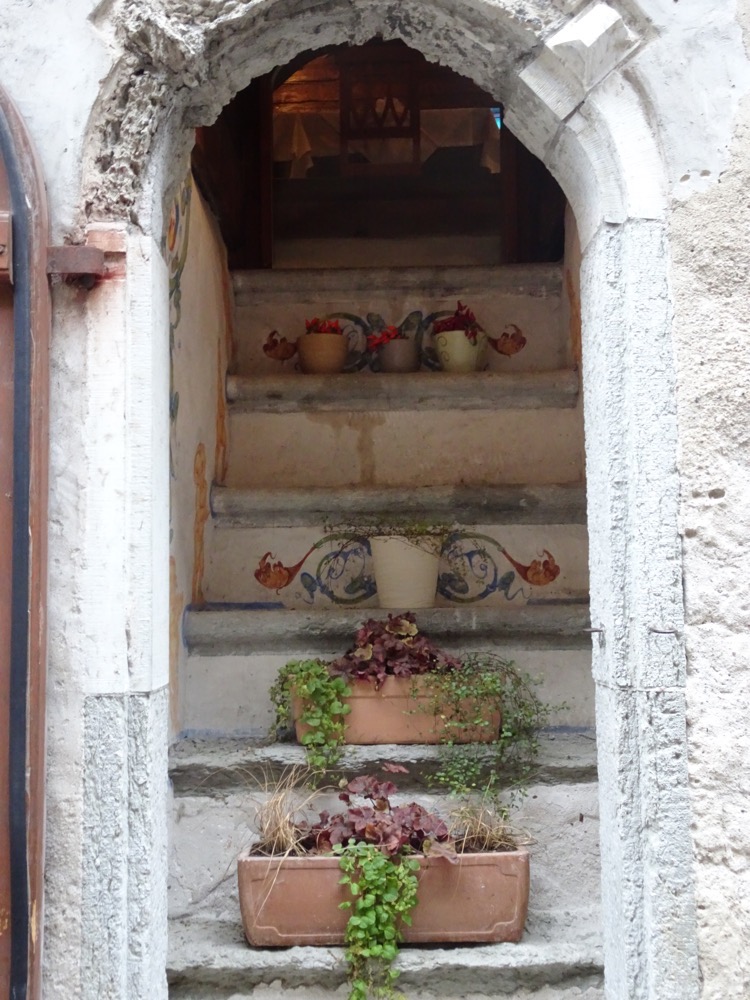
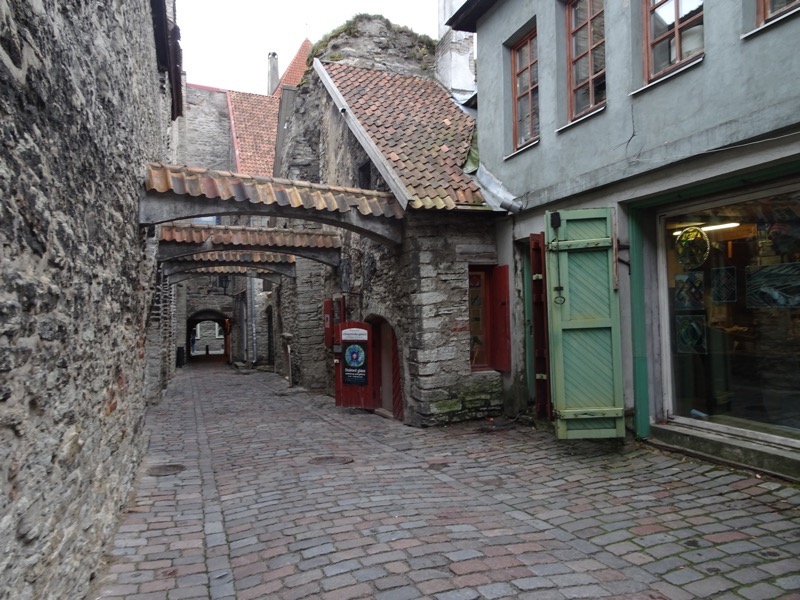 It was lovely to walk through this space and have it all to ourselves, also to have time to check out some of the art studios that are here – though the woodworker seems to have packed up for the winter.
It was lovely to walk through this space and have it all to ourselves, also to have time to check out some of the art studios that are here – though the woodworker seems to have packed up for the winter.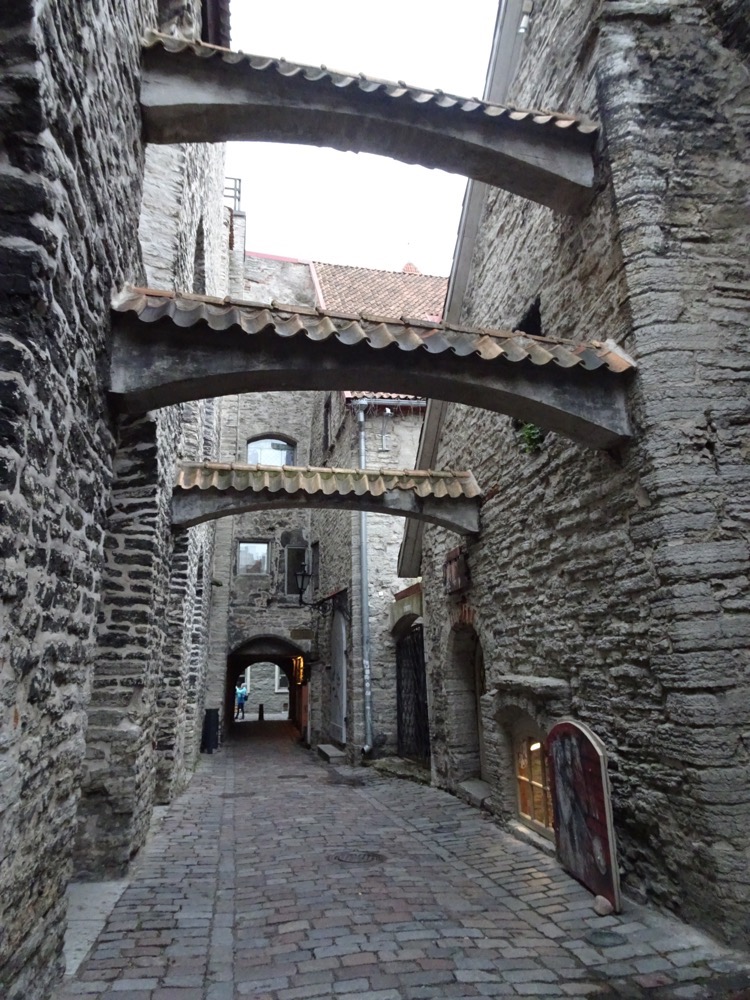 At the end of the passage, you can climb to the top of the Hellemann Tower to walk along the old
At the end of the passage, you can climb to the top of the Hellemann Tower to walk along the old 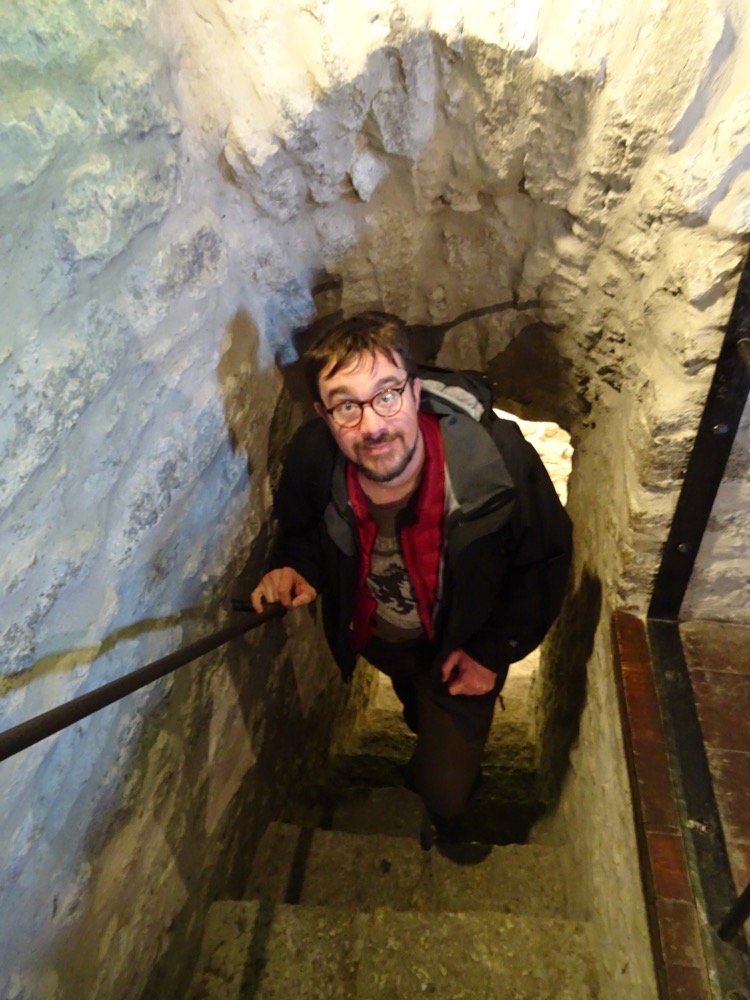
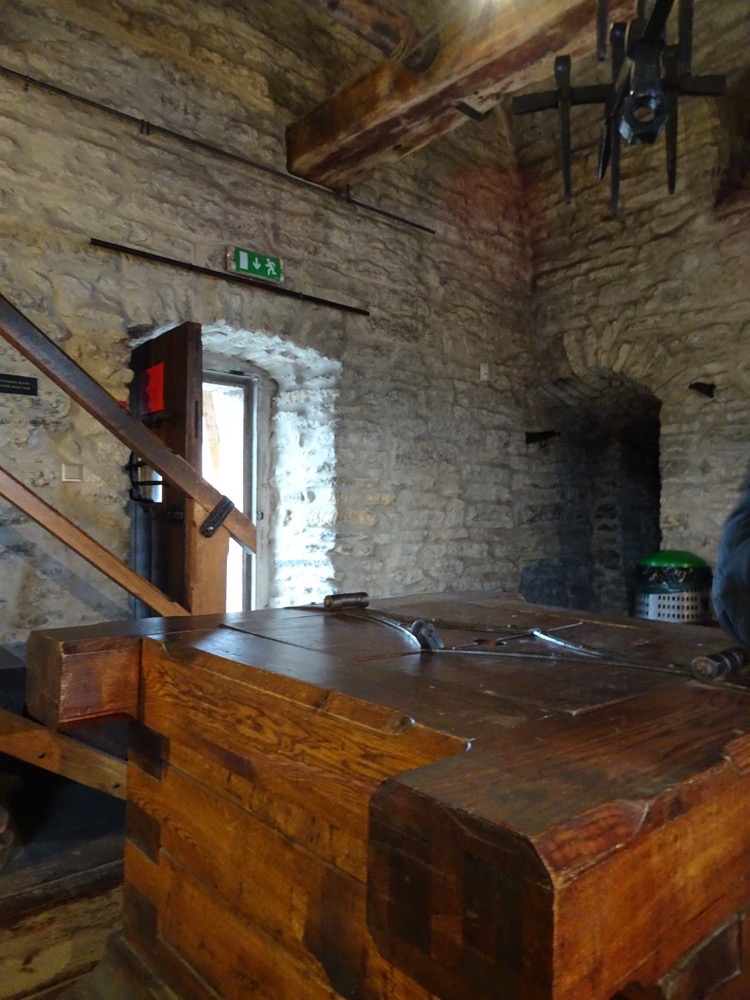
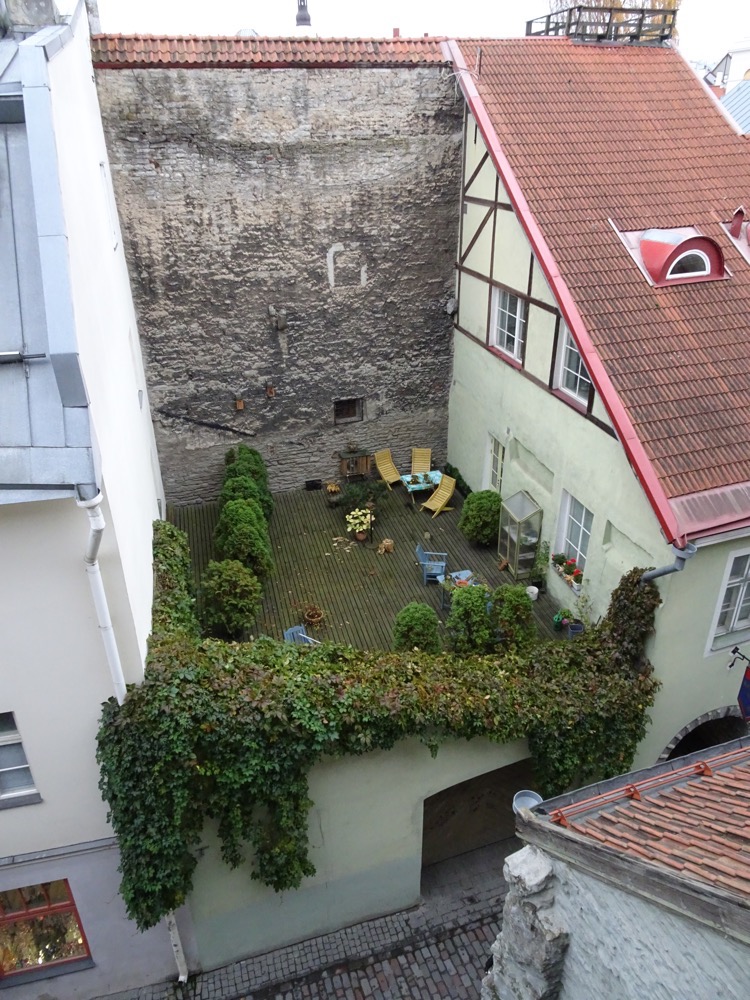 The street views are spectacular from up here – and you can see how few people are visiting the town today.
The street views are spectacular from up here – and you can see how few people are visiting the town today.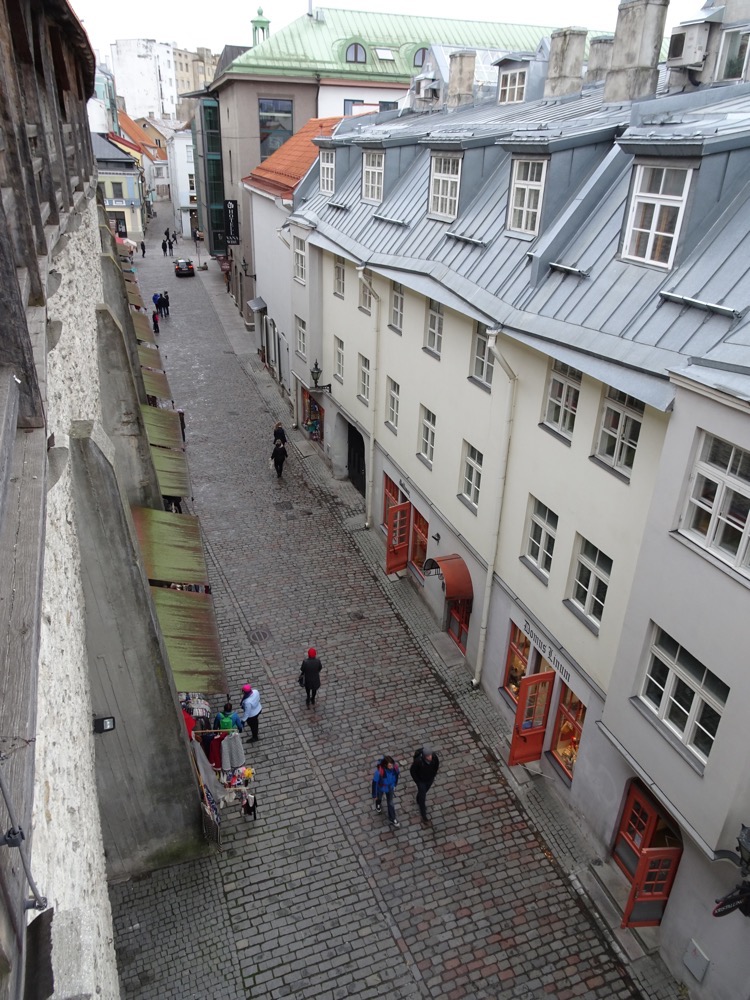
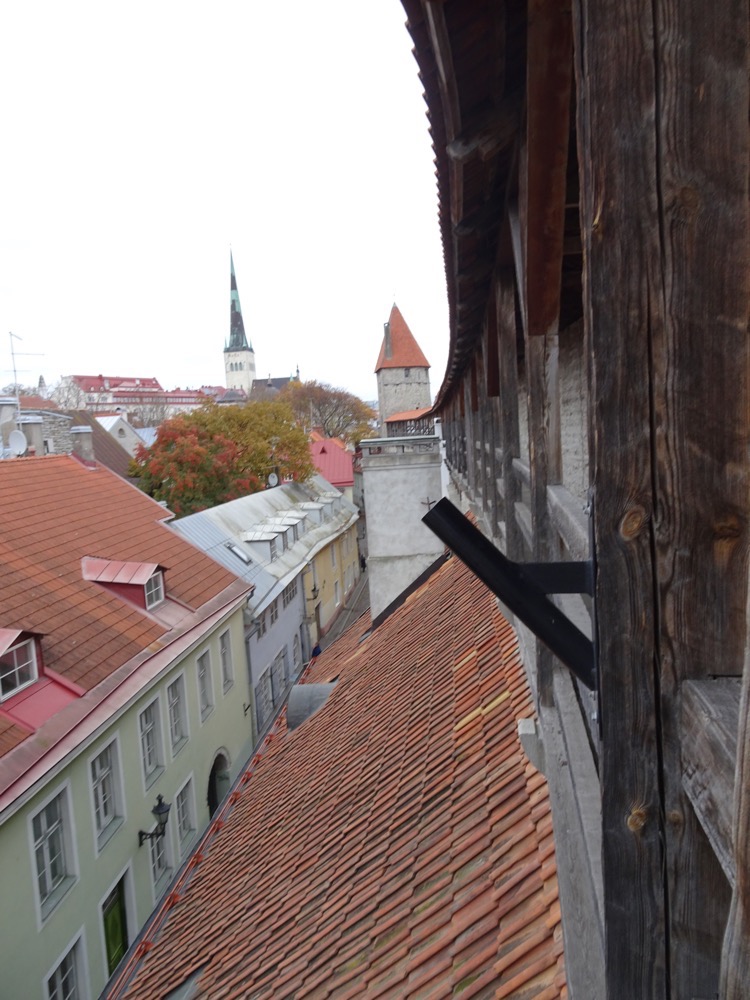
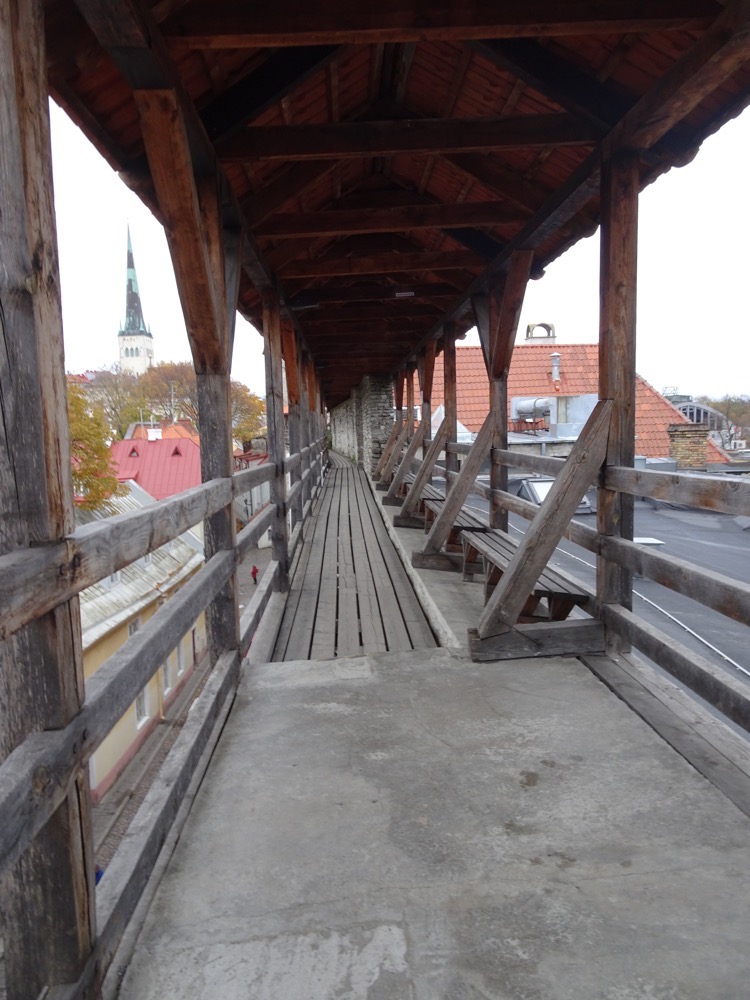
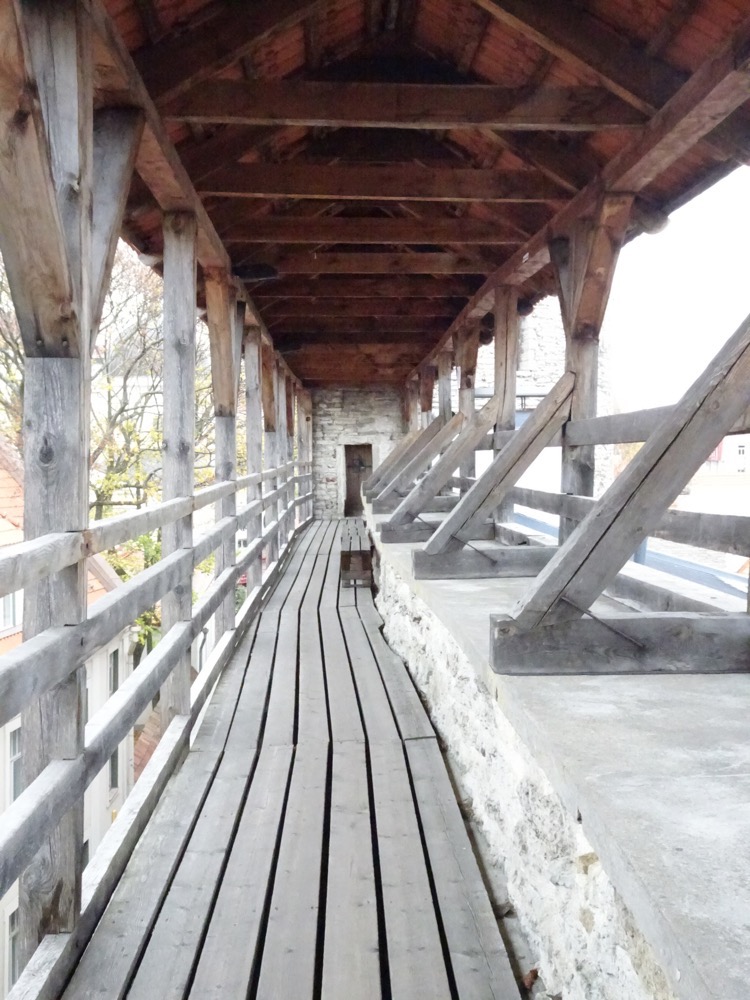
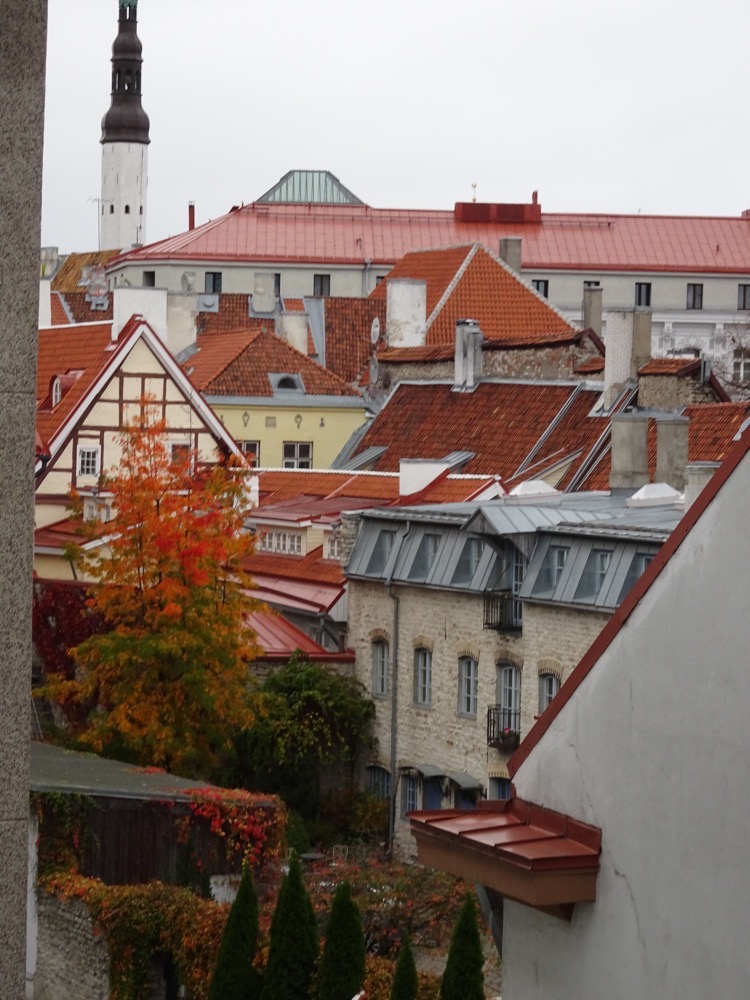 The rickety staircase we claimed to come up with the bored octagenarian ticket seller who we just about had to wake up to take our €2.00 for tickets.
The rickety staircase we claimed to come up with the bored octagenarian ticket seller who we just about had to wake up to take our €2.00 for tickets.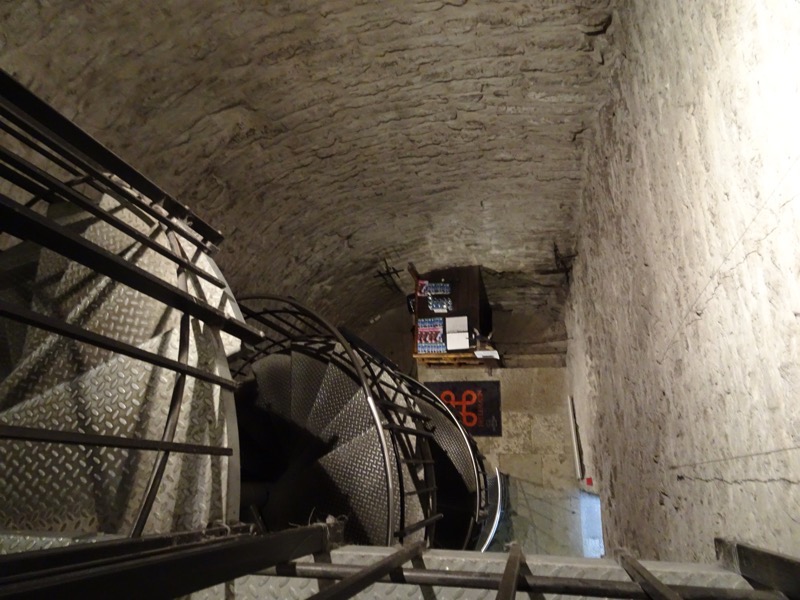
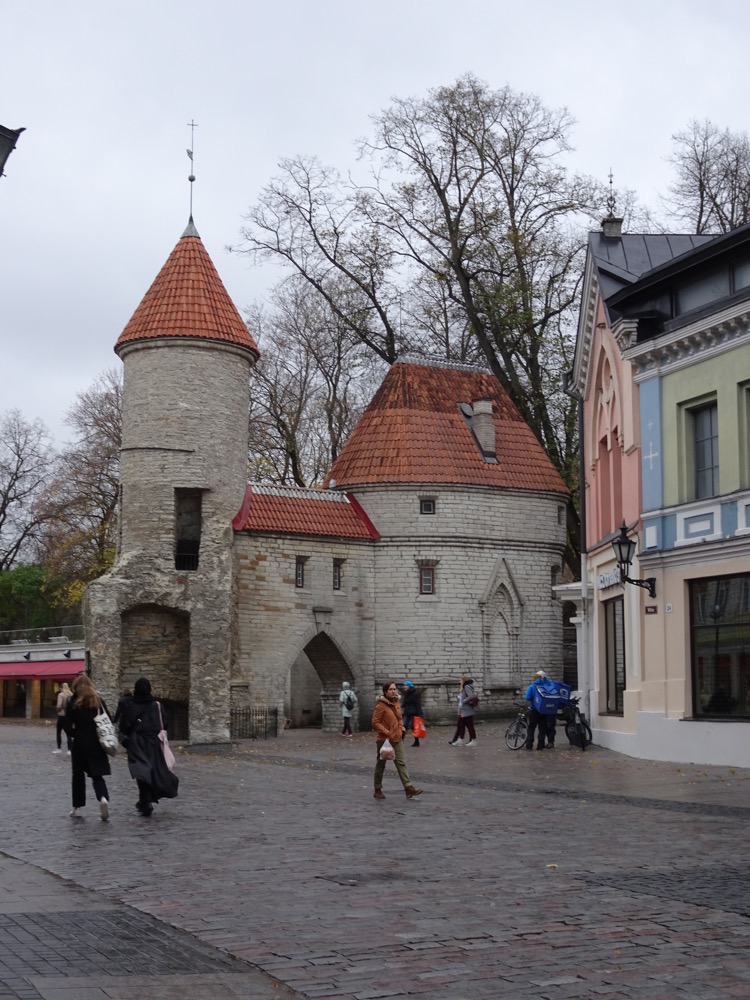 Finally, it was starting to rain on our parade – we did pretty well considering it was supposed to be raining all day. So we retreated back to the hotel with some caviar and some vodka for a bit of down time and a quiet evening in the warm.
Finally, it was starting to rain on our parade – we did pretty well considering it was supposed to be raining all day. So we retreated back to the hotel with some caviar and some vodka for a bit of down time and a quiet evening in the warm.